SÜDTIROL • ALTO ADIGE • SOUTH TYROL


SÜDTIROL • ALTO ADIGE • SOUTH TYROL

Sicherheit im Pulverschnee
Safety in the snow
WENN AUS HERBSTLAUB LAMPEN WERDEN
E luce fu... con le foglie autunnali
PIATTI CHE RACCONTANO LA TRADIZIONE
Spezialitäten und ihre Geschichte
A history of delicacies
Gioiellini architettonici alpini
ArchitecTour through South Tyrol
Turning foliage into lampshades ARCHITEKTOUR
CARI OSPITI E AMICI | DEAR GUESTS AND FRIENDS
Wie stellen Sie sich Ihren perfekten Wintermoment vor? Auf der Skipiste, wo Sie mit Blick auf die verschneiten Berge elegante Kurven ziehen, oder abseits der Piste bei entspannten Wanderungen in der Natur? Vielleicht gar auf einer Loipe, wo Sie in Richtung Weite gleiten, oder vielleicht doch lieber in den Gassen der Altstadt, die von Kultur, Tradition und Genuss erzählen und Sie zum Entdecken einladen? In Bruneck können Sie alle diese Momente, die Ihr Winterglück perfekt machen, erleben – und noch mehr. Wir wünschen Ihnen viel Spaß bei der Lektüre dieses Magazins und eine wunderbare Zeit im Herzen des Pustertals.
Come immaginate il vostro inverno ideale? Sugli sci da discesa, a disegnare sinuose curve lungo panoramiche piste con vista sulle cime innevate, o piuttosto su quelli da fondo, a scivolare spensierati lungo tracciati perfettamente preparati? Passeggiando senza fretta nella quiete della natura imbiancata oppure tra le vie del centro storico, ricche di cultura, tradizione e sapori da scoprire? A Brunico potete vivere tutte queste e molte altre esperienze, che renderanno il vostro inverno colmo di momenti felici. Vi auguriamo una buona lettura di questo magazine e un magnifico soggiorno nel cuore della Val Pusteria.
How do you picture your perfect winter experience? Skiing, carving elegant turns with a view of snow-covered peaks? Or off-piste on a relaxing hike through the beautiful countryside? Maybe you imagine yourself gliding along a cross-country ski trail... or wandering through the alleyways of the old town, which tell tales of culture, tradition and indulgence and beckoning you to explore? You can experience all these moments in Brunico. They will make your winter bliss unforgettable, and there is still so much more to discover. Enjoy this magazine and have a wonderful time in the heart of the Pusteria Valley.



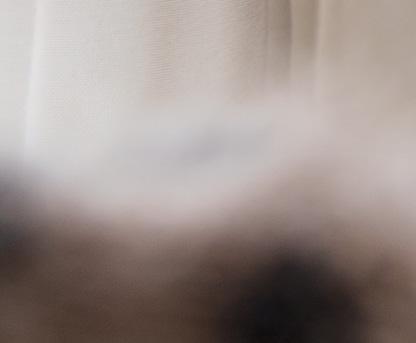



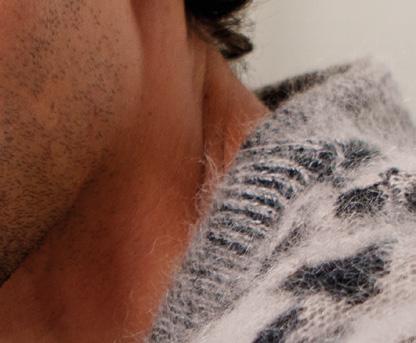


Find us in Bolzano, Merano, Bressanone, Brunico, Vipiteno and online on maximilian.it









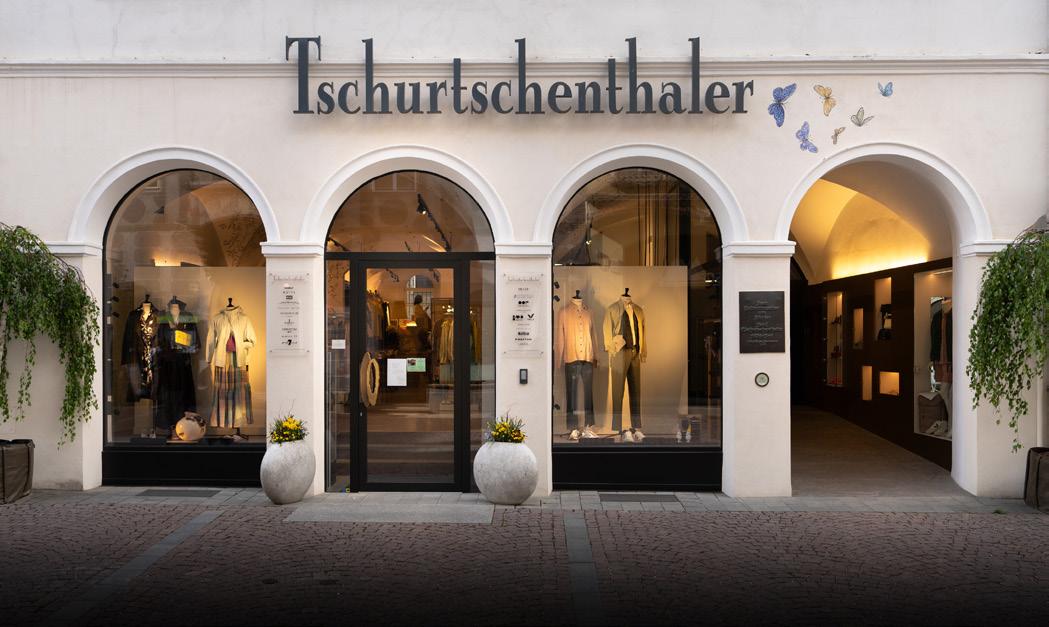
200 ANNI DI STILE, TENACIA E INNOVAZIONE 200 YEARS OF STYLE, CONTINUITY AND INNOVATION
Den eigenen Charakter unterstreichen. Sich spielerisch neu erfinden. Originalität feiern. Das ist das Mode-Tschurtschenthaler-Feeling. Mit einer großen Vision steht das Unternehmen für Beständigkeit und Qualität in der Modewelt – für jeden Anlass. Die große Leidenschaft für Mode inspiriert, auf der Reise durch Tradition und Moderne neue Wege zu gehen und Trends zu setzen. Das Vertrauen treuer Kunden bestätigt das erfolgreiche Engagement von Mode Tschurtschenthaler, für alle das perfekte Outfit zu finden: für sie, für ihn, für die Jugend. 2025 steht im Zeichen des 200-Jahr-Jubiläums und lädt dazu ein, die persönliche Ausdrucksform auf einzigartige Weise zu entdecken.
Esprimere la propria personalità. Reinventarsi con creatività. Celebrare l’originalità. Questa è la mission di Moda Tschurtschenthaler. Guidata da una visione lungimirante, l’azienda è simbolo di tenacia e qualità nel mondo della moda per ogni occasione. La profonda passione per lo stile è la forza che spinge a esplorare nuove strade e creare tendenze, in un viaggio che unisce tradizione e modernità. La fiducia dei clienti storici testimonia il successo di Moda Tschurtschenthaler nel saper trovare il look ideale per tutti: per lei, per lui, per i giovani. Nel 2025, l’attività festeggia il suo 200° anniversario e invita ognuno a scoprire il proprio stile unico e personale.

Accentuate your own character. Playfully reinvent yourself. Celebrate your originality. That’s what the Mode Tschurtschenthaler feeling is all about. The company has adopted a grand vision and stands for consistency and quality in the fashion world – whatever the occasion. Our great passion for fashion inspires us to explore new paths and to set new trends on our journey through tradition and innovation. The trust placed in us by loyal customers confirms Mode Tschurtschenthaler’s successful commitment in finding
Mode mit Tradition für jedes Alter
Moda e tradizione per ogni età
Traditional fashion for all ages

the perfect look for everyone: for her, for him and for the next generation. The year 2025 marks the company’s 200th anniversary. We invite you to discover your own unique way of expressing yourself through fashion.
Stadtgasse | Via Centrale 39
I-39031 Bruneck | Brunico T. +39 0474 555499 office@mode-tschurtschenthaler.it www.mode-tschurtschenthaler.com
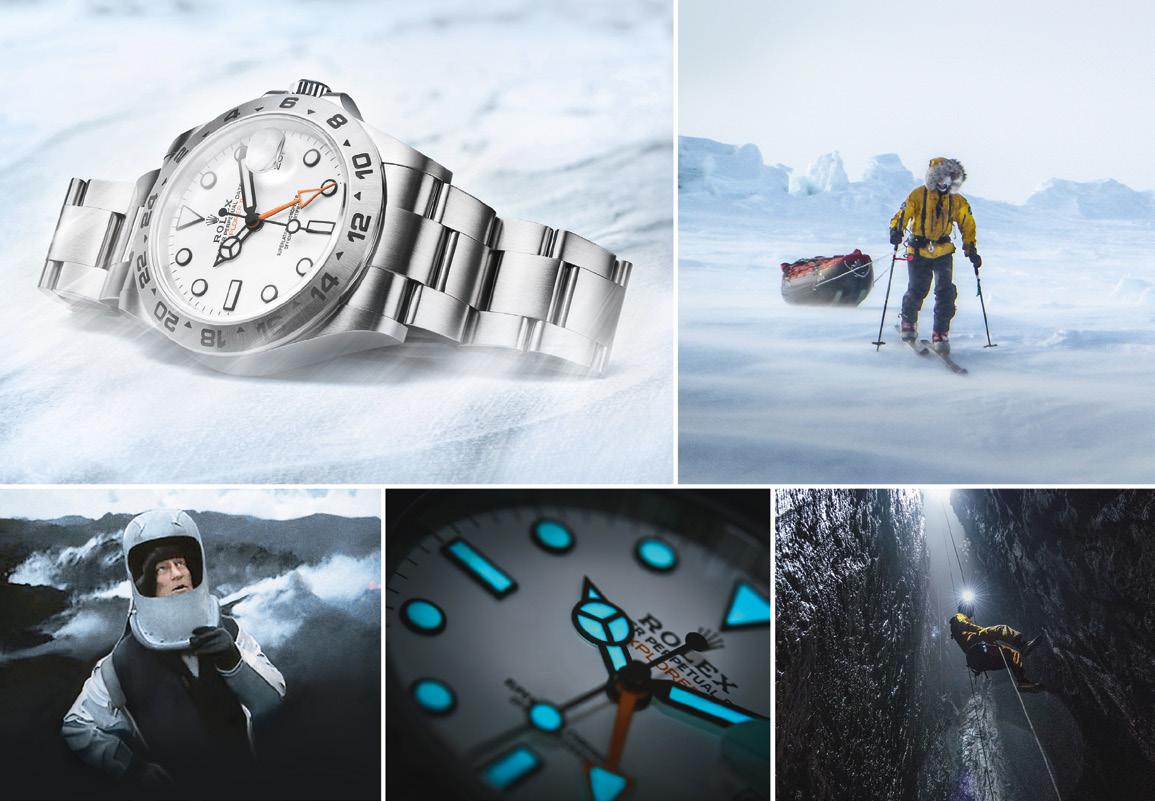
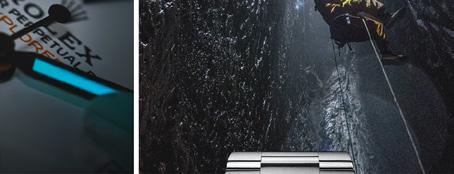
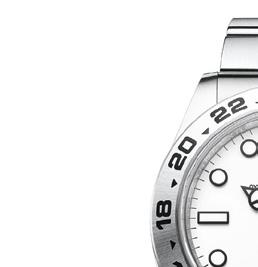



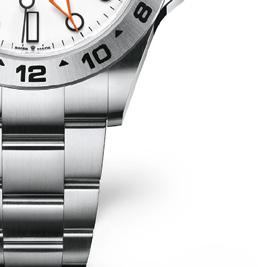

PRESS LAW RESPONSIBLE
EDITOR IN CHIEF
Christiane Weinhold
EDITORIAL BOARD
AUTHORS
Martina Bocek, Alessia Cominotti, Sara Musci, Sara Penasa, Linda Pizzini, Christiane Weinhold, Katharina Weiss
TRANSLATIONS
Sharla Ault, Martina Bocek, Alessia Cominotti, Eleonora Dallantonio, Iman Joy El Shami-Mader, Sara Musci, Sara Penasa, Linda Pizzini, Christina Scharf, Katharina Weiss
PROJECT LEAD
Petra Federer
DESIGN
Georg Mayr
PRINTING HOUSE
Fotolito Varesco, Auer/Ora

HEAD OF SALES
Tanja Götsch
T. +39 375 7903785 tanja.goetsch@tt-consulting.com

SALES MANAGER
Alexander Hütter
T. +39 340 6985030 alexander.huetter@gmail.com
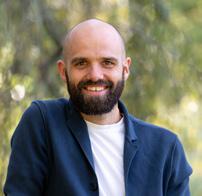
SALES MANAGER
Daniel Schnitzer
T. +39 351 3305671 daniel.schnitzer@tt-consulting.com
PUBLISHER
TT GmbH/S.R.L
Industriezone | Zona Industriale 1-5 I-39011 Lana • T +39 0473 560056 info@tt-consulting.com • www.tt-consulting.com www.welcomemagazin.it
Eintragung beim Landesgericht Bozen
Registrazione al Tribunale di Bolzano
Regsitration with the district court of Bolzano Nr. 738/2017 vom 23.02.2017
PHOTOS
Cover: TV Klausen/Tobias Kaser
Editorial Content
Thomas Hochkofler: Gregor Khuen Belasi | Food: Tommy Hetzel, Andrea Nischler, Glangerhof, Damian Pertoll, Karin Thaler, Purnamh Srl Società Benefit-Pur Südtirol, TV Dorf Tirol/Benjamin Pfitcher, IDM Südtirol-Alto Adige/Marion Lafogler, Purnamh Srl Società Benefit-Pur Südtirol/Karin Longariva, Werner Pirbamer| Outdoor: Daniela Federer | Architektur: Rene Riller, TV Brixen/Helmut Moling, Oskar Dariz, Meraner&Hauser, Andreas Martiradonna, Puni, Nicolò Dalle Molle | Hagen Patscheider: Agance Zoom, Georg Pircher, Hagen Patscheider , Markus Eller, DLR | Schmuggler: iSTORIA • Archivi fotografici Valposchiavo | Column: Unsplash| Design Miyuca: Vanessa Runggaldier @argento.artistry
Destinations
Merano & environs: Manrico Finott, Obermais: Alex Filz, Orchideenwelt : Orchideenwelt Raffeiner | Bolzano & environs: TV Bozen/Daniele Fiorentino, Mendelbahn: www.kalterersee. com, Wolfsgrubnersee: TV Ritten | Venosta Valley: IDM Südtirol-Alto Adige/Benjamin Pfitscher, Zusslrennen: IDM Südtirol-Alto Adige/Frieder Blickle, Advent market: IDM Südtirol-AltoAdige/Marion Lafogler |Pusteria Valley-Badia Valley: TV Ahrntal/Filippo Galluzzi | TV Sand in Taufers | GsieserTal Lauf: www.valcasies.com | Bressanone & environs: TV Brixen/ Manuel Kottersteger, Gassladvent: TV Klausen/Thomas Rötting, Pharmazimuseum: Jürgen Eheim | Gardena Valley/Alpe di Siusi: Daniel Kogler, Tunnel: TV St. Christina/©ManuelaInsam, Seiser Alm Marketing/Helmuth Rier | Three Peaks-Alta Val Pusteria: TV Sexten/Daniel Rogger, Federkielstickerei: www.federkielstickerei.com, Sennerei: Marion Lafogler | Upper Isarco Valley: TV Sterzing/Harald Wisthaler, TV Ratschings/Manuel Kottersteger, Plessi Museum: TV Gossensass
PR
Dolomitisch: Alan Chies | Kellerei Meran: Helmuth Rier, Upscale | Kurverwaltung: Alex Filz, Tommy Hetzel | Pur Südtirol: Purnamh Srl Società Benefit – Pur Südtirol, Brimi - Milchhof
Brixen | SKS: Günther Pichler | Spinnradl: Benjamin Pfitscher | Interior Tower: Florian Andergassen, Hannes Niederkofler, Daniel Demichiel, Mirko Mair| Thaler: Thaler Bozen| TV Klausen: Thomas Roetting, Tobias Kaser | TV Passeiertal: Tourismusverein Passeiertal/Benjamin Pfitscher, Golfclub Passeier/ Damian Pertoll | WaltherPark: WaltherPark
Personalised Editions
Alta Badia - TV Badia: Alex Moling | Sport Alfredo: Interpromotion | Garberhof: Alex Filz, Lena Sulzenbacher, Daniel Kogler, Marian Mertez | Parkhotel Laurin: Peter Unterthuner, Sophia Kobald, Annette Fischer | Merano WineFestival: Merano WineFestival | Pustertal - TV Bruneck: Alex Filz | Mode Tschurtschenthaler: Robert Mair | Steurer Interior Living Design: Matthias Gasser, Daniel Demichiel, Andreas Tauber

14
FASHION TRENDS & STYLE

30 DESIGN LAMPS MADE OF LEAVES

PORTRAIT AEROSPACE ENGINEER HAGEN PATSCHEIDER

22
CULTURE ACTOR THOMAS HOCHKOFLER
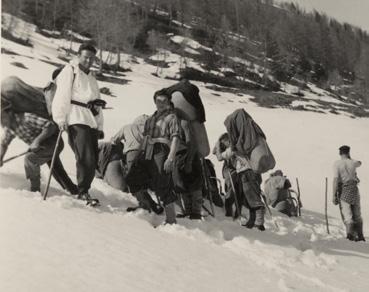
38 HISTORY SMUGGLING TO SURVIVE

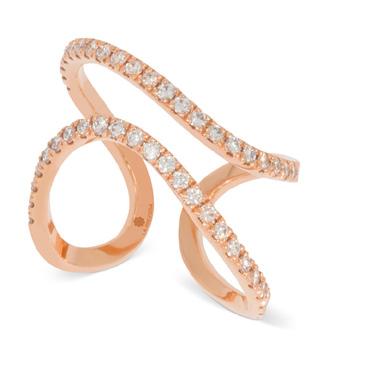

56
OUTDOOR FREERIDING IN SAFETY

78 COLUMN MY SOUTH TYROL
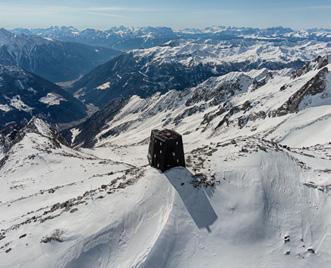
DESTINATION INSIDER TIPS

64
ARCHITECTURE MODERN ALPINE MASTERPIECES

80 FOOD OLD RECIPES AND THEIR STORIES


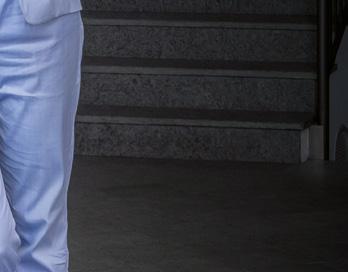

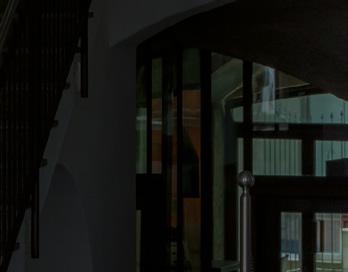
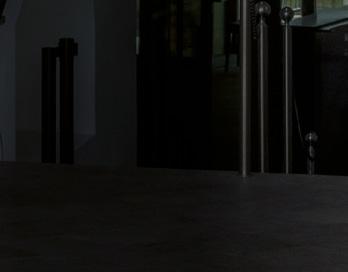
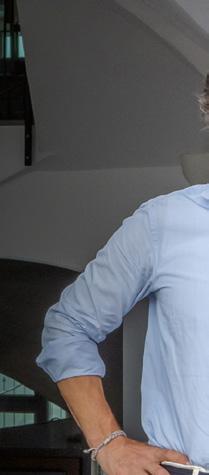
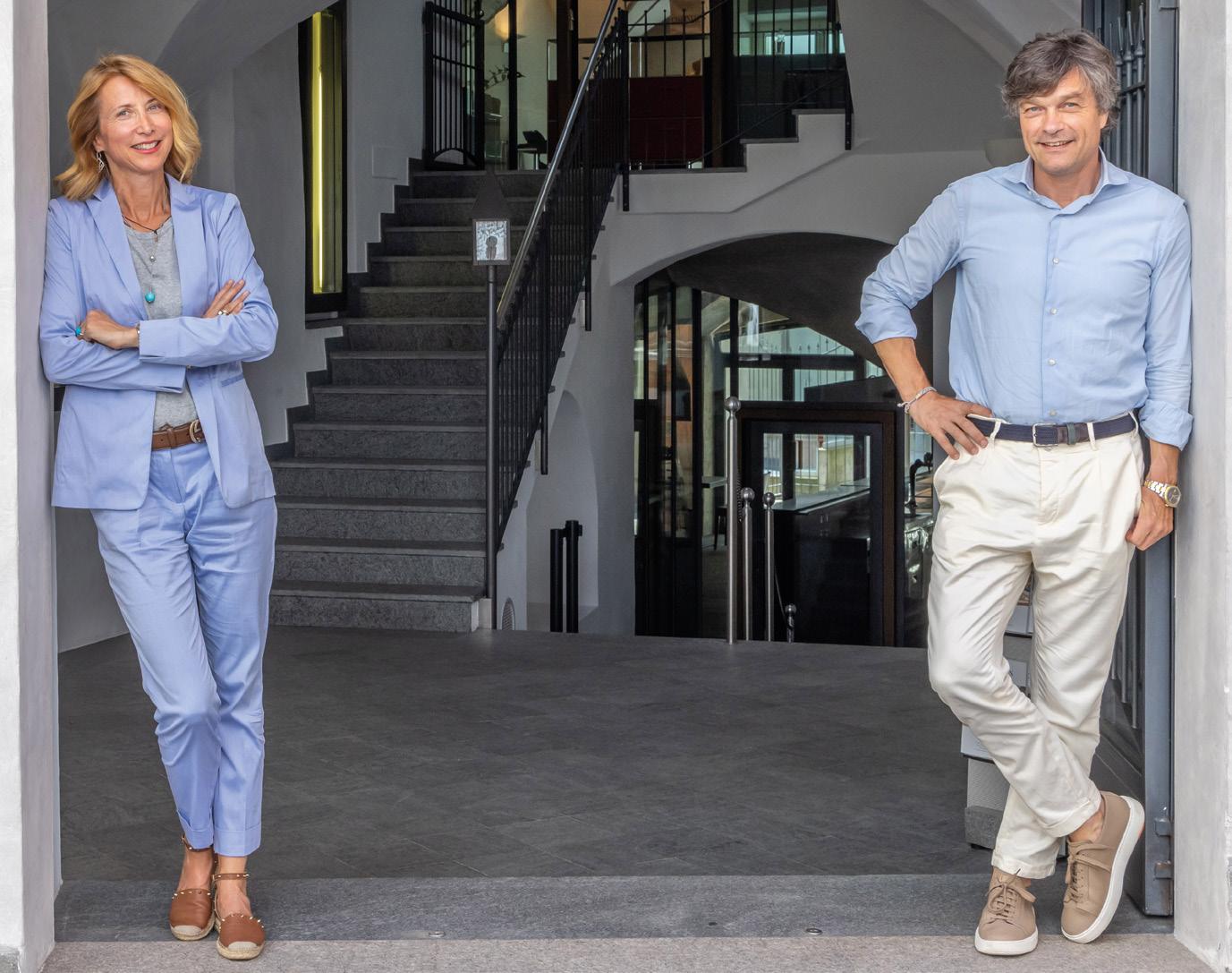
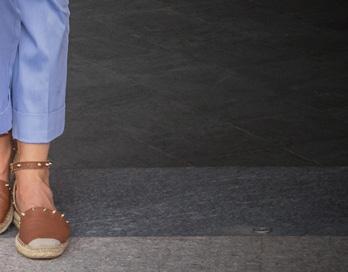

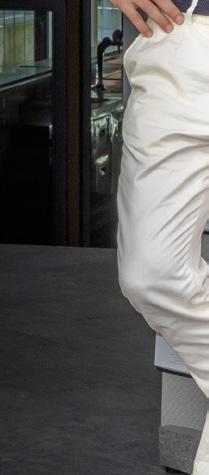
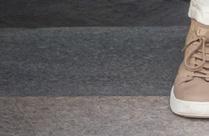

www.irs-benedetti.com
www.benedetti.immo
www.christiesrealestate.com


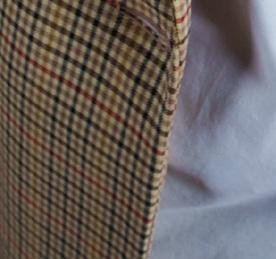




Find us in Bolzano, Merano, Bressanone, Brunico, Vipiteno and online on maximilian.it


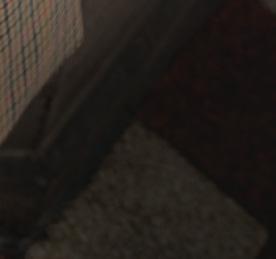






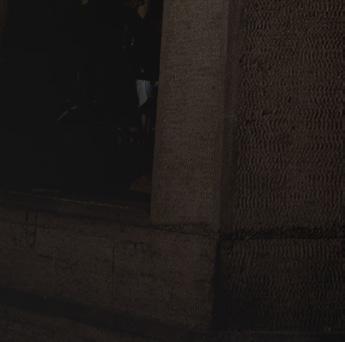

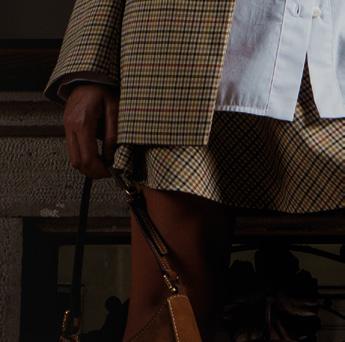
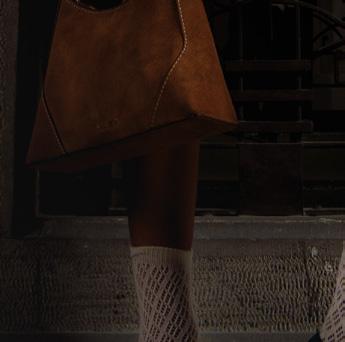
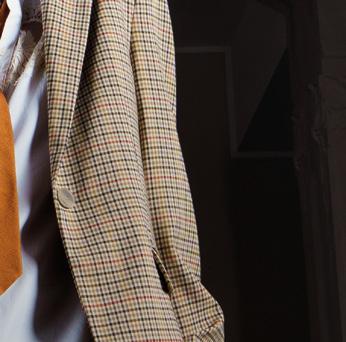
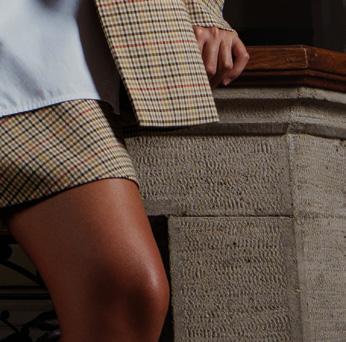


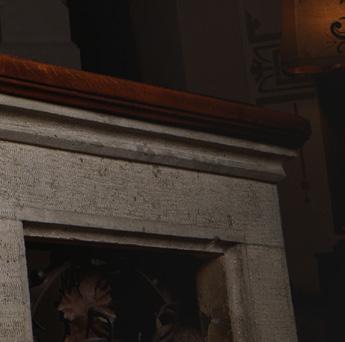
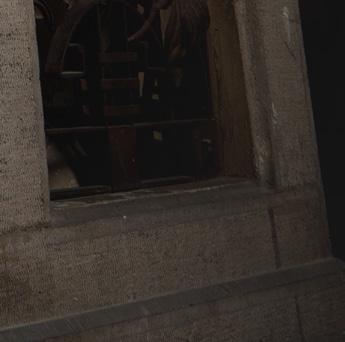
Find us in Bolzano, Merano, Bressanone, Brunico, Vipiteno and online on maximilian.it
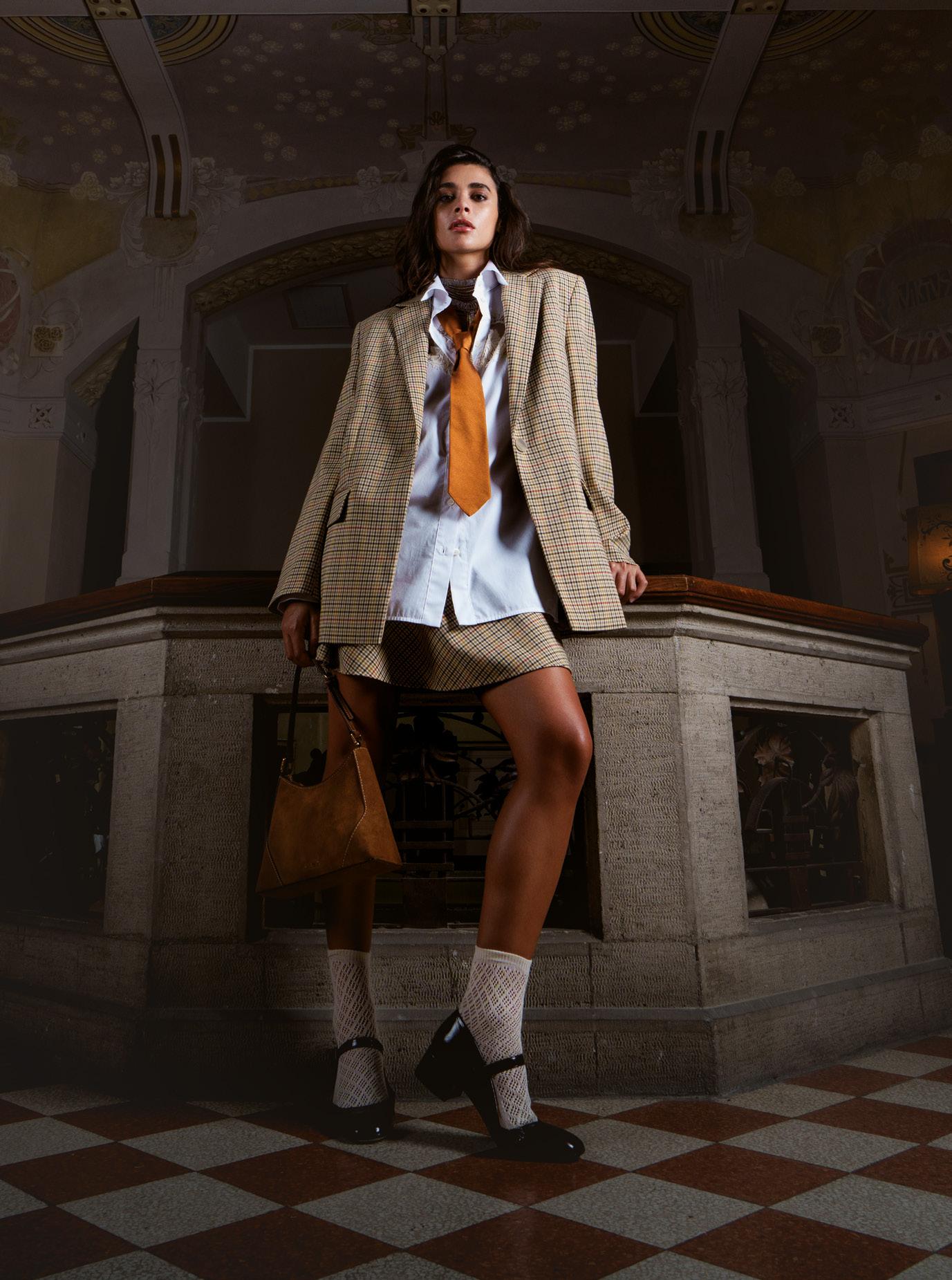

Was ist gerade en vogue, wie falle ich auf und wo finde ich die beste Beratung? Was Südtirol derzeit modisch bewegt, finden Sie auf den kommenden Seiten …
Quali sono le tendenze in voga? Come farsi notare? Dove ricevere i consigli migliori? Leggete le prossime pagine e scoprite tutte le ultime novità nella moda altoatesina…
What’s trendy right now? How can I get noticed? Where can I get the best tips? Get the scoop on the South Tyrolean fashion scene on the next few pages…

FALL/WINTER 2024/25
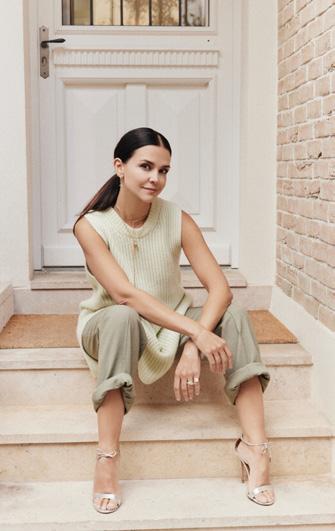
Exklusiv für Welcome präsentiert Mode-Expertin Nadia Tschenett die aktuellen Trends der internationalen Runways. Nach sechs Jahren im Fashionressort der deutschen Elle leitete die gebürtige Meranerin als Unit-Director von Loews, der führenden deutschen PR-Agentur im High-Fashion-Business, die Mode-Etats von Burberry und Jil Sander. Seit ihrer Rückkehr nach Südtirol berät sie größere und kleinere Kunden rund um das Thema Mode. Hauptaugenmerk legt sie dabei auf die Organisation von Events, Styling und die Umsetzung von professionellen Fotoshootings.
L’esperta di moda Nadia Tschenett presenta, in esclusiva per Welcome, i trend attuali che dominano le passerelle internazionali. Dopo sei anni nella sezione fashion del magazine tedesco Elle, la meranese ha lavorato presso Loews, agenzia di PR leader nel business dell’alta moda in Germania. In
veste di Unit Director, dirigeva il reparto dedicato a Burberry e Jil Sander. Dal suo ritorno in Alto Adige, Nadia è attiva come consulente di moda per svariate tipologie di clienti. L’organizzazione di eventi, la cura dello styling e la realizzazione di shooting fotografici professionali sono i focus della sua attività.
As a Welcome exclusive, Nadia Tschenett will present current trends directly from the international runways. After six years in the fashion department of the German Elle magazine, the Merano native has been working at Loews, the leading PR agency in the haute couture business in Germany. As Unit Director, she headed the fashion budget of Burberry and Jil Sander. Since returning to South Tyrol, Nadia has been working as a consultant to bigger and smaller clients in the fashion world. Her activity focusses on the organization of events, styling and the creation of professional photo shoots.


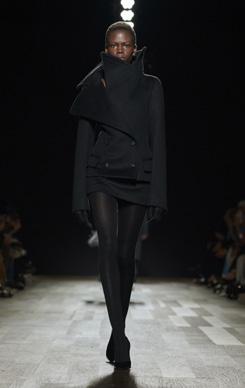
In der Herbst-Winter-Saison 2024 stehen hohe Kragen im Fokus und interpretieren den klassischen Rollkragenpullover mit einem zeitgenössischen Cocooning-Twist neu. Designer wie Ferragamo und Max Mara führen diesen Trend an und präsentieren Kragen, die sowohl Wärme als auch Eleganz verkörpern. Die Kollektionen reichen von großzügig geschnittenen Mänteln bis hin zu strukturierten Pullovern und vereinen Komfort mit modischer Raffinesse. Hohe Kragen sind in dieser Saison nicht nur funk-


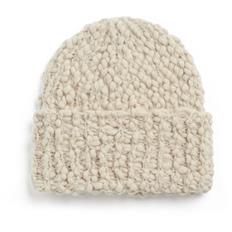

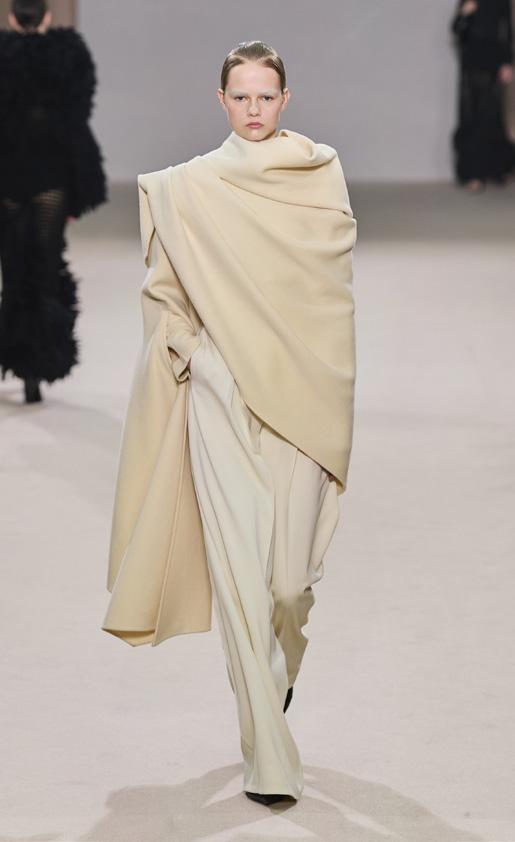



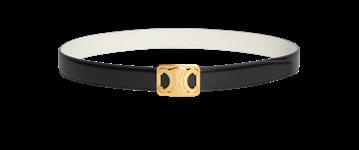
In the Fall/Winter 2024 season, high collars took centre stage, with designers reinterpreting the classic turtleneck with a contemporary cocooning twist. Designers such as Ferragamo and Max Mara spearheaded this trend, showcasing collars that exude both warmth and sophistication. The collections featured everything from oversized coats to structured sweaters, blending comfort with fashion-forward elegance. This season, high collars are not only functional, but they also make a distinctive fashion statement.
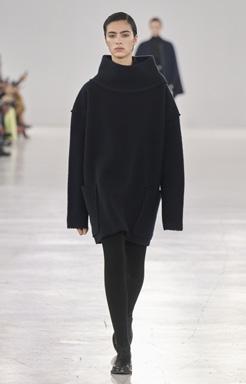
Nella stagione autunno/inverno 2024 i riflettori sono puntati sul collo alto, e gli stilisti reinterpretano il classico maglione con un moderno twist cocooning. Marchi come Ferragamo e Max Mara hanno guidato questa tendenza, presentando colli che esprimono al contempo calore ed eleganza. Le collezioni spaziano da cappotti ampi a maglioni strutturati, unendo comfort e stile raffinato. In questa stagione, il collo alto non è solo funzionale, ma anche un forte statement di moda.
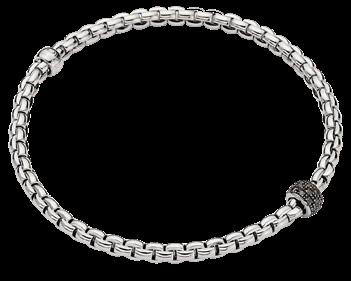




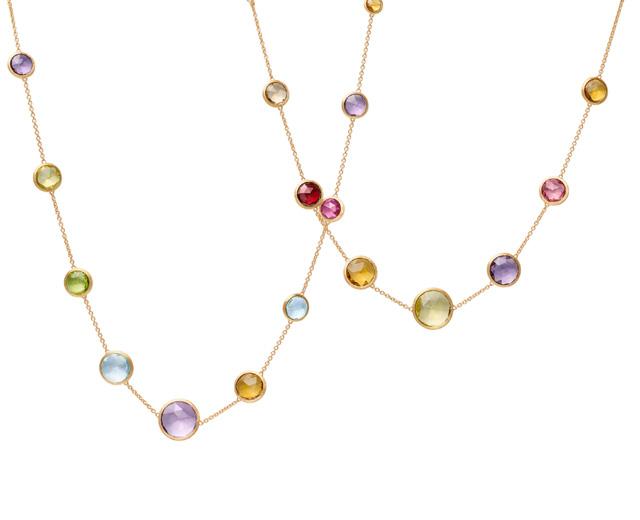
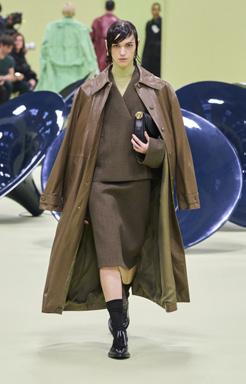
In dieser Saison feiert der Retrostil ein lebhaftes Comeback, da renommierte Designer wie Prada und Miu Miu Kollektionen präsentieren, die von Vintage-Ästhetik inspiriert sind. Die Salonstil-Show von The Row bei der Pariser Fashion Week Herbst 2024 verzichtete bewusst auf soziale Medien und betonte damit die Rückkehr zum klassischen Glamour. Erleben Sie den nostalgischen Charme der Catwalks und entdecken Sie Ihre innere Jackie Kennedy oder Twiggy durch eine moderne Interpretation zeitloser Mode.

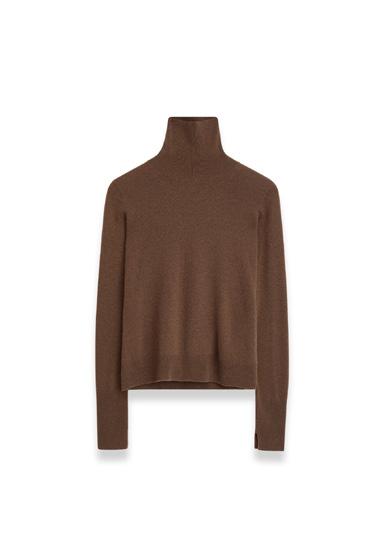



This season, retro style makes a vibrant comeback with renowned designers such as Prada and Miu Miu, who present their collections inspired by vintage aesthetics. The Row’s salon-style show at the Paris Fashion Week for Fall 2024 adopted a no-social-media policy, which emphasised the return to classic glamour. Experience the nostalgic charm on display on the runways and unleash your inner Jackie Kennedy or Twiggy through a modern interpretation of timeless fashion.

Questa stagione, lo stile rétro fa un vivace ritorno attraverso stilisti di fama mondiale come Prada e Miu Miu, che presentano collezioni ispirate all'estetica vintage. La sfilata in stile salotto di The Row alla Paris Fashion Week Autunno 2024 ha adottato una politica di assenza sui social media, sottolineando così il ritorno al glamour classico. Scoprite il fascino nostalgico sulle passerelle e riscoprite la vostra Jackie Kennedy o Twiggy interiore attraverso una moderna interpretazione della moda senza tempo.


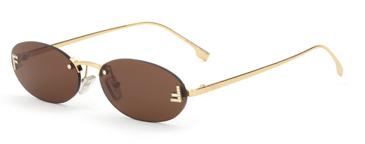



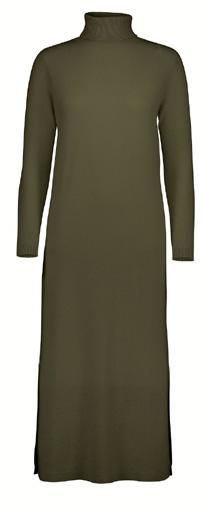

Der Herbst-Winter 2024 setzt auf Olivgrün, von Ferragamos Komplettlook bis hin zu Chloés fließendem Trenchcoat. Abweichend von den traditionellen Herbsttönen präsentieren die Designer innovative Verwendungen dieser Farbe. Grün, das für Neuanfänge steht, verdrängt das leuchtende Rot auf den Laufstegen. Loewe und Jil Sander hüllen ihre Sets in grünes Licht, während The Row und Saint Laurent es subtil halten. Sicher ist: Es ist die Farbe der Saison.

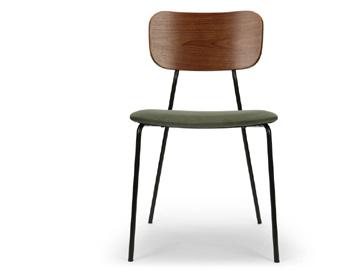
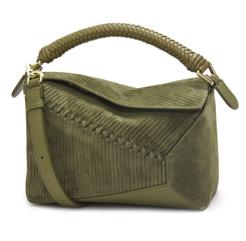
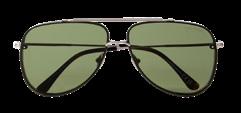
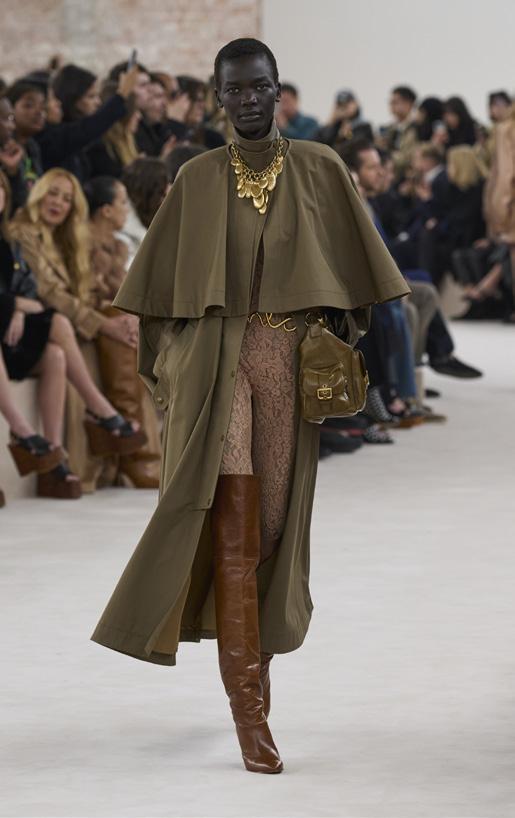
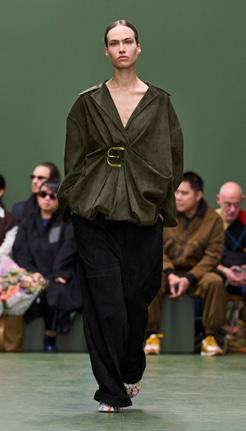

Olive green emerged as a defining hue in Fall/Winter 2024, prominently showcased in Ferragamo’s complete ensembles and Chloé’s draped trench coats. Moving away from traditional autumnal palettes, designers explored innovative ways to use this colour. Green, symbolising renewal and fresh starts, replaced the vivid reds seen on previous runways. Loewe and Jil Sander enveloped their collections in verdant tones, while The Row and Saint Laurent opted for a more restrained approach. One thing is certain: Olive green is the quintessential colour of the season.

Per l’autunno/inverno 2024 il verde oliva ha catturato l'attenzione di tutti: dal look completo di Ferragamo al trench fluido di Chloé. Gli stilisti si sono distaccati dai toni autunnali tradizionali, osando un uso innovativo di questa tinta. Il verde, simbolo di nuovi inizi, ha sostituito il rosso brillante sulle passerelle. Loewe e Jil Sander hanno immerso i loro set in verde, mentre The Row e Saint Laurent hanno optato per una sfumatura più sobria. Senza dubbio, è il colore della stagione.


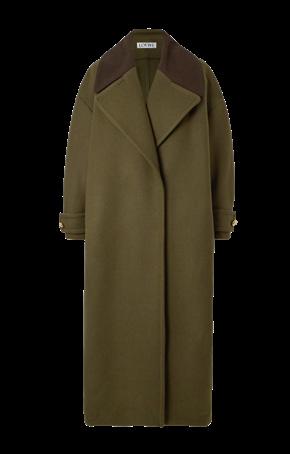
1 NOT JUST A LEG GEL ORIGINALS | NOT JUST BODYCARE BY PRIMA Bozen – Bolzano | www.notjustbodycare.com
2 LA PREZIOSA | TIROLER GOLDSCHMIED
Dorf Tirol – Tirolo | Schenna – Scena | Meran – Merano, Italy | Rottach-Egern am Tegernsee, Germany | www.tirolergoldschmied.it
3 CARDIGAN “ANNE" | SPINNRADL
St. Leonhard in Passeier – San Leonardo in Passiria | www.spinnradl.it
4
JADE BAG | PROFANTER
Brixen – Bressanone | www.profanterbags.com
5
EAU DE PARFUM “ANGEL’S SHARE" BY KILIAN PARIS | THALER
Bozen – Bolzano | Meran – Merano | Brixen – Bressanone | Sterzing – Vipiteno | St. Ulrich – Ortisei | www.thaler.bz.it
6
CUSTOMISABLE “SÜDTIROL" PILLOW | FLORALE WERKSTATT Lana | www.florale.it
7 DOWN JACKET WITH SEQUINS | MAXIMILIAN
Bozen – Bolzano | Meran – Merano | Brixen – Bressanone | Bruneck – Brunico | Sterzing - Vipiteno | www.maximilian.it
8 NIDO DINNERWARE BY ANN VAN HOEY | SERAX Lana | www.lebensraum-interior.it
9 JACKET WINDSOR | RUNGGALDIER TRACHT & TRADITION Meran – Merano | www.runggaldier1896.com
10
POLIFORM BY JEAN-MARIE MASSAUD | STEURER INTERIOR LIVING DESIGN
Vahrn • Varna | St. Lorenzen – San Lorenzo di Sebato | www.steurer.it

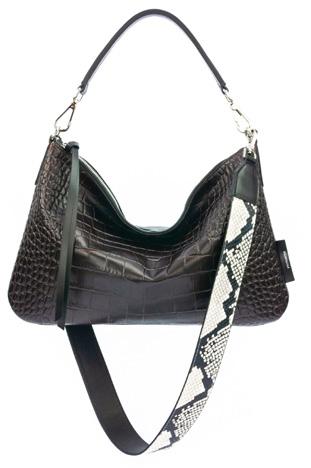
4

7

3
9 10 1 5
2


8
6
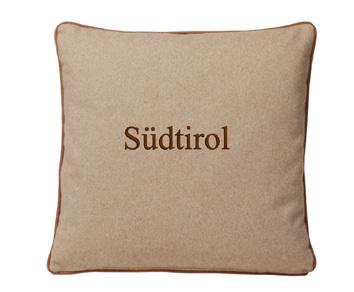



Linda
Pizzini Gregor Khuen Belasi

„Es ist der größere Seelenstriptease, auf einer kleinen Bühne zu stehen“
“Esibirsi
sui piccoli palcoscenici mette molto più a nudo”
“Standing on a small stage is the biggest kind of soul striptease”
Thomas Hochkofler gilt als einer der profiliertesten Schauspieler in Südtirol. Genau dieses ausgeprägte Profil wollten wir uns zu seinem 50. Geburtstag etwas näher anschauen. Wer ist der Südtiroler, der die Massen mit scheinbarer Leichtigkeit, Humor und Ernst begeistert? Und bei so viel Talent, warum sind es die Bühnen Südtirols, die ihn gefesselt halten, wo die großen europäischen Theater doch zum Greifen nah waren? Im folgenden Interview, das auf unserem Blog fortgesetzt wird, hat er uns verraten, warum er sich selbst nicht als Künstler sieht und warum er sein Heimatland nie gänzlich verlassen hat.
Thomas Hochkofler è uno degli attori più apprezzati dell’Alto Adige. In occasione del suo cinquantesimo compleanno, desideriamo conoscere meglio la sua marcata personalità e il suo percorso di successo fino a oggi. Come riesce ad appassionare il pubblico tra umorismo e serietà? E perché, visto il suo talento, preferisce ancora calcare i palcoscenici altoatesini quando potrebbe esibirsi nei ben più grandi teatri europei? Nella seguente intervista, che continua poi sul blog, ci ha inoltre svelato perché lui non si considera un artista e per quale motivo non ha mai lasciato davvero la sua terra natia.
Thomas Hochkofler is considered to be one of the most distinguished South Tyrolean actors. We wanted to take a closer look at his distinctive profile to mark his 50th birthday. Who is the South Tyrolean performer that inspires the masses with apparent ease, humour and seriousness? And given so much talent, how come the stages of South Tyrol keep him spellbound when the great European theatres are so close at hand? In the following interview, which is continued on our blog, he told us why he does not see himself as an artist and why he has never completely left his home country.
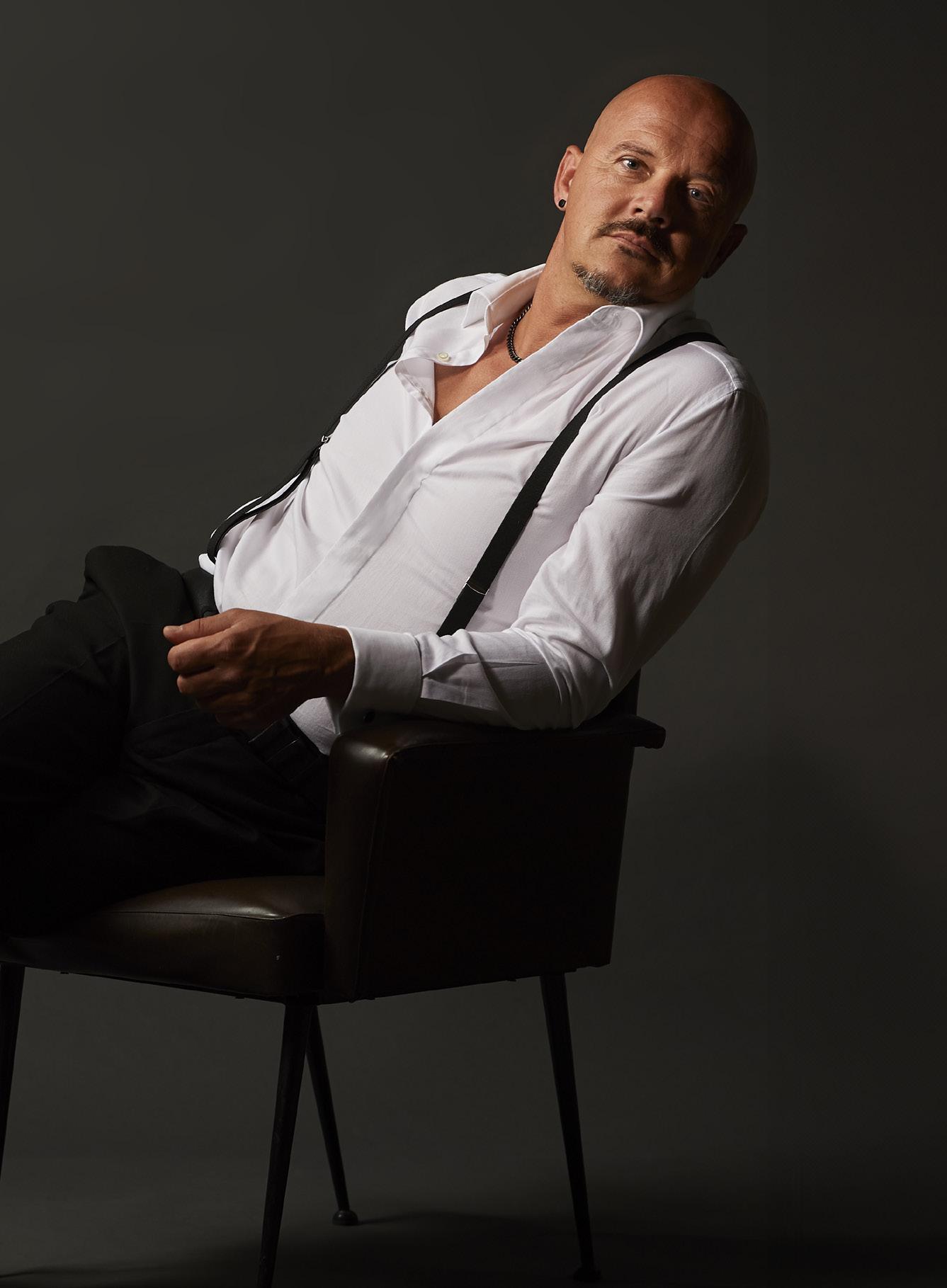

Thomas, zu deinem 50. ist ein Buch über dich und deinen Werdegang erschienen. Was kannst du uns darüber erzählen und wie ist es bisher bei den Leuten angekommen?
Dieses Buch fühlt sich für mich ehrlich gesagt an wie ein Experiment, zu dem man mich überreden musste. Ich denke nämlich nicht, dass ich ein aufregenderes Leben habe als andere Leute. Mein Wunsch war von daher in erster Linie, dass die Leser Spaß haben, und ich glaube, das ist uns gelungen. Bisher ist das Feedback, dass es die Leser unterhaltsam fanden und an der einen oder anderen Stelle auch etwas über mich erfahren haben, das sie überrascht hat.
Nach Engagements in vielen Städten und weiteren Angeboten im Ausland, sprichst du im Buch darüber, dass der Hauptgrund für deine Rückkehr auf Südtirols Bühnen deine Familie war. Wäre ansonsten ein Landeswechsel für dich eine Option gewesen?
Ich hatte nie diesen Provinzkomplex und habe ihn auch nicht wirklich verstanden. Im Grunde bin ich sogar der Überzeugung, dass genau dieser Komplex, der in Südtirol oftmals
vorherrscht, ein Irrglaube ist. Nur weil etwas größer ist, heißt das aber nicht unbedingt, dass es besser ist. Wenn man eine Zeit im Ausland verbringt, entdeckt man schnell, dass eine Großstadt einen genauso dörflichen Charakter hat wie zum Beispiel Sarnthein. Am Ende des Tages geht man auch in der Millionenstadt immer dieselben drei Wege, benutzt vielleicht anstelle des Fahrrads die S-Bahn, findet eine Runde von Menschen und sucht sich ein paar Stammlokale. Mir persönlich waren auf der einen Seite die großen Städte oftmals einfach zu unruhig, zu überladen und ich hatte ständig das Gefühl, gehetzt davon zu sein, diese Fülle nicht nutzen zu können oder die gesamte Stadt zu erfassen. Auf der anderen Seite hat mich der Blick durch die U-Bahnen und auf eine gescheiterte Existenz nach der anderen auch bedrückt. Die Frage für mich war dann: „Will ich das?“, und wenn man in solchen Momenten ganz ehrlich mit sich selbst ist, dann findet man auch die richtige Antwort. In meinem Fall, wollte ich nicht. Ich bin gerne mal zwei Monate irgendwo, z. B. in Bern oder Salzburg, aber ich komme dann auch immer wieder gern zurück.
Kannst du uns einen Eindruck über das unterschiedliche Feeling auf großen Bühnen wie der Mailänder Scala und den kleinen wie dem Theater in der Altstadt von Meran geben?
Nur weil etwas größer ist, heißt das nicht unbedingt, dass es besser ist.
Non necessariamente qualcosa è migliore solo perché è più grande.
Just because a place is bigger it doesn’t necessarily mean it’s better.
Es wird wohl kaum einen anderen Ort geben, wo die Zuschauer dem Darsteller so nah kommen wie im Meraner Theater in der Altstadt. Durch den Aula-Charakter mit nur etwa 120 Sitzplätzen kann man dort als Schauspieler das Publikum nicht nur sehen, man fühlt auch die Präsenz und ist damit deutlich exponierter als in einem großen Haus, wie der Mailänder Scala, mit vielen Sitzplätzen, die entfernt von der Bühne im Halbdunkel verschwinden. Es ist der viel größere Seelenstriptease, im Theater in der Altstadt auf der Bühne zu stehen. Das macht das Spielen im kleinen Rahmen deutlich herausfordernder. Dort fallen dem Publikum mögliche Fehler schneller auf, wenn sich alles direkt vor ihrer Nase abspielt. Es ist aber auch gerade dieser Unterschied, der das Theater in der Altstadt oder andere kleine Bühnen zu den besten Übungsplätzen macht.
Manche Menschen zieht es in die Metropolen hinaus, weil Sie nach mehr kulturellem Angebot suchen. Wie schlägt sich Südtirol hier im Ländervergleich?
Ich glaube, dass es zeitlich gar nicht zu schaffen ist, die Fülle an kulturellem Angebot in Südtirol zu nutzen. Zwischen Musik, Theater und Kunstausstellungen ist es Quatsch zu behaupten, bei uns sei nichts los. Größtenteils haben wir sogar ein Angebot von sehr hoher Quali-
tät, denn wenn noch mehr Auswahl vorhanden ist, wie meist in größeren Städten, ist bei dieser Auswahl auch häufig mehr „Topfen“ (Anm. d. Red. Dialektwort für Käse oder Quark) zu finden. Wenn einer sagt, er spielt in Hamburg, dann ist das zwar schön und gut, aber dann stelle ich mir die Frage wo. In irgendeinem Off-Theater einer von Tausenden zu sein, macht es qualitativ nicht unbedingt besser, als bei uns auf einer Volksbühne zu stehen. Ich bin der Überzeugung, der Südtiroler ist generell ein strebsamer Mensch und das spiegelt sich in vielen Bereichen wider. Dafür braucht man sich beispielsweise nur die Hotellerie- und Gastronomiebranche genauer anzuschauen. Da sind wir im Vergleich zu vielen anderen Ländern der Welt auf einem Top-Niveau.
Deine Wahlheimat ist nun schon seit vielen Jahren die kleine Kurstadt Meran. Warum hat es dich gerade dorthin verschlagen?
In Meran habe ich mich auf den ersten Blick direkt in die Promenade mit den Palmen verliebt. Es ist ein heimeliges „Stadtl“ mit mediterranem Einschlag und das gefällt mir. Dort habe ich einen Ort gefunden, der für mich wie ein überschaubarer Hafen ist und in dem ich genau die richtige Mischung aus Anonymität und dörflicher Gesellschaft leben kann und das macht mich als Mensch ruhiger. Ich denke nicht, meine besten 30 Jahre in einer Großstadt verbracht zu haben, hätte automatisch einen besseren Schauspieler oder einen besseren Regisseur aus mir gemacht. Gerade in unserem Job ist es ganz wichtig, sein eigener Maßstab zu sein und sich nicht zurückzulehnen und zu sagen „läuft doch …“. Wenn man sich selber immer in Frage stellt und sich kontinuierlich weiterentwickelt, dann kann auch etwas passieren. Ansonsten endet es im Stillstand. Und Weiterentwicklung geschieht unabhängig vom Standort.
Thomas Hochkofler wurde 1974 geboren und wuchs mit seinem älteren Bruder in einer Floristenfamilie im Sarntal auf. Nach seiner Ausbildung arbeitete er als Herrenausstatter bei Oberrauch Zitt in Bozen, wo er auch vom Fleck weg entdeckt wurde. Sein Talent entging den Leuten von nah und fern nicht und er wurde 1998 für das Stück „Der Freischütz“ an die Mailänder Scala geholt. Ein Durchbruch, der ihm auch die Tür für Stücke außerhalb Italiens öffnete. So wie dem Innsbrucker Kel-
lertheater mit „Männer in der Stadt“, in Wien mit „Mein Bulgarien“ oder in Salzburg auf der Elisabethbühne mit „Bandscheibenvorfall“. Auch fürs Kabarett war Thomas Hochkofler immer wieder gern zu haben, wie in „Erstes ordentliches Kabarett“ oder „Oschpele“. Mit dem unglaublich erfolgreichen Programm „Leo und Luis“ tourte er gemeinsam mit Lukas Lobis durch Südtirol und darüber hinaus. Anschließend folgten diverse Soloprogramme in Begleitung des Musikers Marco Facchin. Aktuell tourt Hochkofler gemeinsam mit Karin Verdorfer in „Nindersch isch nicht“ durchs Land. Eine seiner Paraderollen wurde auch der Hauptcharakter in seiner ersten Filmproduktion „Joe –der Film“, die zur Gänze in Südtirol sowie mit einer einheimischen Crew realisiert wurde. Auch davor wechselte Thomas Hochkofler immer wieder von der Bühne auf den Regiestuhl, unter anderem bei den Freilichtspielen Lana oder bei den Produktionen der Heimatbühne Sarnthein. Insgesamt wirkte Thomas Hochkofler bisher in mehr als 220 Theaterinszenierungen mit. Privat hingegen lässt es der Tausendsassa eher ruhig angehen: Er lebt in einer Beziehung, hat einen erwachsenen Sohn und wohnt in Meran.
Non sono mai stato affetto dal complesso del provinciale né ne comprendo davvero il senso. Anzi, penso addirittura che questo complesso, peraltro piuttosto diffuso in Alto Adige, derivi proprio da una concezione sbagliata: non necessariamente, infatti, qualcosa è migliore solo perché è più grande. Quando si vive per un po’ all’estero, si scopre ben presto che in realtà tutto il mondo è paese, come si suol dire, e che una metropoli non è poi così diversa da un piccolo borgo come Sarentino. Alla fine, anche in una grande città si passa sempre per le stesse tre vie – certo, magari in tram anziché con la bici –, si frequenta una cerchia ristretta di persone e ci si trova un paio di locali di fiducia dove andare. Per me, da un lato le città erano troppo caotiche e fin troppo piene di possibilità, tanto che provavo continuamente un senso di colpa quasi opprimente per non riuscire a sfruttarle tutte. Dall’altro lato, sulla metropolitana vedevo tanta infelicità e insoddisfazione, il che mi rattristava molto. Allora mi domandavo: ma voglio veramente questo?
E se in momenti simili si è sinceri con sé stessi, la risposta giusta arriva. Nel mio caso, era un chiaro no. Mi piace stare via un paio di mesi, ad esempio a Berna o a Salisburgo, ma poi torno sempre volentieri a casa.
Thomas, in occasione dei tuoi cinquant’anni è uscito un libro che parla di te e della tua carriera. Cosa ci racconti a proposito e qual è stato finora il feedback dei lettori?
A dirla tutta, per me questo libro è stato una specie di esperimento. Affinché acconsentissi a raccontare di me, l’autore ha dovuto convincermi non poco; infatti, non penso che la mia vita sia più interessante di quella di altre persone. Per questo, sin dall’inizio il mio desiderio era principalmente uno: far divertire i lettori –e in questo pare che ci siamo riusciti. Finora chi lo ha letto dice di averlo trovato piacevole e di aver scoperto qualche curiosità inaspettata su di me.
Dopo aver lavorato in diverse città e aver ricevuto altrettante offerte all’estero, nel libro sveli che sei tornato sui palcoscenici altoatesini principalmente per la tua famiglia. Saresti altrimenti stato disposto a espatriare?
Ci potresti descrivere le diverse sensazioni che si provano a stare su palcoscenici grandi come quello della Scala di Milano in confronto a quelli di teatri più piccoli come il Theater in der Altstadt in centro a Merano?
Penso che in nessun altro teatro gli spettatori siano così vicini agli attori come nel Theater in der Altstadt di Merano, che con i suoi appena 120 posti a sedere ricorda più un’aula magna. Là, chi recita non solo vede il pubblico, ma ne percepisce proprio la presenza; ci si sente più esposti rispetto a quando si è in grandi sale come quella della Scala di Milano, con numerose poltrone distanti dal palcoscenico che scompaiono nella penombra. Mette molto più a nudo esibirsi nei teatri piccoli e questo rende anche l’esibizione maggiormente impegnativa: gli spettatori notano con più facilità eventuali errori quando una performance si svolge a un palmo dal loro naso. Anche per questo, le strutture di dimensioni ridotte sono un’ottima palestra.
Alcune persone si spostano nelle metropoli in cerca di una maggiore offerta culturale. A riguardo, come si colloca l’Alto Adige rispetto ad altri posti?
Solo per quanto riguarda l’Alto Adige, credo sia impossibile proprio per questioni di tem-
Ich glaube, dass es zeitlich gar nicht zu schaffen ist, die Fülle an kulturellem Angebot in Südtirol zu nutzen. Solo per quanto riguarda l’Alto Adige, credo sia impossibile proprio per questioni di tempo fruire di tutti gli eventi e le attrazioni culturali a disposizione. I don’t think there is enough time to take advantage of the plethora of cultural offerings in South Tyrol.

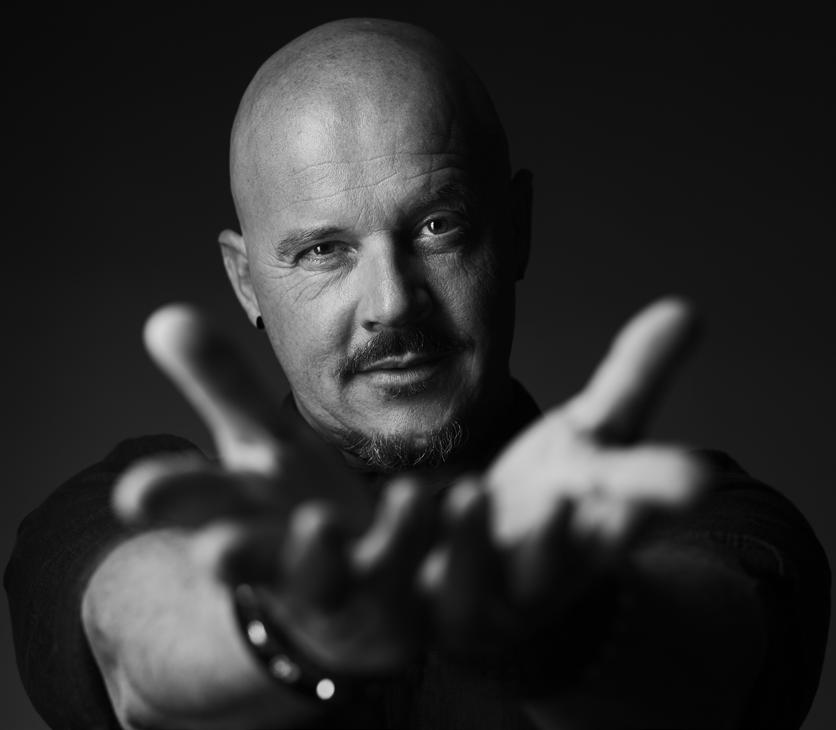
po fruire di tutti gli eventi e le attrazioni culturali a disposizione. Tra concerti, spettacoli e mostre d’arte è assolutamente infondato affermare che in regione non venga offerto nulla. Inoltre, da noi qualità e quantità vanno di pari passo. Dove invece le scelte sono ancora più numerose, come nelle metropoli, spesso c’è anche molta “fuffa”. Quando qualcuno si vanta di esibirsi ad Amburgo, per dire, occorre sempre chiedersi dove: essere uno dei tanti a calcare chissà quale palco in un angolo sperduto di una grande città non è poi meglio, in termini di qualità, rispetto a recitare in un teatro popolare. In generale, sono convinto che gli altoatesini siano ambiziosi e puntino al top, e questa caratteristica si riflette in diversi settori – basti pensare ai nostri hotel e ristoranti, che sono di altissimo livello in confronto a quelli di altri Stati.
Per scelta, da ormai diversi anni vivi nella ridente cittadina di Merano. Come mai hai deciso di trasferirti proprio lì?
Mi sono innamorato a prima vista del lungofiume di Merano con le palme. Di questa cittadina mi hanno conquistato l’intimità e l’atmosfera quasi mediterranea, nonostante sia cinta da montagne. Qui ho trovato un porto accogliente, dove godo della giusta combinazione tra l’anonimato della città e la socievolezza di un paese, e questo mi infonde tranquillità e mi fa stare bene. Non penso che, se anche avessi trascorso i miei trent’anni d’oro in una metropoli, oggi sarei automaticamente un attore o un regista migliore. Soprattutto nel nostro lavoro, infatti, è fondamentale saper valutare in autonomia la situazione e non adagiarsi pensando “Va tutto a gonfie vele”. Occorre invece mettersi sempre in gioco e continuare a evolversi; solo così può accadere qualcosa, non si va avanti per inerzia. E questa spinta a migliorarsi o ce l’hai o non ce l’hai, indipendentemente da dove abiti.
Thomas Hochkofler, classe 1974, crebbe insieme a suo fratello maggiore in una famiglia di fioristi della Val Sarentino. Dopo la scuola, cominciò a lavorare presso il negozio di moda maschile Oberrauch Zitt di Bolzano, dove venne casualmente scoperto il suo talento per il mondo dello spettacolo, che non sfuggì poi a persone di ogni dove. Fu così che nel 1998 lo chiamarono alla Scala di Milano per la versione originale tedesca de Il franco cacciatore . Quest’espe-
rienza segnò per lui la svolta e gli aprì le porte anche di teatri oltreconfine, come quelli di Innsbruck, Vienna e Salisburgo. Thomas Hochkofler è anche un ottimo cabarettista: tra i suoi pezzi di maggiore successo figura Leo & Luis insieme a Lukas Lobis, che li portò in giro per l’Alto Adige e non solo. Seguirono alcuni one-man-show con l’accompagnamento del musicista Marco Facchin. Quest’autunno è in tournée regionale con uno spettacolo insieme a Karin Verdorfer. Thomas Hochkofler ha anche deciso di portare uno dei suoi personaggi comici più apprezzati sul grande schermo, girando il suo primo lungometraggio intitolato Joe il film. Una commedia altoatesina politicamente scorretta (in dialetto locale, ma doppiato in lingua italiana), realizzato interamente in Alto Adige e con un cast del posto. Già prima gli era capitato di stare sulla sedia del regista, oltre che in scena, ad esempio in occasione della rassegna di teatro all’aperto a Lana o per gli spettacoli della filodrammatica della Val Sarentino. In totale, Thomas Hochkofler ha preso parte a più di 220 opere teatrali. Nella vita privata, quest’uomo dalle mille risorse è in realtà più tranquillo: ha una relazione, un figlio adulto e abita a Merano.
I never had this “provincial complex" and never really understood it. In fact, I am convinced that this complex, which is often prevalent in South Tyrol, is a misconception. Just because a place is bigger it doesn’t necessarily mean it’s better. If you spend some time abroad, you quickly discover that a big city has just as much of a village character as Sarentino, for example. At the end of the day, you always take the same three routes even in a city with over a million inhabitants, perhaps use the S-Bahn instead of the bike, find a group of people and look for a few favourite pubs. On one hand, for me personally, big cities were often just too hectic, too crowded and I constantly had the feeling of being rushed, of not being able to utilise this abundance or take in the entire city. On the other hand, the view through the subway windows and of one failed existence after the next also depressed me. The question I asked myself was: “Do I want this?”, and if you’re honest with yourself at times like these, you’ll find the right answer. In my case, I didn’t really want it. I like to spend two months somewhere, for example in Bern or Salzburg, but then I always like to come back.
Could you give us an idea of the different feelings you have on big stages like La Scala in Milan and small ones like the Theater in der Altstadt in Merano?
Thomas, a book about you and your career has been published to mark your 50th birthday. What can you tell us about it and how have people responded to it so far?
Honestly, this book feels like an experiment that I had to be persuaded to do. I don’t think I have a life that is any more exciting than other people’s. Hence, my primary wish was for readers to have fun and I think we’ve managed to do that. So far, the feedback from readers is that they have found it entertaining and have also learnt something about me at one point or another that has surprised them.
After commitments in many cities and other offers abroad, in the book you talk about how the main reason for your return to South Tyrol’s stages was your family. Would moving to another country otherwise have been an option for you?
There is hardly any other place where the audience can get as close to the performer as in the Theater in der Altstadt in Merano’s old town. The theatre’s auditorium character, seating only around 120 people, means that actors can not only see the audience, but also feel their presence and are therefore much more exposed than in a large venue such as La Scala in Milan, with many seats that disappear into the semi-darkness away from the stage. Standing on the stage of the Theater in der Altstadt is a much bigger soul striptease. Performing on a smaller scale is much more challenging. The audience notices possible mistakes more quickly when everything is happening right in front of them. However, it is precisely this difference that makes the Theater in der Altstadt or other small stages the best places to practise.
Many people are drawn to the metropolises because they are looking for more cultural offerings. How does South Tyrol compare to other countries in this regard?
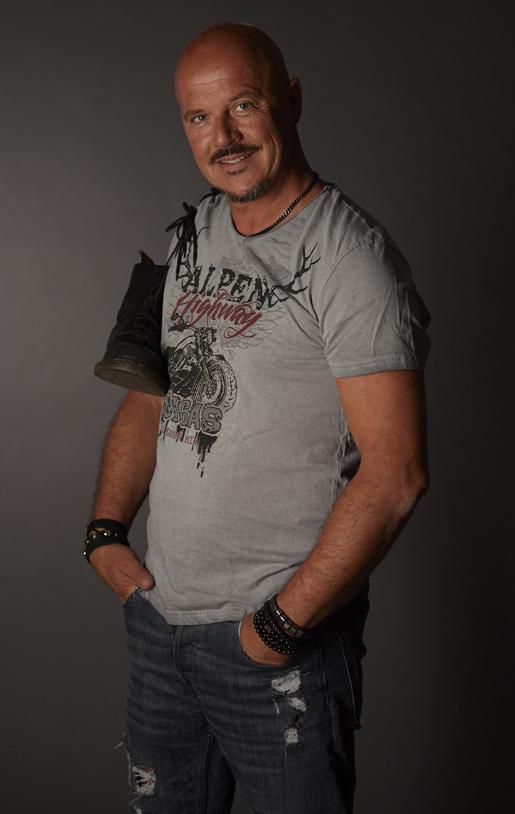
I don’t think there is enough time to take advantage of the plethora of cultural offerings in South Tyrol. Between music, theatre and art exhibitions, it's nonsense to say that there's nothing going on here. In fact, for the most part we have a very high quality offering, because when there is more choice, as is usually the case in larger cities, there is often more “Topfen" (dialect word for cheese or curd, signifying “nothing of high value") to be found. If someone says they’re playing in Hamburg, that’s all well and good, but then I ask myself ‘where’? Being one of thousands in an off-theatre doesn’t necessarily make it qualitatively better than being on a popular stage here. I am convinced that South Tyroleans are generally very ambitious people and this is reflected in many areas. You only need to take a closer look at the hotel and catering industry, for example. We are among the best in the world compared to many other countries.
Noch mehr Interviewfragen und Infos finden Sie auf unserem Blog:
Qui potete andare al blog di Welcome, dove
You can find more interview questions and information on our blog:
The small spa town of Merano has been your chosen home for many years now. Why did you choose to live there?
I fell in love with Merano’s promenade with its palm trees at first sight. It's a cosy little town with a Mediterranean feel and I like that. I found a place there that feels like a manageable harbour to me and where I can live in just the right mix of anonymity and village society, which makes me calmer as a person. I certainly don’t think that if I had spent my best 30 years in a big city, it would have automatically made me a better actor or a better director. Especially in our job, it’s very important to be your own benchmark and not just sit back and say ‘it’s going well...’. If you always question yourself and continue to develop, then something is bound to happen. Otherwise it ends in stagnation. And continuous development happens regardless of location.
Thomas Hochkofler was born in the Sarentino Valley in 1974. He grew up with his older brother in a family of florists. After completing his training, he worked as a men's outfitter at Oberrauch Zitt in Bolzano, where he was discovered right away. His talent did not go unnoticed by audiences near and far and he was invited to perform in “Der Freischütz" (The Marksman) at La Scala in Milan in 1998. This breakthrough also opened the door to plays outside of Italy. Such as the Kellertheater in Innsbruck with the play “Männer in der Stadt" (Men in Town), or in Vienna with “Mein Bulgarien" (My Bulgaria) and on the Elisabethbühne in Salzburg with one titled “Bandscheibenvorfall" (Disk Prolapse). Thomas Hochkofler was also always happy to perform cabaret, such as the “Erste ordentliche Kabarett” (First serious Cabaret) or “Oschpele” (a South Tyrolean exclamation similar to “heck!"). With the incredibly successful programme “Leo and Luis", he and Lukas Lobis toured South Tyrol and beyond. This was followed by various solo programmes accompanied by the musician Marco Facchin. Hochkofler is currently touring the country together with Karin Verdorfer in “Nindersch isch nicht” (There is Nothing Anywhere). One of his signature roles was also the main character in his first film production “Joe - der Film" (Joe - the Movie), which was entirely shot in South Tyrol with a local crew. Before that, Thomas Hochkofler repeatedly switched from the stage to the director’s chair, including at the Lana open-air theatre and in productions by the Heimatbühne (popular stage of) Sarentino. Thomas Hochkofler has appeared in more than 220 theatre productions to date. In his private life, however, the jack-of-all-trades takes it easy: He is in a relationship, has a grown-up son and lives in Merano.


Kennen Sie dieses Licht, das im Herbst durch das Blätterdach fällt und Wälder golden färbt? Genau dieses warme Leuchten bringt Designerin Jasmin Castagnaro mit ihrem Unternehmen Miyuca in die Häuser Südtirols und der Welt – mit handwerklich hergestellten Lampen aus Laub.
Avete presente quando in autunno i raggi del sole filtrano tra gli alberi, tingendo di oro i boschi? È proprio quella luce calda che la designer Jasmin Castagnaro dello studio Miyuca porta nelle case dell’Alto Adige e del mondo, grazie alle sue lampade fatte artigianalmente con le foglie.
Are you familiar with the light that falls through the canopy of leaves in autumn? The beautiful light that paints the forests golden? This warm glow is brought into the homes of South Tyrol (and the world) by designer Jasmin Castagnaro and her company Miyuca through handcrafted lamps made from leaves.
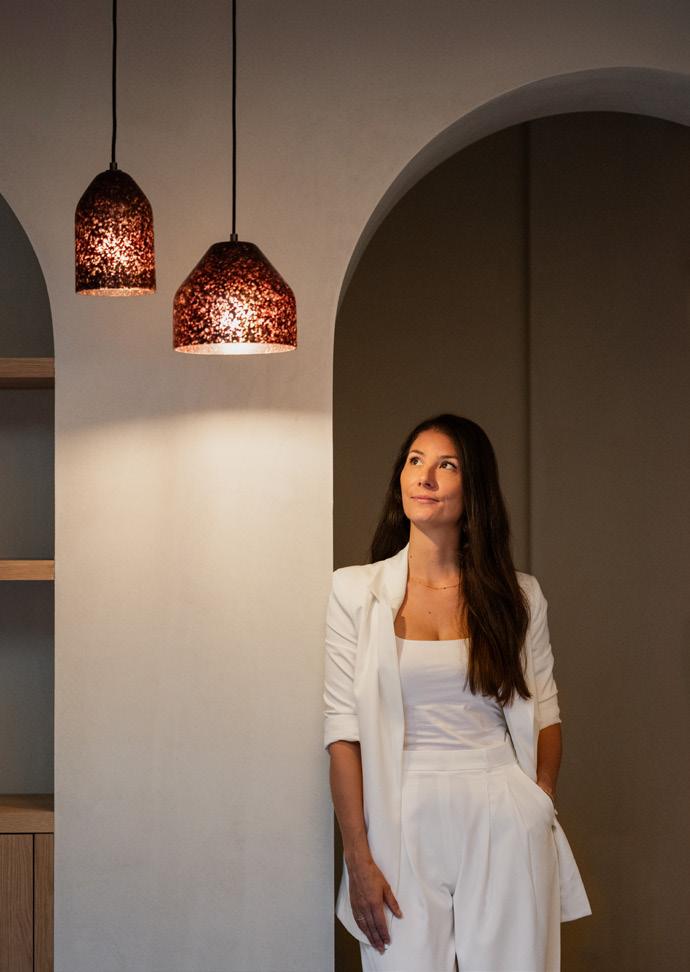
Wenn in Südtirols Städten die Blätter im Herbst von den Bäumen fallen, macht sich Jasmin Castagnaro auf den Weg. Inzwischen weiß die 36-Jährige genau, welche Bäume wo stehen. Manchmal begleiten sie Freunde oder Familienangehörige auf ihren Spaziergängen, und während das Gespräch von einem Thema zum anderen fließt, wird fleißig gesammelt. „Die Idee, etwas aus Herbstlaub herzustellen, entstand an einem gewöhnlichen Arbeitstag“, erzählt Jasmin. „Damals bin ich mit einem Kollegen in der Mittagspause vor die Tür meines damaligen Büros getreten und war über die vielen Blätter genervt, die dort auf dem Gehweg lagen. ,Warum kann man die nicht wegräumen‘, beschwerte ich mich. Daraufhin meinte mein Kollege: ,Mach du doch was aus den Blättern!‘ Ich lachte erst nur, aber der Gedanke ließ mich nicht mehr los.“
Fast zehn Jahre später stapeln sich in den Regalen in Jasmins Werkstatt Papiertüten und Kartons voller Herbstlaub. Daneben finden sich Schleif- und Druckluftmaschinen, Küchengeräte und Bastelutensilien wie Leim und alte Joghurtbecher. Wer hierherkommt, der
hat einen Termin mit Jasmin vereinbart, denn die Werkstatt – die gleichzeitig als Showroom fungiert – liegt etwas versteckt in Milland bei Brixen. Von außen weist nichts darauf hin, dass hier einzigartige Lampen entstehen, die in verschiedenen Größen und Farbtönen die restlichen Regale zieren. „Es war mir von Anfang an klar, dass ich etwas schaffen wollte, das es so noch nicht gab. Außerdem war es mein Ziel, ins Handwerk einzusteigen. Ich studierte zuvor Design in Bozen und arbeitete anschließend einige Jahre lang für verschiedene Firmen. Ich saß 90 % der Zeit vor dem Computer und das fertige Produkt habe ich oft erst dann gesehen, wenn der Kunde oder die Kundin es bereits in den Händen hielt.“
2015 fing Jasmin an, mit dem Laub herumzuexperimentieren und verschiedene Methoden und Materialien auszuprobieren. Als Erstes hat sie eine Schüssel aus Laub hergestellt. Als sie sie ins Licht hielt, fiel ihr auf, dass dieses wie herbstliche Sonnenstrahlen durch die Schüssel leuchtet. Das Produkt Lampe war somit eine logische Folge. 2017 kam es dann durch eine Crowdfunding-Kampagne zum „wahren“
Jasmin Castagnaro entwickelte ein komplett neues Produkt.
Jasmin Castagnaro ha creato un prodotto del tutto nuovo.
Jasmin Castagnaro has created a brand new product.
Startschuss – weniger aus finanzieller Sicht, sondern vielmehr aufgrund der dadurch erzielten Reichweite. Fernsehinterviews im gesamten deutschsprachigen Raum folgten. Ebenso wurden verschiedene Firmen auf sie aufmerksam und unterstützten sie bei der weiteren Entwicklung.
„MIR WAR VON ANFANG AN WICHTIG, DASS SOWOHL DAS MATERIAL ALS AUCH DIE GERÄTE ZUR HERSTELLUNG NACHHALTIG SIND.“
So stammen zum Beispiel die drei Gussformen, die Jasmin seit der Anfangszeit verwendet, aus Gröden. Auch bei der Endverpackung achtet sie darauf, kein Plastik zu verwenden und dennoch einen sicheren Transport zu garantieren. Es muss einfach alles passen.
Aber wie entstehen nun eigentlich diese Lampen? Als Erstes werden die gesammelten Blätter zerkleinert, wobei es verschiedene Feinheitsgrade bis hin zum gesiebten Pulver gibt. „Durch das Hinzufügen von mehr oder weniger Laub bestimme ich, wie stark das Licht am Ende durchscheint“, erklärt Jasmin. Für eine Lampe wird ca. ein großer Joghurtbecher voll zerkleinerter Blätter benötigt. Der zweitwichtigste Bestandteil sind biologische Harze. Diese sind nachhaltiger als herkömmliches Harz und werden genutzt, um das Laub zu verfestigen, damit das Werk am Ende hält und stabil ist. Je nach Wunsch werden auch Metallplättchen untergemischt, zum Beispiel aus Kupfer oder in goldener Farbe. Mithilfe einer Vakuummaschine werden Luftbläschen aus der Masse entfernt, bevor diese in die Gussform gefüllt wird. Nach dem Aushärten wird das Produkt mithilfe eines Kompressors aus der Form geholt – ein besonders kritischer Augenblick, wie Jasmin beschreibt: „Wenn man zu viel Druck verwendet, reißt die Lampe.“ Solche Exemplare nennt sie liebevoll Frankensteinlampen und nutzt sie für ihren eigenen Bedarf. Die Designerin hat ihre
Rezepturen inzwischen perfektioniert, doch es ist ein bisschen wie beim Kochen: Manchmal will es trotz Rezept einfach nicht gelingen, und vieles geht inzwischen nach Gefühl. „Man muss langsam arbeiten und geduldig sein – und man muss auf die Natur warten“, erklärt sie. „Die Blätter der Pappel können beispielsweise erst im Frühjahr gesammelt werden, nachdem sie den ganzen Winter über am Boden gelegen und dadurch grau geworden sind. Sie eignen sich hervorragend für schwarze Lampen.“
ES IST DAS LAUB, DAS AM ENDE FARBE UND STRUKTUR DER LAMPE BESTIMMT.
Jasmin hat sich im Laufe der Jahre viel Wissen über Bäume und Blätter angeeignet. Teils holt sie sich das Laub auch von Gärtnereien, da es bestimmte Bäume, wie die Zaubernuss, in den Stadtparks nicht gibt. „Ich sammle ausschließlich in den Städten, denn dort ist Laub ein reines Abfallprodukt, das auf riesigen Komposthaufen landet oder verbrannt wird“, so Jasmin. Wenn Jasmin erzählt, wird eines spürbar:
HINTER IHRER ARBEIT STECKT NICHT NUR VIEL HERZBLUT, SONDERN AUCH DER TRAUM, ZU EINER BESSEREN WELT BEIZUTRAGEN.
„Laub hat großes Potenzial. Man könnte daraus zum Beispiel auch Leder, Papier und Schmuck herstellen oder es als Dämmmaterial nutzen. Ich hoffe, dass auch andere diese Möglichkeiten für sich entdecken. Cool wäre es, wenn es irgendwann irgendwo ein Geschäft geben würde, das nur Produkte aus Laub führt.“ Was sich Jasmin außerdem wünscht? Ihre Lampen ver-
mehrt auch außerhalb Südtirols zu vertreiben –und sie ist auf dem besten Weg dorthin. Besonders im deutschen Sprachraum sind ihre Werke inzwischen beliebt, doch Jasmin hat auch bereits Lampen unter anderem nach Neuseeland und in die USA verkauft. Außerdem stellt sie 2 m lange Paneele aus Laub her, die beispielsweise Wände, Tische oder Tresen in Hotels und Restaurants zieren. Es handelt sich immer um Unikate, die in Absprache mit dem Kunden oder der Kundin angefertigt werden. Manche bringen sogar ihr eigenes Laub mit, zum Beispiel aus ihren Weinbergen. Sie suchen den Kontakt mit der Künstlerin, wollen sich austauschen und kleine Betriebe direkt unterstützen.
Unterstützung ist in jeglicher Hinsicht wertvoll, wie Jasmin weiß: „Mir liegt der Austausch mit anderen freischaffenden Designern und Designerinnen sehr am Herzen. Man motiviert sich gegenseitig, sagt sich, dass man unbedingt dranbleiben soll.“ Es sind Worte, die von geteilter Leidenschaft erzählen, einer Leidenschaft, die gemeinsam mit Durchhaltevermögen und Bescheidenheit Jasmins Arbeitsweise prägt. Dies zeigt sich auch im Namen ihres Unternehmens: Miyuca. „Miyuca setzt sich zusammen aus ,Miyu‘, einem japanischen Namen, der unter anderem für Weiblichkeit und Leidenschaft im Beruf steht, und aus den Buchstaben ,ca‘ für Castagnaro. Ich wollte nie meinen eigenen Namen für mein Unternehmen verwenden. Die Lampen selbst hingegen tragen den Namen ‚Laab‘, Südtirolerisch für ,Laub‘.“ Namen also, die voller Kreativität stecken, – genauso wie jedes Einzelne von Jasmins Werken.
Quando in Alto Adige sopraggiunge la stagione dorata e le foglie cominciano a staccarsi dai rami, per Jasmin Castagnaro è
il momento di uscire per le strade della città. La trentaseienne ormai sa esattamente dove crescono i diversi alberi. Talvolta a raccogliere la materia prima per le sue opere la accompagnano amici o familiari, con i quali poter scambiare quattro chiacchiere, pur rimanendo diligentemente concentrata sull’obiettivo. “L’idea di creare delle lampade con le foglie mi è balzata in mente in un giorno di lavoro qualunque. Stavo andando in pausa pranzo con un collega e, uscendo dalla porta di quello che allora era il mio ufficio, mi infastidivano quei mucchi che intralciavano il passaggio sul marciapiede, a tal punto che mi lamentai: ‘Ma perché non vengono spazzate via?’. ‘Facci tu qualcosa’, mi venne risposto. In un primo momento risi soltanto, poi però ci pensai sul serio.”
Oggi, dieci anni dopo, nel laboratorio di Jasmin ci sono scaffali colmi di sacchetti e scatoloni di fogliame, oltre a una rettificatrice, una macchina ad aria compressa, utensili da cucina e accessori come la colla e dei vecchi vasetti di yogurt. Questo non è solo il luogo dove vengono create originali lampade di dimensioni e colori diversi tra loro, ma anche lo showroom in cui sono esposte, e chi vi entra ha di certo un appuntamento: l’atelier, infatti, si trova a Millan, una frazione di Bressanone, ma è un po’ nascosto e da fuori non si intuisce che all’interno vengano creati simili manufatti artistici. “Avevo ben chiaro sin da subito di volere realizzare qualcosa di mai visto prima e che fosse legato all’artigianato. Dopo gli studi di design a Bolzano, ho lavorato per qualche anno in alcune aziende: trascorrevo il 90% del tempo a ideare davanti al computer e spesso vedevo il prodotto finito solo quando era già tra le mani della clientela.”

lamps are 100% handmade.
Fu nel 2015 che Jasmin cominciò a sperimentare, maneggiando le foglie con vari metodi e materiali. Come primo tentativo creò una ciotola e, quanto la espose alla luce, notò che scintillava come un raggio di sole in autunno. Il passaggio alla produzione di lampade fu dunque una logica conseguenza. Nel 2017, poi, una campagna di crowdfunding le permise di fare il vero “botto”, non tanto dal punto di vista economico, quanto per la notevole visibilità raggiunta: Jasmin venne, infatti, chiamata per delle interviste in televisione nei territori di lingua tedesca. Fu anche notata da molte imprese, che la supportarono nella sua crescita professionale.
“FIN DALL’INIZIO HO VOLUTO
CHE TUTTI I MATERIALI E GLI
STRUMENTI NECESSARI ALLA
PRODUZIONE FOSSERO SOSTENIBILI.”
Ne sono un esempio i tre stampi provenienti dalla Val Gardena che utilizza sin dall’inizio.
Inoltre, Jasmin evita la plastica per gli imballaggi, optando per delle alternative altrettanto valide e sicure durante il trasporto. Insomma, per lei deve esserci coerenza.
Ma passando ai fatti: come si creano queste lampade? In primis si sminuzzano le foglie, in modo da ottenere diversi gradi di finezza fino alla polvere setacciata. “La quantità di foglie utilizzate determina il futuro livello di luminosità”, spiega Jasmin. Per ogni esemplare, solitamente ne basta all’incirca una confezione grande di yogurt piena. Il secondo ingrediente fondamentale sono le resine organiche – più ecologiche della resina tradizionale –, che vengono impiegate per solidificare le foglie e rendere il prodotto finale resistente e durevole. Inoltre, se si vuole, al composto possono essere aggiunte delle scaglie di metallo color oro o di rame. Dopodiché, si usa un’aspiratrice per rimuovere le bolle d’aria, si versa il preparato in uno stampo e lo si lascia indurire. A questo punto arriva la parte più critica, ovvero togliere la lampada dallo stampo con il compressore: “Se si fa troppa pressione, si rompe”, spiega. Quando succede, Jasmin tiene le lampade per sé, definendole affettuosamente Frankenstein. Tuttavia, l’esperienza le ha permesso di perfezionare la tecnica, benché sia ancora un po’ come cucinare: non sempre il piatto riesce seguendo la ricetta alla lettera, talvolta occorre andare a sentimento.
“BISOGNA AVERE PAZIENZA, LAVORARE CON CALMA E ATTENDERE I TEMPI DELLA NATURA.”
La designer racconta poi che, ad esempio, le foglie di pioppo possono essere raccolte solo in primavera, dopo che si sono ingrigite stando a terra tutto l’inverno, e sono così ideali per creare le lampade nere. Nel corso degli anni, l’artista ha acquisito molte conoscenze in tema di alberi e fogliame, e sa che è proprio quest’ultimo a determinare il colore e la struttura di una lampada. Capita anche che Jasmin si procuri le foglie dai vivai, perché alcuni alberi come l’amamelide non si trovano nei parchi pubblici: “Raccolgo le foglie solo in città, dove finiranno per essere rifiuti da smaltire in enormi cumuli di compost o da bruciare”, riferisce.
SENTENDOLA PARLARE, SI
COMPRENDE CHE ALLA BASE
DEL SUO LAVORO NON C’È
SOLO TANTA PASSIONE, MA ANCHE IL SOGNO DI CONTRIBUIRE A UN MONDO MIGLIORE.
“Le foglie hanno un grande potenziale, possono essere usate per produrre pelle vegana, carta e gioielli, o anche come materiale isolante. Spero che sempre più persone ne riconoscano i vantaggi; sarebbe proprio bello se qualcuno aprisse un negozio di prodotti fatti esclusivamente con le foglie.” Il desiderio dell’artista di raggiungere acquirenti al di fuori dell’Alto Adige è sulla buona strada: le sue opere sono già super apprezzate nei Paesi germanofoni e sono volate in Nuova Zelanda e negli Stati Uniti. La sudtirolese si dedica anche alla produzione di pannelli di fogliame lunghi due metri, che adornano pareti, tavoli o banconi di alberghi e ristoranti. Si tratta di pezzi unici, realizzati in collaborazione con chi li commissiona: qualcuno fornisce persino le foglie dei propri vigneti, ad esempio, con lo scopo di entrare in contatto con l’artista, scambiare idee e sostenere le piccole realtà.
Il supporto reciproco, infatti, è un elemento prezioso sotto ogni punto di vista, e Jasmin lo sa bene: “Confrontarmi con altri designer liberi professionisti è molto importante per me, perché permette di motivarsi e incoraggiarsi a vicenda”. Queste parole esaltano una passione condivisa, che, insieme alla perseveranza e alla modestia, determina il modus operandi della giovane all’interno dello studio Miyuca. “Miyu è un sostantivo giapponese che indica, tra l’altro, la perfezione della donna e la dedizione con cui si svolge il proprio lavoro; ca è solo la prima sillaba di Castagnaro – non volevo che la ditta portasse il mio cognome. Le lampade, invece, le ho chiamate Laab, che in dialetto tedesco altoatesino significa fogliame.” In latino, invece, si dice nomen omen e tutti questi nomi sono una promessa di creatività… la stessa sprigionata da ogni singola opera di Jasmin.

When the leaves start falling from the trees in South Tyrol’s towns in autumn, Jasmin Castagnaro sets out. By now, the 36-year-old remembers exactly which trees can be found and where they grow. Sometimes friends or family members join her on her walks, and while the conversation flows from one topic to another, she is busy collecting. Jasmin recalls that “the idea of making something out of autumn leaves came about on an ordinary working day, when I stepped outside the door with a colleague of the office I was working in at the time during our lunchbreak. I became annoyed at all the leaves that were lying on the pavement. ‘Why can’t they be cleared away,’ I complained. Whereupon my colleague replied: ‘Why don't you do something with the leaves?’ At first I just laughed, but the idea stuck with me.”
Nearly ten years later, the shelves in Jasmin’s workshop are piled high with paper bags and boxes filled with autumn leaves. Alongside them are sanding and compressed air machines, kitchen appliances and crafting tools –such as glue and old yoghurt pots. Those who come here need to make an appointment with Jasmin, as the workshop (which also functions as a showroom) is somewhat hidden away in

the village of Millan, near Bressanone. Nothing from the outside indicates that this is where unique lamps are created, which adorn the rest of the shelves in various sizes and shades of colour. “It was clear to me from the very beginning that I wanted to create something that didn’t exist yet. It was also my goal to become a craftsperson. I had previously studied design in Bolzano and then worked for various companies for a few years. I sat in front of a computer screen 90% of the time and I often only saw the finished product when the customer was already holding it in their hands.”
Jasmin started experimenting with leaves and trying out different methods and materials in 2015. First, she made a bowl out of leaves. When she held it up against the light, she noticed that it gleamed through the bowl like autumn sunbeams. Thus, the product “lamp” was a logical consequence. The “real" kick-off came in 2017, thanks to a crowdfunding campaign. It had less to do with the financial gain of the campaign, but all the more with the reach that it achieved. This was followed by television interviews throughout the German-speaking world. Various companies also became aware of her and supported her in the further development.
Warm, wärmer, Miyuca: Diese Lampen bringen Herbstlicht ins Haus.
Queste lampade portano la calda luce del foliage dentro casa.
Warm, warmer, Miyuca: these lamps light up your home in autumn colours.
Südtiroler Laub bildet die „Grundzutat“ der Lampen.
Il materiale principale sono le foglie secche di alberi locali.
South Tyrolean foliage is the “basic ingredient” for the lamps.

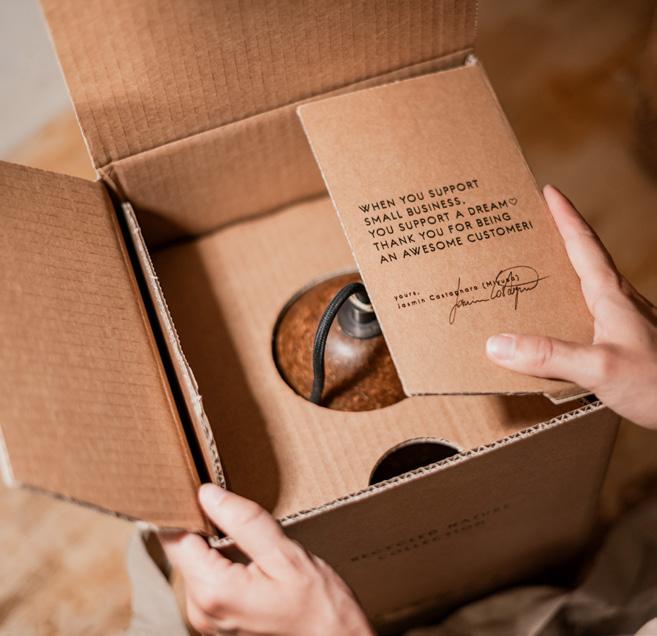
Nachhaltigkeit im gesamten Prozess liegt Jasmin am Herzen.
Per Jasmin è importante che l’intero processo sia sostenibile.
Jasmin is committed to sustainability throughout the entire process.
IN THE END, IT IS THE FOLIAGE THAT DICTATES THE COLOUR AND STRUCTURE OF THE LAMP.
Over the years, Jasmin has acquired a lot of knowledge about trees and leaves. She sometimes gets the foliage from nurseries, as certain trees, such as the witch hazel, do not grow in city parks. “I only collect leaves in the cities, because here leaves are a pure waste product that otherwise ends up on huge compost heaps or is burnt,” Jasmin says. One thing becomes clear whenever Jasmin talks:
Upon request, Miyuca

“IT
WAS IMPORTANT TO ME RIGHT FROM THE VERY BEGINNING THAT BOTH THE MATERIAL AND THE PRODUCTION EQUIPMENT WERE SUSTAINABLE.”
The three casting moulds, for example, come from the Gardena Valley. Jasmin also makes sure that the packaging does not contain plastic, yet still guarantees safe shipping. Everything needs to fit.
But how are these lamps actually made? Well, first of, the collected leaves are shredded, whereby various degrees of fineness up to sieved powder are produced. “I can determine how much light shines through in the end by adding more or less leaves,” Jasmin explains. Approximately one large yoghurt pot filled with crushed leaves is necessary to make one lamp. Organic resins are the second most important component. These are more sustainable than conventional resin and are used to solidify the foliage. This en-
sures that the product is durable and sturdy in the end. Depending on requirements, metal flakes are also mixed in, for example in copper or in a gilded colour. A vacuum machine is used to remove air bubbles from the compound before it is filled into the mould. After hardening, the product is removed from the mould by means of a compressor, a particularly critical moment, as Jasmin points out: “If you use too much pressure, the lamp cracks.” She affectionately calls such specimens “Frankenstein lamps" and uses them for her own needs. The designer has since perfected her recipes, but it’s a bit like in the kitchen: Sometimes, despite the recipe, things just don’t turn out right and a lot of things are now done by instinct. “You have to work slowly and you have to be patient – as well as having to wait for nature,” she explains. “The leaves of the poplar, for example, can only be collected in spring after they have been lying on the ground all winter and have therefore turned grey. They are perfect for black lamps.”
HER WORK IS NOT ONLY FUELLED BY PASSION, BUT ALSO BY THE DREAM OF MAKING THE WORLD A BETTER PLACE.
“Foliage has great potential. You can use it to make leather, paper and jewellery, for example, or even as an insulating material. I hope that other people will discover such opportunities for themselves. It would be cool if at some point there was a shop that only stocked products made from foliage.” What else does Jasmin want? To sell more of her lamps outside of South Tyrol – something she is well on the of way of achieving. Her works have become a particular favourite in German-speaking countries, but Jasmin has also sold lamps to countries such as New Zealand and the USA. In addition to lamps, she also produces twometre-long panels made from foliage, which can be found decorating walls, tables and counters in hotels and restaurants. The products are always unique and made in consultation with the customer. Sometimes they even bring their own foliage, for example from their vineyards. They seek contact with the artist, want to exchange ideas and support the small businesses directly.
Jasmin knows that support is valuable in many different ways: “Sharing ideas with other freelance designers is very important to me. We motivate each other and tell each other to keep pushing forward.” These are words that speak of shared passion. A passion that, together with perseverance and modesty, characterises Jasmin’s work ethic. This can also be seen in the name of her company: Miyuca. “Miyuca is a combination of ‘Miyu’, a Japanese name that, among other things, stands for femininity and passion in the workplace, and the letters “ca" for Castagnaro. I never wanted to use my own name for my company. By contrast, the lamps themselves bear the name ‘Laab’, which is South Tyrolean for ‘foliage’.” In other words, names that are filled with creativity – just like every single one of Jasmin’s creations.


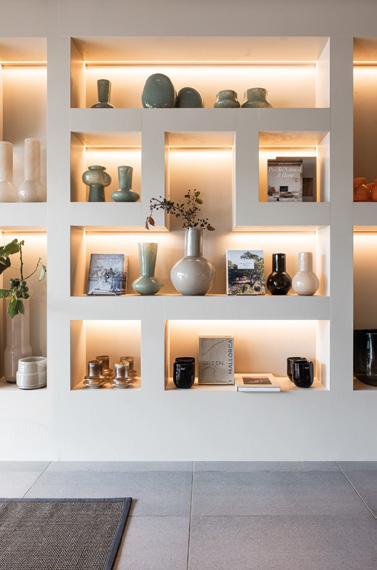
All’ombra del confine: i contrabbandieri altoatesini
Moving through the shadows of the borders: South Tyrol’s smugglers
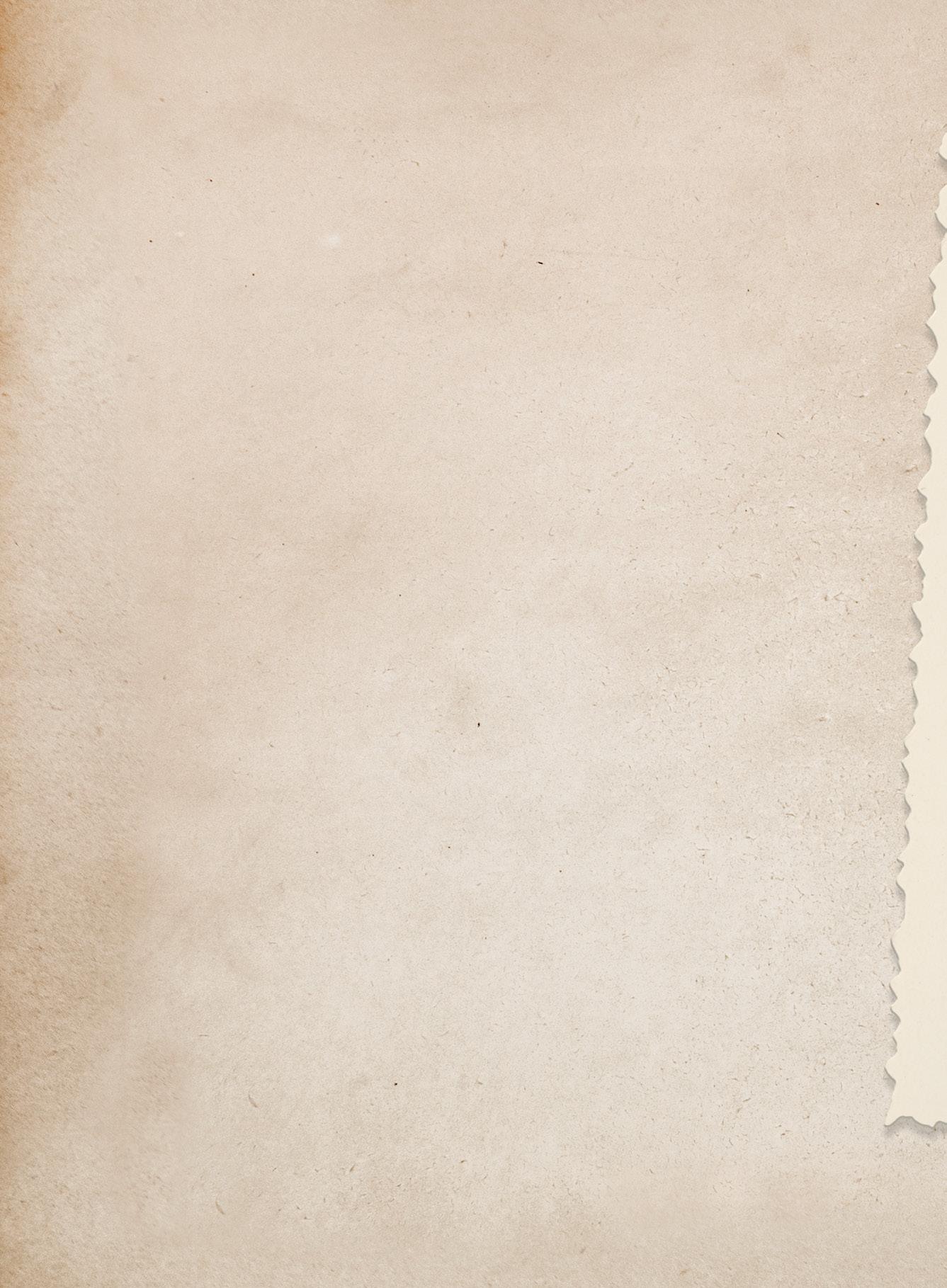
Ab dem ersten Weltkrieg bis in die 70er Jahre waren Südtirols Grenzgebiete Schauplatz von Schmuggelaktivitäten. Für die Tonnen an Waren, die ganzjährig auf abenteuerliche Weise über die Alpen ihren Weg nach Italien fanden, riskierten die Schmuggler sogar ihr Leben.
Dalla Prima guerra mondiale fino agli anni Settanta, le zone di confine dell’Alto Adige divennero teatro delle attività clandestine dei contrabbandieri, i quali, per trasportare tonnellate di merci in Italia attraverso le Alpi, misero addirittura a rischio la propria vita.
South Tyrol’s border areas were the backdrop for smuggling operations from the First World War until the 1970s. Throughout the year, smugglers would even risk their lives for the tonnes of goods that adventurously found their way across the Alps and into Italy.

Der Mond leuchtete hell über dem Piz Chavalatsch. Schon stundenlang harrten Alois und Joseph in der Dunkelheit aus. Säcke vollgepackt mit Kaffee und Saccharin, die sie selbst „Pinggeln“ nannten, lagen neben ihnen in der Kälte. Seit Jahren schmuggelten sie bereits gemeinsam Waren von Sta. Maria im Val Müstair in der Schweiz nach Lichtenberg im Vinschgau. Inzwischen kannten sie das unwegsame Gelände auf beiden Seiten der Grenze genauso gut wie die Gefahr, den italienischen Zöllnern zu begegnen. „Gut, dass der große Wintereinbruch noch nicht da ist“, flüsterte Alois. „Bald müssen wir die Route wieder wechseln, denn sobald der Schnee kommt, wird es saugefährlich.“ Kurz darauf schwangen die beiden Bauern ihre 25 kg schweren Säcke über den Rücken und machten sich auf den sechsstündigen Weg von der Schweiz in Richtung Vinschgau – auf den Weg nach Hause.
So könnte sich eine der vielen Begebenheiten dieser Art Anfang des 20. Jahrhunderts zugetragen haben. Bei dem Begriff „Schmuggler“ denkt man meist an düstere Gestalten, die illegal Waffen und Drogen transportieren und weniger an Bergbewohner mit Waren des täglichen Bedarfs. Doch waren es genau diese Menschen, die über die Jahrzehnte hinweg hauptsächlich Tabak, Saccharin, Kaffee, manchmal sogar Vieh über die politischen Grenzen von Österreich und der Schweiz nach Italien brachten. Nur selten wurde der umgekehrte Weg gewählt, wie etwa während der Kriegsjahre, als Partisanen oder Juden in die Schweiz gebracht wurden. Das italienische Wort „contrabbando“, oder auch „cuntrabanda“ im Rätoromanischen, wurde im Vinschgau zum Wort „Kuntrawant“ und stand für eine Überlebensstrategie. Die Armut zu der damaligen Zeit war groß, denn Arbeit gab es nach den Kriegswirren kaum, erst recht nicht in den entlegenen Tälern des Vinschgaus. Hier lebten die Menschen meist von der Landwirtschaft und eine schlechte Ernte konnte gleich die Existenz mehrerer Familien bedrohen. Umso größer war die Notwendigkeit, sich mit einem Nebenverdienst den Lebensunterhalt zu sichern. Somit war die Bereitschaft, Waren zu schmuggeln, groß. Seit Jahrhunderten pflegten die Menschen trotz unterschiedlicher Sprache und Kultur einen regen Austausch zwischen den Gebieten im Dreiländereck: Während der K.u.K.-Monarchie Österreich-Ungarn waren Unterengadin, Val Müstair und Vinschgau eine einheitliche Region. Jedoch erst im Jahr 1868, zwanzig Jahre nach der Gründung des schweizerischen
Bundesstaates, wurden die ersten politischen Grenzen gezogen, die die Gebiete neu unterteilten. Nach dem ersten Weltkrieg, als Südtirol und somit auch der Vinschgau in italienische Hand übergingen, verschärfte sich die Situation an den Grenzen ein weiteres Mal. Zöllner patrouillierten zwar auf beiden Seiten, doch wurde der Schmuggel von der
anders aus und die Zöllner sowie die Finanzpolizei versuchten mit aller Kraft, den Handel zu unterbinden. Somit entstand über die Jahrzehnte ein regelrechtes Katz-und-Maus-Spiel zwischen den Beamten, die größtenteils aus dem Süden stammten, und den Bauern und Hirten, die die Gegend wie ihren Schurz kannten und regelmäßig ihre Routen wechselten.
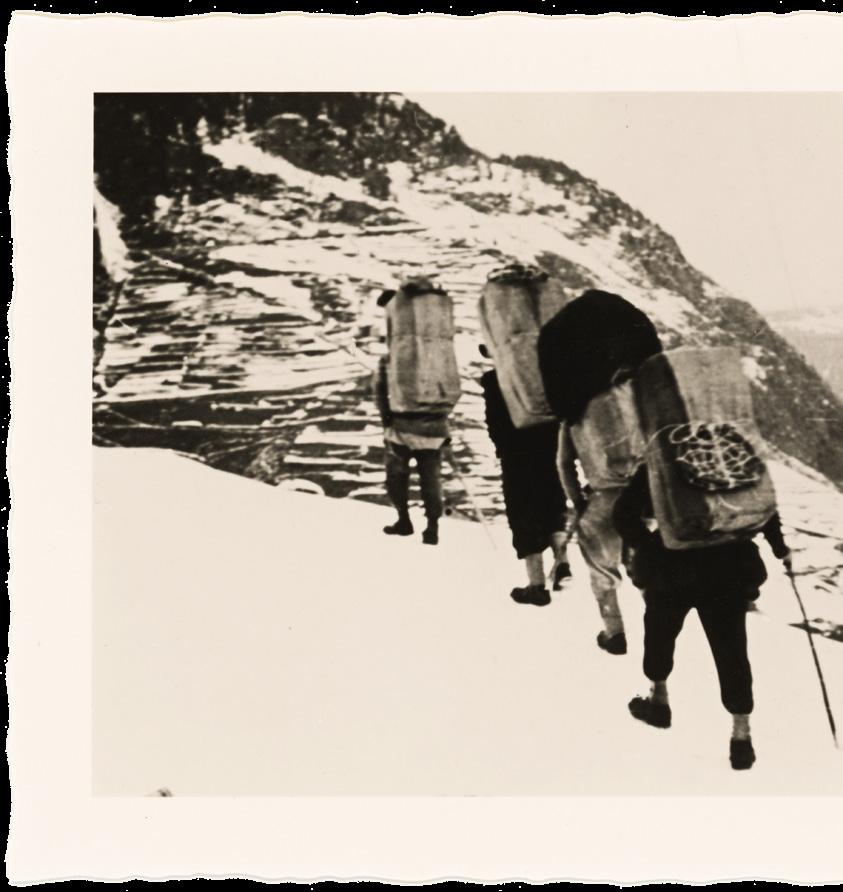
Schweiz aus geduldet und meist sogar unterstützt, denn schließlich wurde der Handel für die weitaus günstigeren Waren dort korrekt abgewickelt und brachte Geld ins Land. Der Weitertransport wurde mit bestimmten Anweisungen gefördert, wohlwissend, dass die Güter jenseits der offiziellen Zollübergänge ihren Weg nach Südtirol finden würden. Hinter der italienischen Grenze sah das Bild jedoch
Schon die jungen Burschen wuchsen mit dem Schmugglerhandwerk auf, standen zuerst für die Erwachsenen Schmiere und machten sich später selbst auf den Weg. Wäh-
rend einige selbst als Händler tätig waren und die Ware kauften und verkauften, fungierten andere als Träger für Geschäftsleute aus Südtirol, die über ihr Netzwerk die Waren weiterverkauften. Der Schmuggel in der Grenzregion machte sich allemal belohnt, denn ein einfacher Südtiroler Arbeiter, der Ende der 50er Jahre einen Monatslohn von
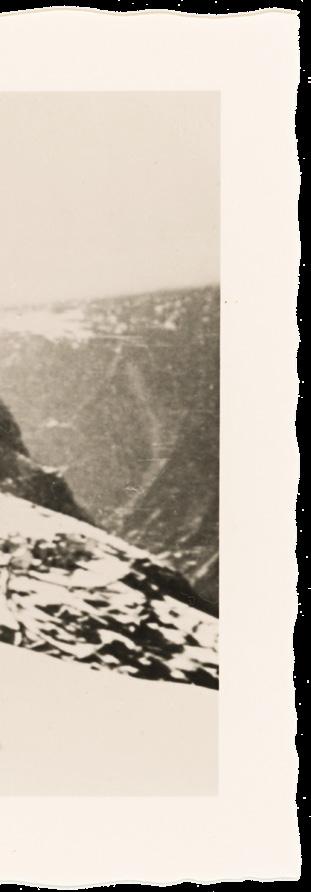
Weder Schnee noch eisige Kälte hielten die Schmuggler von ihrer Tätigkeit in unwegsamem Gelände ab.
Né la neve né il freddo gelido impedivano ai contrabbandieri di svolgere la loro attività sui terreni impervi.
Neither the snow nor the icy cold deterred the smugglers from their activities on the rough terrain.
Schluchten zu bewegen. „Mit einem Fuß im Zuchthaus, mit dem anderen im Grab“, so beschrieb Alfons Ortler aus Prad am Stilfserjoch die damalige Situation. Zehn Jahre lang war er mit einer zehnköpfigen Gruppe aus Prad und Lichtenberg unterwegs. Zweimal geriet Alfons mit anderen Männern unter eine Lawine, konnte sich aber mithilfe eines Messers selbst befreien. Andere Schmuggler hingegen hatten weniger Glück: Im Laufe der Jahrzehnte kamen mehrere Menschen bei Unfällen ums Leben und hinterließen mehrköpfige Familien.
Anstieg des Schweizer Franken und somit den höheren Preisen für die Produkte fand auch diese Epoche langsam ihr Ende.
30.000 bis 40.000 Lire bekam, konnte in einer Nacht für einen Sack mit 25 kg Zigaretten aus der Schweiz 50.000 Lire verdienen. Der illegale Handel war eine Mischung aus Überleben, Reiz und Abenteuer zugleich: Das Risiko, erwischt zu werden, war groß. Noch größer allerdings war die Gefahr, sich sommers wie winters auf unwegsamem Gelände entlang entlegener Pfade, Wälder und
Wer die langen Fußmärsche, teilweise über zwölf Stunden, mit Lasten bis zu 40 kg erfolgreich hinter sich bringen konnte, genoss unter der Bevölkerung großes Ansehen. Das Schmuggeln galt zu dieser Zeit als Kavaliersdelikt, denn noch immer saß der Schmerz der neugezogenen Grenzen von 1919 tief. Jeder finanzielle Schaden, den man Rom durch entgangene Zölle zufügen konnte, wurde stolz als kleiner Erfolg verzeichnet, weshalb die Einheimischen gemeinsam an einem Strang zogen. Man half sich, indem man Schmiere stand, den Stall als Zwischenlager anbot oder nützliche Informationen weitergab. Doch mit dem Erfolg und dem wachsenden Wohlstand mancher Schmuggler wuchsen im Laufe der Zeit auch Neid und Konkurrenz. Häufig versuchten einzelne Gruppen, die Waren anderer streitig zu machen. Ein Ruf aus der Entfernung wie „Finanzer!“ reichte bereits aus, dass eine ganze Gruppe ihre Säcke niederwarf und das Weite suchte – ganz zur Freude der Konkurrenz, die sich schließlich an der Beute bediente. Schlimmer war es nur noch, wenn die Finanzpolizei die Schmuggler tatsächlich bei ihrer Tat erwischte: Während manche Beamten aus Mitleid die Augen verschlossen, gab es auch jene, die die hart umkämpfte Ware beschlagnahmten. Es folgten Hausdurchsuchungen und in den schlimmsten Fällen sogar Festnahmen. Regelmäßig stieg hinter der Kaserne schwarzer Rauch auf, doch ob tatsächlich alles verbrannt wurde, sei dahingestellt. Schließlich gab es zu dieser Zeit zahlreiche Beamte, die ebenfalls die Gunst der Stunde nutzten und sich an der Schmuggelware bedienten. Mit der wachsenden Wirtschaft und der Verbesserung der Lebenssituation im Laufe der 70er Jahre versiegte auch der Strom der Schmuggler. Vor allem die jungen Menschen fanden entweder Arbeit in der Heimat oder auf der anderen Seite der Grenze. Mit dem
La luna splendeva luminosa sopra il Piz Chavalatsch. Alois e Joseph aspettavano ormai da ore protetti dall’oscurità. Accanto a loro, al freddo, giacevano sacchi pieni di caffè e saccarina – Pinggeln, li chiamavano loro. Da anni contrabbandavano insieme merci tra il paese di Santa Maria nella svizzera Val Müstair e Montechiaro in Val Venosta. Conoscevano bene le asperità del territorio su entrambi i lati del confine, così come il rischio di incontrare i doganieri italiani. “Per fortuna che l’inverno non è ancora sopraggiunto”, sussurrò Alois. “Presto dovremo cambiare di nuovo strada, perché appena comincerà a nevicare diventerà pericolosissimo.” Poco dopo, i due contadini si caricarono in spalla i loro sacchi da 25 kg e intrapresero l’impegnativo viaggio di ben sei ore, dalla Svizzera verso la Val Venosta, sulla via di casa.
Era questa la principale motivazione per svolgere tale attività all’inizio del XX secolo. Solitamente, quando si usa il termine “contrabbandiere”, si pensa a figure losche che trafficano illegalmente armi e droga, piuttosto che ad abitanti di zone montane che trasportano oltreconfine beni di uso quotidiano. Eppure, furono proprio questi ultimi, per decenni, a portare in Italia soprattutto tabacco, saccarina, caffè – e, talvolta, anche bestiame – attraverso i confini politici con l’Austria e la Svizzera. Solo raramente veniva scelto il percorso inverso, come ad esempio durante gli anni della guerra, quando i partigiani o gli ebrei venivano accompagnati in Svizzera. Il termine venostano Kuntrawant si rifà all’italiano “contrabbando”, a sua volta derivante dal termine cuntrabanda in retoromancio, e descriveva proprio una strategia di sopravvivenza. All’epoca, infatti, dopo i disordini della guerra, la povertà e la disoccupazione dilagavano, specialmente nelle vallate più remote della Val Venosta. Qui si viveva principalmente di agricoltura e un cattivo raccolto poteva minacciare la sussistenza di più e più famiglie contemporaneamente, per cui era davvero decisivo avere un modo alternativo per guadagnarsi da vivere. Ecco, dunque, che molti si resero disponibili al contrabbando.
Per secoli, gli scambi tra le aree del triangolo di confine furono prosperi, nonostante le diverse lingue e culture della popolazione: durante l’Impero austro-ungarico, la Bassa Engadina, la Val Müstair e la Val Venosta erano infatti
un’unica regione. Tuttavia, nel 1868, vent’anni dopo la fondazione della Confederazione Svizzera, vennero tracciati i primi confini politici, che divisero i territori. Dopo la Prima guerra mondiale, con l’annessione italiana dell’Alto Adige e quindi anche della Val Venosta, la situazione ai confini si inasprì ulteriormente. I doganieri pattugliavano entrambi i versanti, sebbene dal lato svizzero il contrabbando fosse meglio tollerato e, spesso, persino sostenuto, poiché il commercio di prodotti molto più economici veniva gestito regolarmente e assicurava entrate al Paese. Le esportazioni venivano così incoraggiate con istruzioni specifiche, pur consapevoli che i beni non sarebbero arrivati in Alto Adige tramite i valichi doganali ufficiali. In territorio italiano, invece, la situazione era assai diversa: i doganieri e la Guardia di Finanza cercavano con tutte le loro forze di ostacolare tale commercio. Nel corso dei decenni, questo portò a un vero e proprio gioco “del gatto e del topo” tra i funzionari, la maggior parte provenienti dal Sud, e i contadini o pastori altoatesini, i quali, conoscendo la zona come le proprie tasche, cambiavano continuamente le rotte.
Già da ragazzi si iniziava con il contrabbando, prima facendo da vedetta per gli adulti, poi mettendosi in proprio. Se alcuni si dedicavano alla compravendita in prima persona, altri facevano da corrieri per i commercianti altoatesini che trafficavano la merce attraverso la loro rete. Il contrabbando nella regione di confine fu sempre molto remunerativo, basti pensare che, se un semplice bracciante altoatesino alla fine degli anni Cinquanta percepiva un salario mensile di 30.000-40.000 lire, portando invece un sacco di 25 kg dalla Svizzera poteva guadagnare 50.000 lire in una sola notte. Il commercio illegale fu un misto di sopravvivenza, eccitazione e avventura allo stesso tempo: il rischio di essere scoperti era alto. Il pericolo maggiore, tuttavia, lo rappresentavano gli insidiosi terreni da superare d’estate come d’inverno, tra sentieri impervi, boschi e precipizi. “Un piede in prigione, l’altro nella tomba”, così Alfons Ortler di Prato allo Stelvio descrisse la situazione del tempo. Egli fu attivo come contrabbandiere per un decennio, collaborando con un gruppo di dieci uomini, alcuni del suo stesso paese, altri di Montechiaro. Per ben due volte una valanga travolse il gruppo; Alfons riuscì a liberarsi con l’aiuto di un coltello. Altri contrabbandieri furono meno fortunati: nel corso degli anni, diverse persone persero la vita in incidenti, lasciando sole le loro famiglie numerose.
Tra la popolazione locale, coloro che riuscivano a compiere le lunghe marce, talvolta di oltre dodici ore, trasportando carichi fino a 40 kg, godevano in realtà di un’ottima reputazione. All’epoca, infatti, il contrabbando era considerato una trasgressione perdonabile, perché ben più profondo era il dolore per i confini tracciati nel 1919. Ogni danno economico che potesse essere inflitto a Roma, attraverso la perdita di dazi doganali, era orgogliosamente registrato come un piccolo trionfo, una missione comune a tutti gli abitanti delle aree in questione. Questi si aiutavano l’un l’altro facendo da vedetta, offrendo le loro stalle come deposito temporaneo o trasmettendo infor-
mazioni utili. Tuttavia, col passare del tempo, dati il successo e la crescente prosperità di alcuni contrabbandieri, nacquero anche l’invidia e la concorrenza. Alcuni gruppi singoli cercarono sempre più spesso di accaparrarsi con la forza i beni degli altri. Bastava gridare da lontano “Finanziere!” affinché un’intera squadra gettasse i sacchi e si desse alla fuga – con grande gioia della concorrenza, che alla fine si accaparrava il bottino. Ma lo scenario appariva ben più grave quando la Guardia di Finanza coglieva veramente i contrabbandieri in flagrante: sebbene alcuni agenti chiudessero un occhio mossi da pietà, altri confiscavano senza indugi i beni faticosamente ottenuti. Seguivano perquisizioni domiciliari e, nel peggiore dei casi, anche arresti. Dietro la caserma si alzava regolarmente una colonna di fumo nero; ciononostante non è del tutto chiaro se la merce venisse effettivamente bruciata. Dopotut-

to, numerosi furono anche quegli ufficiali che approfittarono dell’occasione per trarre essi stessi vantaggio dal contrabbando. Nel corso degli anni Settanta, con il progresso economico e il miglioramento delle condizioni di vita, la necessità di praticare tale attività illegale si ridusse. Soprattutto i giovani trovarono un posto di lavoro in terra natale o dall’altro lato del confine. Con l’aumento poi del valore del franco svizzero e, quindi, dei prezzi dei prodotti, anche quest’epoca volse pian piano al termine.
The moon gleamed brightly over the Piz Chavalatsch. For hours, Alois and Joseph had been waiting in the dark. Sacks packed to the brim with coffee and saccharin, which they themselves called “Pinggeln", lay next to them in the cold. They had been smuggling goods from Sta. Maria in Val Müstair in Switzerland
to Montechiaro in the Venosta Valley for years. They were now equally familiar with the rough terrain on both sides of the border and the danger of encountering Italian customs officers. “Good thing winter hasn’t set in yet,” Alois whispered. “Soon we’ll have to change route again, because once the snow comes, it’ll be bloody dangerous.” Shortly afterwards, the two farmers swung their 25 kg sacks over their backs and set off on the six-hour journey from Switzerland towards the Venosta Valley – they were heading home.
This might have been one of the many incidents of its kind at the beginning of the 20th century. The term “smuggler" usually conjures images of sinister figures who il-
legally transport weapons and drugs – and less of mountain dwellers with everyday goods. However, it was precisely these individuals who, over the course of several decades, mainly transported tobacco, saccharin, coffee and sometimes even livestock across the political borders of Austria and Switzerland into Italy. The reverse route was chosen only rarely, for example during the years of war, when partisans or Jews were brought to Switzerland. The Italian word “contrabbando", or “cuntrabanda" in Romansh, became the word “Kuntrawant" in the Venosta Valley and stood for a survival strategy. At that time, poverty was high, as there was hardly any work after the turmoil of war, particularly not in the remote valleys of the Venosta Valley. People here mainly lived on agriculture and a bad harvest could threaten the existence of several families at once. It was therefore all the more

Ein vollbepackter „Pinggel“ konnte eine Last von über 40 kg erreichen.
Un Pinggel completamente carico poteva pesare più di 40 kg.
A fully packed ‘Pinggel’ could reach a weight of over 40 kg.
necessary to secure a living by earning some extra money. Consequently, there was a great willingness to smuggle goods. Despite differences in language and culture, people have maintained a lively exchange between the areas in the border triangle for centuries. Under the Austro-Hungarian Monarchy, the Lower Engadine, Val Müstair and the Venosta Valley were a single region. It was only in 1868, twenty years after the founding of the Swiss federal state, that the first political borders were drawn. This drew a new division between the areas. The situation at the borders worsened once again after the First World War, when South Tyrol and thus the Venosta Valley became part of Italy. Customs officers patrolled on both sides, but smuggling from Switzerland was tolerated and generally even supported, as trade for the much cheaper goods was processed correctly in Switzerland and brought money into the country. Further transport was encouraged with specific instructions, knowing full well that the goods would find their way beyond the official customs checkpoints and into South Tyrol. However, the situation was quite different behind the Italian border. The customs officers and the financial police made every effort to stop the trade. Over the decades, this resulted in a real cat-and-mouse game between the officials, the majority of whom came from the south, and the farmers and shepherds, who knew the area like the back of their hand and regularly changed their routes.
From an early age, the young boys grew up with the smuggling trade, first standing lookout for the adults and later setting off on their own. While some acted as traders themselves, buying and selling the goods, others served as agents for businessmen from South Tyrol who then sold the smuggled goods through their network. In the late 1950s, a simple South Tyrolean worker who was paid a monthly wage of 30,000 to 40,000 lire could earn 50,000 lire in one night for a 25 kg bag of cigarettes from Switzerland. This illegal trade was a mixture of survival, excitement and adventure at the same time: the risk of being caught was high. Even greater, however, was the danger of travelling on rough terrain along secluded paths, forests and ravines in both summer and winter. “One foot in the prison, the other in the grave,” is how Alfons
Ortler from Prato allo Stelvio described the situation at the time. He spent a decade travelling back and forth with a group of ten men from Prato and Montechiaro. Alfons and other men were caught in an avalanche twice, but were able to free themselves with the help of a knife. Other smugglers were less fortunate. Over the decades, several people lost their lives in these accidents, leaving behind families of several people.
Those who could successfully complete the long marches, in some cases over twelve hours long and with weights of up to 40 kg on their backs, enjoyed a high reputation among the population. Smuggling was considered a peccadillo at the time, since the pain of the newly drawn borders of 1919 was still deeply felt. The locals proudly celebrated any financial damage that could be inflicted on Rome through lost customs duties as a small success, which is why they pulled together. People helped each other by standing guard, offering their stables as temporary storehouses or passing on useful information. However, over time, the success and growing prosperity of certain smugglers fuelled envy and competition. Some groups often tried to steal the goods of others. A distant shout such as “Finance officer!” was enough for a whole group to throw down their sacks and make a run for it – much to the delight of the competition, who eventually helped themselves to the loot. The only thing worse was when the financial police actually caught the smugglers in the act: While some officers turned a blind eye out of pity, there were also those who confiscated the hard-earned goods. It was followed by house searches and, in the worst cases, even arrests. Black smoke regularly rose from behind the barracks, but it remains unclear whether everything was actually burnt or not. After all, there were numerous civil servants who also took advantage of the opportunity and helped themselves to the contraband at the time. As the economy grew and living conditions improved in the 1970s, the flow of smugglers also dwindled. Especially the young people either found work at home or on the other side of the border. When the Swiss franc rose and prices for products increased, this era slowly came to an end.
Einmal bot sich für einen Schmuggler die Gelegenheit, 100 kg Kaffee auf einmal über die Grenze zu bringen. Gemeinsam mit seinen Kumpanen machte er sich im Schutz der Dunkelheit auf den Weg, um die Ware zu holen. Perfekt getarnt wurden die 100 kg Kaffee schließlich in einem mit Blumen dekorierten Sarg bis nach Bozen transportiert.
Una volta, si presentò a un contrabbandiere la grande opportunità di portare ben 100 kg di caffè in una volta sola attraverso il confine. Con il favore delle tenebre, partì insieme ai suoi compagni per recuperare la merce. Il quintale di caffè fu infine trasportato fino a Bolzano perfettamente camuffato in una bara con tanto di fiori.
Once, a smuggler had the opportunity to transport 100 kg of coffee across the border in one go. Accompanied by his cronies, he set off under the cover of darkness to collect the goods. The 100 kg of coffee were finally transported to Bolzano perfectly camouflaged in a coffin decorated with flowers.


Was für eine erstaunliche Geschichte zwischen Himmel und Erde: Der Vinschger Hagen Patscheider war einst der Beste der Welt in der Abfahrt. Er wurde in dieser Disziplin Juniorenweltmeister. Heute ist er Luft- und Raumfahrtingenieur in Bremen und sein Projekt wird als erstes Objekt überhaupt auf einem Marsmond landen. Ein Gespräch über Erfolgsgeheimnisse und Heimatverbundenheit.
Una storia incredibile tra cielo e terra: Hagen Patscheider, venostano, fu uno dei migliori discesisti al mondo e conquistò il titolo di campione mondiale juniores. Oggi, lavora come ingegnere aerospaziale a Brema e l’oggetto da lui progettato sarà il primo ad atterrare su una luna di Marte. Un racconto sui segreti del successo e il sentimento di attaccamento alla terra d’origine.
What an amazing tale to be told between heaven and earth. Hagen Patscheider from the Venosta Valley was one of the best downhill skier of the globe: He was world junior champion in this discipline. Today he is an aerospace engineer in Bremen and his design will be the first ever object to land on a Martian moon. A chat on the secrets of his success and his love of his home.

Christiane Weinhold Hagen Patscheider, Georg Pircher, DLR
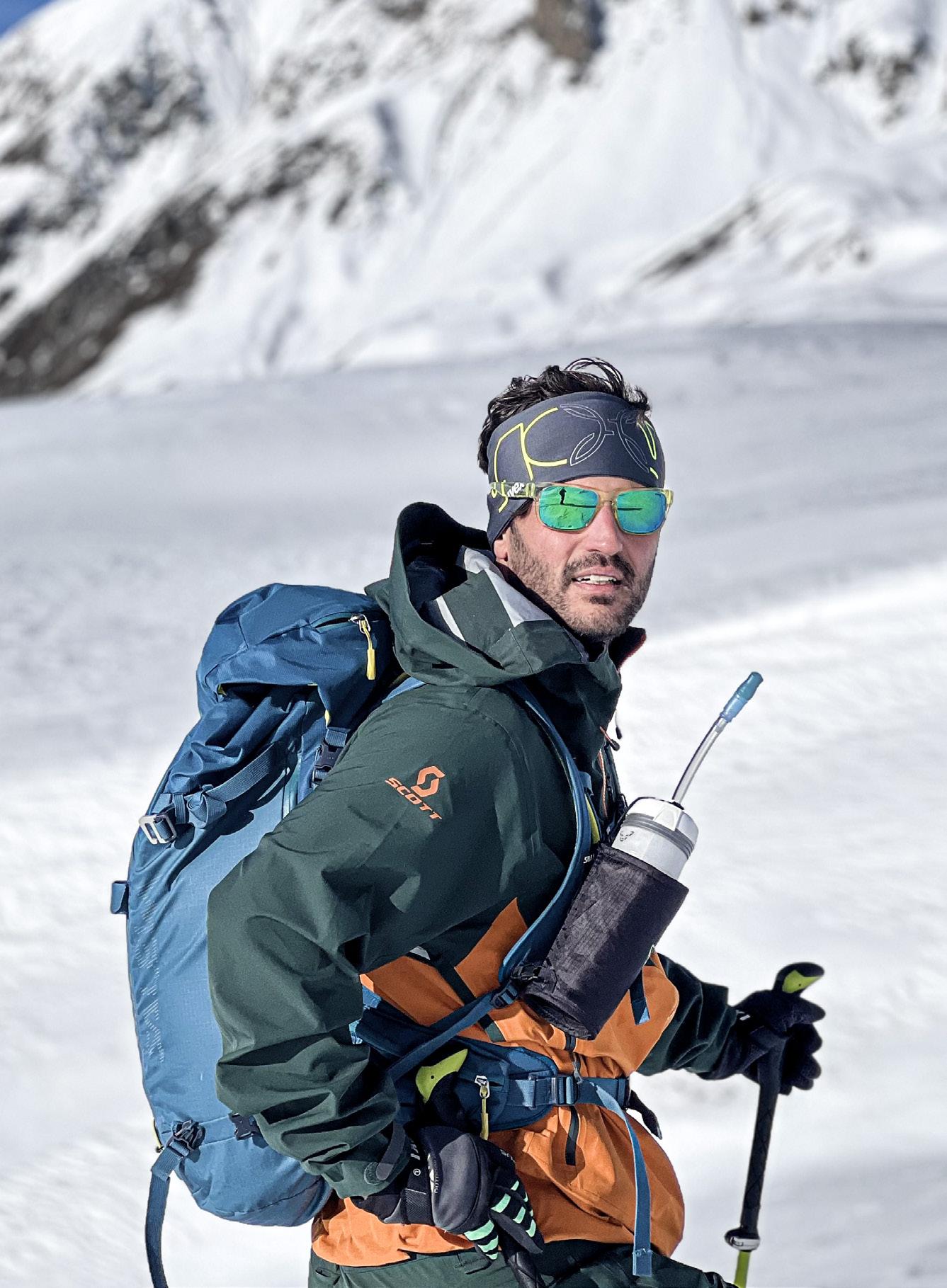
Von den Vinschger Bergen ins norddeutsche Flachland – von der Streif hinaus ins Weltall: So könnte man die bisherigen Stationen im Leben des aus Langtaufers stammenden 36-Jährigen beschreiben. Skirennfahrer oder Weltraumpionier hat wohl kaum jemand im Lebenslauf stehen – und schon gar nicht in dieser Kombination. Dennoch haben die beiden Wege einige Ähnlichkeiten – wenngleich nicht auf den ersten Blick.
Im Gespräch mit „Welcome“ ist Hagens unverkennbarer vinschgerischer Einschlag nicht zu überhören, auch wenn er sich den in Norddeutschland aus Gründen der Verständlichkeit abgewöhnt hat. „So gut es geht, ich werde aber immer für einen Schweizer gehalten“, meint er. In seiner Heimat Langtaufers sei er viel zu selten. „900 km sind einfach eine zu große Distanz. Im Winter versuche ich immer heimzukommen, das ist mir wichtig“, sagt er. Die Skipiste sucht er da mittlerweile kaum noch.
Auch wenn das Skifahren einmal sein großer Traum war. „Ja, das war es, sonst wäre ich auch gar nicht dahin gekommen, wo ich war“, erklärt er. Damit meint er den Ski-Weltcup, Europacup und seinen Sieg im Jahr 2008 bei der Junioren-Weltmeisterschaft der Abfahrer. Ein Bandscheibenvorfall im Jahr 2012 unterbrach jäh seine Karriere, die gerade erst an ihrem vielversprechenden Beginn stand. Nach einer
OP hängte er noch eine Saison an, in der Hoffnung, zu alter Stärke zurückzufinden. Doch: „Ich merkte, ich kann nicht mehr ans Limit gehen. Ich fragte mich, ob der Rücken das aushält, oder ob ich wieder Schmerzen bekommen würde. So kann man nichts erreichen.“ So fiel ihm die Entscheidung, seine Karriere als Skirennläufer zu beenden, relativ leicht. „Ich wusste, ich hatte alles versucht“, erinnert er sich. Diese pragmatische Art, mit Rückschlägen umzugehen, ist eines seiner Erfolgsrezepte. „Ich glaube, für mich war es als junger Mensch einfacher, die Karriere zu beenden, als es für diejenigen ist, die bis Mitte, Ende 30 noch aktiv sind“, meint er. Schließlich hatte er auch noch andere Ambitionen.
Danach erfüllte er sich seinen Kindheitstraum: ein Studium. Erst entschied er sich für Sports Engineering, da er sich für Produktentwicklung für den Sport interessierte. Dann folgte ein Master in Maschinenbau. Zu der Luft- und Raumfahrt kam er vollkommen unverhofft vor vier Jahren durch eine Initiativbewerbung beim Deutschen Zentrum für Luft- und Raumfahrt. „Ich hatte großes Glück, dass meiner Chefin die Bewerbung gefiel“, weiß er, schließlich konnte er kein einschlägiges Studium vorweisen. „Bereits als Kind interessierte ich mich
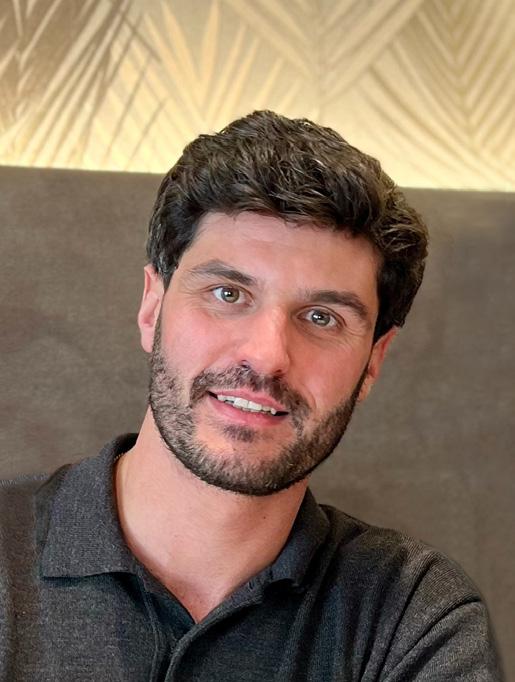
für Astronomie. Ich wollte wissen, wie unser Universum, unsere Galaxie funktioniert.“ Das lag auch an seinem Vater, dem bekannten Kletterer Reinhard Patscheider, der bei einem Unglück verstarb, als Hagen erst zehn Jahre alt war. „Mein Vater hat schon immer gerne Sterne geschaut“. Er habe Teleskope gehabt, durch die auch der kleine Hagen schauen durfte. „Diese Faszination verbindet mich mit ihm“, erzählt der 1,86 m groß gewachsene Südtiroler.
Heute kommt ihm seine Erfahrung aus der Rennfahrerkarriere in seiner Forschungsarbeit als Qualitätssicherheitsingenieur im Deutschen Zentrum für Luft- und Raumfahrt in seiner Wahlheimat Bremen absolut entgegen. Er musste sich als Quereinsteiger erstmal durchbeißen. Er arbeitete in einem Team des deutschen Luft- und Raumfahrtzentrums, das in Kooperation mit den Kollegen der französischen Raumfahrtagentur CNES einen Rover entwickelte, der einmal auf einem Marsmond landen soll. Martian Moons Exploration (MMX) ist eine absolute Pioniermission, es gab noch nie eine Landung auf dem Marsmond Phobos. Der MMX-Rover soll die Bodenzusammensetzung mithilfe eines sogenannten Raman-Spektrometers untersuchen. Die Probe selbst wird vom Mutterschiff (MMX-Spacecraft) entnommen. Das obliegt der japanischen Raumfahrtagentur JAXA. Dann wird es zur Erde gebracht, um erstmals über die Bodenbeschaffenheit des Mondes Aufschluss zu geben.
Hagen Patscheider liebt Herausforderungen, im Sport und im Beruf.
Hagen Patscheider ama le sfide, sia nello sport che al lavoro.
Hagen Patscheider loves challenges, both in sports and at work.
Ein Hightech-Unterfangen, das mit der Piste auf den ersten Blick nichts zu tun hat. Sehr wohl allerdings mit der psychischen Herausforderung. „Der Job ist Vollstress“, erklärt er. Es stecken Unmengen an Knowhow und Technik in dem etwa schuhkartongroßen Gefährt. Hagen war dabei der Mann für die Probleme: Wenn es irgendwo einen Fehler gab oder etwas nicht funktionierte, war er es, der einschritt und die Krise managte. Nicht aufgeben, wenn es mal schiefläuft, sich „nicht drausbringen lassen“, dranbleiben, immer 100 % geben, das sind alles Qualitäten, die er in seiner Zeit als Spitzensportler gelernt habe und auch jetzt nutzen kann. Weitere Rezepte, um zu den Besten zu gehören? „Etwas tun, was einem absolut Spaß macht“, sagt er nach einigem Nachdenken.
Das Projekt, den Rover genannt Idefix, brachte Hagen im März mit den Kollegen aus Bremen und Frankreich nach Japan zur dortigen Raumfahrtagentur. Denn von dort soll er mit

einer unbemannten Rakete ins All geschossen werden. „Der Rover war eine Art Geschenk an die Japaner, genauer gesagt eine wissenschaftliche Beistellung zur MMX-Mission“, erklärt Hagen. Von dieser profitieren natürlich beide Seiten. „Wir dürfen durch den Rover mitfliegen und auf dem Phobos forschen. Der Rover bringt wissenschaftliche Erkenntnisse und späht dann gleichzeitig den Landeplatz für das MMX-Spacecraft aus. Jetzt heißt es warten. Das etwa 100-köpfige Team des deutschen und des französischen Luft- und Raumfahrtzentrums hat seine Arbeit gemacht. Der Abschuss ins All verzögert sich. Die erste Trägerrakete, die für die Mission gedacht war, ist explodiert. „Es gibt nur alle zwei Jahre ein Zeitfenster, in dem der Mars günstig steht, um ihn anzufliegen“, weiß Hagen. Deshalb wird es 2026 werden, bis die Mission startet. „Da werden wir sicher alle nochmal in Hochspannung sein, ob alles gut geht“, meint er. Dennoch ist er bereits mehr als zufrieden. „Allein dieses Gerät in nur fünf Jahren zu entwickeln, ist an sich schon ein großer Erfolg“, unterstreicht er.
Dass es aktuell ein wenig ruhiger zugeht, freut ihn nach den harten Arbeitsjahren. Und auch wenn er absolut ehrgeizig und erfolgsorientiert ist und bereits neue Projekte in Sicht sind: Eigentlich sei er ein gemütlicher Typ. „Das brauche ich auch. Gerade als Spitzensportler muss man zur richtigen Zeit voll da sein und Vollgas geben. Wenn ich immer auf 180 wäre, würde ich das gar nicht aushalten.“
Deshalb sei das entspannte Gemüt kein Widerspruch zum draufgängerischen Abfahrtsläufer. „Viele meiner Kollegen sind so“, gibt er zu bedenken.
In der Freizeit treibt er – wie könnte es anders sein – hauptsächlich Sport: „Drei bis vier Mal in der Woche brauche ich das.“ Fitnessstudio, Rennradfahren, all das gehe in Bremen auch. Ansonsten liest er gern mal ein Buch –passenderweise liebt er Science-Fiction-Romane. Und wenn er doch mal in Südtirol ist, liebt er es, in die Berge zu gehen: Skitouren, Mountainbiken und Rennradfahren sind seine Lieblingsbeschäftigungen. Und wie sieht es mit einer möglichen Rückkehr nach Südtirol als festem Wohnsitz aus? „Ausschließen will ich es nicht“, erklärt er. Weil er jedoch seiner Branche treu bleiben will, könnte sich Südtirol als Wohnort schwierig erweisen. „Ich hoffe aber, dass es irgendwann mal möglich ist, näher an meiner Heimat zu wohnen, damit sich auch Wochenendbesuche auszahlen.“ Und wenn man den Weg von Hagen Patscheider beobachtet, dann weiß man, dass dieser Wunsch durchaus Realität werden kann. Denn er weiß, wie man erfolgreich nach den Sternen greift – oder eben nach dem Mond – egal, ob von der Skipiste oder vom Raumfahrtzentrum aus.
Ein Bild aus den Tagen, als Hagen Patscheider unter den schnellsten Skirennläufern der Welt war.
Un’immagine dei tempi in cui Hagen Patscheider fu uno dei migliori discesisti al mondo.
A photograph taken back in the days when Hagen Patscheider was one of the fastest ski racers in the world.
Dalle montagne della Val Venosta alla pianura della Germania settentrionale, dalla Streif allo spazio: ecco come si potrebbero descrivere, fino a oggi, le tappe della vita del trentaseienne originario della Vallelunga. Difficilmente qualcuno può vantare di esser stato sia un campione di sci alpino che un pioniere del cosmo – e men che meno in questa sequenza. Tuttavia, le due carriere presentano alcune analogie, seppur non a prima vista.
Durante l’intervista con Welcome, il marcato accento venostano di Hagen è inconfondibile, anche se ha perso un po’ la cadenza per farsi comprendere nel nord della Germania. “Per quanto possibile, ma vengo comunque sempre scambiato per svizzero”, racconta. Torna raramente alle origini, alla Vallelunga: “Novecento chilometri sono davvero tanti. In inverno cerco sempre di trascorrerci del tempo, è importante per me”, continua. Nel frattempo, ha praticamente smesso di cercare le piste da sci.
Una decisione difficile come ricetta per il successo
Un tempo lo sci era il suo grande sogno. “Sì, lo era, altrimenti non avrei raggiunto quegli obiettivi”, spiega. Si riferisce alla Coppa del mondo di sci alpino, alla Coppa Europa e alla
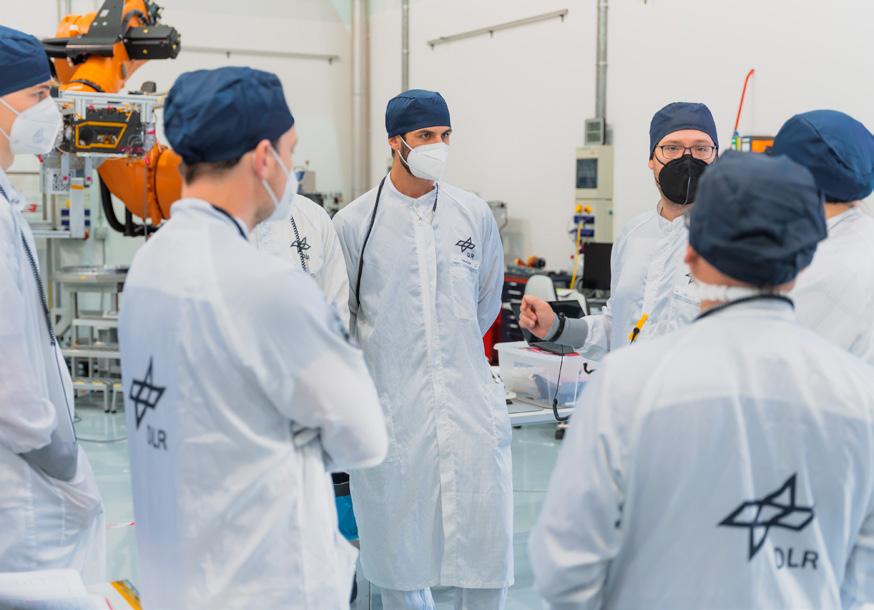
vittoria nel 2008 ai Campionati mondiali juniores di discesa libera. Nel 2012, un’ernia del disco interruppe bruscamente la sua carriera, agli albori ma già promettente. Dopo l’operazione, gareggiò un’altra stagione nella speranza di ritrovare la forza di un tempo. Tuttavia, non fu proprio così: “Capii che non potevo più spingermi al limite. Mi chiedevo se la mia schiena avrebbe retto o se i dolori si sarebbero ripresentati; e con questa attitudine non si ottiene nulla”. La decisione di porre fine alla sua carriera di sciatore fu quindi relativamente facile per lui. “Sapevo di aver dato tutto”, ricorda. Il pragmatismo nell’affrontare le sconfitte è una delle sue ricette per il successo. “Credo che per me, in quanto ragazzo, sia stato più facile porre fine alla mia carriera, in confronto a chi deve farlo a trent’anni o più”, afferma. Dopotutto, aveva anche altre ambizioni.
Ancora una volta punta alle stelle, e non solo metaforicamente
Quindi, realizzò il suo sogno d’infanzia: la laurea. Dapprima decise di studiare ingegneria dello sport, considerando il suo interesse per lo sviluppo di prodotti in questo ambito. Successivamente, conseguì un master in ingegneria meccanica. Quattro anni fa è approdato al settore aerospaziale in modo del tutto inaspettato, grazie a una candidatura spontanea al centro aerospaziale tedesco DLR. “Sono stato molto fortunato che alla mia capa sia piaciuta la candidatura”, racconta, dopotutto non poteva vantare alcun titolo in tale ambito. “Il mio interesse per l’astronomia nasce da bambino; desideravo sapere come funziona il
nostro universo, la nostra galassia.” In parte, questa è un’eredità del padre, il noto scalatore Reinhard Patscheider, scomparso in un incidente quando Hagen aveva solo dieci anni. “Mio papà ha sempre amato guardare le stelle.” Aveva dei telescopi, che utilizzava anche il piccolo Hagen. “Questa passione mi unisce a lui”, racconta l’altoatesino, ormai cresciuto e alto 1,86 m.
Oggi, l’esperienza acquisita durante la carriera agonistica si rivela utile nel suo lavoro di ricerca in veste di ingegnere della sicurezza e qualità presso il centro aerospaziale tedesco DLR di Brema, sua città d’adozione. All’inizio della nuova carriera, non sono mancati gli sforzi per farsi strada. Dapprima ha lavorato con un team del DLR che, in collaborazione con i colleghi del centro nazionale di studi spaziali CNES, ha sviluppato un rover destinato all’atterraggio su una luna di Marte. La missione Martian Moons Exploration (MMX) è assolutamente pionieristica: si tratta del primo atterraggio in assoluto sulla luna marziana Phobos. Il rover MMX analizzerà la composizione del suolo attraverso uno spettrometro Raman e la navicella madre (MMX-Spacecraft) ne preleverà un campione. Questo compito spetta all’agenzia spaziale giapponese JAXA. Sarà poi portato sulla Terra per fornire, per la prima volta, informazioni sulla composizione del suolo di questa luna. Un’impresa high-tech che apparentemente non ha nulla a che fare con il mondo dello sci. Tuttavia, presenta analogie quando si tratta di sfide a livello psicologico. “Il lavoro è molto
Die Arbeit an dem Rover erforderte höchste Präzision; Hagen Patscheider (Mitte) überwachte die Prozesse.
Hagen Patscheider (al centro) supervisionava i diversi processi, di grande precisione, per la realizzazione del rover.
The work on the rover demanded the utmost precision; Hagen Patscheider (centre) supervised the processes.
stressante”, spiega. Il veicolo, grande quanto una scatola da scarpe, è il risultato di un immenso know-how e tecnologie. In caso di difficoltà o problemi, ci si affidava a Hagen: sapeva sempre come intervenire e gestire la situazione in modo ottimale. Non arrendersi quando tutto va male, non lasciarsi scoraggiare, continuare a lavorare e dare sempre il 100%: sono tutte qualità che ha imparato durante gli anni da atleta di punta e che ora si rivelano utili. Altre ricette per essere tra i migliori? “Fare qualcosa che ti piace davvero” afferma, dopo una breve riflessione.
A marzo, Hagen, i colleghi di Brema e quelli francesi hanno portato il rover chiamato Idefix all’agenzia spaziale in Giappone. Da lì sarà lanciato nello spazio con un razzo senza equipaggio. “Il rover è stato una sorta di regalo ai giapponesi, più precisamente un contributo scientifico alla missione MMX”, spiega Hagen. Ovviamente, entrambe le parti ne traggono vantaggio. “Grazie al rover possiamo partecipare al volo e condurre ricerche su Phobos. Il rover fornisce risultati scientifici e allo stesso tempo individua il sito di atterraggio per la navicella MMX-Spacecraft.
Ora dobbiamo solo attendere. Il team, composto da circa cento membri dei centri aerospaziali tedeschi e francesi, ha fatto il proprio lavoro. Il lancio nello spazio è stato ritardato. Il primo veicolo destinato alla missione è esploso. “La finestra temporale in cui Marte è in una posizione favorevole per volarci si presenta solo ogni due anni”, spiega Hagen. Di conseguenza, dovremo aspettare il 2026 per iniziare la missione. “Saremo di nuovo sulle spine per vedere se tutto andrà bene”, dice. Tuttavia, è già più che soddisfatto: “Sviluppare questo dispositivo in soli cinque anni, in realtà, è un grande successo”.
Dopo anni di duro lavoro, è contento che al momento ci sia un po’ di calma. Sebbene sia molto ambizioso e concentrato sul successo e sui nuovi progetti già all’orizzonte, è un tipo tranquillo. “Anch’io ne ho bisogno. Soprattutto in quanto atleta di alto livello, devi dare il massimo al momento giusto. Se fossi sempre al 200% non riuscirei a farcela.” Ecco perché un’indole rilassata non è in contraddizione con l’essere un discesista temerario. “Molti dei miei colleghi sono così”, sottolinea.
Nel tempo libero fa soprattutto sport, non potrebbe essere altrimenti: “Sento la necessità di allenarmi tre o quattro volte alla settimana”. Andare in palestra o in bicicletta è possibile anche a Brema. Per il resto, gli piace leggere – e giustamente predilige i romanzi di fantascienza. Poi, quando torna in Alto Adige, ama andare in montagna: sci d’alpinismo, mountain bike e ciclismo su strada sono i suoi passatempi preferiti. E che dire di un possibile ritorno alla regione d’origine come residenza permanente? “Non voglio escluderlo”, afferma. Volendo rimanere fedele al suo lavoro, però, potrebbe rivelarsi difficile risiedere in Val Venosta. “Ciononostante, spero che a un certo punto sia possibile vivere più vicino a casa, così da poterci tornare almeno per i fine settimana.” Osservando il percorso di vita di Hagen Patscheider, ci si rende conto che questo desiderio potrebbe diventare realtà. Perché lui sa come raggiungere con successo le stelle – o, come in questo caso, la luna – sia sulle piste da sci che dal centro aerospaziale.
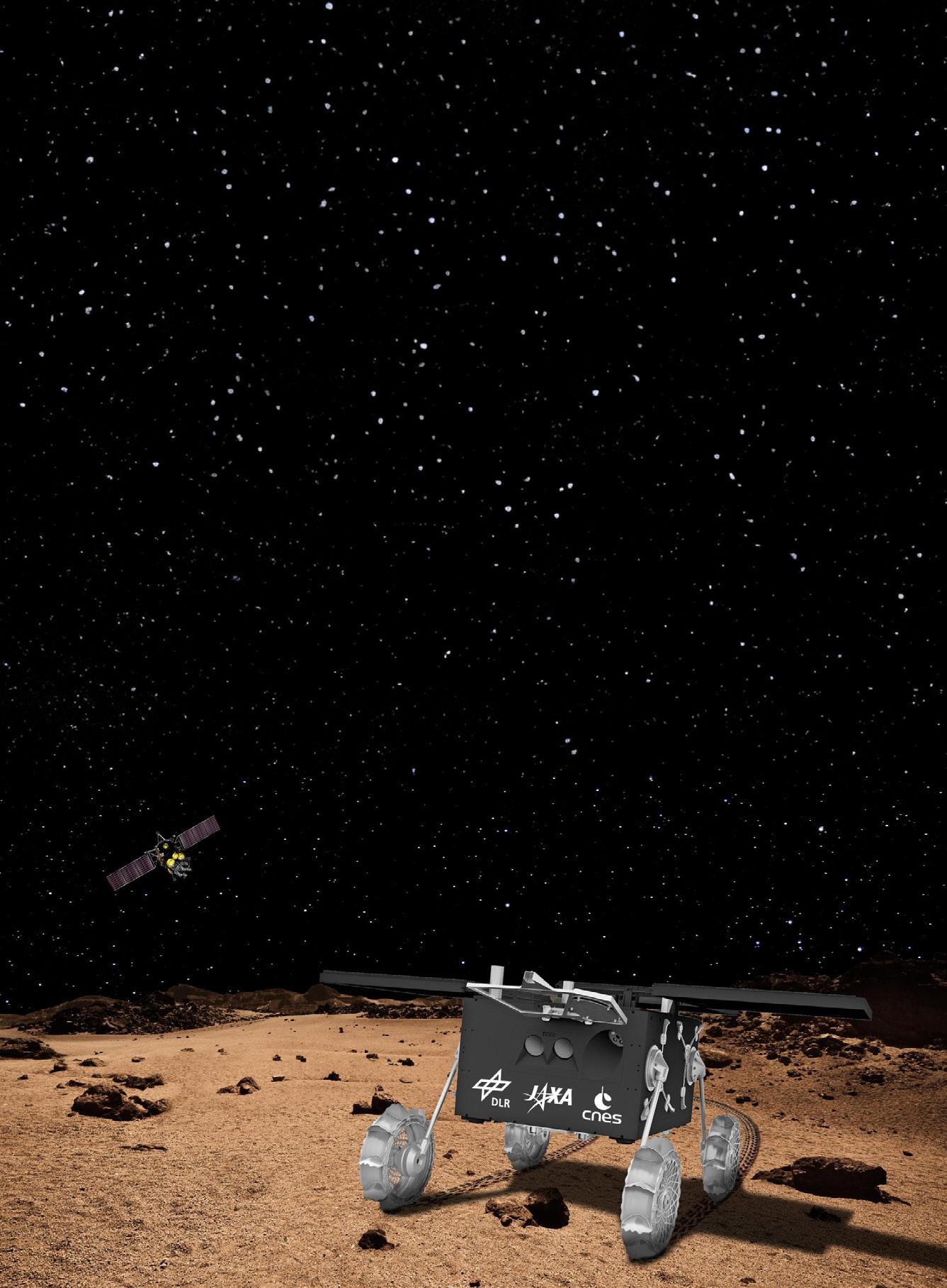
From the Venosta Valley mountains to the flatlands of northern Germany - from the Streif slope to the stars: that’s how you could describe the milestones in the life of the 36-year-old from Vallelunga. Hardly anyone has “ski racer" or “space pioneer" on their CV – and definitely not in this combination. Nevertheless, the two paths have a few similarities, albeit not at first glance.
When talking to “Welcome", Hagen’s unmistakable Venosta Valley accent cannot be denied, even if he has stopped using it in northern Germany for reasons of comprehensibility. “I’m always mistaken for a Swiss, no matter how hard I try to speak proper German,” he remarks. He visits his home town of Vallelunga far too rarely. “900 kilometres is simply too great a distance. I always try to return home in winter, that’s very important to me,” he says. He hardly hits the slopes anymore.
Skiing was once his big dream. “Yes, it was, otherwise I wouldn’t have gotten to where I was,” he explains. By that he means the Ski World Cup, European Cup and his victory in 2008 at the Junior World Downhill Championships. An incident with a herniated disc in 2012 abruptly interrupted his career, which was just at its promising start. Following a surgical procedure, he completed another season in hopes of regaining his former strength. But: “I soon realised that I could no longer push myself to the limit. I asked myself whether my back could take it or whether I would be
in more pain. You can’t accomplish anything that way.” It was therefore a relatively easy decision for him to end his ski-racing career. “I knew I had tried my hardest,” he recalls. This pragmatic way of dealing with setbacks is one of his recipes for success. “I think it was easier for me – as I was still very young – to end my career, compared to those who are still active in their mid to late 30s,” he says. Ultimately, he also had other ambitions.
Once again, he reached for the stars – and this time not just metaphorically
He then fulfilled his childhood dream of attending university. He initially opted for sports engineering, as he was interested in product development for the world of sports.
So ähnlich wird es aussehen, wenn der Rover auf dem Marsmond landet (Simulation).
Ecco come apparirà il rover quando atterrerà sulla luna di Marte (simulazione).
This is what it might look like when the rover lands on the moon of Mars (simulation).
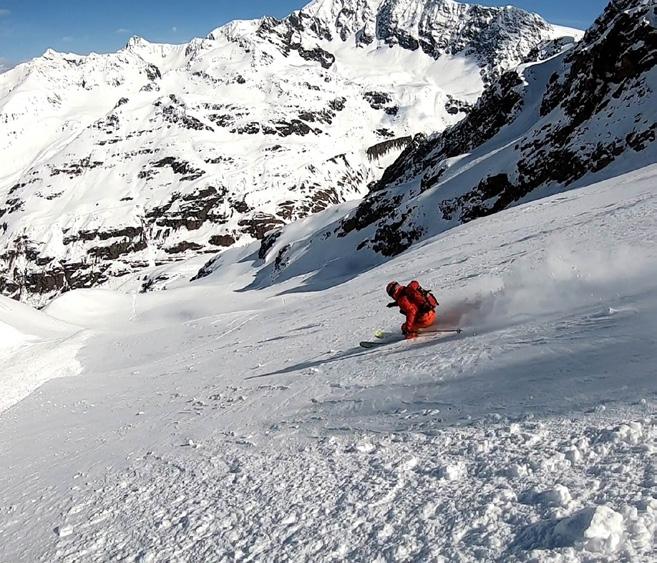
This was followed by a master’s degree in mechanical engineering. His interest in aerospace hit him completely out of the blue about four years ago, through an unsolicited application to the German Aerospace Centre. “I was very lucky that my boss liked my application,” he recalls, as he had no qualifications in the field. “I was already interested in astronomy when I was a young boy. I wanted to know how our universe, our galaxy, actually works.” This was partly due to his father, the well-known climber Reinhard Patscheider, who sadly passed away in an accident when Hagen was only ten years old. “My father always loved looking at the stars.” He had telescopes that little Hagen was also allowed to look through. “I share this fascination with him,” says the 1.86 metre tall South Tyrolean.
Nowadays, the experiences from his racing career come in handy when it comes to his research work as a quality assurance engineer at the German Aerospace Centre in his chosen hometown of Bremen. Having started out as a newcomer, he first had to work his way up. He was part of a team at the German Aerospace Centre, which, in cooperation with colleagues from the French space agency CNES, developed a rover that will one day land on a Martian moon. The Martian Moons Exploration (MMX) is an entirely pioneering mission; there has never before been a landing on the Martian moon “Phobos". The MMX rover will analyse the composition of the soil using a Raman spectrometer. The sample
Auch heute noch steht
Hagen Patscheider gern auf Skiern, gern auch abseits der Piste.
Hagen Patscheider si diverte ancora oggi a sciare, anche fuori pista.
Even today, Hagen Patscheider enjoys skiing, often venturing far from the slopes.
itself will be collected by the mother ship (MMX-Spacecraft). This is the responsibility of the Japanese space agency JAXA. It will then be brought back to earth to gain information about the composition of the moon’s soil for the first time.
This high-tech endeavour appears to have nothing to do with the slopes – at least not at first glance. However, it does have a lot to do with mental challenges. “The job is extremely stressful,” Patscheider explains. A huge amount of expertise and technology is invested in the vehicle, which is about the size of a shoebox. Hagen was the go-to man for problems: If there was a bug somewhere or something wasn’t working, he was the one who stepped in and dealt with the crisis. Refusing to give up when things go wrong, “not allowing yourself to be discouraged,” sticking at it, always giving 100% – these are all qualities that he learnt back when he was a top athlete and that are just as useful now. Other strategies for ranking among the best? “Do something that you absolutely love,” he says after a moment of pondering.
In March, Hagen and his colleagues from Bremen and France took their project, the rover called “Idefix", to the space agency in Japan. The plan is to launch it into space from there using an unmanned rocket. “The rover was a kind of gift to the Japanese, more precisely a scientific contribution to the MMX mission,” Hagen explains. Of course, both sides benefit from this. “We are authorised to fly the rover and to conduct research on Phobos. The rover provides scientific findings and then simultaneously scouts the landing site for the MMX spacecraft.” Now the waiting game begins. The team of around 100 people from the
German and French aerospace centres have done their part. The space launch has been delayed. The first carrier rocket intended for the mission has exploded. “There is only one window of opportunity every two years in which Mars is in a favourable position to fly to,” Hagen points out. That’s why the mission will be launched only in 2026. “We’ll all be on pins and needles again to see if everything goes well,” he says. Yet, he is already more than satisfied. “To have developed this device in just five years is a great success in itself,” he emphasises.
After years of hard work, he is pleased that things are currently a little quieter. And even though he is absolutely ambitious and success-oriented – and new projects are already on the horizon: he is actually a rather laid back guy. “I need this, too. Particularly as a top athlete, you have to be at full throttle at exactly the right time. If I was always doing everything at my threshold, I wouldn’t be able to cope.”
That’s why a relaxed disposition is not a contradiction to being a go-getter downhill skier. “Actually, many of my colleagues are like that,” he muses.
In his free time, he mainly does sports – of course, what else would he be doing? “I need to exercise three to four times a week.” Going to the gym, cycling, and anything else that can be done in Bremen. He also enjoys reading a book from time to time, a favourite genre (fittingly) being science fiction novels. But when he is in South Tyrol, he loves to head out into the mountains: His favourite pastimes are ski touring, mountain biking and road cycling. What about a possible return to South Tyrol as a permanent residence? “I don’t want to rule it out,” he declares. However, because he wants to remain loyal to his line of work, South Tyrol could prove to be a difficult place to live. “But I hope that at some point it will be possible to live closer to home again, making weekend visits worthwhile.” Anyone observing Hagen Patscheider’s career path knows that his dream can definitely become a reality. After all, he knows how to successfully reach for the stars – or the moon – be it from the ski slopes or the space centre.

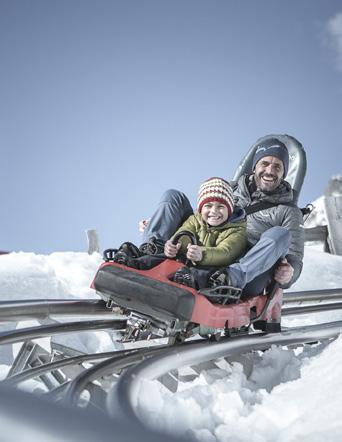
KM WANDERWEGE
KM DI SENTIERI
KM OF HIKING TRAILS


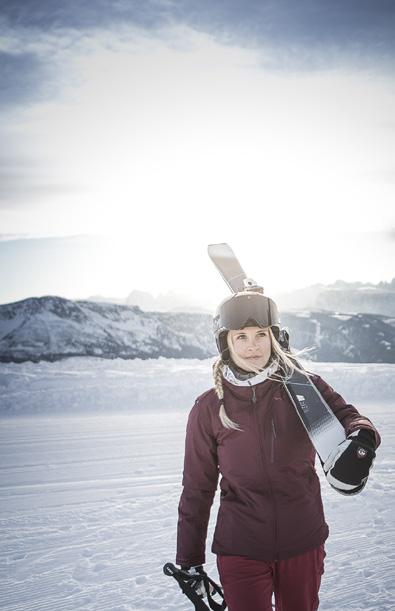
MINUTEN VON DER STADT ENTFERNT, UM DEN BLICKWINKEL ZU VERÄNDERN MINUTI DALLA CITTÀ PER CAMBIARE COMPLETAMENTE LA PROSPETTIVA MINUTES FROM THE CITY TO CHANGE PERSPECTIVE
GENUSSVOLLE SKIABFAHRTEN ABSEITS DES WINTERTRUBELS
PIACEVOLI DISCESE CON GLI SCI, LONTANI DALLA FRENESIA DELL'INVERNO
JOYFUL SKI DESCENDS FAR FROM THE USUAL WINTER HUSTLE AND BUSTLE
2
MOMENTS FOR IN THE VIP GONDOLA WITH CHAMPAGNE AND CANAPÉS
RODELKURS
CORSO DI SLITTINO TOBOGGANING CLASS Jeden Freitag ogni venerdì | every Friday kostenlos | gratuito | free 13.00 – 16.00
Che stoffa la lana! Someone’s always spinning!

Spinnradl steht für hochwertige, maßgeschneiderte Strickjacken aus Südtiroler Bergschafwolle. Was als kleines Projekt begann, hat sich zu einer überregional bekannten Adresse entwickelt – ein Ort, wo Charme und Tradition des Passeiertals lebendig werden. Handwerkskunst und modernes Design schaffen einzigartige sowie funktionale Kleidungsstücke mit Stil. Jeder Schritt, von der Wollverarbeitung bis zur Maßanfertigung, wird mit Engagement und Herzblut in der Werkstätte durchgeführt und zeigt in jedem Stück die Leidenschaft des Teams – ein Versprechen für Qualität und Individualität. Dafür steht auch der Sarner: Die besondere Struktur der Bergschafwolle verleiht der Jacke Langlebigkeit und Widerstandsfähigkeit, wodurch sie eine modische und nachhaltige Investition ist. Das Geschäft im Ortszentrum lädt Besucher ein, das Wollsortiment zu erkunden, die Wollqualität zu erfühlen und sich inspirieren zu lassen, um die eigene Kreativität in die Gestaltung des Unikats einbringen zu lassen.
Spinnradl è sinonimo di capi di maglieria in lana di pecore altoatesine, di alta qualità e

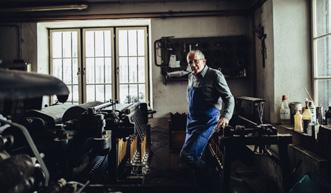

realizzati su misura. Nata come piccola realtà, oggi è un punto di riferimento anche oltre i confini regionali – un luogo in cui la bellezza e la tradizione della Val Passiria prendono vita. Il risultato: capi unici e funzionali, il connubio perfetto tra artigianalità e design moderno. Ogni fase, dalla lavorazione della materia prima alla personalizzazione finale, viene svolta nei laboratori a San Leonardo in Passiria con la massima cura e testimonia la grande dedizione del team. Questa promessa di qualità è rappresentata perfettamente dal tipico Sarner. La tradizionale giacca che, grazie alla particolare e durevole struttura della lana di pecora di montagna di cui è fatta, è molto resistente e rappresenta così un ottimo investimento, sia dal punto di vista ecologico che dello stile. Nel negozio a San Leonardo in Passira è possibile scoprire il vasto assortimento di lana, toccarne con mano la qualità e lasciarsi ispirare per creare il proprio capo unico.
Spinnradl represents high-quality, tailormade cardigans made of South Tyrolean mountain sheep’s wool. What started as a small project has become well-known across many re-
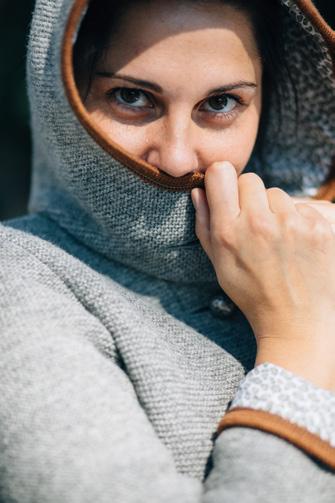
gions – a place, where the Passiria Valley's charm and tradition come alive. Craftsmanship and modern design create unique, functional, and stylish pieces of clothing. Every step, from the wool processing to the tailoring, is executed in the workshops with commitment and dedication, and every piece shows the team’s passion – a promise of quality and individualism. That’s what the Sarner, a knitted sheep’s wool jacket, stands for: each jacket is durable and hard-wearing, due to the mountain sheep’s wool’s special structure, making it a fashionable and sustainable investment. Visitors are invited to come to the store in the village centre to explore the assortment of wool, feel its quality with their hands and be inspired to design their unique jacket in collaboration with the team at Spinnradl.
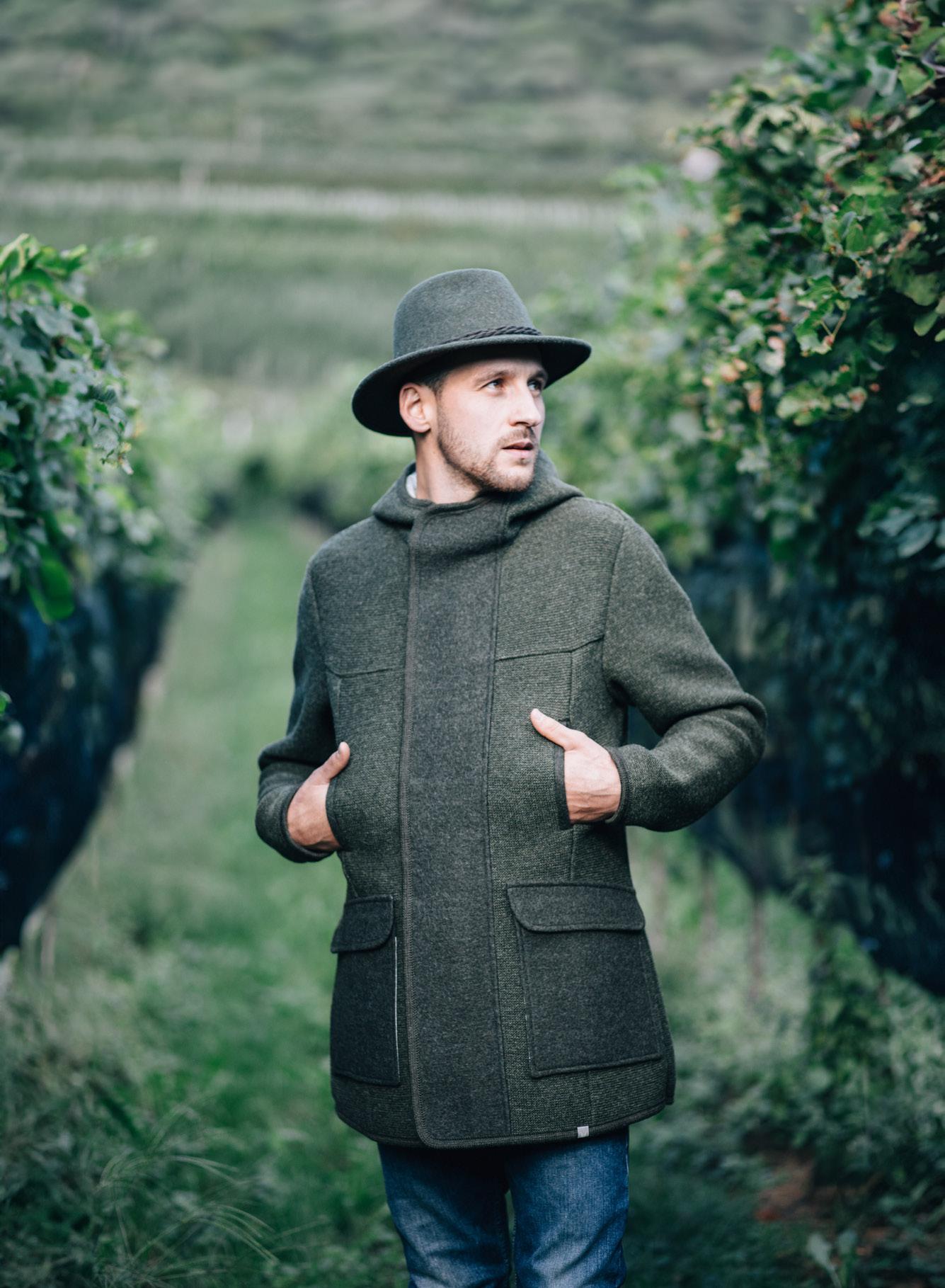

SICHERES ABENTEUER ABSEITS DER PISTE WHEN ADVENTURE MEETS AWARENESS
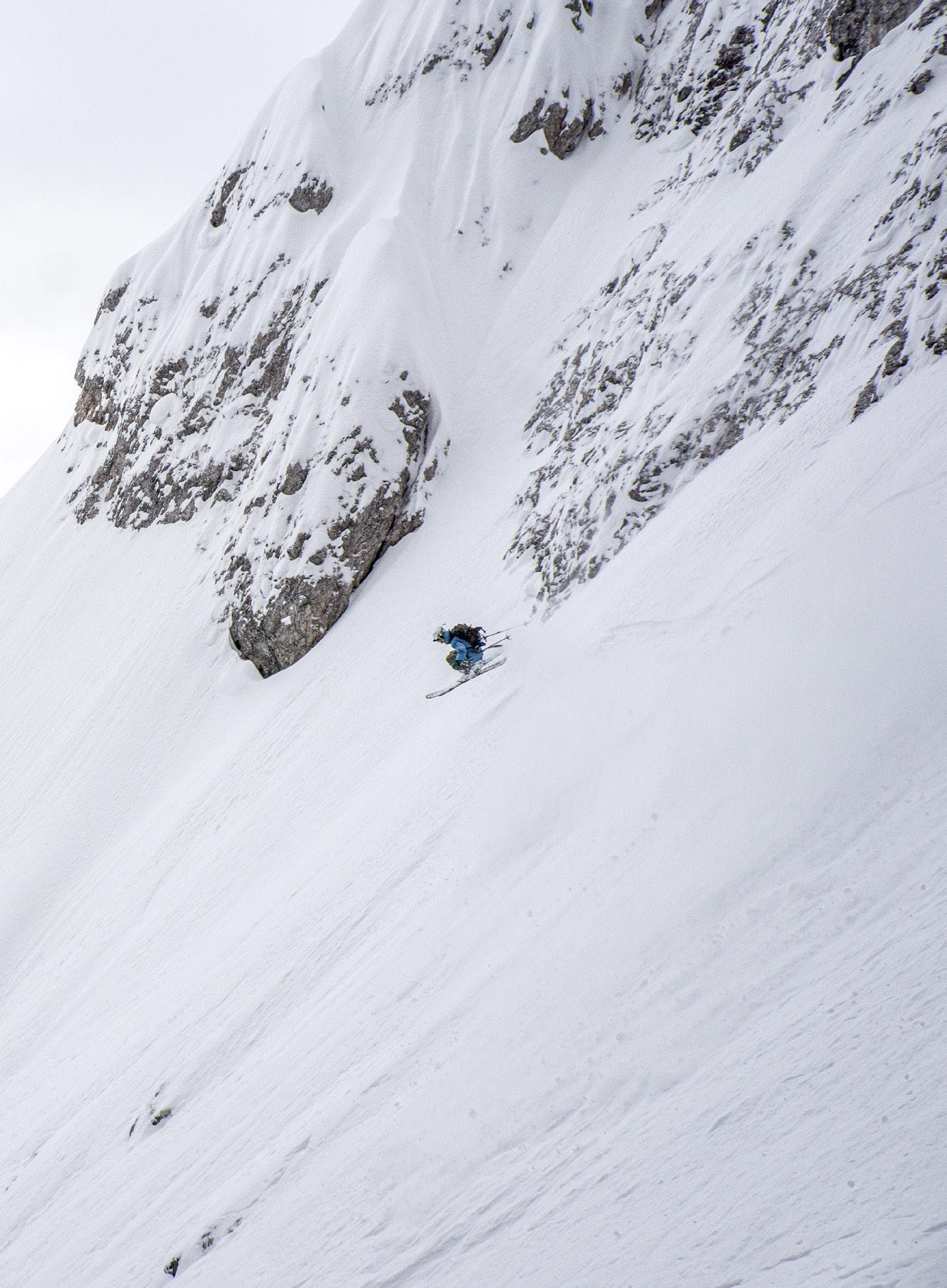
Egal, ob Sie auf oder abseits der Piste Ski fahren oder auf einer Schneeschuhwanderung unterwegs sind: Es gilt, jederzeit Vorsicht vor Lawinen walten zu lassen. Doch trotz möglicher Gefahren in der Natur sollten Sie sich nicht von einem unvergesslichen Abenteuer abhalten lassen, denn Wissen ist oft die beste Strategie gegen Angst.
State sciando fuoripista o facendo un’escursione tra paesaggi innevati e sentite parlare di valanghe? È comprensibile andare sull’attenti e avvertire il desiderio di toccare ferro! Non bisogna però lasciare che il timore di un evento naturale metta fine a strepitose avventure invernali. Perché la conoscenza è spesso la miglior difesa di fronte alla paura.
Imagine you are skiing or on a snow excursion when you hear about avalanches. It’s completely natural to feel a bit uneasy and want to knock on wood! But don’t let fear of this natural phenomenon end your winter adventures. After all, knowledge is the best defence against fear, and understanding avalanches can help you enjoy the snow safely and confidently.
Es ist ein klarer Wintermorgen. Der Himmel verspricht einen wunderschönen Tag. Da ist es nicht überraschend, dass der Wunsch aufkommt, so schnell wie möglich zu einem Freeride-Ausflug inmitten der verschneiten Landschaft aufzubrechen. Wie schön wäre es jetzt, sich in der winterlichen Bergwelt ins Abenteuer zu stürzen und die Landschaft abseits der überfüllten Skipisten zu erkunden? Die Sehnsucht ist groß, doch sind Sie auch bestens vorbereitet? Wir haben uns von zwei Experten erklären lassen, welche Kenntnisse erforderlich sind, um diesen Sport auch sicher auszuüben. Denn die weiße Schneedecke, die uns ins Schwärmen versetzt, birgt auch Gefahren – vor allem, wenn man sie mit Skiern, Schneeschuhen oder zu Fuß betritt. Ein Beispiel hierfür sind Lawinen.
Lawinen sind ein Naturphänomen, das entsteht, wenn sich Schneemassen von einem Berghang lösen und abwärts bewegen. Auf ihrem Weg werden sie immer größer und reißen alles mit, was ihnen begegnet. Jeden Winter schreibt der Schnee je nach klimatischen Bedingungen eine andere Geschichte. Wenn die Temperaturen steigen und das Wetter regnerisch oder windig ist, sollten die Alarmglocken läuten: Durch diese Veränderungen ver-
Verschneite Berge locken zu winterlichen Abenteuern.
Le montagne innevate hanno un fascino innegabile.
The charm of snowcapped mountains is simply irresistible.
lieren die Schneeschichten an Kompaktheit, ihr Gleichgewicht bricht und es kommt zu Setzungen. Die Ursachen können also natürlichen Ursprungs sein, doch es gibt auch künstlich, mittels Sprengstoffdetonationen erzeugte Abgänge. Diese verringern die Gefahr, dass eine Lawine abgeht oder gefährliche Hänge von Skifahrern befahren werden, die selbst eine Lawine auslösen könnten. Im letzten Fall spricht man allgemein von einer „Skifahrerlawine“.
Man kann lernen, mit Lawinen und deren Gefahren umzugehen. Begibt man sich in die Berge, informieren Lawinenbulletins über die mögliche Gefahrenlage. Dahinter stehen zahlreiche Fachleute, die explizit für die Prävention und die Bergrettung zuständig sind. Daniel Battocletti, Lawinenforscher beim Südtiroler Lawinenwarndienst, ist einer von ihnen. Jeden Tag, egal ob werktags oder an Feiertagen, erstellt er zusammen mit seinen Kollegen eine Prognose für den nächsten Tag. Dazu bezieht er die Daten von Beobachtungsstellen und führt häufig auch Erhebungen vor Ort durch. Unterschiedliche Tests und Messungen, wie etwa jene zur Schneedeckenstärke, Temperatur und Dichte, gehören dazu. Eine der vielen Überprüfungsmöglichkeiten ist die Schneesondierung. Wie das Wort schon verrät, dringt eine spezielle Sonde in den Boden ein, um den Schnee zu analysieren, stratigraphisch (d. h. in den verschiedenen Schichten) zu klassifizie-
ren und seine Widerstandsfähigkeit zu messen. Eine andere Methode ist der recht kuriose Blocktest: Dabei wird ein Teil des Schneemantels von der Piste isoliert und durch die Befahrung mit Skiern belastet, wobei eine genaue Handlungsabfolge eingehalten wird.
Damit das Risiko, von einer Lawine überrascht zu werden, möglichst gering bleibt, ist es sinnvoll, sich gut vorzubereiten. Doch wie genau? Neben Daniel haben wir auch mit Matthias Hofer gesprochen. Er ist Bergführer und Ausbilder für angehende Bergretter, Bergführer und Skilehrer. Die Informationen zur aktuellen Lawinengefahr beziehen beide aus den Vorhersagen von lawinen.report (auf regionaler Ebene) oder aineva.it (für den gesamten italienischen Alpenbogen). Seiten wie meteo.report und wetter.provinz.bz.it geben zusätzliche Informationen über die Wetterlage. Doch auch die Aussagen lokaler Bergführer sind wichtig, um alle Details zu den einzelnen Gebieten zu sammeln. „Man muss die Route, die man bestreiten will, genau studieren und auch Alternativen vorbereiten, falls die Bedingungen vor Ort anders sind als erwartet“, ergänzen die beiden. In der Tat ist es notwendig, ständig darauf zu achten, was
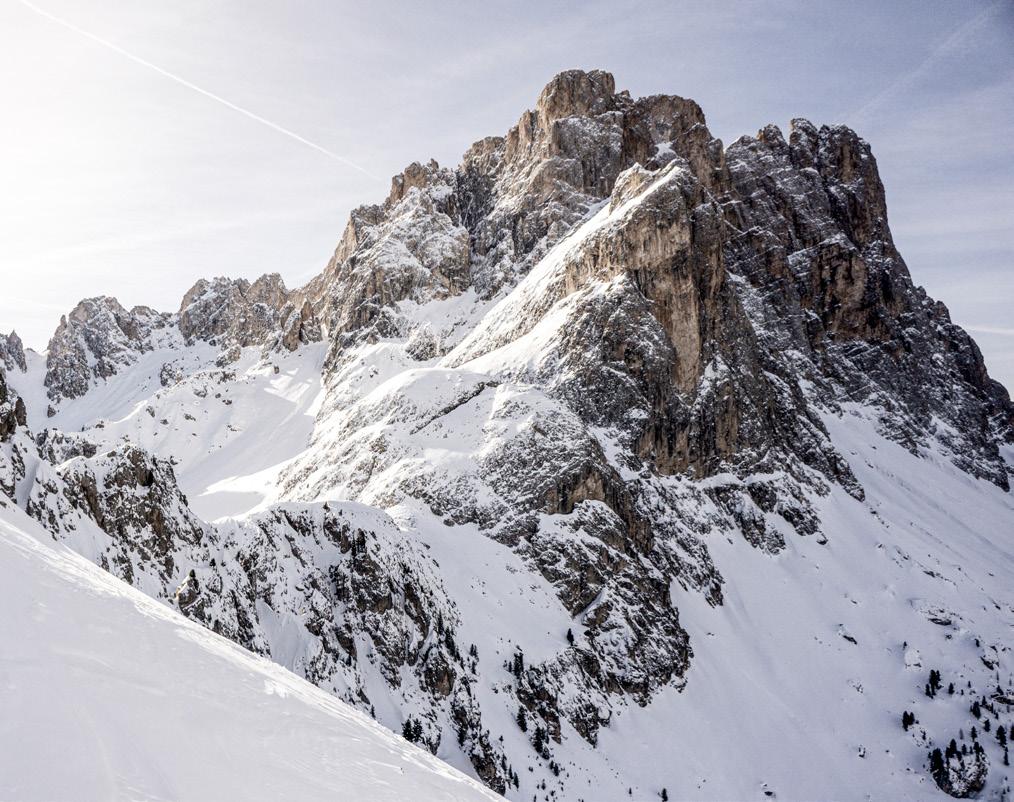
sich unter den Füßen befindet, welchen Weg man einschlägt und wie steil der Hang ist, auf dem man sich bewegt. Es ist auch wichtig, sich vor falschen Mythen zu hüten – wie etwa, dass wenig Schnee oder niedrige Temperaturen eine geringe Gefahr bedeuten oder dass am Morgen weniger Gefahr für Lawinen besteht. Spoiler-Alarm: Das ist nicht immer der Fall.
„MAN WIRD NICHT VON HEUTE AUF MORGEN ZUM SKIBERGSTEIGER ODER FREERIDER: EIN SCHRITTWEISER LERNPROZESS UND EINE MENGE ERFAHRUNG SIND HIERFÜR ERFORDERLICH. AUF DEM WEG IST ES BESONDERS WICHTIG, EINE STARKE URTEILSUND ENTSCHEIDUNGSFÄHIGKEIT ZU ENTWICKELN.“ – DANIEL
Zu den Ausrüstungsgegenständen, die für eine sichere Tour unverzichtbar sind, zählen laut Daniel und Matthias ein am Körper befestigtes LVS-Gerät (Lawinenverschüttetensuchgerät), eine Schaufel, eine Sonde und ein Helm. Die ersten drei gelten verpflichtend laut der südtirol- und italienweiten Sicherheitsregeln für Skipisten, die seit Januar 2022 in Kraft sind. Es geht aber nicht nur darum, das Unverzichtbare im Rucksack zu tragen, sondern auch zu wissen, wie man es einsetzt. Um dies zu lernen, gibt es mehrere kostenlose LVS-Work-
shops in den Bergen. Letztendlich sollte man sich nie alleine auf den Weg machen und sich an die Beschilderung und die Angaben zu den Wegverhältnissen halten. „In den Bergen ist es wichtig, dass man nicht darauf besteht, seinen Weg fortzusetzen, wenn die Verhältnisse ungünstig sind“, betont Matthias.
„Im Laufe der Jahre habe ich Lawinenunfälle selbst miterlebt, die glücklicherweise immer gut ausgegangen sind. Sicherlich war jeder Unfall auf Fehler zurückzuführen. Ich persönlich wurde zweimal von sehr kleinen Lawinen erfasst, aber in beiden Fällen nicht verschüttet“, sagt Matthias. Wenn die Gefahr besteht, mitgerissen zu werden, sollte man laut Zivilschutz zuerst versuchen, den Weg seitlich aus der Lawinenbahn zu finden. Für Matthias' Überleben war es damals entscheidend, dass er mit aller Kraft an der Oberfläche blieb und sich von den Skistöcken befreite – die ebenso wie Skier, das Risiko erhöhen, unter den Schneemassen begraben zu werden – sowie dass er den Airbag-Rucksack aktivierte. Die Ratschläge von jemandem, der seit Jahrzehnten tagtäglich viel Zeit in den Bergen verbringt, sollte man beherzigen. Im schlimmsten aller Fälle kann man versuchen, mit verschränkten Armen vor dem Gesicht eine Atemhöhle zu bilden. Wenn eine andere Person Hilfe braucht, muss man schnell handeln und sich die Stelle einprägen, an der sie möglicherweise in den Schnee gesogen wurde. Sobald es die Situation zulässt,

sollte man mit dem LVS-Gerät systematisch die Ortung beginnen, während man auf die Bergrettung wartet.
Um mit dem Freeriden zu beginnen, braucht es vor allem eines: Achtsamkeit. Darüber hinaus sind eine gute Skifahrtechnik sowie eine gute körperliche Verfassung notwendige Voraussetzungen. Nachdem man sich pflichtgemäß vorbereitet hat, kommt der beste Teil: das Entdecken der unberührten Natur. Wo? In Südtirol gibt es verschiedene Orte, die – wenn die Bedingungen es zulassen – atemberaubende Aussichten und jede Menge aufregende Erlebnisse bieten. Einige Beispiele sind die von Matthias empfohlenen Abfahrten rund um die Sellagruppe, die er als „definitiv fantastisch“ bezeichnet, wie die im Val Lasties und im Mittagstals am Pordoi, die Abfahrten auf der Seiser Alm wie an der Christspitze und der Rosszahnscharte und die Abfahrt von der hinteren Schöntaufspitze am Ortler. Sie alle sind spektakuläre Ziele und, wenn man will, auch mit Unterstützung von qualifizierten Bergführern erreichbar.
Sicherheit geht bei Touren abseits der Piste vor.
Nelle escursioni fuoripista la sicurezza è al primo posto.
Safety comes first when leaving the slopes.
È una serena mattina d’inverno. Il cielo promette una giornata spettacolare. Con queste condizioni, non si può fare a meno di desiderare di essere già fuori nell’incantevole paesaggio innevato nel bel mezzo di una bella gita freeride. Quanta voglia di divertirsi su sentieri diversi dal solito e di esplorare la bellezza dell’ambiente montano invernale allontanandosi dalle piste affollate. L’impazienza di partire all’avventura è proprio tanta, ma si ha la giusta preparazione per farlo? Due esperti ci hanno illustrato le conoscenze necessarie al fine di praticare questo sport in sicurezza. Perché quel mantello bianco che tanto ci fa sognare cela anche dei pericoli e quando ci si addentra nella natura più pura, con gli sci, con le ciaspole o a piedi, ci si espone anche a essi. Un esempio? Le valanghe.
Il termine si riferisce a un fenomeno naturale che si verifica quando una massa di neve si distacca da un pendio montuoso, rotola verso il basso, assume dimensioni sempre maggiori e trascina con sé quanto incontra lungo il suo percorso. Ogni inverno, la neve scrive storie diverse a seconda delle condizioni climatiche; quando le temperature aumentano e il meteo è piovoso o ventoso, dovrebbe perciò suonare un campanello d’allarme: è a causa di
cambiamenti come questi che gli strati di neve sulla montagna perdono compattezza, il loro equilibrio si rompe e si verificano cedimenti. Le cause possono dunque essere naturali, ma ce ne sono anche di artificiali, come il posizionamento di esplosivo con lo scopo di produrre una valanga artificiale e diminuire così il pericolo, o il passaggio di sciatori su un pendio a rischio; in quest’ultimo caso si parla comunemente di “valanga dello sciatore”, uno dei tipi esistenti.
Tuttavia, alle valanghe si può far fronte in maniera consapevole. Per avventurarsi in montagna ci sono dei bollettini che indicano il rischio che se ne verifichino. Dietro alla loro elaborazione c’è il lavoro di numerosi tecnici incaricati precisamente di occuparsi della prevenzione e del soccorso in montagna. Daniel Battocletti, previsore del Servizio Prevenzione Valanghe dell’Alto Adige, è uno di loro e ogni giorno, feriale o festivo che sia, insieme ai suoi colleghi, fa le sue valutazioni per descrivere il pericolo previsto per il giorno successivo. Per farlo, consulta dati provenienti da osservatori ed effettua spesso rilievi sul campo. Questi prevedono diverse prove e misurazioni, come quella di spessore, temperatura e densità del manto nevoso. Esempi di prove sono quella penetrometrica, che, come suggerisce la parola, fa penetrare nel terreno un’apposita sonda per effettuare l’analisi e la classificazione stratigrafica della neve e misurarne la resistenza, e il test del blocco di slittamento, piuttosto curioso. Esso consiste infatti nell’isolare dal pendio una porzione di manto e caricarlo salendoci sopra con gli sci rispettando una precisa sequenza di comportamento.
FREERIDER CONSAPEVOLE
Per ridurre il rischio di essere sorpresi da fenomeni come quello delle valanghe, è quindi bene prepararsi prima di affrontare un’escursione. Ma come esattamente? Oltre che a Daniel, l’abbiamo chiesto a Matthias Hofer, guida alpina e istruttore nel servizio di soccorso alpino, di guida alpina e di formazione per maestri di sci. Ecco le loro fonti di informazione: il bollettino sul sito valanghe.report per conoscere il pericolo di valanghe previsto a scala regionale o aineva.it a livello di arco alpino italiano, i siti meteo.report e meteo.provincia.bz.it per la situazione meteorologica e le guide alpine del posto per avere dettagli a livello locale e informazioni su una singola zona. “Bisogna poi studiare l’itinerario che si vuole affrontare e preparare qualche alternativa nel caso le condizioni in loco fossero diverse da quelle previste”, aggiungono. Infatti, serve fare continua-

mente attenzione a cosa si ha sotto i piedi, alla traccia da seguire e alla ripidità del pendio su cui ci si avventura. Bisogna poi anche diffidare dei falsi miti, ad esempio quello secondo cui la presenza di poca neve o di temperature basse corrisponde a un basso pericolo o quello che sostiene che al mattino il pericolo è minore… Allerta spoiler: non è sempre così!
“NON È POSSIBILE IMPROVVISARSI
SCIALPINISTI O FREERIDER:
SONO NECESSARI UN PROCESSO
GRADUALE DI APPRENDIMENTO E MOLTA ESPERIENZA.
DIVENTANDOLO, POI, È
IMPORTANTISSIMO SVILUPPARE
UNA SPICCATA CAPACITÀ
VALUTATIVA E DECISIONALE.”
– DANIEL
Tra le attrezzature assolutamente indispensabili per affrontare un tour in sicurezza, sia Daniel che Matthias identificano: ARTVA indossata sul corpo, pala, sonda e casco. Le prime tre sono previste anche dalle regole per gli sport invernali entrate in vigore a genna-
io 2022. Ma quello che è indispensabile non è averle con sé, ma saperle usare. Per imparare a farlo, nelle aree di montagna esistono vari campi di addestramento ARTVA gratuiti. Infine, altre accortezze prevedono di non avventurarsi mai da soli e di rispettare la segnaletica e le indicazioni presenti riguardo le condizioni dei percorsi: “In montagna è importante non insistere mai se le condizioni non sono favorevoli”, sottolinea Matthias.
“Negli anni ho assistito personalmente a incidenti legati a valanghe che fortunatamente sono sempre terminati bene; ogni incidente è derivato sicuramente da un errore. Personalmente sono stato travolto due volte da valanghe molto piccole ma non sono stato sepolto”, racconta Matthias. Se il rischio è quello di essere travolti, la prima cosa da fare, a detta della Protezione Civile, è tentare di uscire lateralmente dalla traiettoria di discesa della valanga. Per Matthias è stato fondamentale cercare di rimanere in superficie, liberarsi dalle racchette da sci, che, come gli sci, aumentano il rischio di finire sotto la neve, e attivare lo zaino airbag – e se i consigli arrivano da

chi vive quotidianamente la montagna da decenni, meglio ascoltarli. Nel peggiore dei casi, si può tentare di formare una cavità d’aria per respirare sotto la neve tenendo le braccia piegate di fronte al viso. Se è invece un compagno ad aver bisogno d’aiuto, è essenziale agire in fretta, memorizzare il punto in cui, eventualmente, è stato risucchiato dalla neve e, appena la situazione lo permette, iniziare sistematicamente le ricerche con l’ARTVA in attesa del soccorso alpino.
Per avvicinarsi al freeride serve perciò consapevolezza. In più, una buona tecnica di sciata in pista e una buona condizione fisica sono dei prerequisiti necessari. Ma dopo essersi formati a dovere, arriva la parte migliore: la possibilità di esplorare il fascino della natura incontaminata. Dove? In Alto Adige sono diverse le località che, condizioni permettendo, regalano scorci mozzafiato e forti emozioni. Alcuni esempi sono le discese intorno al Gruppo del
Sella – consigliate da Matthias che le definisce “sicuramente fantastiche” – come quelle della Val Lasties e della Val Mezdì sul Pordoi, quelle sull’Alpe di Siusi come quella della Christspitze e della Forcella Denti di Terrarossa, e la discesa da Cima Beltovo di Dentro sull’Ortles: tutte mete assai spettacolari e, per chi lo desidera, affrontabili anche con il sostegno di guide alpine qualificate.
It's a clear winter morning, and the sky promises a spectacular day. With conditions such as these, it’s impossible not to crave the thrill of being out in the snowy wilderness, enjoying an exhilarating freeride adventure. The desire to carve your own path, far from the crowded slopes, and to explore the stunning winter mountain landscape is simply overwhelming. But are you truly prepared for this adventure? Two experts have outlined the essential knowledge needed to safely enjoy this sport. After all, the pristine white snow that fuels our dreams also conceals dangers, such as avalanches, which we face when skiing, snowshoeing, or hiking in untouched nature.
An avalanche is a natural event in which a mass of snow breaks away from a mountain slope, cascades down rapidly, gains size, and sweeps along everything in its path, including rocks, trees, and debris. Snow tells different stories depending on weather conditions each winter; when temperatures rise, or it gets rainy or windy, caution is advised: these changes can destabilize the layers of snow, leading to sudden collapses. Causes can be natural, such as heavy snowfall or temperature fluctuations, but also artificial, such as the use of explosives to trigger controlled avalanches in order to reduce risks. Or also the movement of skiers on dangerous, unstable slopes – often referred to as a “skier's avalanche."
However, avalanches can be managed with proper knowledge. Before venturing out in the mountains, enthusiasts can consult bulletins that assess avalanche risk, created by technicians dedicated to mountain safety and rescue. One such expert is Daniel Battocletti, an avalanche forecaster for the Avalanche Prevention Service of South Tyrol, who, every day, weekday or holiday, together with his forecasting colleagues, evaluates data from field observers and conducts tests like measuring snowpack thickness, temperature, and density – every day, weekday or holiday. These tests include the penetrometer test, using a probe to classify snow layers and assess resistance, and the sliding block test, in which a snow
section is isolated and loaded by stepping on it with skis following specific protocols.
To minimize the risk of being caught off guard by phenomena such as avalanches, it's crucial to prepare thoroughly before embarking on an excursion. Alongside insights from Daniel, we also consulted Matthias Hofer, an experienced alpine guide and instructor for the Alpine rescue service. He also trains alpine guides and ski instructors. They recommend the following sources of information: the bulletin available on the website valanghe.report to check the avalanche danger forecast on a regional level, or Aineva.it for forecasts covering the Italian Alpine arc. Additionally, the websites meteo.report and meteo.provincia.bz.it provide detailed weather conditions, and consulting local alpine guides is crucial for obtaining specific details, valuable advice, and real-time information about a particular area, ensuring a safer and more informed excursion. “You need to study the itinerary you plan to tackle and prepare several alternative routes in case on-site conditions differ from the forecast,” they emphasize. In practice, it's essential to stay vigilant and constantly monitor the ground under your feet, the track you are following, and the steepness of the slope you are on. It’s also important to avoid falling for common misconceptions, such as believing that little snow or low temperatures automatically equate to low avalanche danger, or the idea that avalanche danger is lower in the morning… Spoiler alert: these assumptions are not always true!
“YOU CANNOT IMPROVISE AS A SKI MOUNTAINEER OR FREERIDER: DEVELOPING YOUR SKILLS REQUIRES A GRADUAL LEARNING PROCESS AND EXTENSIVE EXPERIENCE. IT’S ALSO CRUCIAL TO HONE STRONG EVALUATIVE AND DECISION-MAKING ABILITIES,” DANIEL EXPLAINS.
Both Daniel and Matthias identify certain essential equipment for a safe excursion: ARTVA (Avalanche Transceiver) worn on the body, a shovel, a probe, and a helmet. The first three items have also been mandated by regulations for winter sports that came into effect in January 2022. However, merely possessing these items is not enough; what truly matters is knowing how to use them correctly. To acquire these skills, various free ARTVA training camps are available in mountain regions. Other key safety measures include never going out alo-

ne, adhering to signs and warnings about route conditions, and, as Matthias emphasizes, “In the mountains, it's vital never to push forward if conditions are unfavourable.”
“Over the years, I have witnessed avalanche-related accidents that fortunately all ended without tragedy; but every accident was certainly the result of an error. Personally, I have been caught by very small avalanches twice, but I was not buried,” Matthias adds. In situations where one risks being caught in an avalanche, the Civil Protection advises to first try and move sideways, out of the avalanche’s descent path. From Matthias’s experience, trying to stay on the surface, quickly freeing oneself from ski poles (which, like skis, increase the risk of being dragged under the snow), and activating the AIRBAG backpack were essential actions. When such advice comes from those who live and breathe the mountains daily, it’s wise to heed it.
In the worst-case scenario, if buried, you should try to create an air pocket to breathe by keeping your arms bent in front of your face. On the other hand, if a companion needs help, it is critical to act immediately: memorize the spot where the person was last seen being carried under the snow, and, as soon as possible, begin searching systematically with the ARTVA while waiting for mountain rescue services to arrive.
Choosing the right trail is key to a safe and thrilling journey.
To approach freeriding, a strong sense of awareness is essential. Additionally, having a solid skiing technique on groomed slopes and being in good physical shape are necessary prerequisites. But once you have trained adequately, you can enjoy the most rewarding aspect: the opportunity to explore the unspoiled beauty of nature. And where can you experience this? In South Tyrol, several locations offer breathtaking views and exhilarating experiences, provided that the conditions are favourable.
Matthias recommends some of the descents around the Sella Group, which he describes as “absolutely fantastic.” Notable examples include the descents of the Lasties and Mezdì on Pordoi Valleys, which are known for their dramatic landscapes. Other incredible routes can be found on the Alpe di Siusi, such as the Christspitze and Forcella Denti di Terrarossa descents, both offering stunning scenery. Another spectacular option is the descent from Cima Beltovo di Dentro on the Ortles, a thrilling and visually striking route. All these destinations are renowned for their beauty and can be enjoyed with the guidance and support of qualified mountain guides for those who seek an extra layer of safety and expertise.
STUFE | LIVELLO | LEVEL 1
Grün, geringe Gefahr
Colore verde, rischio debole
Green colour, low risk
Allgemein sichere Bedingungen, achten Sie dennoch auf die Umgebung. Condizioni generalmente sicure, ma attenzione comunque ai propri dintorni. Generally safe conditions, but pay attention to your surroundings.
STUFE | LIVELLO | LEVEL 2
Gelb, mäßiges Risiko
Colore giallo, rischio moderato
Yellow colour, moderate risk
Günstige Bedingungen. Doch Vorsicht auf den Routen, wählen Sie diese mit Bedacht. Condizioni favorevoli, ma attenzione alla traccia; itinerario da scegliere con cura. Favourable conditions, but pay attention to the track; choose itinerary carefully.
STUFE | LIVELLO | LEVEL 3
Orange, erhebliche Gefahr
Colore arancione, rischio marcato
Orange colour, marked risk
Begrenzte Tourenmöglichkeiten.
Vorsicht an Hängen, meiden Sie Steilhänge. Possibilità di escursionismo limitata. Attenzione ai versanti; pendii ripidi da evitare. Limited ski-tour possibilities. Pay attention to the slopes; avoid steep slopes.
STUFE | LIVELLO | LEVEL 4
Rot, große Gefahr
Colore rosso, rischio forte
Red colour, high risk
Tourenmöglichkeiten stark eingeschränkt.
Seien Sie in allen Bereichen aufmerksam.
Possibilità di escursionismo fortemente limitata. Attenzione a tutte le aree.
Highly limited ski-tour possibilities. Pay attention to all areas.
STUFE | LIVELLO | LEVEL 5
Rot und schwarz, sehr große Gefahr Colore rosso e nero, rischio molto forte
Red and black colour, very high risk
Verzichten Sie auf sportliche Aktivitäten und beachten Sie die Absperrungen.
Rinunciare alle attività sportive e rispettare gli sbarramenti.
Avoid sports activities and respect barriers.


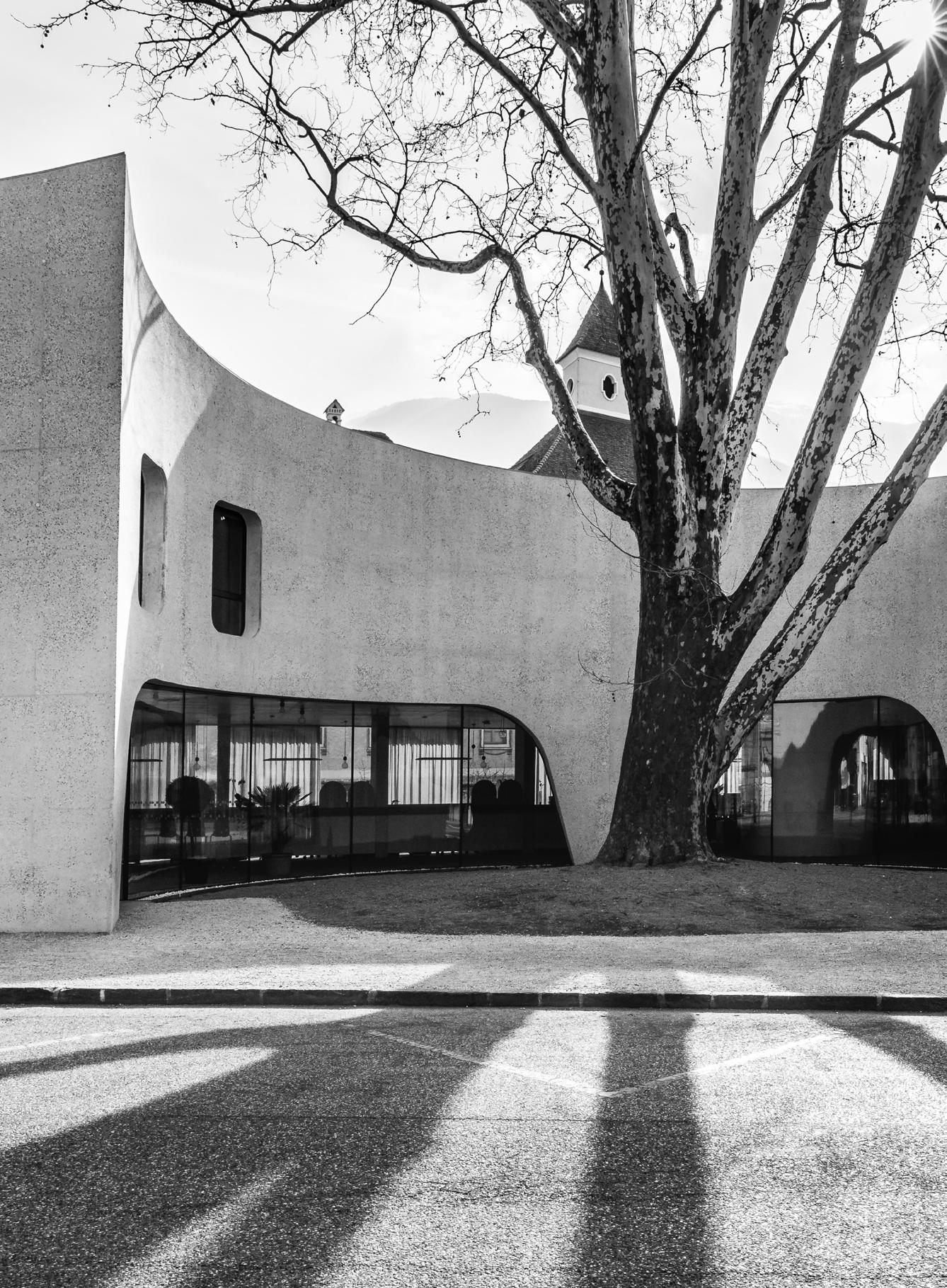
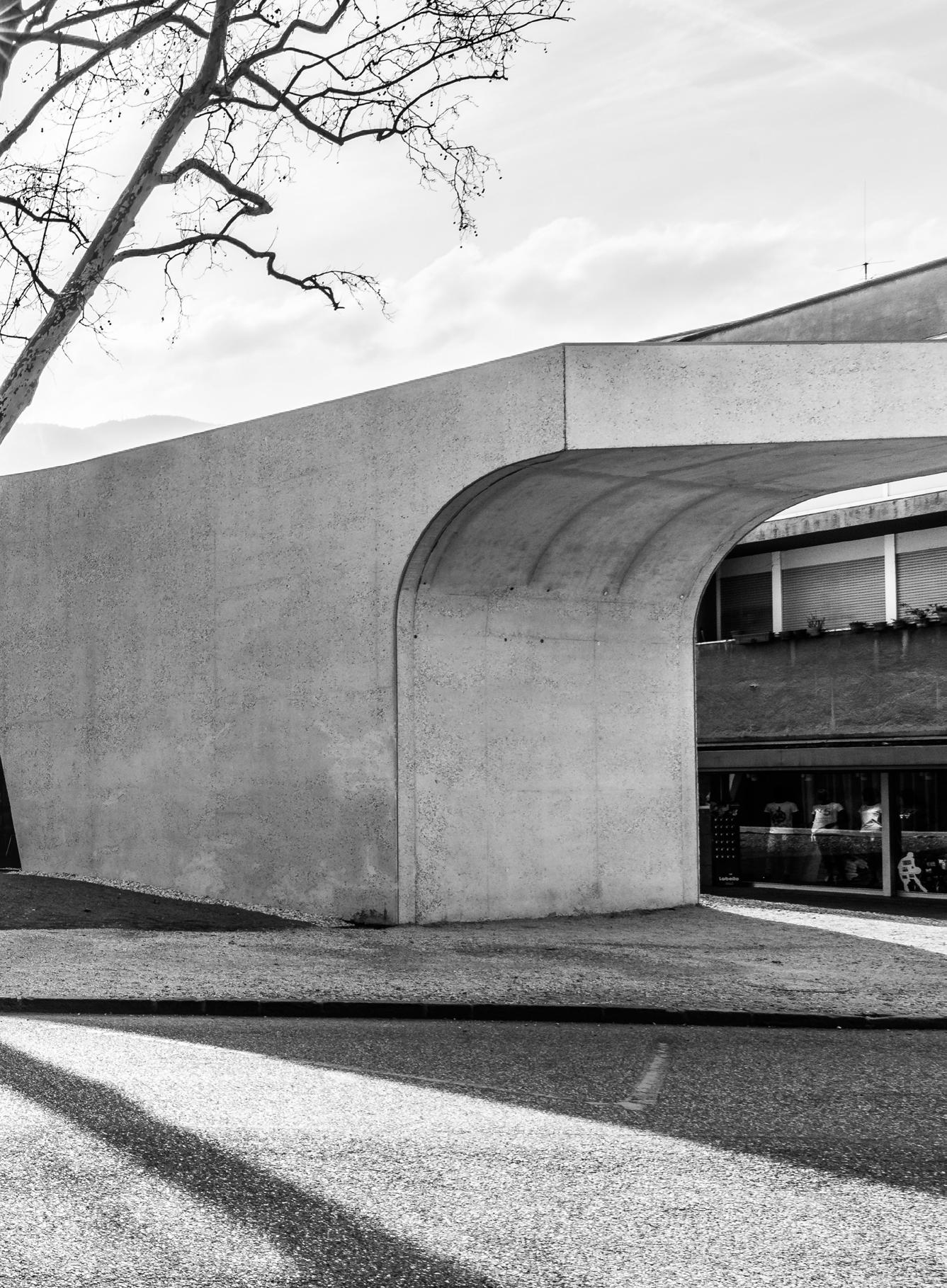
Bis heute wird die zeitgenössische Architektur in Südtirol mitunter von den Bergen beeinflusst. Wir verabschieden uns zwar in Teilen vom Satteldach und verbinden Holzbau mit Beton und Glas, doch wirft auch bei urbanem Design ein guter Planer stets einen Blick in die Landschaft, die ihn umgibt. Wie sich also städtisch modern dennoch gekonnt in die alpine Welt einfügt, zeigen wir Ihnen in dieser Architekturcollage.
In Alto Adige, l’architettura contemporanea continua a essere influenzata dalle montagne, anche se, progressivamente, si abbandonano i tradizionali tetti a due falde. Le costruzioni in legno si integrano a cemento e vetro e si tiene in conto il paesaggio, specialmente nella pianificazione urbana. Di seguito vi mostriamo come edifici moderni possano inserirsi perfettamente nell’ambiente alpino.
To this day, contemporary architecture in South Tyrol is influenced by the mountains, among other things. Though we are shifting away from gable roofs and combining woodwork with concrete and glass, when creating an urban design, a good planner will always consider the surrounding landscape. In this architecture collage, we will show you how modern urban design skilfully blends with the Alpine world.

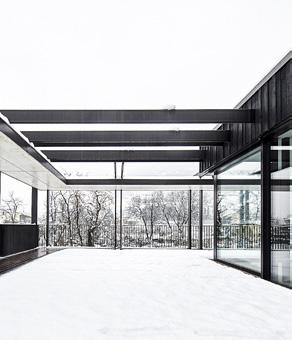
BUILT: 2022
PLANNED BY: POHL IMMOBILIEN
DELUGAN MEISSL
ASSOCIATED ARCHITECTS – DMAA
ANTONIANUM MERAN – MERANO
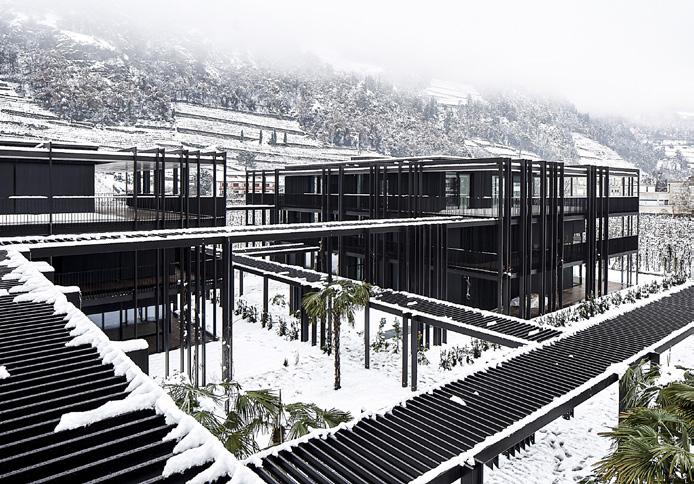
RITORNO ALLA NATURA IN CITTÀ
NATURE IN THE CITY
Mit seinem markanten Aussehen, der natürlichen Umgebung und den Palmen entspricht das Antonianum von Roman Delugan allem, wofür die Kurstadt Meran steht. Das einzigartige Design mit dunklen Stahlträgern in Verbindung mit viel Holz lässt auf den ersten Blick nicht vermuten, dass es sich dabei um ein Mehrfamilienhaus handelt. Es ist eine Oase im Herzen der Stadt, die ihren Bewohnern einen Rückzugsort bietet, in dem sie ungestört Zeit drinnen und draußen verbringen können. Die Lage macht möglich, dass sich für die Menschen ein perfekter Mix zwischen
städtischem Lifestyle und natürlichem Ambiente ergibt. So schön kann Wohnen am Fuße der Berge sein.
Con il suo aspetto iconico, la natura tutt’attorno e le palme, l’Antonianum di Roman Delugan rispecchia tutte le caratteristiche principali della città termale di Merano. L’armoniosa fusione di travi in acciaio scuro e molti elementi lignei rende quasi impossibile credere che questo complesso dal design unico sia davvero un condominio. Esso è un’oasi nel cuore della città, un vero e proprio
santuario in cui i residenti si possono riposare indisturbati, sia all’interno che all’esterno dell’edificio. Inoltre, la posizione permette di godere di un mix perfetto tra la frizzante vita cittadina e la calma della natura, rendendo la vita ai piedi delle montagne davvero meravigliosa.
Its prominent look, its natural surroundings and the surrounding palm trees give Roman Delugan’s Antonianum all the aspects the spa town of Merano is known for. Based on its unique design with dark steel girders combined with a lot of wood, at first glance one wouldn’t expect this to be an apartment building. It’s an oasis in the centre of town that offers its residents a haven in which they can spend undisturbed time indoors and outdoors. The location allows for a perfect mix of city lifestyle and natural ambience. Oh, how beautiful life at the foot of the mountains can be.


BUILT: 2010 PLANNED BY: WERNER TSCHOLL
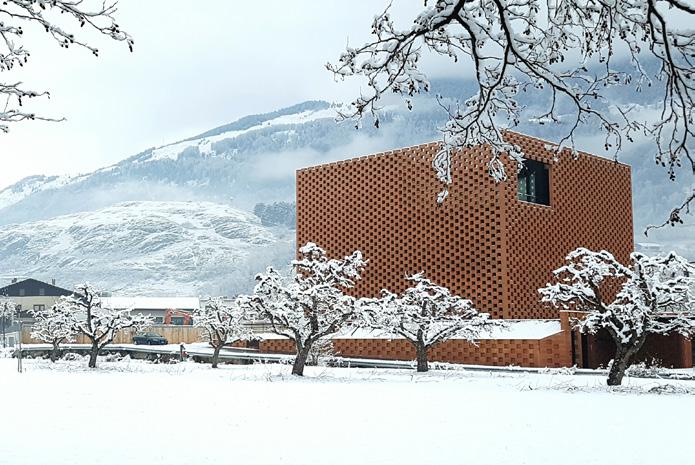
GOCCE PREZIOSE, STRUTTURE NOBILI CONSTANT AND NOBLE DROPS HIDDEN IN STONE
In der Nähe von Glurns, der kleinsten Stadt Südtirols, findet sich mit dem vom Architekten Werner Tscholl entworfenen Puni-Kubus ein auffälliger Beweis für die Verbindung von Tradition und Moderne. Das Muster an der Außenfassade soll an die traditionelle Bauweise von typischen Scheunenfenstern in der Alpenregion erinnern. Im Inneren verschmilzt dieses architektonisch durchdachte Element mit moderner Wissenschaft und den Kupferbrennblasen eingebettet in einen trendigen Industrial-Look. Der
rund 13x13 m hohe Kubus beherbergt die gesamte Produktionsanlage der einzigen Whiskydistillerie in Südtirol sowie das Visitor Centre und den Puni Shop.
Nei pressi di Glorenza, la città più piccola dell’Alto Adige, si erge il Puni-Kubus. Quest’opera progettata dall’architetto Werner Tscholl è un esempio emblematico della fusione di tradizione e modernità. Il motivo dell’involucro esterno richiama lo stile tradizionale delle finestre dei tipici fienili delle regioni alpine.
All’interno, questo capolavoro architettonico attentamente studiato si fonde con la moderna scienza della distillazione e con gli alambicchi di rame, inseriti in un design industriale che fa tendenza. Il cubo, di circa 13x13 m, ospita l’impianto produttivo dell’unica distilleria di whisky in Alto Adige, oltre al Visitor Centre e al Puni Shop.
Near Glorenza, the smallest city in South Tyrol, the Puni cube, designed by architect Werner Tscholl, offers striking evidence of the connection between tradition and innovation. The pattern on its façade resembles the traditional design of traditional barn windows in the Alpine region. On the inside, this sophisticated architectural element merges with high-tech gear and brass stills to create a trendy industrial look. The approximately 13x13 m high cube is home to South Tyrol’s only whiskey distillery, as well as its visitor centre and the Puni shop.


BUILT: 2019
PLANNED BY: MODUS ARCHITECTS
SANDY ATTIA-MATTEO SCAGNOL
TREEHUGGER
BRIXEN – BRESSANONE

UN ALBERO DA PROTEGGERE ODE TO A TREE
Die jahrzehntealte Platane sollte bleiben und so formte sich aus dem Erfindergeist von MoDus Architects ein komplexes Bauwerk in scharriertem Sichtbeton, welches gewissermaßen den Baum „umarmt“. Diese interessante Formgebung macht das Bauwerk aber nicht nur von außen spannend: Durch die Transparenz im Parterre können Besucher und Vorbeigehende ihren Blick durch das Gebäude von einer Seite des Platzes zur anderen schweifen lassen und erleben so das gesamte
Projekt auf besondere Weise. Im Inneren des Gebäudes befinden sich die Büros der Tourismusinformation der Stadt Brixen.
Dall’unione dell’assoluta necessità di preservare il platano secolare e il genio inventivo di MoDus Architects, è nato un complesso architettonico in calcestruzzo bocciardato che si avvolge tutt’attorno all’albero, quasi abbracciandolo. Grazie alla sua forma distintiva, l’edificio è assai suggestivo non solo dall’esterno: di
fatto, le vetrate del piano terra permettono a visitatori e passanti di far vagare lo sguardo attraverso la struttura, passando da un lato all’altro della piazza, vivendo così l’intero progetto in modo unico. All’interno si trovano gli uffici dell’ente turistico della città di Bressanone.
The old plane tree was to be preserved, leading the inventive geniuses behind MoDus Architects to create this complex construction made of scratched exposed concrete that appears to be “hugging” the tree. Its interesting shape makes the building fascinating on the inside and out. Being transparent on the ground floor, visitors and passers-by can look through the building from one side of the square to the other and experience the entire project in a special way. The tourist infomation center's offices of Bressanone are located inside the building.

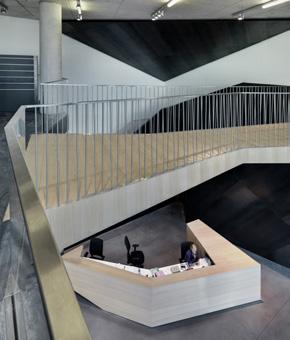
BUILT: 2011
PLANNED BY: STUDIO CINO ZUCCHI
ARCHITETTI & PARK ASSOCIATI
SALEWA HEADQUARTERS BOZEN – BOLZANO
WWW.SALEWA.IT

Imposant und doch mit einer gewissen Anmut begrüßen die Salewa Headquarters im Süden von Bozen Ankommende aus allen Richtungen. Das von Cino Zucchi Architetti und Park Associati geplante Gebäude liegt wie ein Bergkristall im Talkessel und fügt sich in die Landschaft ein. Diese spiegelt sich in der besonderen Fassade, wodurch das Bauwerk und die Bergwelt miteinander verschmelzen. Der gesamte Gebäudekomplex beinhaltet Büros, einen Showroom und Geschäftsräume,
ein Fitnesszentrum, einen Kinderhort für den Nachwuchs der Mitarbeiter sowie ein Kletterzentrum, das auch für die Besucher des Headquarters zugänglich ist.
Imponente e al contempo armonioso, il quartier generale di Salewa, a Bolzano sud, accoglie i visitatori che arrivano in città da ogni dove. L’edifico progettato da Cino Zucchi Architetti e Park Associati si erge come un cristallo alpino nel cuore della vallata, in-
tegrandosi armoniosamente con il paesaggio circostante. Le peculiari caratteristiche della facciata rispecchiano l’unione tra il design e il mondo montano. Il complesso è sede di uffici, uno showroom e spazi commerciali, un centro fitness, un asilo nido per i figli dei dipendenti e una palestra di arrampicata aperta a tutti.
The Salewa Headquarters in Bolzano Sud welcome people arriving from all directions with their impressive and graceful design. The building, designed by architects at Cino Zucchi Architetti and Park Associati, is situated in the valley basin like a mountain crystal and blends in with the landscape. Its special façade reflects the landscape, allowing the fusion of the building and the surrounding mountains. The entire building is home to offices, a showroom, shops, a fitness centre, a daycare centre for employees’ children, and also a climbing centre that is also open to visitors.
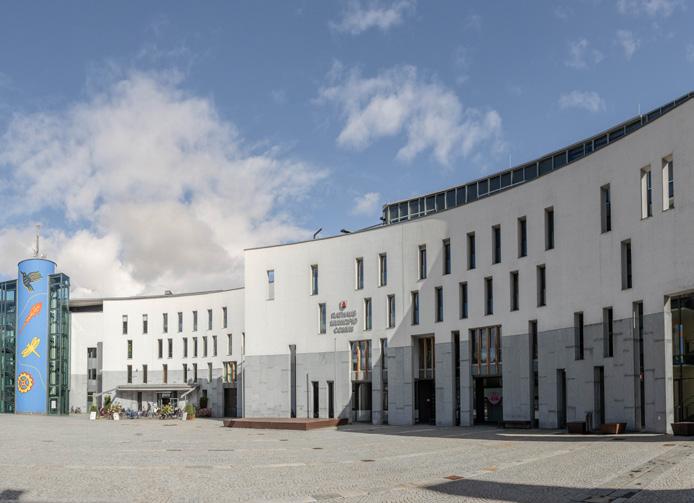
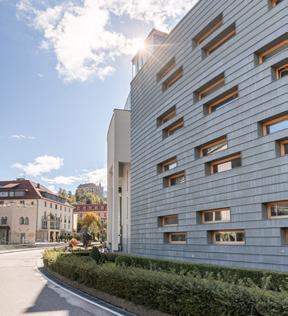
BUILT: 2004
PLANNED BY: ABRAM&SCHNABL
CITY HALL
BRUNECK – BRUNICO
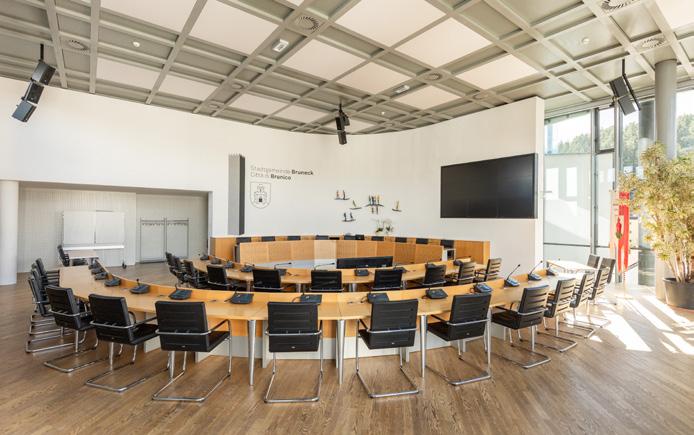
UN SIMBOLO DI TRASPARENZA
FANNED-OUT COUNSIL
Fast wie einzelne Buchseiten, die sich im Wind umblättern, schwingt sich das Rathaus im Brunecker Stadtzentrum über den Platz. Der gebogene Grundriss nimmt den Verlauf der Europastraße auf und damit eine der typischen städtebaulichen Bewegungen in Bruneck, nämlich die Biegung der Rienz. Gegenüber der ebenso typisch weißen Verputzung steht der verglaste, hohe und lichtdurchflutete Ratssaal. Das Herzstück des Gebäudes ist weithin über den Platz sichtbar und als Ort der Entscheidungen erkennbar: Die Bürger sollen wissen, wo ihre Vertreter debattieren. Die Architekten von Abram&Schnabl haben es mit
diesem Gebäude geschafft, Kontrolle, Transparenz, hohe Effizienz in der technologischen Ausstattung und eine besondere Architektur in Einklang zu bringen.
Come vele che si spiegano al vento, il municipio di Brunico si slancia sopra la piazza centrale. Il progetto segue la curvatura di via Europa, riprendendo uno dei movimenti urbani tipici della città: l’ansa della Rienza. Le vetrate della camera del consiglio comunale, molto alta e altrettanto luminosa, si contrappongono al consueto intonaco bianco. La sala, che è il cuore del complesso, è visibile da lontano e riconoscibi-
le come il luogo delle decisioni, simbolicamente permettendo ai cittadini di sapere dove dibattono i loro rappresentanti. Gli architetti di Abram&Schnabl hanno saputo abilmente coniugare funzionalità, trasparenza, elevata efficienza tecnologica e un design unico.
Brunico’s town hall swings across the square in the town centre like the pages of a book turning in the wind. The curved outline follows the Via Europa road and, therefore, also one of Brunico’s urbanistic movements, the blend of the River Rienza. On the other side of the typical white plaster stands the glazed, tall, and well-lit council hall. The building’s centrepiece is visible across the square and recognisable as the place in which decisions are made. Residents should know where their representatives debate. The architects at Abram&Schnabl managed to achieve harmony between control, transparency, highly efficient technological equipment and unique architecture in one building.

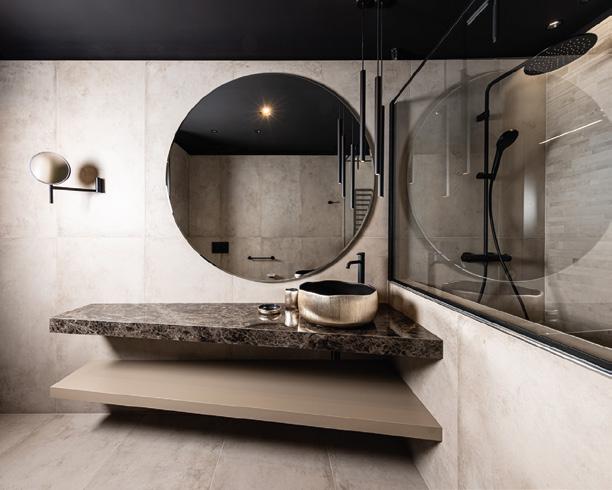
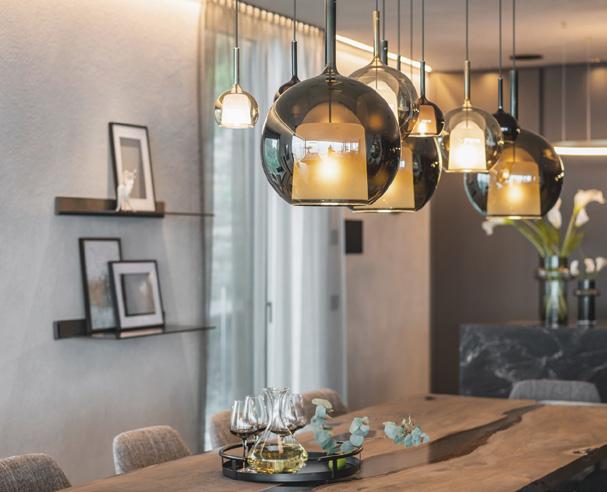
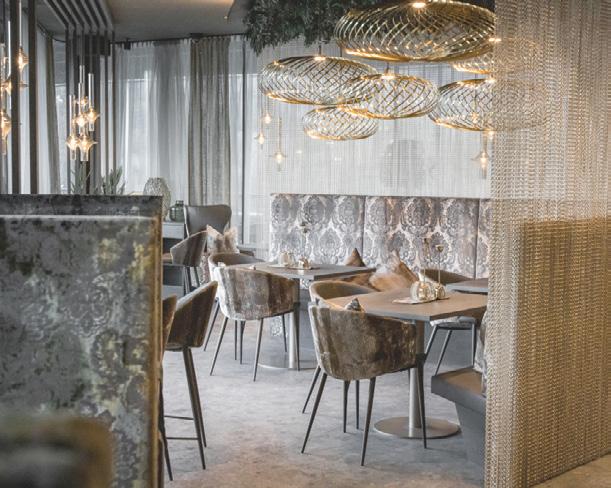

Tutto sotto lo stesso tetto: l’Interior Tower
All in one place – the Interior Tower
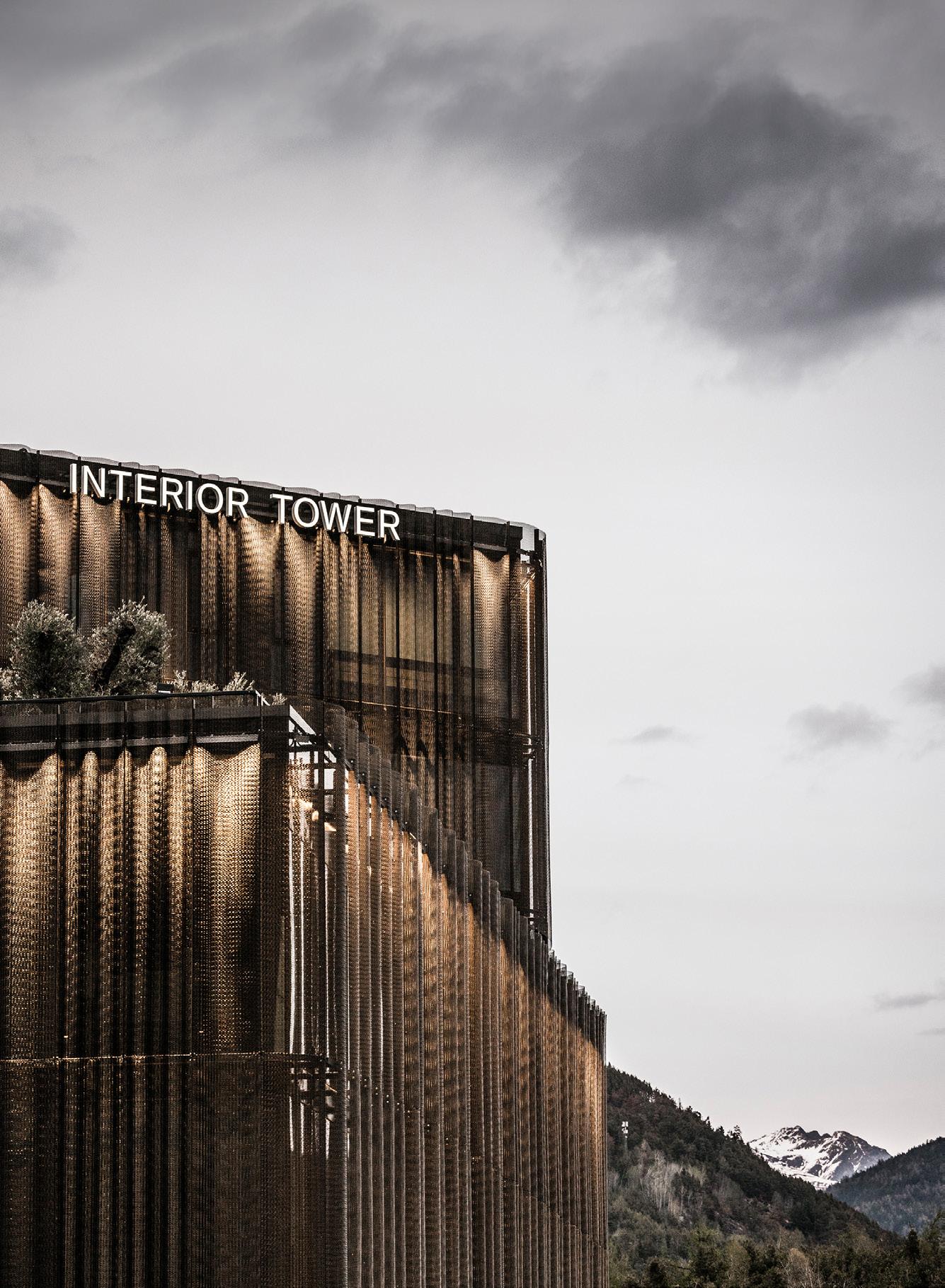
Sie sehnen sich nach einer Neugestaltung, planen Ihren Bestand zu renovieren oder wollen sich den Traum eines Eigenheims erfüllen? Ob es um individuelle Lösungen für Ihr Business oder die Einrichtung Ihrer privaten Räume geht: Der Interior Tower vereint namhafte Südtiroler Anbieter aus der Innenausbau- und Einrichtungsbranche – räumlich getrennt und doch verbunden, wodurch Sie Zeit sparen und dennoch höchste Qualität genießen. Durch seine durchdachte Architektur bietet der Interior Tower stimmige Komplettlösungen fürs Bauen und Wohnen. Steurer Interior Living Design erwartet Sie mit der maßgeschneiderten Planung und Gestaltung Ihrer Wohnräume inklusive Einrichtung. Die Innerhofer AG überzeugt als zuverlässiger Bad- und Sanitärexperte sowie mit großer Auswahl an Fliesen und Böden. Selectra bietet die passende Beleuchtung und gleichzeitig den Weg zur smarten Lösung für das Zuhause von morgen. Individuelle Lösungen für Fenster, Türen und rahmenlose Verglasungen, umgesetzt mit höchster Präzision, warten bei Tip Top Fenster. Und um die perfekte Traumimmobilie zu finden, sind Sie bei K&H Immobilien KG genau richtig. Lassen Sie sich also von bestens geschulten und erfahrenen Beratern durch die verschiedenen Showrooms führen und vergleichen Sie in aller Ruhe Farben, Formen, Materialien und Designs. Durch eine kompetente Analyse wird Ihr Stil erarbeitet und im Anschluss auf Ihre Bedürfnisse abgestimmt. Ihr Wohnraum wird am Ende eine Symbiose aus hochwertigen Produkten in modernem Design sein und genau jene Stimmung erzeugen, nach der Sie sich in Ihrem Zuhause sehnen. Lassen Sie die Eindrücke Revue passieren bei einem Aperitif oder einem gemütlichen Essen im hauseigenen Restaurant & Bar Tower Garden mit großer Panoramaterrasse.
State pianificando un restyling, la ristrutturazione di un edificio esistente o una casa tutta vostra? Che sia per spazi di lavoro o ambienti privati, l’Interior Tower è l’indirizzo giusto dove trovare soluzioni su misura. Qui, infatti, sono riunite le più rinomate aziende di interior design e arredamento – ognuna per sé eppure tutte sotto lo stesso tetto, così da garantirvi la migliore qualità in un unico luogo e farvi risparmiare tempo.



Con la sua architettura studiata ad hoc, dunque, l’Interior Tower offre tutto quello che serve per progettare, costruire e arredare. Lo studio Steurer Interior Living Design vi aiuta a creare un concetto abitativo personalizzato e completo, compresa la realizzazione di mobili. Innerhofer è il punto di riferimento in quanto a bagno e impianti idrotermosanitari, offrendo inoltre un vasto assortimento di piastrelle e pavimenti. Selectra sceglie con voi l’illuminazione giusta così come eventuali automazioni per una casa smart, mentre per quanto riguarda finestre, serramenti e vetrature, anche su misura, Tip Top Fenster assicura la massima precisione. Per cercare l’immobile dei vostri sogni, invece, rivolgetevi a K&H Immobilien KG. Lasciatevi condurre attraverso i vari showroom dai consulenti qualificati e confrontate in tutta calma colori, forme, materiali e design. Sulla base delle vostre preferenze, verrà poi elabora-


to con competenza uno stile adatto alle vostre esigenze. Alla fine, i vostri ambienti saranno una simbiosi tra design moderno e prodotti di alta gamma, la quale darà vita a quell’atmosfera che avete sempre desiderato. In più, dopo le varie visite, potete gustarvi un ottimo aperitivo o lasciarvi deliziare dalle proposte culinarie del ristorante e bar Tower Garden, con ampia terrazza panoramica.
Are you longing for a redesign, planning to renovate your existing home or want to fulfil your dream of owning your own home?
Regardless of whether you are looking for customised solutions for your business or furnishing your private spaces: the Interior Tower is home to renowned South Tyrolean suppliers from the interior design and furnishing industry. Although they are physically separated, they are still connected,
which saves you time and allows you to enjoy the highest quality. Thanks to its well thought-out architecture, the Interior Tower offers harmonious complete solutions for building and living. Steurer Interior Living Design is waiting for you with tailor-made planning and design for your living spaces, including furnishings. Innerhofer AG is a reliable bathroom and sanitary expert with a large selection of tiles and flooring. Selectra offers the perfect lighting and at the same time the path to a smart solution for the home of tomorrow. Personalised solutions for windows, doors and frameless panes, implemented with the utmost precision, can be found at Tip Top Fenster. And to find the ideal dream property, look no further than K&H Immobilien KG. Allow our highly trained and experienced consultants to guide you through the various showrooms. Take your time to compare colours, shapes, materials and designs. Your style will be analysed competently and then tailored to your needs. The result will be a symbiosis of high-quality products in a modern design, creating exactly the atmosphere you long for in your home. Review your impressions while enjoying an aperitif or a cosy meal in the on-site Tower Garden Restaurant & Bar with its large panoramic terrace.
www.interior-tower.com

Sich eine detailgenaue Nachbildung der Lieblingsberge oder eines geliebten Kindheitsortes als Miniaturmöbelstück ins Wohnzimmer holen und in seiner ganzen Pracht bestaunen: Das innovative Startup Dolomitisch lässt diesen Traum wahr werden. Davon zeugt schon der Name des Bozner Unternehmens, der sich aus den Begriffen „Dolomiten“ und „Tisch“ zusammensetzt und einen mythisch anhauchenden Klang enthält. Ziel ist es, die majestätische Berglandschaft einzufangen und dabei modernes Design, innovative Technologien, raffinierte Handwerkskunst sowie nicht zuletzt ökologische Verantwortung miteinan-
der zu verbinden. Das Ergebnis sind außergewöhnliche topografische Möbelstücke für all jene, die nicht nur Einrichtungsgegenstände suchen, sondern auch ein künstlerisches Erlebnis für die Sinne.
Die Topografie und Eigenschaften eines Berges in ein Möbelstück zu verwandeln, bedeutet auch, seine Geschichte und Ausstrahlung in die Wohnräume zu tragen und somit eine tiefgehende Verbindung zur Natur zu schaf-
fen. Die Wahl der Berglandschaft, des Materials, der Ausführung und der Größe trifft der Kunde selbst, so dass ein wahrhaft einzigartiges und individuelles Werk entsteht. Das gewünschte Profil wird bis ins kleinste Detail von einem Satellitenlaser gescannt und anschließend dreidimensional mit CNC-Maschinen in Massivholz gefräst; dadurch können die Formen mit einer unvergleichlichen Präzision nachgebildet werden. Bergkämme und Gebirgstäler werden im Holz zum Leben erweckt und im nächsten Schritt in ein elegantes Möbelstück integriert. Somit entsteht eine funktionale Skulptur, die zum Highlight jeglicher Umgebung wird.

Den Gründern Luca Da Ros, Walter Capovilla, Daniele Da Re und dem Designer Riccardo Vendramin liegt aber nicht nur die Ästhetik der Möbelstücke am Herzen, sondern auch der ethische Aspekt. Allen voran ist es Da Ros, Forscher der Waldökologie an der freien Universität Bozen, der das Unternehmen in Sachen nachhaltige Produktion leitet. Die Materialien stammen ausschließlich aus zertifizierten und kurzen Lieferketten, wobei besonderes Augenmerk auf die Verwertung von Unwetter-Holz gelegt wird, wie jenes des Sturms Vaia, der 2018 große Waldgebiete in den Dolomiten verwüstete. Darüber hinaus prüft das Start-up Möglichkeiten, aktiv zu Aufforstungsprojekten, zum Beispiel im Gadertal, beizutragen.
Das Unternehmen selbst könnte man als „Gipfelstürmer“ bezeichnen: Nur zwei Jahre nach der Gründung wurden die Werke bereits in zahlreichen renommierten italienischen und internationalen Galerien ausgestellt, darunter die Galerie Rossana Orlandi in Mailand, die Kunstgalerie Porto Cervo, die Vail International Gallery in Colorado (USA) sowie die Galerie Philia in Genf, Singapur, New York und Mexiko-Stadt. Außerdem nahm Dolomitisch an hochrangigen Branchenevents wie der Mailänder Möbelmesse teil. Das Startup produziert eine weite Bandbreite an Möbelstücken für verschiedene Verwendungszwecke wie Tische in verschiedenen Größen, Nachttische, Spiegel und Regale – auch in
Kombination mit hochwertigen Metallen und gehärtetem Glas. Neben direkten Anfragen ist es auch möglich, die Werke über die Onlineplattform für italienisches Luxusdesign Artemest zu erwerben.
Wenn Sie Ihre Wohnräume mit unvergleichlich eleganten Bergen aus perfekten Linien und einem raffinierten Design bereichern möchten, dann gibt es nur einen, an den Sie sich wenden sollten: Dolomitisch.
Le montagne del cuore o un luogo amato sin dall’infanzia riprodotti fedelmente in miniatura su un complemento d’arredo, per poterli contemplare in tutta la loro magnificenza anche a casa: l’innovativa startup Dolomitisch concretizza – letteralmente – questo sogno. L’evocativo nome dell’azienda, con sede a Bolzano, unisce i termini Dolomiti e Tisch, tedesco per “tavolo”, formando un aggettivo traducibile come “dolomitico”. L’obiettivo è quello di catturare la maestosità dei paesaggi montuosi, fondendo design moderno, tecnologie all’avanguardia, raffinata artigianalità e, non da ultimo, responsabilità ecologica. Il risultato sono straordinari arredi topografici, destinati a chi non cerca un semplice mobile, bensì una vera esperienza sensoriale e artistica.
Trasformare la topografia di una montagna in un articolo d’arredamento significa porta-
Luca Da Ros, Gründer des Start-ups, ist Forscher im Bereich Waldökologie und ein großer Bergliebhaber.
Luca Da Ros, ideatore della startup, è Dottore in ricerca di ecologia forestale e grande appassionato di montagna.
Luca Da Ros, creator of the startup, is a PhD in forest ecology and a great mountain enthusiast.
re la sua storia e il suo spirito all’interno degli spazi abitativi, instaurando una connessione profonda con la natura. La scelta del paesaggio montuoso, del materiale, delle finiture e delle dimensioni è nelle mani del cliente, garantendo un’opera davvero unica e su misura. I rilievi desiderati vengono scansionati nel minimo dettaglio tramite laser satellitare e poi fresati tridimensionalmente in legni masselli con macchine CNC, che permettono di riprodurre le forme geologiche con una precisione senza paragoni. Ogni cresta, ogni valle della montagna prende vita grazie a questo processo, che ne scolpisce nel legno una rappresentazione accurata. Infine, il pezzo lavorato viene integrato in eleganti mobili, formando una sorta di “scultura funzionale” che diventa protagonista di qualsiasi ambiente.
Tuttavia, ai fondatori Luca Da Ros, Walter Capovilla e Daniele Da Re, così come al designer Riccardo Vendramin, non sta a cuore solo l’estetica delle loro creazioni, ma anche l’aspetto etico. In particolare Da Ros, ricercatore in ecologia forestale all’Università di Bolzano, guida l’azienda in una produzione responsabile. I materiali provengono esclusivamente da filiere corte e certificate, con un’attenzione particolare al possibile recupero del legname proveniente da zone colpite da calamità, come la tempesta Vaia che devastò vaste aree boschive delle Dolomiti nel 2018. Inoltre, la startup sta esplorando possibilità per contribuire attivamente a progetti di riforestazione, ad esempio in Val Badia.
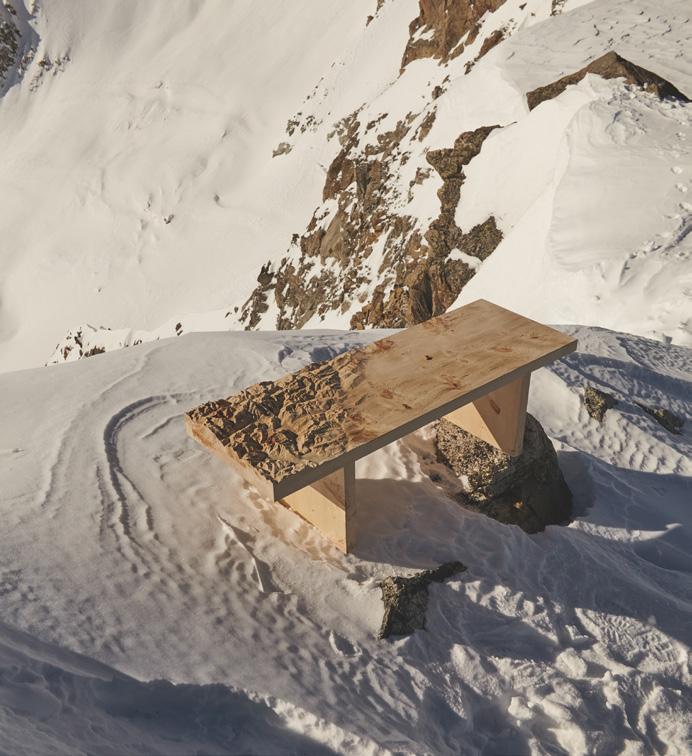
L’azienda stessa sta “scalando vette”: a soli due anni dalla fondazione, è già rappresentata in numerose gallerie italiane e internazionali di primissimo piano, come quelle di Rossana Orlandi a Milano e Porto Cervo nonché la Vail International Gallery in Colorado (USA) e Philia a Ginevra, Singapore, New York e Mexico City. In più, ha partecipato a eventi settoriali di spicco quali il Salone del Mobile. Attualmente, Dolomitisch realizza un’ampia gamma di mobili per diverse destinazioni d’uso, come tavoli di varie dimensioni, comodini, specchi e scaffali, anche in combinazione con metalli pregiati e vetro temperato. Oltre che su richiesta diretta, le opere sono acquistabili online sulla piattaforma Artemest dedicata al design di lusso italiano.
Se desiderate impreziosire i vostri spazi abitativi con l’inconfondibile eleganza della montagna, tra la perfezione delle linee naturali e di un design sofisticato, il vostro punto di riferimento è solo uno: Dolomitisch.
Imagine the mountains so dear to your heart, or landscapes you've cherished since childhood, faithfully recreated in miniature on a unique piece of furniture. Now, you can marvel at their majesty even within the comfort of your home. The innovative startup Dolomitisch has made this dream a reality. Based in Bolzano, the company’s evocative name combines “Dolomiti”, referring to the
famous Dolomite mountains, with the German word “Tisch”, meaning table, resulting in the term which could also be translated as “dolomythic”. This fusion of nature and design aims to capture the grandeur of mountain scenery, blending contemporary aesthetics, cutting-edge technology and skilled craftsmanship with a commitment to ecological responsibility. The result? Exquisite topographical furnishings for those seeking more than just furniture, but a sensory and artistic experience.
Transforming the topography of a mountain into a piece of furniture means bringing its history and spirit into living spaces, establishing a deep connection with nature. Dolomitisch offers its customers complete creative control over their designs, including the choice of mountain landscape, materials, finishes, and dimensions, guaranteeing a piece that is one-of-a-kind. The process begins with a satellite laser scanning of the selected landscape, capturing the terrain's intricate details. This data is then used to mill the topography into solid wood using CNC machines, ensuring an accurate reproduction of every ridge and valley. The carved wood is finally incorporated into elegant furniture, transforming it into a “functional sculpture” that serves as the centrepiece of any room.
Eine Bank des Start-ups Dolomitisch befindet sich an der Skyway-Bergstation auf der Pointe Helbronner am Mont Blanc auf 3644 m.
Una panca firmata Dolomitisch si trova in cima alla stazione Skyway di Punta Helbronner sul Monte Bianco, a 3644 m di quota.
A signature Dolomitisch bench is located at the top of the Skyway station of Punta Helbronner on Mont Blanc at 3644 m above sea level.
The company’s founders, Luca Da Ros, Walter Capovilla, and Daniele Da Re, along with designer Riccardo Vendramin, place as much emphasis on ethics as they do on aesthetics. Da Ros, a forest ecology researcher at the University of Bolzano, leads the charge on responsible production. The materials used by Dolomitisch are sourced exclusively from short and certified supply chains, with a special focus on recovering wood from disaster-affected areas, like the forests hit by the devastating Vaia storm in 2018. Moreover, the startup is actively exploring ways to support reforestation projects, such as those in the Badia Valley region.
Dolomitisch is rapidly gaining recognition. Despite being founded only two years ago, the company’s creations are already showcased in prestigious Italian and international galleries, such as Rossana Orlandi in Milan and Porto Cervo, the Vail International Gallery in Colorado, and Philia Galleries in Geneva, New York, Singapore, and Mexico City. The company has also participated in major design industry events like the Salone del Mobile. Currently, Dolomitisch offers a wide array of furniture, including tables in various sizes, bedside tables, mirrors, and shelves, often combined with metals and tempered glass for a modern touch. Their products are available for direct order or through online platforms like Artemest, which is dedicated to Italian luxury design.
For those looking to infuse their home with the timeless beauty of mountains and the elegance of contemporary design, your point of reference is only one: Dolomitisch.








Ich bin ein Wintermuffel. Ja, ich gebe es zu und sage es laut. Schnee ist nicht meine bevorzugte Form des Wassers. Dann noch eher Eis, in Würfelform, in einem Cocktail, am Strand. Ich bin auch kein Fan von Kälte, zumindest wenn es unumgänglich ist, dass ich nach draußen gehe. Trotzdem mag ich den Winter. Die Stille. Die majestätische Pracht meiner Heimatberge in weiß. Die Einblicke, die blätterlose Bäume zulassen, die sonst im Verborgenen bleiben. Am besten gefallen mir diese Einblicke allerdings vom Fenster aus. Ich drinnen, Minusgrade draußen. Mit einer Tasse Kamillentee, einer Decke und einem guten Buch. Dann kann es draußen nach Herzenslust flocken. Darauf warte ich dann auch jährlich und pünktlich zum 8. Dezember, ganz gespannt mit meinem Plätzchenteig in der einen und dem Nudelholz in der anderen Hand. Im Grunde kann man nämlich Weihnachtsplätzchen nur dann backen, wenn eben genau diese Witterungsbedingungen herrschen. Draußen schneit es, dass man die Hand vor Augen nicht mehr erkennt und drinnen riecht es nach Lebkuchen. Dazu läuft nach alter Familientradition die Uraltkassette der Kastelruther-Spatzen-Weihnachtslieder und alle in meiner Familie hassen mich dafür. Aber genau dann – liebe ich den Winter.
Lo ammetto, in inverno sono una gran brontolona. Tra le forme che può assumere l’acqua, la neve non è la mia preferita. Piuttosto opto per il ghiaccio: a cubetti, in un drink e in spiaggia. Va da sé che non sono neanche un’amante del freddo, specie se devo necessariamente uscire. Capiamoci, questa stagione mi piace, ma per altro: la quiete che si respira, il fascino delle montagne innevate e gli scorci che si intravedono tra gli alberi spogli e che altrimenti rimarrebbero nascosti. Inutile dire che assaporo meglio ogni cosa dalla mia finestra, quando me ne sto al calduccio sotto la coperta, con una tazza di camomilla e un buon libro. Così, che nevichi pure quanto
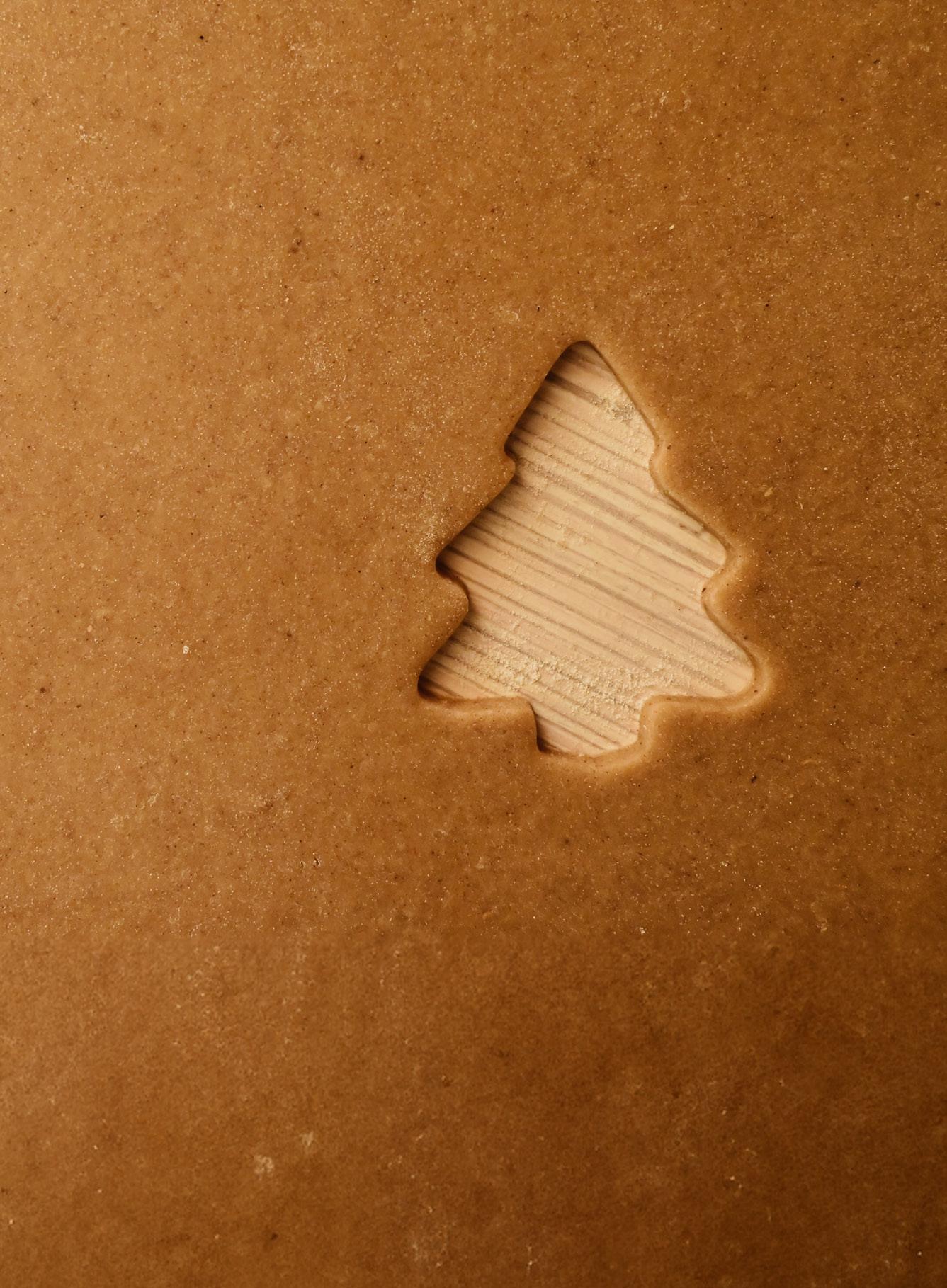
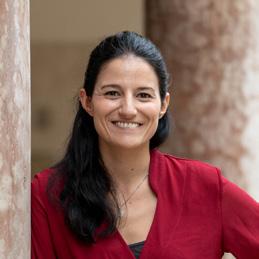
Linda P izzini


gli pare. Tuttavia, attendo sempre trepidante l’8 dicembre, con l’impasto in una mano e il mattarello nell’altra: per me, solo quando i gradi toccano lo zero si possono davvero preparare i Plätzchen, i tipici biscotti di Natale. Ed ecco che, mentre fuori i paesaggi diventano bianchi e ovattati, in casa aleggia il profumo speziato dei Lebkuchen. Intanto, da una vecchia cassetta risuonano le canzoni natalizie del gruppo sudtirolese Kastelruther Spatzen, anche se in famiglia c’è chi ne farebbe volentieri a meno. Ebbene, è in questi istanti che amo l’inverno.
I am a winter grump. Yes, I admit it and say it loud and clear. I’m not a fan of water in the form of snow. I prefer ice, in cube form, in a cocktail, on the beach. I’m also not a fan of the cold, especially when it’s unavoidable for me to go outside. Nevertheless, I do like winter. The silence. The majestic splendour of my



























home mountains dressed in white. The views afforded by leafless trees – views that would otherwise remain hidden. However, I like those views best when looking out of my window. Me inside, sub-zero temperatures outside. A cup of chamomile tea, a blanket and a good book. Then it may indefinitely snow outside. I actually wait for this kind of snow every year, just in time for the 8th of December – eagerly holding my biscuit dough in one hand and the rolling pin in the other. Basically, you can only bake Christmas biscuits when the weather conditions are just right. When it’s snowing so heavily that you can't see your hand in front of your eyes. And inside it smells of gingerbread. In keeping with an old family tradition, I’m listening to the age-old Christmas carols of the Kastelruther Spatzen (a famous South Tyrolean folk band) and everyone in my family hates me for it. For me, however, this is exactly when I love winter.

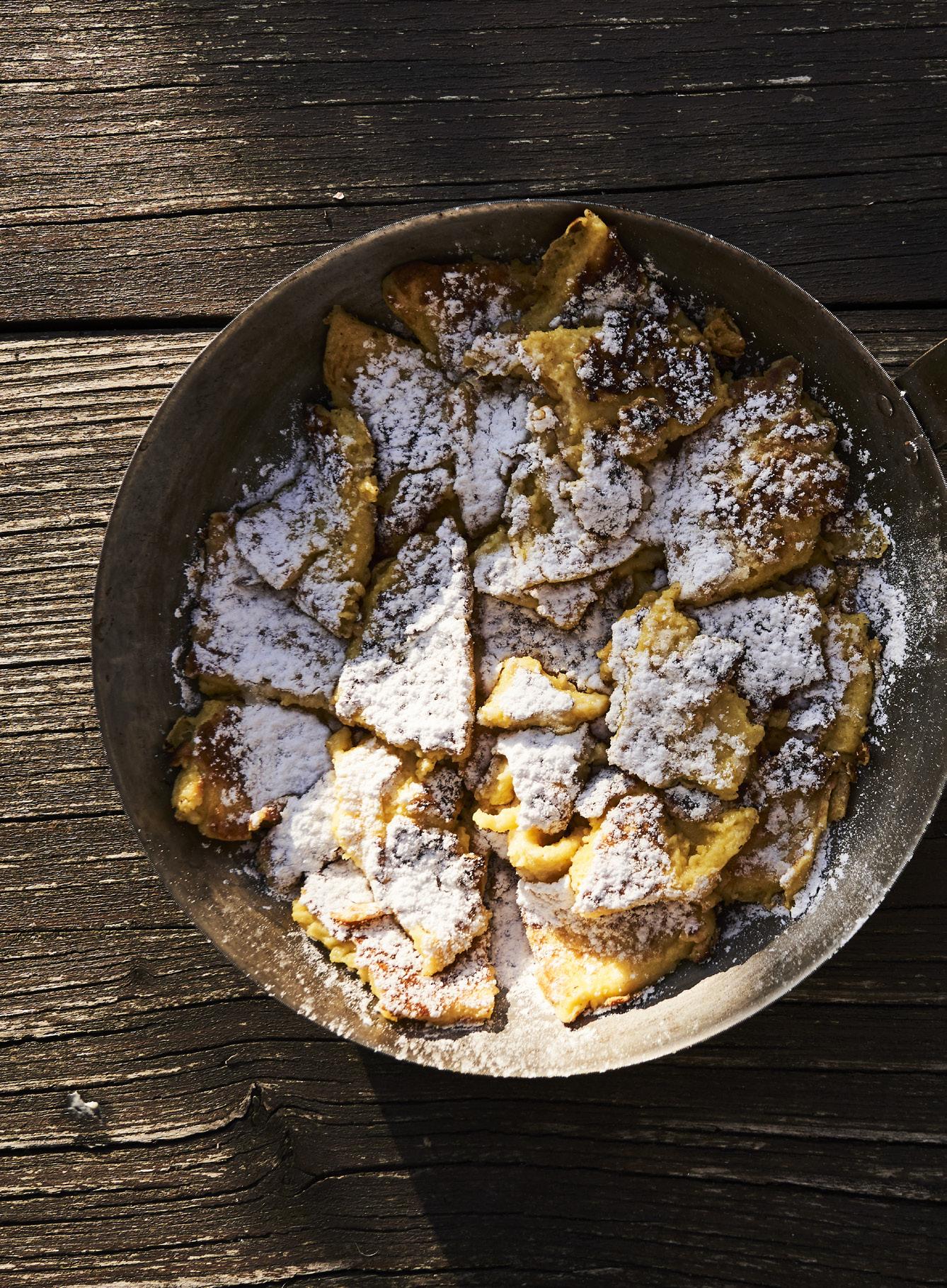
Die großen Klassiker unter den Südtiroler Gerichten haben ihre Wurzeln in der bäuerlichen Küche. Es sind alte Rezepte, die von Generation zu Generation weitergegeben und häufig mit Resten von selbst angebauten Lebensmitteln zubereitet wurden. Deftig und unverfälscht schmecken diese Spezialitäten noch besser, wenn man deren Geschichte kennt.
I piatti più tipici dell’Alto Adige affondano le proprie radici nella cucina rurale. Ricette antiche, tramandate di generazione in generazione, che nascono spesso come piatti di recupero e prevedono per lo più ingredienti di produzione propria. Sostanziose e genuine, queste specialità sono ancora più buone se accompagnate dalla storia sulle loro origini.
South Tyrol's most iconic dishes have their roots in traditional rural cuisine, featuring age-old recipes that have been passed down through generations. These delicious dishes were often created out of necessity, from leftovers and with home-grown ingredients. We think they are best enjoyed when paired with the story of their origins.

Knödel, Nocken, Nudel, Plenten sind die vier Tiroler Elementen.
Canederli, gnocchi, pasta e polenta: ecco come la cucina sudtirolese si rappresenta.
Dumplings, polenta, gnocchi, pasta, and more, all South Tyrol tastes, true to its core.
Weich wie Schnee, süß wie Sahne Soffice come la neve, dolce come la panna Soft as snow, sweet as cream
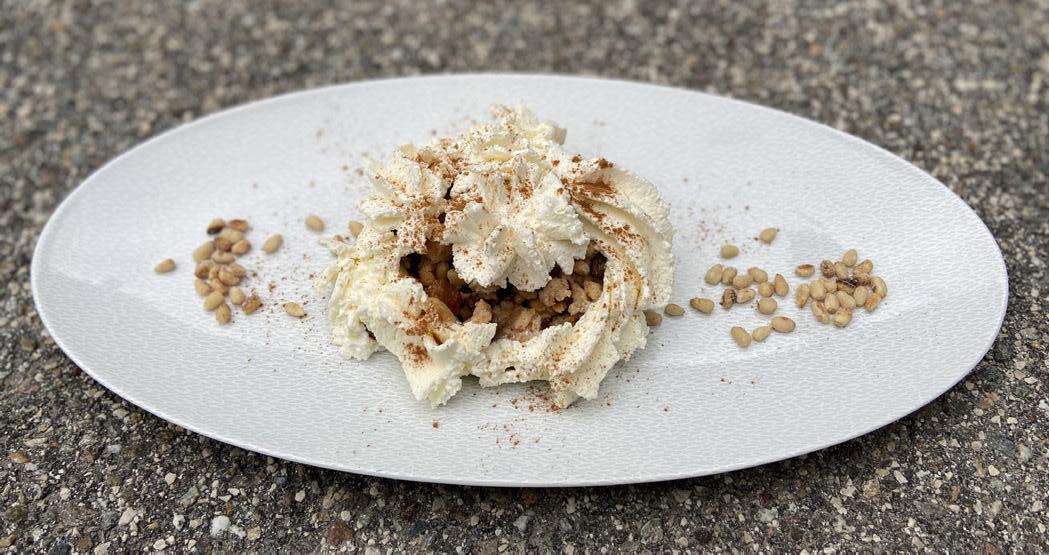
Es ist Sonntag und die ganze Familie versammelt sich um den Tisch in der Stube. In der Mitte steht eine Schüssel mit Würfeln aus altem Brot, die mit Milch, Sultaninen und reichlich Schlagsahne köstlich weich gemacht wurden. Schneamilch heißt diese Spezialität, die Löffel für Löffel miteinander geteilt wird. Die Zubereitung der Süßspeise variiert von Ort zu Ort, besonders zwischen dem Schnalstal und dem Obervinschgau. Manche fügen Walnüsse oder Pinienkerne hinzu, einige geben die Sahne in Schichten und andere nur oben drauf, ein paar garnieren mit Zimt oder Schokosplittern … Und natürlich behauptet jeder, dass sein Rezept das originale ist.
È domenica e l’intera famiglia è riunita intorno al tavolo della Stube. Al centro, un’invitante ciotola colma di dadini di pane raffermo ammorbidito col latte, uvetta sultanina e abbondante panna montata. Si tratta dello Schneamilch (spesso tradotto letteralmente come “latte di neve”), da dividersi cucchiaio
dopo cucchiaio. La preparazione di questo dolce festivo varia a seconda della zona, specie tra Val Senales e Alta Val Venosta: c’è chi aggiunge noci o pinoli, chi mette la panna a strati e chi solo sopra, chi guarnisce con cannella e chi con cioccolato a scaglie… Naturalmente, ogni posto rivendica gelosamente la ricetta originale per sé.
It's Sunday, and the family gathers around the table of the Stube (traditional wood-panelled parlour). At the centre is a tempting bowl of stale bread cubes soaked in milk, sultanas, and a generous amount of whipped cream. This is Schneamilch (literally “snow milk”), served spoonful after spoonful. The festive dessert's recipe varies across regions, especially between the Senales Valley and Upper Venosta Valley: some add walnuts or pine nuts, others layer the cream, and some sprinkle it on top; some garnish with cinnamon, others with chocolate flakes. Naturally, each area fiercely defends its claim to the original recipe.
Im Obervinschgau ist es Brauch, Schneamilch am ersten Sonntag in der Fastenzeit zu essen. So sammelt man Energie für das traditionelle Scheibenschlagen, das Werfen von Feuerscheiben.
In Alta Val Venosta è usanza mangiare lo Schneamilch la prima domenica di quaresima, per fare il pieno di energie in vista del tradizionale Scheibenschlagen, il lancio dei dischi ardenti.
In Upper Venosta Valley, it is customary to eat Schneamilch on the first Sunday of Lent, to recharge your energy for the traditional Scheibenschlagen, the throwing of burning discs.
Das Fest zum Ende der Erntezeit La festa di fine raccolto The end-of-harvest celebration

Wenn sich die Reben in warmen Farben zeigen und die Kastanien reif sind, beginnt in Südtirol die „fünfte Jahreszeit“: das Törggelen. Der Name dieses alten Brauchtums aus dem Eisacktal ist auf das Wort „Torggl“ zurückzuführen, worunter man in Südtirol eine Weinpresse versteht. Nach der Weinlese zogen die Bauern von Kellerei zu Kellerei, um den jeweiligen neuen Wein, den sogenannten Suser, zu verkosten und das Ende der Ernte in geselliger Runde zu feiern. Das klassische Menü besteht aus Gerstensuppe, Schlutzkrapfen, hausgemachten Würsten wie Blutwurst, Geselchtes und Sauerkraut. Zum Abschluss gibt es normalerweise süße gefüllte Krapfen und geröstete Kastanien (und vielleicht ein Glas Schnaps).
Quando le vigne si tingono di colori caldi e le castagne sono mature, in Alto Adige comincia la cosiddetta “quinta stagione”: il Törggelen. Il termine per definire questa antica usanza, originaria proprio della Valle Isarco, deriva da Torggl, il torchio usato per pigiare l’uva. Terminata la vendemmia, infatti, i contadi-
ni solevano andare di cantina in cantina per assaggiare il rispettivo vino novello, il Suser, e festeggiare in convivialità la fine del raccolto. Il classico menu prevede minestra d’orzo, mezzelune ripiene, salumi fatti in casa come il sanguinaccio, carne salmistrata e crauti. Il pasto si conclude tipicamente con krapfen dolci ripieni e caldarroste (e magari anche un buon grappino).
When the vineyards glow in warm hues and the chestnuts are ripe, South Tyrol's “fifth season” begins: Törggelen. This tradition, rooted in the Isarco Valley, comes from ‘Torggl’, the grape press. After the harvest, farmers would visit each other's cellars to sample the new wine, known as Suser, celebrating the end of the harvest together. The classic Törggele menu features barley soup, stuffed half-moon shaped ravioli, homemade cold cuts like black pudding and cured meats, and sauerkraut. The feast ends with sweet Krapfen (doughnuts), roasted chestnuts, and oftentimes a good grappa to toast the occasion.

Der historische Glangerhof in Feldthurns mit mehreren urigen Stuben, einem Museum mit historischen Objekten, einem Hirschgehege und einer heimeligen Atmosphäre wurde von der Zeitung Zett bereits mehrfach als „Törggelebetrieb des Jahres“ ausgezeichnet.
Lo storico maso Glangerhof di Velturno – con diverse Stube in stile tradizionale, un museo con oggetti storici, il recinto dei cervi e un’atmosfera familiare – è stato premiato più volte dal giornale Zett come “Locale dell’anno per il Törggelen”.
The historic Glangerhof farm in Velturno – featuring several traditional Stuben, a museum of historical artifacts, a deer enclosure and a warm family atmosphere – has been repeatedly honoured by the local newspaper Zett as the “Törggele Restaurant of the Year.”
www.glangerhof.com
Das Brot der Bergbauern Il pane dei contadini di montagna
The mountain farmer’s bread

Zusammen mit Speck und heimischem Käse darf es bei einer typischen Südtiroler Jause nicht fehlen: das Schüttelbrot, ein knuspriges, mit Bockshornklee und Kümmel gewürztes Roggenbrot, das mit dem g.g.A.-Gütesiegel für geschützte Lebensmittel gekennzeichnet ist. Wie in der Tiroler Bäckerordnung aus dem Jahr 1610 festgehalten, leitet sich der Name vom Schütteln des Teiges ab, der dadurch geglättet und in seine runde Form gebracht wird. Früher wurde das Brot nach dem Backen in einem Holzgestell an der Luft getrocknet, damit es lange haltbar blieb und sich kein Schimmel bildete. Um es zu zerbrechen, wird nach altem Brauch die Mitte des Schüttelbrots mit der Faust geschlagen.
Insieme allo speck e ai formaggi nostrani, non può mancare nella tipica merenda altoatesina: è lo Schüttelbrot, il pane di segale croccante aromatizzato con trigonella e semi di cumino, che vanta il marchio IGP dell’Alto Adige. Come si legge nell’Ordinamento tirolese
dei fornai risalente al 1610, il suo nome deriva dalla scossa che si dà all’impasto per appiattirlo e assicurargli la forma circolare – schütteln in tedesco. Un tempo, dopo la cottura, si disponeva su rastrelliere in legno e si lasciava asciugare all’aria, così che si conservasse a lungo senza ammuffire. L’usanza vuole che, per spezzettarlo, lo Schüttelbrot venga colpito al centro con il pugno.
Alongside Speck and local cheeses, Schüttelbrot is a must-have for a typical South Tyrolean snack. This crispy rye bread, seasoned with fenugreek and cumin seeds, proudly bears South Tyrol’s PGI emblem. As noted in the 1610 Tyrolean Order of Bakers, its name comes from the shaking (schütteln in German) of the dough to flatten it into its iconic round shape. Traditionally, after baking, the bread was left to dry on wooden racks to keep it mould-free for long periods of time. According to custom, Schüttelbrot is broken into pieces by punching its centre with a fist.
Heute werden jedes Jahr mehr als 850 Tonnen Schüttelbrot produziert. Einige Köche und Produzenten interpretieren das Schüttelbrot neu, mixen es beispielsweise klein und fügen es dem Nudelteig bei.
Oggi si sfornano oltre 850 tonnellate di Schüttelbrot all’anno ed è una delizia rivisitata da alcuni chef e produttori che, ad esempio, lo frullano e lo aggiungono all’impasto delle tagliatelle.
Today, over 850 tons of Schüttelbrot are produced annually, and some chefs and producers have reimagined it by blending it into their dishes, for example in the pasta dough of tagliatelle to give them a unique twist.
Ein Geschenk für Kinder zu Allerheiligen und Ostern In dono ai bambini a Ognissanti e a Pasqua An Easter gift for children

In Südtirol nehmen Teit (Pate) und Touta (Patin) eine wichtige Rolle ein. So wird dem Patenkind zu Allerheiligen und Ostern ein Fochaz geschenkt, meist in Form eines Hasen oder Pferdes für Jungen und einer Henne für Mädchen, oder auch in Form eines Zopfes. Es handelt sich um ein Hefegebäck mit Anisgeschmack, das früher besonders beliebt war, weil es sehr weich und aus Weißmehl war – im Gegensatz zum trockenen Roggenbrot, das im Alltag auf den Tisch kam. Zu Ostern wird es mit hartgekochten Eiern nach dem traditionellen „Pecken“ gegessen. Bei dieser Tradition werden in einem Duell zwei Eier aneinandergeschlagen, und es gewinnt derjenige, dessen Ei ganz bleibt.
In Alto Adige, il ruolo di Teit (padrino) o Touta (madrina) è molto sentito e legato a diverse usanze. Una di queste è donare ai propri figliocci un Fochaz a Ognissanti e a Pasqua, per lo più a forma di coniglio o cavallo per i maschi e di gallina per le femmine, ma anche di treccia.
Si tratta di una sorta di pan brioche aromatizzato all’anice, che una volta era particolarmente apprezzato perché sofficissimo e di farina bianca, al contrario dei segalini secchi consumati nel quotidiano. A Pasqua si mangia con le uova sode, dopo essersi sfidati nel tradizionale “duello”: si fanno cozzare tra loro due uova e vince chi ammacca prima l’uovo dell’avversario.
In South Tyrol, the roles of Teit (godfather) and Touta (godmother) are tied to cherished traditions. One such custom is gifting godchildren a Fochaz on All Saints' Day and Easter, often shaped like a rabbit or horse for boys and a chicken or for a girls braid. This anise-flavoured brioche bread was especially valued in the past for its softness and the use of white flour, which contrasted the everyday dry rye. It’s also customary to eat hard-boiled eggs after a playful “duel" called Pecken at Easter, where two eggs are smashed together, and the winner is the one whose egg remains uncracked.
Ein sehr altes Gedicht
Jo, jo, jo, der Oaschtertog isch do.
Der Teit der bring in Fochaz, die Touta bring a Henn, Madele, Madele, renn!
Una filastrocca molto antica
Sì, sì, sì!
La Pasqua ormai è qui. Il padrino porta la focaccia, La madrina a forma di gallina, Corri, corri, bambina!
A very old nursery rhymedough for a unique twist. Yay, yay, yay!
Easter is today
Godfather brings Fochaz, Godmother brings a chick, Run little girl, run little girl, be quick!
Eine romantische Geschichte
La romantica storia del cuore di castagne
The romantic story of chestnut hearts

Es war im Oktober 1948, als dem jungen Ivo Moschén, damals Lehrling in einer Bozner Konditorei, eine wichtige Aufgabe anvertraut wurde: Er sollte eine besondere Süßspeise für die Verlobungsfeier zweier junger Leute aus angesehenen Bozner Familien kreieren. Inspiriert von der saisonalen Frucht schlechthin und dem Symbol der Liebe, schuf er nach einer Nacht des Experimentierens das Kastanienherz, das noch heute die Gaumen von Einheimischen und Gästen erfreut. Es handelt sich um ein mit Rum aromatisiertes Kastanienpüree, das mit einer dunklen Schokoladenglasur umhüllt und mit einem Spritzer Schlagsahne verziert wird – eine Köstlichkeit, die einem buchstäblich auf der Zunge zergeht und als Ikone des Herbstes gilt.
Era l’ottobre del 1948 e al giovanissimo Ivo Moschén, allora apprendista pasticciere in un laboratorio nel centro di Bolzano, venne affidato un compito importante: creare un dolce speciale per la festa di fidanzamento tra due giovani di illustri famiglie della città. Ispirato dal frutto più rappresentativo della stagio-
ne e dal simbolo dell’amore, dopo una notte di esperimenti creò i cuori di castagne, che ancora oggi fanno innamorare il palato di altoatesini e visitatori. Si tratta di una purea di castagne aromatizzata al rum, avvolta da una glassa al cioccolato fondente e decorata con un ciuffo di panna montata – una goloseria che si scoglie letteralmente in bocca, diventata l’icona dell’autunno.
In October 1948, young Ivo Moschén, then an apprentice pastry chef in Bolzano, was given a daunting task: to create a special dessert for an engagement party between two prominent Bolzano families. Drawing inspiration from the season’s emblematic fruit and a symbol of love, Ivo spent the night experimenting and crafted the chestnut hearts. Today, these treats still enchant the taste buds of South Tyroleans and visitors alike. They consist of chestnut puree flavoured with rum, coated in dark chocolate, and topped with a swirl of whipped cream—a fall delicacy that melts in your mouth and has become an autumn icon.
Der Keschtnweg (Dialekt für Kastanien) führt vom Kloster Neustift an den berühmten Rittner Erdpyramiden vorbei bis nach Terlan. Er kann in mehreren Etappen begangen werden und zeigt sich im Herbst, wenn sich die Weinberge und Laubwälder bunt färben, von seiner schönsten Seite.
Il Sentiero del castagno parte dall’Abbazia di Novacella, passa per le famose piramidi di terra sul Renon e termina a Terlano. È suddivisibile in diverse tappe e mostra il suo lato più bello in autunno, quando i vigneti e i boschi di latifoglie sono variopinti.
The Chestnut Trail begins at Novacella Abbey, passes by the renowned earth pyramids on Renon, and ends in Terlano. Divisible into several stages, it showcases its most stunning scenery in autumn, when the vineyards and leafy forests are at their most colourful.
Ein Arme-Leute-Essen voller Geschmack Un piatto povero ma ricco di gusto A humble dish rich in flavour

Die Legende besagt, dass zur Zeit der Kämpfe mit den Landsknechten eine Gruppe Soldaten in ein Südtiroler Bauernhaus eindrang und drohte, es in Brand zu stecken, wenn sie nicht sofort etwas zu essen bekämen. Die Bäuerinnen machten sich mit dem Wenigen, das sie in der Küche hatten, an die Arbeit: Sie verwerteten altes Brot, indem sie es mit Eiern und Milch vermengten, und fügten Zwiebeln und Speck hinzu. Dann formten sie Klöße, die sie in siedendes Wasser legten. Die Knödel sättigten die Männer so sehr, dass sie einschliefen und die beiden Frauen fliehen konnten. Heute gibt es unzählige Variationen dieses typischen Südtiroler Gerichts; zu den bekanntesten gehören Spinat-, Käse- und Rote-Bete-Knödel.
La leggenda narra che, all’epoca delle battaglie con i lanzichenecchi, un’orda di soldati entrò in un maso altoatesino, minacciando di appiccarvi fuoco se non avessero ricevuto subito da mangiare. Le contadine si misero all’opera con quel poco che avevano in cucina: riciclarono il pane raffermo impastandolo con
uova e latte, e vi aggiunsero cipolla e speck. Quindi formarono delle palline, che bollirono nell’acqua. I canederli saziarono a tal punto i barbari che questi si addormentarono, permettendo alle due donne di mettersi in salvo. Oggi, le varianti di questo piatto simbolo dell’Alto Adige sono innumerevoli, tra le più famose figurano i canederli agli spinaci, al formaggio e alle rape rosse.
Legend has it that during the battles with the Landsknecht mercenaries, a band of soldiers stormed a South Tyrolean farm and threatened to set it on fire, unless they would be fed immediately. The peasant women quickly improvised with what they had: stale bread mixed with eggs, milk, onions, and Speck. They formed small balls and boiled them. The dumplings satisfied the soldiers so wonderfully that they fell asleep, giving the women a chance to escape. Today, the iconic South Tyrolean dumpling has many variations, including popular versions with spinach, cheese, and beetroot.
Laut der „Knödel-Etikette“ dürfen Knödel niemals mit dem Messer geschnitten werden: Dies wäre ein Zeichen dafür, dass sie nicht weich genug sind, und somit eine große Beleidigung für den Koch oder die Köchin.
Il “galateo dei canederli” vuole che non si taglino mai e poi mai con il coltello: sarebbe indice che non sono sufficientemente morbidi e, così, un grande affronto a chi li ha preparati.
“Dumpling etiquette” dictates that they should never be cut with a knife, as doing so would suggest they are not soft enough – thus insulting the cook who prepared them.
Schön und köstlich
Bello da vedere, buono da mangiare Gorgeous and delicious
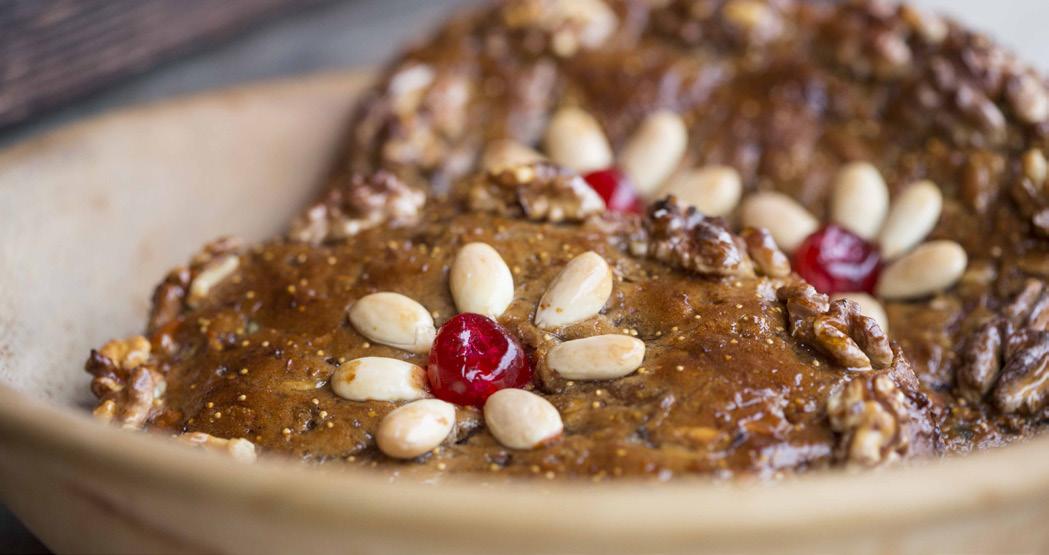
Was wäre der Advent ohne den Duft von Ingwer und Zimt? Oder von Zelten, dem typischen Festtagsgebäck, das sich perfekt als Geschenk oder Mitbringsel von den Weihnachtsmärkten eignet. Der Tradition nach soll der Zelten am zweiten Weihnachtsfeiertag angeschnitten werden; deshalb ist es üblich, ihn am 21. Dezember zuzubereiten, damit er genügend Zeit hat, sein Aroma zu entfalten. Zunächst werden getrocknete Früchte wie Feigen, Birnen und Sultaninen sowie Walnüsse und Mandeln in Gewürzwein und -rum eingelegt und dann in eine Mischung aus Roggenund Weizenmehl eingearbeitet. Früher wurde der Zelten sogar mit den Tieren im Stall geteilt, weil man glaubte, es bringe Glück.
Ieri come oggi, cosa sarebbe l’Avvento senza il profumo di zenzero e cannella? Come quello dello Zelten, il dolce tipico delle festività, perfetto da regalare o come souvenir dai mercatini di Natale. Secondo la tradizione, si dovrebbe tagliare il giorno di Santo Stefano e,
per questo, si è soliti prepararlo il 21 dicembre, così che abbia tempo a sufficienza per sviluppare il proprio aroma. Prima viene marinata la frutta secca – come fichi, pere, uvetta, noci e mandorle – in vino e rum speziati, per poi incorporarla a un impasto di farina di segale e frumento. Un tempo, lo Zelten si condivideva persino con gli animali della stalla, perché si credeva che portasse fortuna.
Then as now, what would Advent be without the aroma of ginger and cinnamon? Or without Zelten, a traditional holiday dessert, which makes an ideal gift or souvenir from Christmas markets. According to tradition, Zelten should be sliced on Boxing Day, so it’s typically made on December 21 to allow its flavours to fully develop. The process begins with marinating dried fruits – figs, pears, raisins, walnuts, and almonds – in spiced wine and rum, which are then mixed into a rye and wheat flour dough. Historically, Zelten was even shared with animals in the stable, as it was believed to bring good luck.
Der Name „Zelten“ soll sich vom Adverb „selten“ ableiten, denn in Südtiroler Haushalten war es keine übliche Nachspeise, sondern kam nur an den Weihnachtsfeiertagen auf den Tisch.
Il nome Zelten deriverebbe dall’avverbio tedesco selten, che significa proprio “raramente”, perché nelle case altoatesine non era un dolce abituale, ma si trovava in tavola solo durante le festività natalizie.
The name Zelten derives from the German word selten, which means “seldom”, because in South Tyrolean homes it was not a regular dessert, but was only found on the table during the Christmas holidays.
Runde gefüllte Köstlichkeiten Rotonde, ripiene, golose Round, stuffed, delicious

Ein anderes Wort für Pustertal? Tirtlan! Es gibt nämlich keine typischere Spezialität für diese Gegend Südtirols. Bei den Tirtlan handelt es sich um ein rundes Gebäck, das meist mit Spinat und Frischkäse, Sauerkraut oder Kartoffeln gefüllt und in heißem Öl goldbraun gebacken wird. Nach Großmutters Rezept wurde dem Teig früher ein Tropfen Schnaps beigegeben, damit er weniger Fett zog. Die einfachen Zutaten zeugen vom einstigen bescheidenen Leben auf dem Land und wurden zu einer nahrhaften Mahlzeit, die viel Energie für die harte Feldarbeit lieferte. Tirtlan werden oft mit Gerstensuppe serviert und sind heute ein fester Bestandteil von Volksfesten.
Si scrive Val Pusteria, si legge Tirtlan – non c’è infatti specialità più tipica per questa zona dell’Alto Adige. Si tratta di una sfoglia rotonda farcita comunemente con spinaci e ricotta, crauti oppure patate, poi fritta in olio bollente fino a doratura. A tal proposito, secondo le “ricette delle nonne”, si usava aggiungere un
goccio di grappa all’impasto affinché trattenesse meno grasso. Gli ingredienti semplici testimoniano la genuinità della vita rurale di un tempo, dove rappresentavano un pasto nutriente che forniva abbondante energia per il duro lavoro nei campi. I Tirtlan vengono spesso serviti con la minestra d’orzo e oggi sono immancabili alle feste popolari.
Pusteria Valley’s signature dish, Tirtlan, exemplifies the culinary traditions of South Tyrol. This round pastry is traditionally filled with either spinach and ricotta, sauerkraut or potatoes, and then fried to golden perfection. According to “grandma's recipe”, a touch of grappa was added to the dough, helping to keep the pastry less greasy. These simple ingredients reflect the rural life of the past, offering a hearty meal that provided abundant energy for the hard work in the fields. Today, Tirtlan are a staple at folk festivals and commonly enjoyed alongside barley soup.
Im Gadertal, wo überwiegend Ladinisch gesprochen wird, wird das typische Gebäck „Tutres“ genannt. Es gilt als das lokale Gericht schlechthin und als Symbol der Geselligkeit.
In Val Badia, dove si parla prevalentemente il ladino, queste frittelle tipiche vengono chiamate tutres. Sono considerate il piatto locale per eccellenza e un simbolo di convivialità.
In the Badia Valley, where Ladin is still widely spoken, these traditional fritters are known as Tutres. They are regarded as the quintessential local dish and a symbol of community and togetherness.
La cucina altoatesina tra ieri e oggi | South Tyrolean cuisine: now and then
Werner Unterhofer ist Küchenchef des Restaurants Pirbamer in Unterinn, das er gemeinsam mit seinem Bruder Hannes führt.
Welches ist Ihre Leibspeise unter den traditionellen Südtiroler Gerichten? Mein Lieblingsmenü besteht aus einer Frittatensuppe, gefolgt von einer Leberknödelsuppe und einer Buchweizentorte mit Preiselbeeren zum Nachtisch.
Bieten Sie in Ihrem Restaurant eine Neuinterpretation der Südtiroler Küche an? Im Frühling, wenn die neuen Kräuter sprießen, tischen wir eine Neuinterpretation der Schlutzkrapfen auf, die meiner Meinung nach die Südtiroler Küche zwischen alten Aromen und modernen Einflüssen gut widerspiegelt: Agnolotti-Teigtaschen gefüllt mit Brennnesseln und Ricotta, serviert mit Schüttelbrotgremolata und Schaum von der Salzzitrone.
Welche Aspekte der altbewährten Küche inspirieren Sie noch heute? Ich setze aus Überzeugung auf die Nose-to-Tail-Philosophie, d. h. ich verwende alle Teile des Tieres und vermeide so Verschwendung. Früher galt dies als ein Muss. Außerdem lege ich großen Wert auf Saisonalität, weshalb ich die Speisekarte regelmäßig entsprechend anpasse.
Jedes Gericht erzählt eine Geschichte. Welche Ihrer Kreationen ist auf eine besondere Weise entstanden? Zu Zeiten von Covid, als das Restaurant geschlossen war, boten wir einen Take-away-Service an, und als Abwechslung schlugen wir unter den Spezialitäten Gyoza vor. Das sind typisch japanische Ravioli mit einer Füllung aus lokalen Zutaten wie Dolobeef und Pfifferlingen. Sie kamen so gut an, dass wir sie gleich nach der Wiedereröffnung auf die Speisekarte setzten.
Welche einheimische Zutat darf in Ihrer Küche nicht fehlen? Lammfleisch und Süßwasserfische, ausschließlich von regionalen Lieferanten, und Butter, die in Südtirol von höchster Qualität ist.
Werner Unterhofer è lo chef del ristorante Pirbamer ad Auna di Sotto, che gestisce insieme al fratello Hannes.
Tra i piatti più tipici dell’Alto Adige, qual è il Suo
preferito? Il mio menu tipico ideale è Frittatensuppe, la minestra celestina, seguita da canederli di fegato in brodo e, come dolce, la torta di grano saraceno con mirtilli rossi.
Nel Suo ristorante propone una versione rivisitata di qualche specialità altoatesina? A primavera, quando spuntano le erbette novelle, proponiamo una rivisitazione degli Schlutzkrapfen, che secondo me rispecchia bene la cucina altoatesina tra i sapori di ieri e le influenze di oggi: gli agnolotti ripieni di ortica e ricotta, serviti con gremolada allo Schüttelbrot e spuma al limone confit.

Quali aspetti della cucina di una volta La ispirano tutt’oggi? Se un tempo era d’obbligo, io invece scelgo per convinzione la filosofia noseto-tail, ovvero utilizzo ogni parte dell’animale ed evito gli sprechi. Inoltre, credo molto nella stagionalità, per questo vario regolarmente il menu di conseguenza.
Ogni piatto racconta una storia. Quale delle sue creazioni è nata in modo particolare? All’epoca del Covid, con il ristorante chiuso, offrivamo un servizio take away e, per variare, tra le specialità proponemmo i gyoza, degli
elaborati ravioloni tipici del Giappone ma con ingredienti locali per il ripieno, come il manzo Dolobeef e i finferli. Sono stati talmente apprezzati che, appena riaperti i battenti, li abbiamo aggiunti al menu.
Quale ingrediente locale non manca mai nella Sua cucina? L’agnello e i pesci d’acqua dolce, rigorosamente da fornitori regionali, e il burro, che in Alto Adige è di qualità ottima.
Werner Unterhofer is the head chef of the Pirbamer restaurant in Auna di Sotto, which he runs together with his brother Hannes.
Which South Tyrolean dish do you enjoy the most? My ideal South Tyrolean menu includes Frittatensuppe (traditional clear broth with thin slices of egg omelettes) followed by liver dumplings in broth, and for dessert, a buckwheat cake with cranberries.
Do you offer any modern takes on traditional South Tyrolean dishes in your restaurant? In spring, when the new fresh herbs start to grow, we feature a modern twist on Schlutzkrapfen. We prepare agnolotti filled with nettle and ricotta, garnished with Schüttelbrot gremolada and lemon confit foam. This dish beautifully blends traditional flavours with contemporary influences.
How does the cuisine of the past continue to inspire your cooking today? I’m inspired by the nose-to-tail philosophy: using every part of the animal to minimise waste. Seasonality is also crucial to me, which is why I frequently update the menu to reflect seasonal ingredients.
Can you share a story behind one of your dishes? During the Covid lockdown, we offered a takeaway service and included Gyoza, elaborate ravioli inspired by Japanese cuisine, but made with local ingredients like Dolobeef and chanterelles. They were so popular that we kept them on the menu when we reopened.
What local ingredient is essential in your kitchen? Lamb and freshwater fish from regional suppliers and high-quality butter, which is exceptional in South Tyrol, are staples in my kitchen.
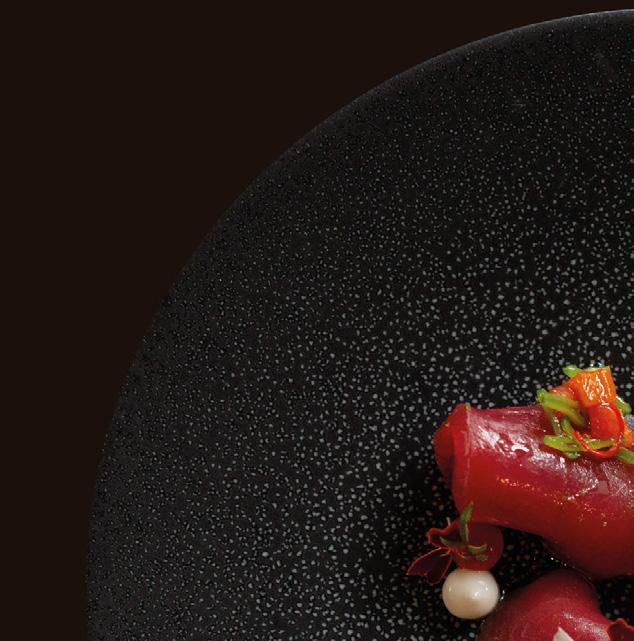

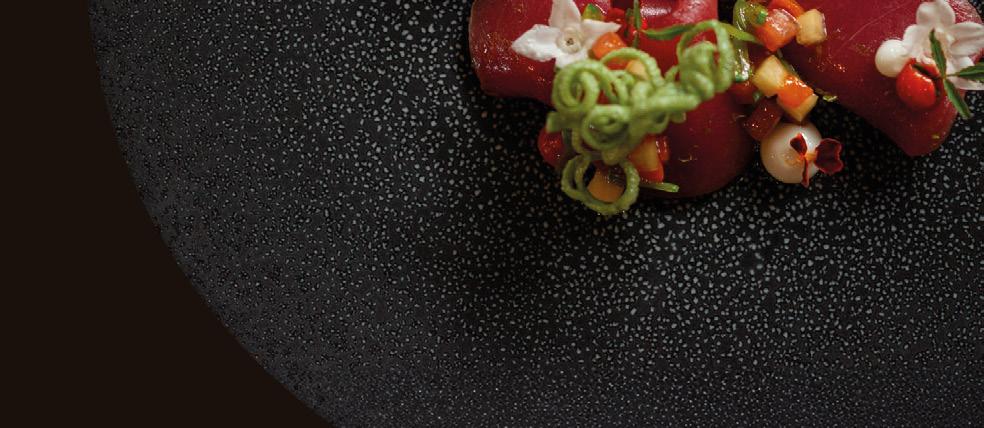
ZWEI BRÜDER, EIN ZIEL, GUTER GESCHMACK GUTES GEFÜHL!
TWO BROTHERS, ONE GOAL: GOOD TASTE, GOOD FEELING! DUE FRATELLI, UN OBIETTIVO: GUSTO E BENESSERE

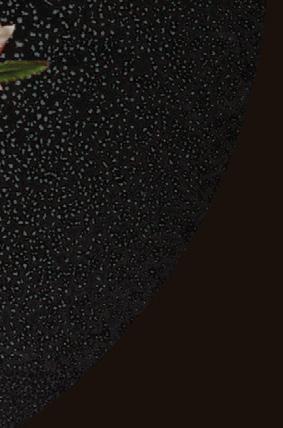
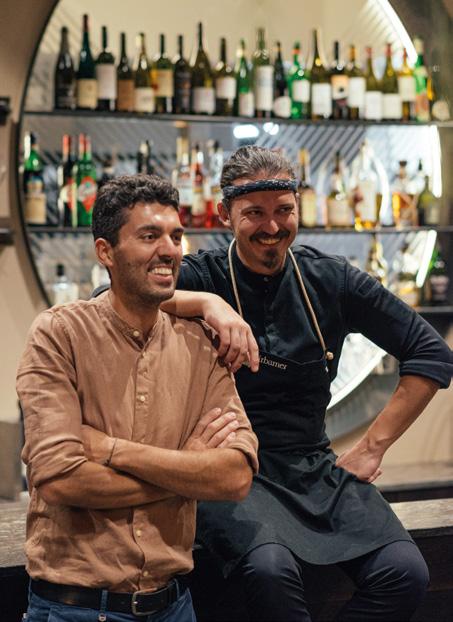
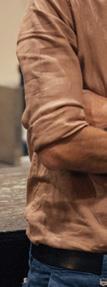
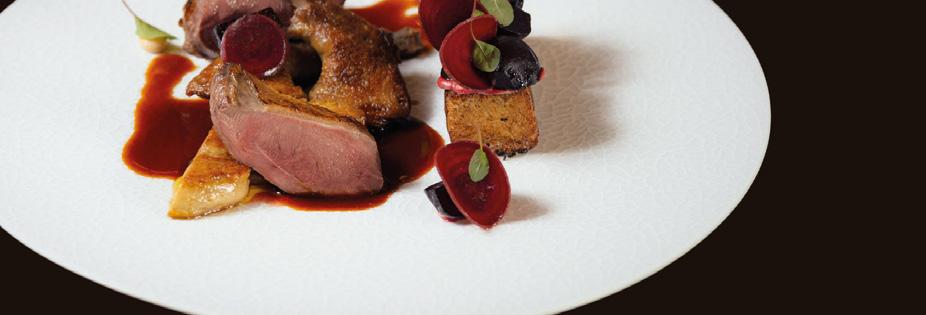



MOZZARELLA-INGULDENCE FROM SOUTH TYROL
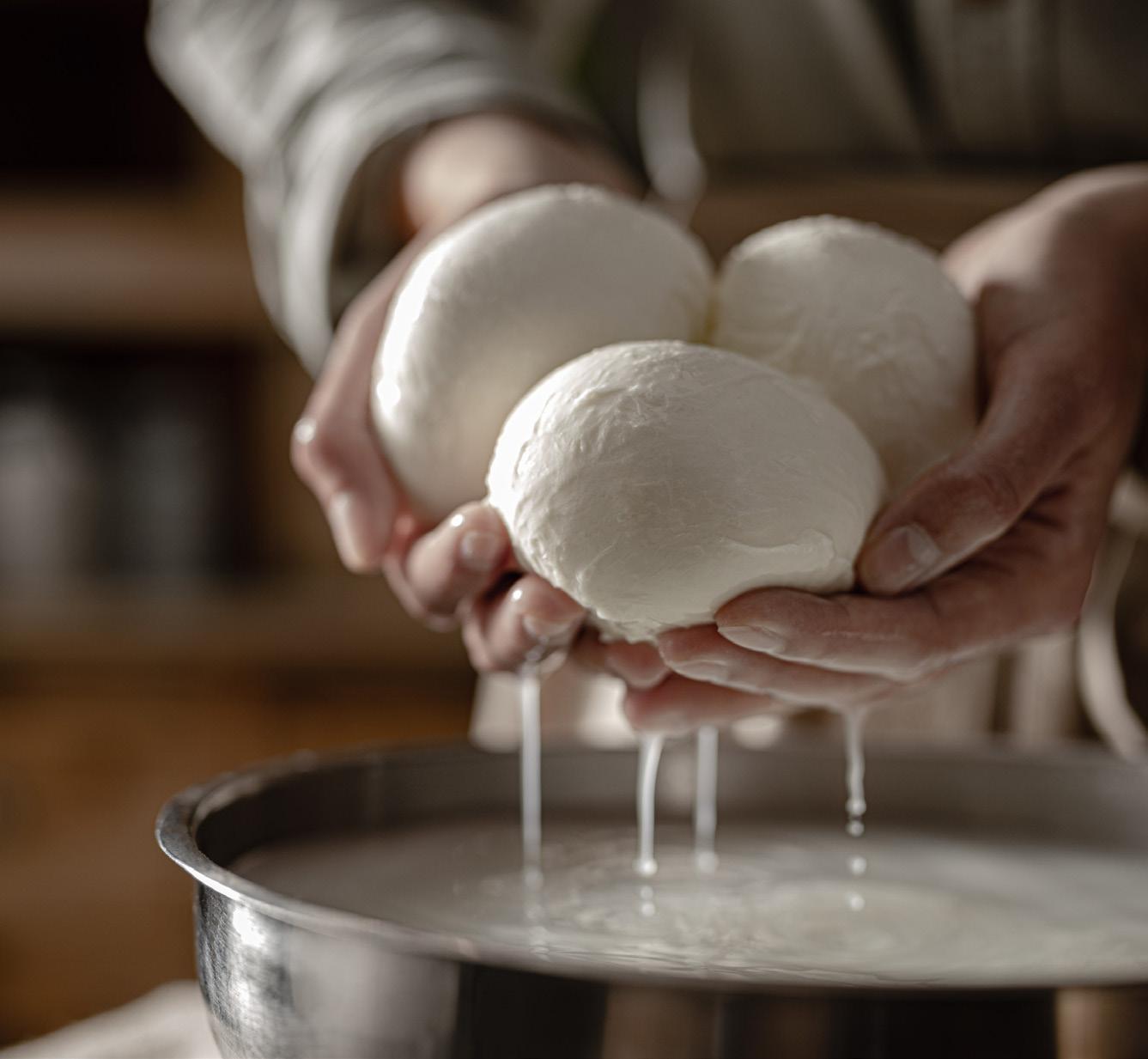
Frische Südtiroler
Kuhmilch wird zu besten Käseprodukten.
Dal latte vaccino altoatesino si ottengono prodotti caseari eccellenti.
Fresh South Tyrolean
products.
Immer mehr Menschen setzen auf eine bewusste und gesunde Ernährung. Dazu zählt auch häufig der Verzehr von fettreduzierten Lebensmitteln. Die Genussmärkte von Pur Südtirol bieten an ihren Standorten in Meran, Lana, Bozen, Brixen und Bruneck eine breite Palette an genau diesen Lebensmitteln – produziert in Südtirol nach den höchsten Qualitätsstandards. Darunter befindet sich auch der Mozzarella Armonia von Brimi, einem der führenden Mozzarellahersteller Italiens. Wir haben mit Manuela Raffeiner von Brimi gesprochen und auch den Südtiroler Skirennläufer Florian Schieder miteinbezogen, der als Sportler besonderen Wert auf eine ausgewogene Ernährung legt.
Frau Raffeiner, was zeichnet den Mozzarella Armonia von Brimi aus?
Armonia ist unsere Light Linie und zeichnet sich durch 40 % weniger Fett und 40 % weniger Salz aus. Die Idee entstand aus dem Wunsch heraus, unseren Kunden ein noch gesünderes Produkt zu bieten, das aber gleichzeitig den gesamten Brimi-Geschmack in sich vereint. So möchten wir es den Verbrauchern ermöglichen, eine ausgewogene Ernährung und einen gesunden Lebensstil zu führen.
Fett ist ein wichtiger Geschmacksträger: Wie wird der Geschmack trotz reduzierten Fettgehalts garantiert?
Hierin bestand genau die Schwierigkeit bei der Entwicklung unseres Armonia. Wir haben das Hauptaugenmerk vor allem auf die Struktur des Mozzarellas und die Saftigkeit gelegt. Damit gelingt es uns, ein vollmundiges Produkt trotz reduzierten Fettanteils herzustellen.
Warum hat Brimi auch den Salzanteil verringert?
Dadurch sprechen wir nicht nur alle an, die auf einen reduzierten Fettgehalt achten, sondern auch jene, die gemäß moderner Ernährungsrichtlinien eine Reduktion des Salzkonsums aus gesundheitlichen Gründen anstreben.
Herr Schieder, welche Rolle spielt gesunde Ernährung für Ihre sportliche Karriere?
Gesunde Ernährung spielt eine entscheidende Rolle in meiner sportlichen Karriere. Obwohl ich keinem strikten Ernährungsplan folge, achte ich darauf, hochwertige und ausgewogene Produkte zu konsumieren. Besonders wichtig ist für mich die Qualität der Lebensmittel, die ich täglich zu mir nehme. Abends versuche ich, Kohlenhydrate zu meiden, um meinen Körper optimal auf den nächsten Tag vorzubereiten und meine Leistungsfähigkeit zu unterstützen.
Welche Rolle spielen fettreduzierte Produkte dabei?
Ich versuche, auf eine gesunde Balance zwischen Nährstoffen und Kalorien zu achten, weshalb ich mich für fettreduzierte Produkte entscheide. Brimi bietet mir die perfekte Kombination aus hochwertigem Geschmack und geringem Fettgehalt. Man schmeckt, dass die Produkte aus unserer Region stammen und mit viel Sorgfalt hergestellt werden. So kann ich meine sportlichen Ziele unterstützen, ohne auf den Genuss und die Qualität zu verzichten, die ich an Brimi so schätze.
Haben Sie ein Lieblingsgericht, das Sie mit Produkten von Brimi zubereiten?
Mein absolutes Lieblingsgericht mit Brimi-Produkten ist Caprese. Die Kombination aus frischen Tomaten, hochwertigem Brimi-Mozzarella und einem Schuss Olivenöl ist unschlagbar. Es ist ein simples, aber unglaublich leckeres Gericht, bei dem die Qualität der Zutaten wirklich den Unterschied macht.
Sempre più persone decidono di adottare un’alimentazione sana e consapevole, e spesso ciò si traduce nel preferire cibi a basso contenuto di grassi. In Alto Adige, si può trovare un ampio assortimento di tali alimenti – di origine regionale e di altissima qualità – presso il mercato dei sapori Pur Südtirol, con filiali a Merano, Lana, Bolzano, Bressanone e Brunico. Un esempio di bontà salutare? La mozzarella Armonia di Brimi, una delle aziende leader in Italia nella produzione di questo amatissimo latticino. Ne abbiamo parlato insieme a Manuela Raffeiner di Brimi e anche con lo sciatore altoatesino Florian Schieder, il quale, da atleta, attribuisce grande importanza a una dieta equilibrata.
Signora Raffeiner, cosa contraddistingue la mozzarella Armonia di Brimi?
Armonia è la versione light della nostra mozzarella classica, con il 40% di grassi e di sale in meno. È nata con l’obiettivo di soddisfare tutti i clienti attenti alla salute, che desiderano un prodotto ancora più sano, senza però rinunciare all’inconfondibile gusto Brimi. In questo modo, intendiamo permettere ai consumatori di fare scelte alimentari che promuovano il benessere.

Eines von Manuela Raffeiners
Lieblingsgerichten sind mit Mozzarella überbackene Fleischtomaten mit Chili.
Uno dei piatti preferiti di Manuela Raffeiner sono i pomodori carnosi gratinati con mozzarella e peperoncino.
One of Manuela Raffeiner's favourite dishes is beef tomatoes au gratin with mozzarella and chilli.
Für Florian Schieder sind regionale Herkunft und Südtiroler Qualität äußerst bedeutend.
A Florian Schieder stanno particolarmente a cuore l’origine e la qualità altoatesina degli alimenti.
Regional origin and South Tyrolean quality are extremely important to Florian Schieder.

I grassi, nei cibi, sono un importante vettore di sapore: come garantite un’esperienza gustativa appagante nonostante il ridotto contenuto di grassi?
È stata proprio questa la sfida nel creare Armonia. Ci siamo concentrati soprattutto sulla consistenza e sulla succosità della mozzarella, così che abbia un gusto pieno pur senza buona parte della componente grassa.
Come mai Brimi ha scelto di diminuire anche il sale?
Così da rivolgersi a consumatori che stanno attenti non solo ad assumere meno grassi, ma anche, per motivi di salute, a ridurre il consumo giornaliero di sale come indicato dalle moderne linee guida nutrizionali.
Signor Schieder, quant’è importante seguire una dieta sana per la Sua carriera sportiva?
È fondamentale! Sebbene io non abbia un piano nutrizionale particolarmente rigido, pongo molta attenzione a scegliere alimenti equilibrati che vengano prodotti in un certo modo. Per me, infatti, è importantissima la qualità dei cibi che mangio quotidianamente. Alla sera di solito evito i carboidrati, così da preparare al meglio il mio corpo agli impegni del giorno seguente e massimizzare la performance.
E che ruolo rivestono in tal senso i prodotti a ridotto contenuto di grassi?
Cerco sempre di bilanciare adeguatamente l’energia e i nutrienti forniti da un dato alimento,
e per questo prediligo quelli con meno grassi. Brimi offre la combinazione perfetta tra un ottimo sapore e una bassa percentuale di grassi. Si sente che i prodotti provengono dalla nostra regione e vengono realizzati con la massima cura. Grazie a essi, posso perseguire i miei traguardi sportivi senza rinunciare né al gusto né alla qualità – due aspetti sempre garantiti da Brimi e che apprezzo molto.
Qual è il piatto che preferisce preparare con i prodotti Brimi?
Il mio preferito in assoluto è la caprese: la combinazione tra pomodori freschi, la gustosa mozzarella Brimi e un filo di buon olio di oliva è imbattibile. È una ricetta tanto semplice quanto incredibilmente deliziosa, dove la qualità degli ingredienti fa davvero la differenza.
More and more people are prioritising a conscious and healthy diet. This frequently includes the consumption of low-fat foods. The Pur Südtirol gourmet markets in Merano, Lana, Bolzano, Bressanone and Brunico offer a wide selection of precisely these foods – produced in South Tyrol in accordance with the highest quality standards. These include the Armonia mozzarella from Brimi, one of Italy’s leading mozzarella producers. We spoke to Manuela Raffeiner from Brimi and also interviewed the South Tyrolean ski racer Florian Schieder. As an athlete, he attaches particular importance to eating a balanced diet.
Mrs Raffeiner, what distinguishes Brimi’s Armonia mozzarella?
Armonia is our Light Line and is characterised by having 40% less fat and 40% less salt. This idea came about as a result of our desire to
offer our customers an even healthier product whilst retaining all of the Brimi flavour. The aim is to enable consumers to enjoy a balanced diet and a healthy lifestyle.
Fat is an important source of flavour: how can you guarantee flavour despite a reduced fat content?
That was precisely the difficulty in developing our Armonia. We focussed primarily on the structure of the mozzarella and on keeping it juicy. This allows us to produce a full-flavoured product while reducing the fat content.
Why did Brimi also reduce the salt content?
By doing so, we not only appeal to all those who pay attention to a reduced fat content, but also to those who aim to reduce their salt consumption for health reasons in accordance with modern nutritional guidelines.
Mr Schieder, what role does a healthy diet play in your athletic career?
Eating a healthy diet plays a crucial part in my sporting career. Although I don’t follow a strict diet plan, I always make sure I consume top-quality and balanced products. The nutritional value of the food I eat every day is particularly important to me. I try to avoid carbohydrates in the evening in order to prepare my body in the best possible way for the next day and to support my performance.
What role do low-fat products play in this?
As I am trying to maintain a healthy dietary balance between nutrients and calories, I opt for low-fat products. Brimi offers me the perfect combination of premium flavour and low fat content. You can tell that the products come from our region and are made with great care. This allows me to support my athletic goals without sacrificing the flavour and quality that I appreciate so much about Brimi.
Do you have a favourite dish you prepare with Brimi products?
My absolute favourite dish to make with Brimi products is Caprese. The combination of fresh tomatoes, premium Brimi mozzarella and a drizzle of olive oil is unbeatable. It’s a simple but incredibly tasty dish in which the quality of the ingredients really makes all the difference.
www.pursuedtirol.com
Qualitätsprodukte von prodotti genuini da quality products from
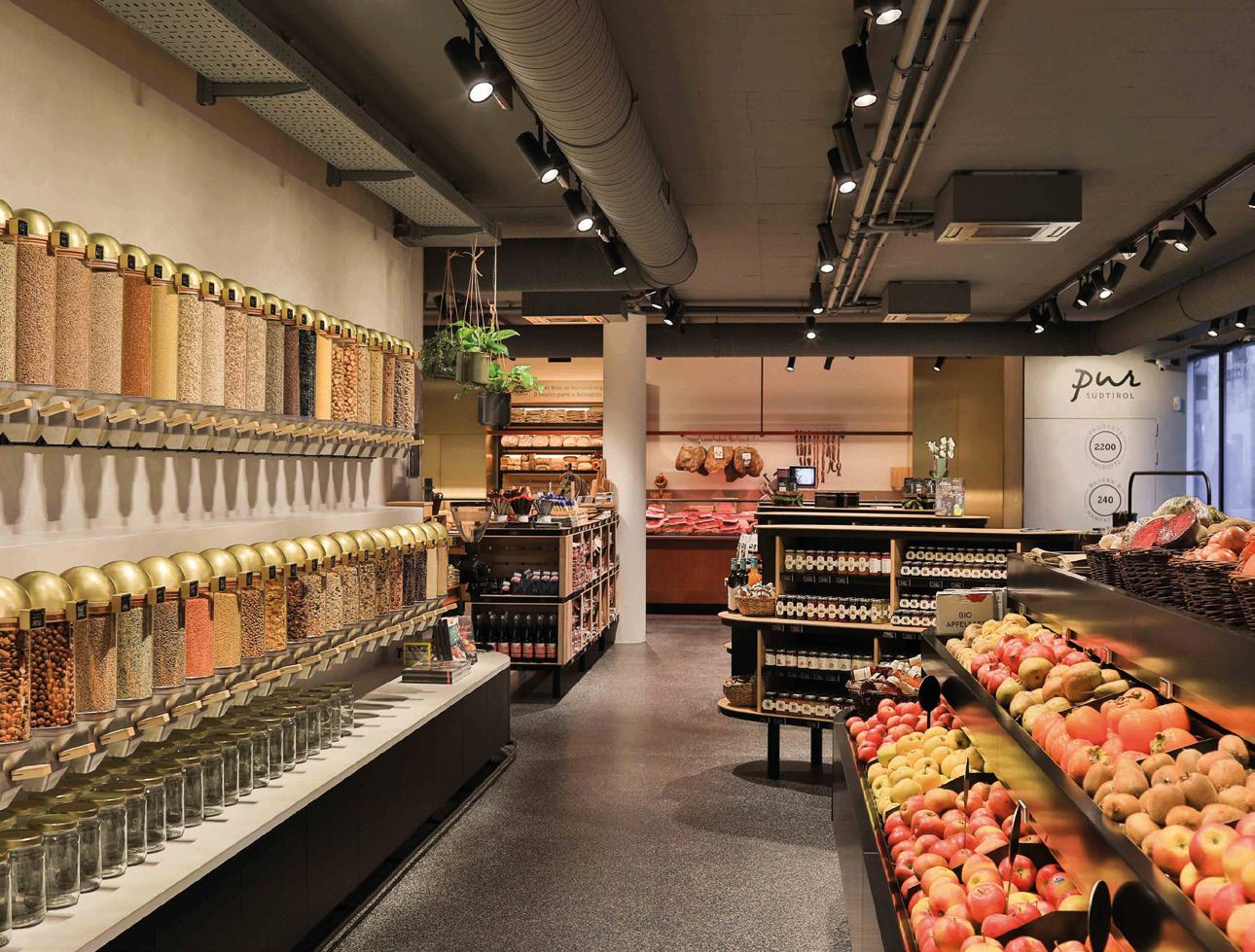
100%
Bauern & Manufakturen agricoltori & produttori farmers & artisanal producers made in South Tyrol
Meran/o
Lana
Bozen / Bolzano
Brixen / Bressanone
Bruneck / Brunico
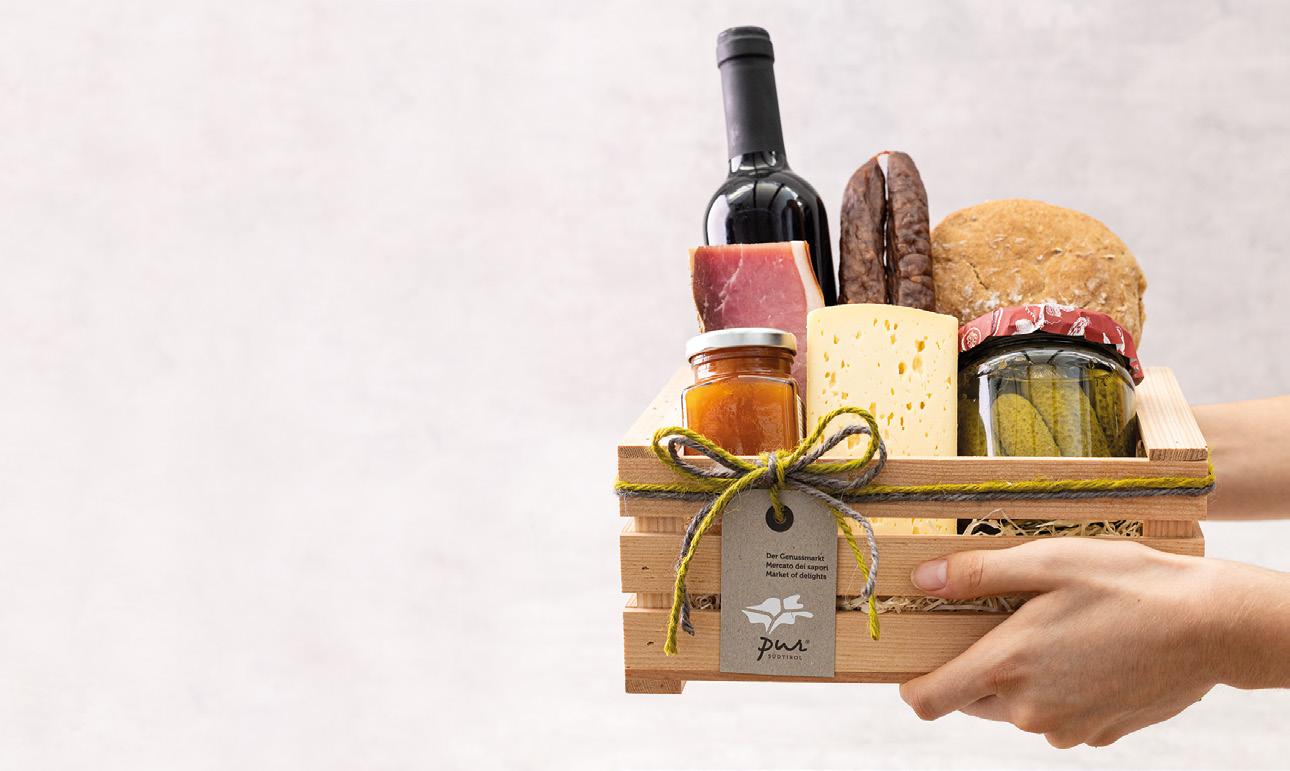

Entdecke unseren Onlineshop
Scopri il nostro shop online Discover our online shop
Versand in ganz Europa
Spedizioni in tutta Europa
Delivery throughout Europe
www.pursuedtirol.com
25 anni di ricette altoatesine di sicuro successo 25 years of fail-safe South Tyrolean recipes

Es war vor einem Vierteljahrhundert, als die drei Köche Heinrich Gasteiger, Gerhard Wieser und Helmut Bachmann gemeinsam das Buch „So kocht Südtirol“ herausbrachten. Was mit einer Auflage von 5000 Exemplaren begann, wurde bald zu einem Riesenerfolg. Heute gibt es wohl kaum einen Haushalt in Südtirol, in dem dieses Rezeptbuch nicht im Regal steht. Die drei Köche haben seitdem einen Meilenstein an den anderen gereiht – oder sagen wir besser ein Buch an das nächste. Neben weiteren Klassikern wie „So kocht Italien“ und „So backt Südtirol“ entstanden kleinere Formate zu spezifischen
Gerichten und regionalen Lebensmitteln wie Knödeln, Gnocchi, Wok, Spargeln oder Marillen. Auch ein eigenes Getränkebuch und Rezepte für Diabetiker fanden ihren Weg auf den Markt. Was alle Werke eint, sind ihre leicht verständliche Sprache, Hintergrundinformationen und Schritt-für-Schritt-Anleitungen. Wer sich an die Angaben der drei renommierten Meisterköche hält, der kann sicher sein, in die authentische Südtiroler Küche einzutauchen.
Ormai un quarto di secolo fa, i tre cuochi Heinrich Gasteiger, Gerhard Wieser e Helmut
Bachmann pubblicarono insieme il libro Cucinare nelle Dolomiti. Quel che cominciò con una tiratura di 5000 copie, si rivelò presto un successo enorme: a oggi, si può dire che non c’è famiglia in Alto Adige che non abbia questo ricettario in casa. Da allora, i tre cuochi hanno sfornato un capolavoro dopo l’altro – in questo caso sulla carta. Oltre a grandi classici come Dolci Dolomiti, hanno realizzato anche piccoli formati dedicati a piatti specifici (tra cui canederli, gnocchi e wok) e a ingredienti regionali d’eccellenza, come asparagi e albicocche. Nella loro collana figura persino un ricettario rivolto ai diabetici. Il comune denominatore di tutte le loro pubblicazioni sono il linguaggio di facile comprensione, tante informazioni utili e curiosità così come indicazioni passo a passo. Chi si attiene alle istruzioni dei tre rinomati chef ha la garanzia di preparare con successo piatti autentici della cucina altoatesina.
It’s been 25 years since the three chefs, Heinrich Gasteiger, Gerhard Wieser and Helmut Bachmann, released the first of their cookbooks (original title “So kocht Südtirol”).
What began with an edition of 5,000 copies soon became a huge success. Today, you will struggle to find a South Tyrolean home in that does not own a copy. The three chefs have since achieved one milestone after another –or rather, one book after the other. Alongside other classics, such as “So kocht Italien” (literally, “How Italy cooks”) and “So backt Südtirol” (literally, “How South Tyrol bakes”), they also released smaller books about specific dishes and regional foods, such as Knödel (dumplings), gnocchi, woks, asparagus, or apricots. They even published a book about drinks and recipes for diabetics. All of these publications are easy to comprehend and offer background information and step-by-step instructions. Follow the renowned chefs’ instructions and delve into authentic South Tyrolean cuisine.
So kocht Südtirol
sokochtsuedtirol

Für 4 Personen (etwa 8 Knödel)
Zubereitungszeit: ca. 50 Minuten
Zutaten
80 g Recla-Speck, in feine Würfel geschnitten
40 g Zwiebeln, fein geschnitten
150 g schnittfestes Weißbrot oder Knödelbrot
• 20 g Butter
40 g Mehl
100 ml Milch oder Wasser
2 Eier
• 1 EL Petersilie oder Schnittlauch, fein geschnitten
• Salz
Zubereitung
Das Weißbrot in kleine Würfel schneiden. Die Zwiebeln in Butter dünsten, über das Brot geben und vermischen. Mehl und Speck untermengen. Eier, Milch, Petersilie und Salz verrühren, ebenfalls über das Brot geben und alles gut vermengen. Die Masse etwa 15 Minuten ziehen lassen, Knödel formen und im Salzwasser halb zugedeckt für ca. 20 Minuten sieden.
Tipps
Servieren Sie die Speckknödel in einer kräftigen Fleischsuppe, als Beilage zu Schweinsbraten oder -rippchen oder als Hauptgericht mit Salat. Verwenden Sie trockenes Knödelbrot und lassen Sie die Masse gut durchziehen. Wenn Sie die Knödel mit einem Löffel oder einer kleinen Schöpfkelle formen, wird die Oberfläche glatter und die Knödel zerfallen nicht so leicht. Je nach Geschmack können Sie den Speck auch rösten, bevor sie ihn zur Masse geben.
Canederli allo speck Speck dumplings
Per 4 persone (ca. 8 canederli)
Tempo di preparazione: ca. 50 minuti
Ingredienti
80 g speck Recla a dadini
40 g cipolla tagliata finemente
150 g pane bianco raffermo o pane per canederli
• 20 g burro
40 g farina
100 ml latte o acqua 2 uova
• 1 cucchiaio di prezzemolo o erba cipollina ben sminuzzati
• q.b. sale
Preparazione
Tagliare il pane a cubetti. Rosolare la cipolla nel burro, aggiungerla al pane e amalgamare. Unire anche la farina e i dadini di speck. A parte, mescolare le uova, il latte, il prezzemolo e il sale, versare tutto sopra il composto e impastare bene. Lasciar riposare per circa un quarto d’ora, quindi formare delle palline. Cuocere i canederli in acqua salata, a fiamma bassa e semicoperti, per ca. 20 minuti.
Suggerimenti
Servite i canederli con un saporito brodo di carne, come contorno per arrosto o costine di maiale oppure come piatto unico insieme a un’insalata. Utilizzate pane secco per canederli e ricordate di lasciar ammorbidire bene l’impasto. Usando un cucchiaio o un piccolo mestolo per formare le palline, la superficie risulterà più liscia e i canederli si sfalderanno meno facilmente. Se preferite, potete anche rosolare lo speck prima di aggiungerlo al composto.
Serves: 4 (approximately 8 dumplings)
Time: approximately 50 minutes
Ingredients
80 g Speck from Recla, diced into fine cubes
40 g onions, finely chopped
150 g firm white bread or dumpling bread
• 20 g butter
40 g flour
100 ml milk or water
2 eggs
• 1 tbsp. parsley or chives, finely chopped
• salt
Preparation
Cut the white bread into small cubes. Fry the onions in butter; pour them over the bread and mix well. Mix in the flour and the Speck. Mix the eggs, milk, parsley, and salt, then pour them over the bread, too, and mix all the ingredients together. Let the mixture set for approximately 15 minutes, then form the ball-shaped dumplings, and simmer in a half-covered pot with salted water for approximately 20 minutes.
Suggestions
Serve the Speck dumplings in a hearty meat broth, as a side dish with roast pork or pork ribs, or as a main course with salad. Use dry dumpling bread and allow the mixture to soak well. Use a spoon or a small ladle to shape the dumplings. This creates a smoother surface, making the dumplings less likely to fall apart. Depending on your personal preferences, you can also fry the Speck before adding it to the dough.
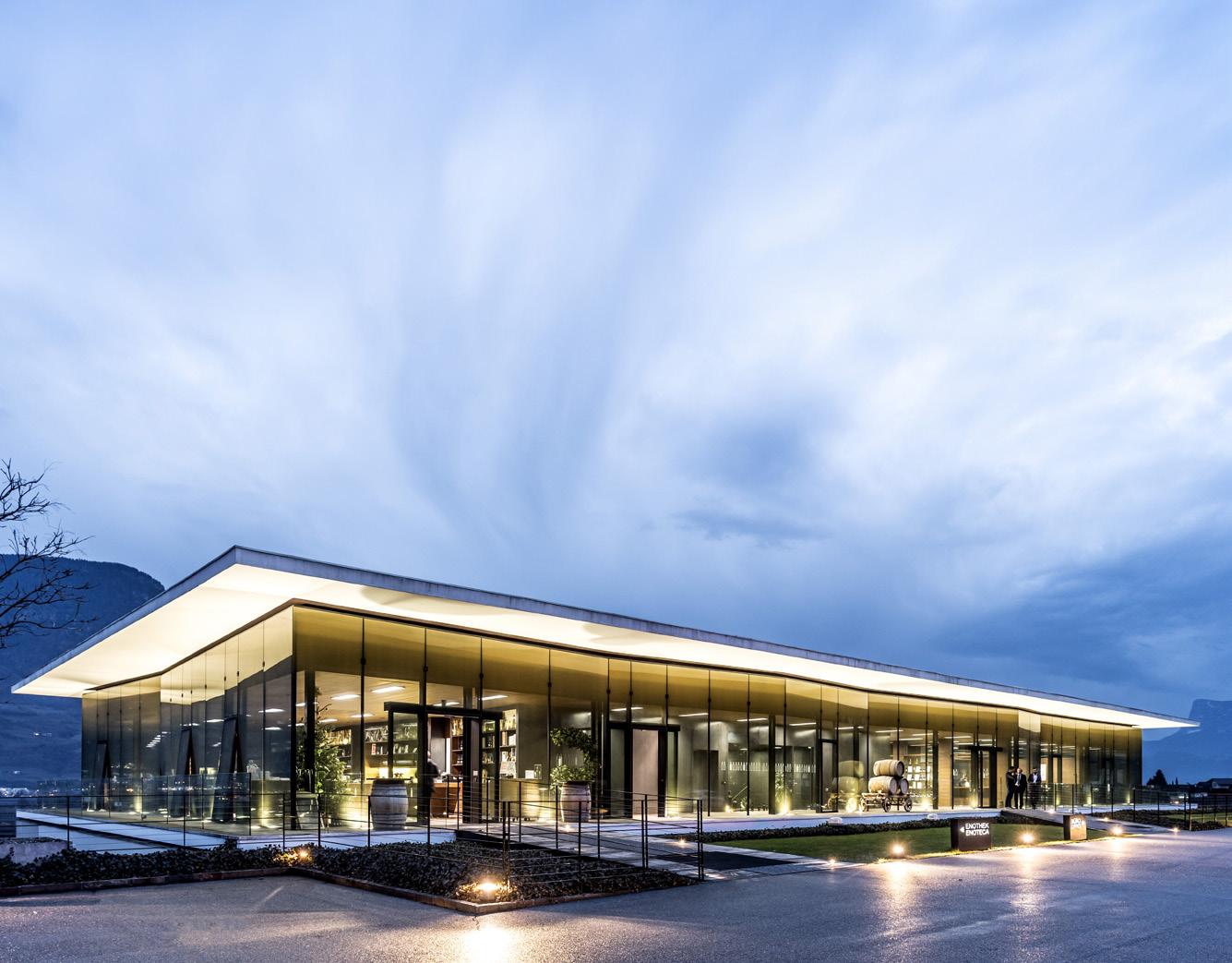
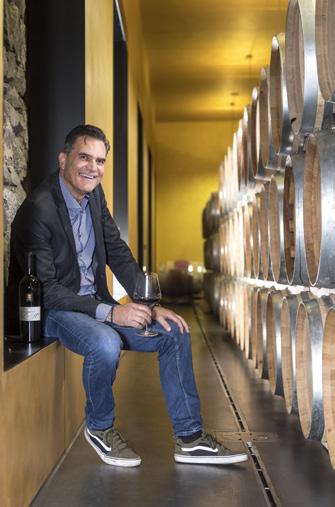
Eine Kellerei, zwei Weinbaugebiete, über 16 verschiedene Traubensorten, die zwischen dem Meraner Talkessel und dem Vinschgau beste Bedingungen vorfinden sowie 350 Mitglieder mit insgesamt 245 Hektar Weinbergfläche stehen für spannende und qualitativ hochwertige Weine. Kellermeister Stefan Kapfinger ist überzeugt: „Der Charakter der Trauben muss auch im Weinglas noch erkennbar sein. Jeder Tropfen soll ein Erlebnis sein“, und bringt es auf den Punkt: „Über 35 verschiedene Weine können bei uns verkostet werden. Es sind authentische Weine, die ihren Wurzeln treu bleiben, von ihrer Herkunft erzählen und den besonderen Charakter der Weinberge widerspiegeln.“
IT Una cantina, due regioni vitivinicole, oltre sedici varietà di uva che trovano le condizioni ideali tra la conca di Merano e la Val Venosta nonché 350 soci conferitori per un totale di 245 ha di vigneti: ecco cosa c’è dietro agli straordinari vini di alta qualità della Cantina Merano. L’enologo Stefan Kapfinger afferma
con convinzione: “Il carattere dell’uva dev’essere riconoscibile nel calice e ogni sorso dovrebbe rappresentare un’esperienza unica”. E aggiunge: “Da noi si possono degustare oltre trentacinque vini diversi, tutti autentici, che rimangono fedeli alle loro origini e riflettono le peculiari caratteristiche dei vigneti con i quali vengono prodotti”.
EN One winery, two wine-growing regions, over 16 grape varieties – which find the best growing conditions between the Merano basin and the Venosta Valley – and 350 members with a total of 245 hectares of vineyards: that’s what guarantees exciting, high-quality wines. Cellar master Stefan Kapfinger is convinced: “The characteristics of the grapes must still be recognisable in the wine glass. Every drop of wine should be an experience.” He summarises: “We offer over 35 different wines for tasting. These are authentic wines that remain true to their ‘roots’, speak of their origins and reflect the special character of the vineyards.”
WEINverliebt ab dem ersten Schluck
In einer streng selektionierten, speziellen Auswahl kleiner Weinberge mit einer strikten, aber zielbewussten Ertragsreduzierung reifen die edelsten Trauben für die Weine und den Sekt der Linie „Weinberge & Raritäten“. Es handelt sich um erlesene Tropfen von besonderer Qualität und für den anspruchsvollen Genießer, wie den Meditationswein Weißburgunder Riserva „V Years“, den Dessertwein Passito „Sissi“ und das prickelnde Meisterwerk unter den Südtiroler DOC-Sekten – den Brut Riserva 36 „metodo classico“.
IT DiVINO dal primo assaggio
Le uve più pregiate per i vini e lo spumante della linea top “Vigneti & Rarità” maturano in piccoli vigneti appositamente selezionati con una rigorosa e mirata riduzione della resa. Si tratta di vini pregiati d’eccellente qualità per gli intenditori più esigenti, come il vino da meditazione Pinot Bianco Riserva “V Years”, il vino da dessert Passito “Sissi” e il capolavoro tra le bollicine DOC made in Alto Adige - il Brut Riserva 36 metodo classico.
The finest grapes for the wines and sparkling wines in the “Vineyards & Rarities” range ripen in a carefully hand-picked, special selection of small vineyards with a rigorous but purposeful reduction in yield. The wines are exquisite drops for those with special quality requirements and for discerning connoisseurs. They include the meditation wine Pinot Blanc Riserva “V Years”, the dessert wine Passito “Sissi” and the sparkling masterpiece among the South Tyrolean DOC sparkling wines: the Brut Riserva 36 “metodo classico”.

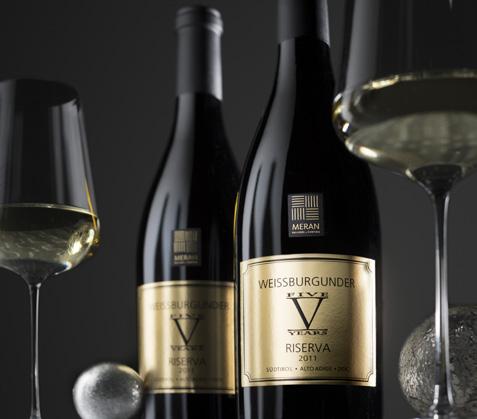
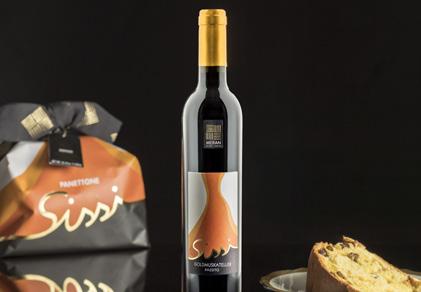
TIPP für ein einzigartiges
Sinneserlebnis: Bei einer Führung mit Verkostung bei der Kellerei Meran in Marling oder in der City.Vinothek im Herzen Merans erhalten Sie eine beeindruckende Einsicht in eine geheimnisvolle und faszinierende Welt der Wein- und Sektherstellung.
IT Per un’esperienza sensoriale unica nel suo genere: immergetevi nel misterioso e affascinante mondo della produzione di vino e spumante durante una visita guidata
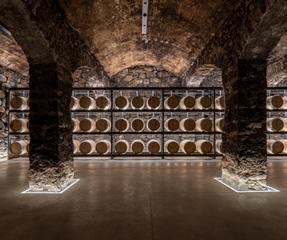
con degustazione presso la Cantina Merano a Marlengo o nella City.Vinothek a Merano – tutti i sensi verranno coinvolti.
EN TIP for a unique experience for all your senses: take a guided tour including a tasting at the Cantina Merano Winery in Marlengo or at the City.Vinothek in the heart of Merano and gain an unforgettable insight into the mysterious and fascinating world of wine and sparkling wine production.
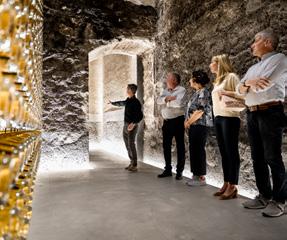
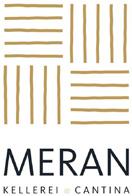
PANORAMIC VINOTHEQUE
Wine Shop . Wine Tasting
CITY.VINOTHEK
Wine Shop . Wine Bar . Wine Tasting
GUIDED TOURS AND TASTINGS
Info +39 0473 447137 www.kellereimeran.it www.cantinamerano.it
Delizie per il palato | Delights for the palate
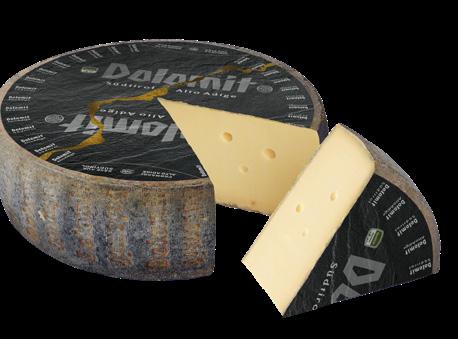
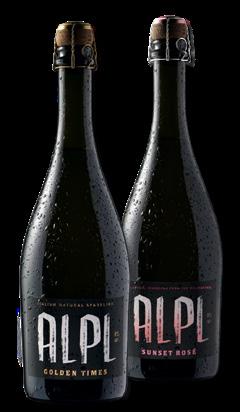
Dolomit. Hergestellt aus bester Südtiroler Milch und gehüllt in eine rustikale Rinde, reift der Hartkäse Dolomit in Ruhe zur Perfektion. Auf der Zunge schmilzt er cremig weich und lässt einzelne Salzkristalle spürbar werden. Sehr aromatisch, mit malzigen Röstnoten und einer leicht pikanten Würze hinterlässt der Dolomit einen bleibenden Eindruck. Dolomit. Prodotto con il miglior latte vaccino dell’Alto Adige e avvolto in una crosta rustica, il formaggio a pasta dura Dolomit matura lunghi mesi fino alla perfezione. Ha una consistenza fondente che, sciogliendosi in bocca, lascia percepire i singoli cristalli dovuti alla stagionatura. Presenta un sapore aromatico con note tostate e leggermente piccanti. Dolomit. Made from the best South Tyrolean milk and wrapped in a rustic rind, the hard cheese Dolomit matures to perfection. On the tongue the Dolomit melts creamily soft, tickling it with individual salt crystals. Its long aging process provides it with an aromatic spice and toasty notes. www.mila.it
Südtiroler Bio-Haferdrink. Vegan, regional, nachhaltig – Hafena, ein Drink aus 100 % Biohafer von Südtiroler Bauernhöfen, cremig aufgeschäumt verfeinert er den Kaffee, er passt perfekt ins Müsli und schmeckt auch pur. Bevanda di avena altoatesina bio. Vegano, locale, sostenibile: il drink Hafena, unicamente a base di avena biologica dell’Alto Adige, è ottimo puro, nei muesli e per fare una cremosa schiuma da aggiungere al caffè. South Tyrolean organic oat drink. Vegan, regional, sustainable – Hafena, made of 100% organic oats from South Tyrolean farms, will refine your coffee, go well with your cereal and taste good on its own. www.hafena.com


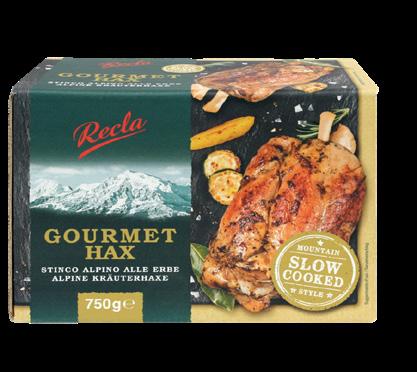
5
Stelvio Gin Organic. Im Nationalpark Stilfserjoch inmitten imposanter Berge destilliert Nicki Wallnöfer auf seinem Biohof beste handgelesene Alpenkräuter und Beeren zu einem herausragenden Aromaerlebnis. Stelvio Gin Organic. Tra le imponenti montagne del Parco nazionale dello Stelvio, Nicki Wallnöfer raccoglie a mano e distilla le erbe alpine e le bacche biologiche della sua azienda – per un aroma eccezionale. Stelvio Gin Organic. In the Stelvio National Park, surrounded by impressive mountains, Nicki Wallnöfer distills the very best hand-picked Alpine herbs and berries, creating an outstanding aromatic experience. www.stelvio-gin.it
4
Alpl Apfelcider Golden Times und Sunset Rosé. Mit seinem ausgewogenen Geschmack und der natürlichen Fruchtigkeit ist der leicht spritzige Cider aus handverlesenen Südtiroler Äpfeln der ideale Aperitifbegleiter. Sidro di mela Alpl Golden Times e Sunset Rosé. Leggermente frizzanti e dal bouquet equilibrato e fruttato, le due varietà di sidro Alpl ottenute da mele altoatesine raccolte a mano sono perfette per l’aperitivo. Alpl apple cider Golden Times and Sunset Rosé. Slightly sparkling with a balanced fruity flavour, the ciders made from handpicked South Tyrolean apples are the perfect drinks enjoyed as an aperitif in good company. www.alplsparkling.com
5
Recla Gourmet Hax. Gourmet-Genuss für zuhause: alpine Schweinshaxe mit Kräutern und aromatischen Gewürzen. Servierbereit in nur 20 Minuten. Stinco gourmet Recla. Un delizioso piatto gourmet da gustare a casa vostra: lo stinco di maiale insaporito da un’aromatica miscela di erbe. Pronto in soli venti minuti. Recla Gourmet Hax. A delicious gourmet dish to enjoy at home: pork knuckle seasoned with an aromatic herb mixture. Ready in just 20 minutes. www.recla.it

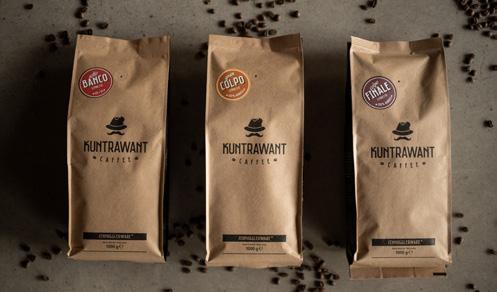
Kaffeespezialitäten. Das Alt-Vinschger Wort für „schmuggeln“, vom italienischen „contrabbando“ abgeleitet, gibt der kleinen Kaffeerösterei Kuntrawant® am Fuße des Ortlergebiets ihren Namen. Einst wurde der Kaffee auf geheimen und gefährlichen Pfaden aus der Schweiz nach Italien geschmuggelt; heute hingegen werden erstklassige legale Bohnen im Trommelröstverfahren in Handarbeit zu hochwertigem Trinkgenuss. Specialità di caffè. Il nome della piccola torrefazione Kuntrawant®, ai piedi dell’Ortles, si rifà all’antico termine venostano per “contrabbando”. Ai tempi che furono, il caffè veniva contrabbandato dalla Svizzera all’Italia lungo percorsi segreti e pericolosi; oggi, invece, nascono pregiate miscele artigianali da chicchi ormai legali, di prima qualità e tostati secondo il tradizionale metodo a tamburo.
Coffee specialties. The coffee roastery Kuntrawant® at the foot of the Ortles mountain is named after a word formerly used for “smuggling” in Val Venosta that derives from the Italian “contrabbando”. Many years ago, coffee was smuggled to Italy from Switzerland on secret and dangerous paths; whereas today, premium legal beans are turned into a high-quality beverage by hand, using the drum roasting method.
www.kuntrawant.com
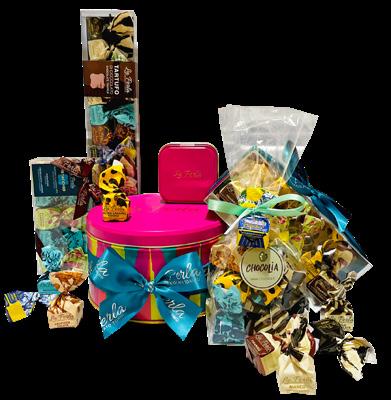
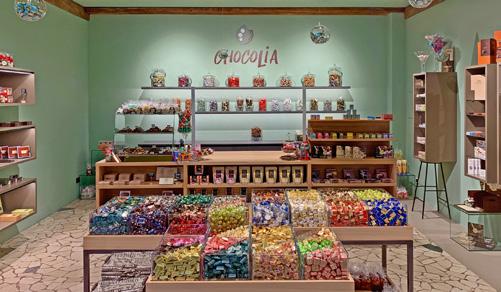
Wahrgewordene Schokoträume. Unter den Lauben Merans befindet sich Chocolia, ein kleines Paradies für alle Schokoliebhaber. Ein erlesenes Sortiment von führenden Herstellern aus aller Welt trifft hier auf süße Verführungen von kleinen innovativen Manufakturen. Pralinen, Trüffel, Marzipan, Nougat, Aufstriche, Tafel- und Trinkschokoladen, Bonbons und Lollis sowie kleine Präsente lassen Herzen höherschlagen. Il paradiso del cioccolato. Sotto i portici di Merano si trova Chocolia, un sogno tramutato in realtà per gli amanti del cioccolato. Qui sono custodite dolci tentazioni sia di produttori leader dal mondo che di piccole manifatture innovative. Praline, tartufi, marzapane, torroni, creme spalmabili, tavolette, cioccolata da bere ma anche caramelle, leccalecca e idee regalo faranno battere il cuore dei golosi. Chocolate dreams come true. Chocolia, a small paradise for chocolate lovers, is located under Merano’s arcades. An exquisite range produced by leading manufacturers from all over the world meets sweet temptations made by small, innovative manufacturers. Pralines, truffles, marzipan, nougat, chocolate spreads, chocolate bars, drinking chocolates, toffees, lollipops, and small gifts will make your heart leap with joy.
www.chocolia.it

1

2
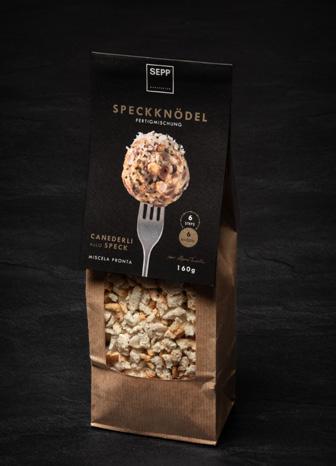

3
1
Whisky mit Biercharakter. Der edle TER Lignum Whisky der Brennerei Roner wird aus einem Malt Blend der Brauerei Forst gebrannt. Er reift in den Hölzern Kirsche, Eiche und Lärche und besticht mit feiner Eleganz und Vielschichtigkeit. Whisky dal malto della birra. Il pregiato TER Lignum Whisky della distilleria Roner viene distillato da un malt blend del birrificio Forst e fatto affinare in tre legni: ciliegio, rovere e larice – per un’elegante complessità di aromi. Whisky with beer character. This precious TER Lignum Whisky by Roner is distilled from the Forst brewery’s malt blend. It matures in wood barrels – cherry, oak, and larch – and impresses with its elegance and complexity. www.roner.com
2
Entdecke den natürlichen Genuss mit Agnes & Luis! Unsere Produkte, aus erlesenen, lokalen Zutaten hergestellt, spiegeln die Liebe zum Detail und die Hingabe zur Qualität wider. Von unserem Garten direkt auf deinen Tisch. Scopri il gusto naturale con Agnes & Luis! I nostri prodotti, a base di ingredienti locali selezionati, riflettono la passione per i dettagli e la dedizione alla qualità. Dal nostro orto direttamente sulla tua tavola. Discover the natural delight with Agnes & Luis! Our products, made from selected local ingredients, reflect our passion for detail and our dedication to quality. From our garden straight to your table. www.agnesluis.it
3
Erlebe die einzigartige Frische der Südtiroler Heumilch von Brimi! Egal ob cremiger Mozzarella für Pizza und Pasta oder leckere Mozzarelline als Snack – die Qualität und der Geschmack werden dich begeistern! Prova la freschezza unica del latte fieno altoatesino di Brimi! Che si tratti di una cremosa mozzarella per pizza e pasta o di deliziose mozzarelline per uno spuntino: la qualità e il gusto ti conquisteranno! Experience the unique freshness of South Tyrolean hay milk from Brimi! Whether it’s creamy mozzarella, perfect for pizza and pasta, or delicious mozzarella bites as a snack – the quality will amaze you! www.pursuedtirol.com
4
SEPP'Manufaktur Speckknödel. Milch und Eier zur Mischung geben und fertig ist die Südtiroler Hausmannskost! Ob mit Rindssuppe, Sauerkraut, Salat oder Gran'SEPP Hartkäse: Die Knödel begeistern mit ihrer herzhaften Note und angenehmen Textur. Canederli allo speck SEPP'Manufaktur. Unire latte e uova alla miscela ed ecco pronta la specialità altoatesina! Serviti con brodo, crauti, insalata o formaggio Gran'SEPP: i canederli conquistano con un sapore e una consistenza inconfondibile. SEPP'Manufaktur Speck Dumplings. Simply add milk and eggs to the mixture and the South Tyrolean meal is ready! Whether served with broth, sauerkraut, salad or Gran'SEPP cheese: the dumplings will delight you with their savoury taste and texture. www.sepp-shop.com

5
Portugiesisch genießen: Der Likörwein AMADEO der Kellerei Meran ist eine erfolgreiche Interpretation des bekannten Portweins aus Portugal. Saúde, cin cin in portoghese: AMADEO è la riuscita interpretazione della Cantina Merano del celebre Porto, il vino liquoroso tipico del Portogallo. Portuguese indulgence: Enjoy Cantina Merano Winery’s successful interpretation of the famed Portuguese port wine: a liqueur wine called AMADEO. www.kellereimeran.it | www.cantinamerano.it
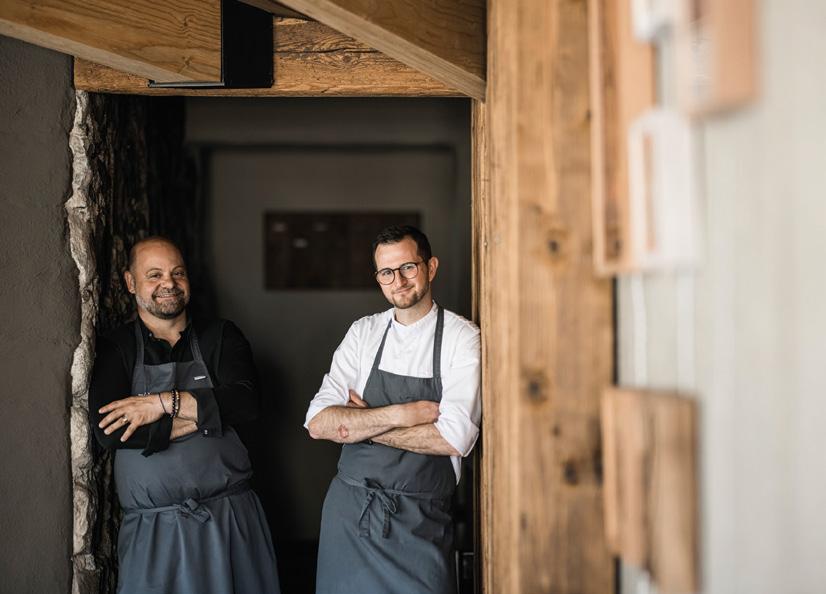


GAMPENSTRASSE/VIA PALADE 1 . I-39010 TSCHERMS/CERMES INFO@MIIL.IT . +390473563733 . WWW.MIIL.IT


Wo sich herrschaftliche Häuser mit hundertjährigen Bäumen abwechseln, genau dort befindet sich Obermais, das Villenviertel der Kurstadt Meran. Folgen Sie dem Sissiweg von der Altstadt bis zu Schloss Trauttmansdorff mit
seinem Lichterpark Lumagica und schlendern Sie an weiteren Ansitzen wie den Schlössern Pienzenau, Rubein und Rametz vorbei. Verknüpfen lässt sich ein Ausflug nach Obermais aber auch mit einem Tag auf der Piste oder im Winterwald,
denn von hier bringt Sie die Seilbahn hoch nach Meran 2000.
Dove case signorili si alternano ad alberi secolari, proprio lì si trova Maia Alta, il quartiere delle ville della città termale di
Merano. Seguite il Sentiero di Sissi dal centro storico fino a Castel Trauttmansdorff, dove c’è il parco luminoso Lumagica, e passeggiate tra residenze come i castelli Pienzenau, Rubein e Rametz. Potete combinare la vostra gita a Maia Alta anche con una giornata sulle piste o tra i boschi innevati: da qui la funivia porta fino a Merano 2000.
Maia Alta, the residential neighbourhood of the spa town of Merano, is the place where stately houses alternate with centuries-old trees. Stroll along the Sissi Path from the old town centre up to Trauttmansdorff Castle with its “Lumagica Park of Lights” and past other stately residences such as Pienzenau, Rubein and Rametz Castles. A trip to Maia Alta can also be combined with a day on the slopes or in the winter forest, as the cable car takes you up to Merano 2000 from here.
www.merano-suedtirol.it
Ein Urwald aus über 12.000 exotischen Orchideen und Pflanzen, in dem Papageien und Schmetterlinge umherflattern sowie Koi-Karpfen und Schildkröten durch das Wasser gleiten: Das ist die Raffeiner Orchideenwelt in Gargazon. Während draußen der Winterwind durch die Gassen weht, ist es hier drinnen angenehm warm und ruhig. Neben einer Tropenvilla warten auch ein Kinderspielplatz, eine Schatzsuche und ständig wechselnde Blütenhighlights. Tauchen Sie ins Dschungelleben ein!
Una foresta di oltre 12.000 orchidee e piante esotiche, dove svolazzano pappagalli e farfalle e, in acqua, nuotano carpe koi e tartarughe: questo è il Raffeiner Orchideenwelt, il mondo delle orchidee di Gargazzone. Mentre all’esterno il vento invernale soffia tra le strade, all’interno è piacevolmente caldo e tranquillo.
Qui, oltre alla villa tropicale, troverete anche un parco giochi, una caccia al tesoro e fiori in continuo cambiamento. Immergetevi nella vita della giungla!
A primaeval forest of over 12,000 exotic orchids and plants,
with parrots and butterflies fluttering about and koi carp and turtles gliding through the water: This is the “Raffeiner Orchideenwelt” in Gargazzone. While outside the winter wind blows through the alleyways, it is pleasantly warm and quiet
inside. In addition to a tropical villa, there is also a children’s playground, a treasure hunt and constantly changing flower highlights waiting for you. Immerse yourself in jungle life!
www.raffeiner.net


Storico, artistico, vivace: il quartiere della felicità
Historical, artsy, cool: A neighbourhood filled with happiness
Mein Blick schweift aus dem Fenster. Nebelfetzen ziehen am Fuße des Vigiljoch vorbei. Nieselregen fällt. Gut, dass ich heute eine weitere Wanderung abgesagt habe. Die zehn runden Extrakilos auf meinem über 50-jährigen Körper in ein paar Tagen schmelzen lassen wie Gelato auf der Kurpromenade bei 30 °C im Schatten? Das habe ich keineswegs vor.
Weit entfernt von einem Tagesplan, lasse ich das Löffelchen etliche Runden im morgendlichen Cappuccino drehen. Bei Nieselregen sollte man nicht das tun, was alle anderen machen, wie Glücksshoppen in den Lauben, das Palais Mamming besuchen oder sich in die Sauna der Therme Meran kuscheln, das sagt zumindest der Ferienverstand. Weswegen ich auf eigenen Pfaden im eigenen Trott durch die Gassen Merans schlendern werde.
Richtung Steinachviertel, warum nicht? Es ist das älteste Stadtviertel Merans und geht auf das 12. Jahrhundert zurück. Dort hatte der Burggraf seinen Wohnsitz, der Henker und die Freudenmädchen ebenso. Ich komme an dem schwarz-weißen Wandbild von Blu e Ericailcane vorbei – hier kann man lange stehen und vieles entdecken. Das gilt für das Viertel generell: Ich stoße auf reich verzierte Haustüren, aufwändig geschnitzte Portale, entdecke ein marmornes Halbrelief eines kleinen Löwen, der eine Türklingel umrahmt.
Ein paar Schritte weiter, direkt an der Mauer von Haus Seisenegg, komme ich mir vor, als sei ich in einem privaten Wohnzimmer gelandet. Hier gibt es Fotografien von Steinachtagen und -nächten, von ihren Bewohnerinnen und Liebhabern. Der Name der Wandkunst sagt es ja: „Wohnzimmer Steinach“. Die entzückende Hommage von Laura Zindaco und Damian Pertoll ist das neueste Projekt des Steinachviertelkomitees, das für bleibende Kunst im Viertel sorgen will. Das Haus Seisenegg hinge-
Im Steinachviertel kann man viele kleine Details entdecken.
Nel quartiere Steinach si possono scoprire infinti piccoli dettagli.
You can discover many beautiful hidden details in the Steinach quarter.

gen gibt es deutlich länger: 1483 ließ Herzog Sigismund ein Spital und Versorgungshaus erbauen, das ab 1905 ausschließlich als Versorgungshaus für die Armen der Stadt genutzt wurde. Den Grundstein für ein erstes Spital legte jedoch bereits Graf Meinhard von Tirol im Jahr 1271.
Nun sehe ich ihn direkt vor mir, den 15 m hohen Pulverturm, Bergfried der ehemaligen Burgruine Ortenstein. Erbaut im 13. Jahrhundert von den Grafen von Tirol, stammt sein Name von seiner Zeit als Sprengpulverlager im 30-jährigen Krieg. Meinen zehn Extrakilos gebe ich einen Schubs und laufe die Treppen an der Pfarrkirche bis auf den Tappeinerweg hoch. Der leichte Regen hat sein Gutes: Während ich auf den Pflastersteinen der Stadt dem ein oder anderen Schirm ausweichen musste, scheint der ansonsten stark frequentierte Weg heute von befreiender Luftigkeit.
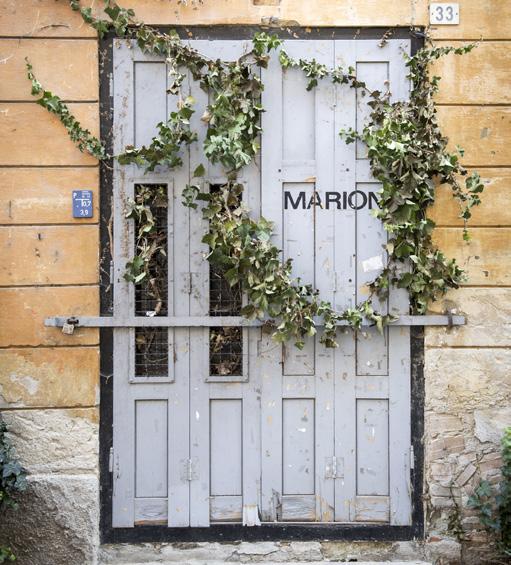
Hier werden selbst Türen zum Kunstwerk.
Qui, i portoni sono vere e proprie opere d’arte.
Even doors are works of art here.
Muss ich die Treppen des Pulverturms erklimmen, fragt sich mein keuchendes Ich. Die Antwort kommt stehenden Fußes mit einem klaren „Nein!“ daher. Anstelle dessen nehme ich Kurs auf ein verlockendes kleines Etwas namens Chiosco Pulversturm. Ich höre Südtiroler Dialekt. Italienisch. Ein Paar aus Schweden nippt an vormittäglichen Drinks. Wie großartig der kleine Kiosk wirklich ist, merke ich, als ich die Cozze alla Marinara probiere. Und weil das Kleid, das ich im letzten Jahr gekauft habe, morgen noch passen soll, tunke ich mit extra viel Brot die Köstlichkeit auf und genieße. Und danach? Wer weiß, was die anderen Viertel der Stadt zu bieten haben.
Il mio sguardo vaga fuori dalla finestra. La nebbia si addensa ai piedi del Monte San Vigilio; pioviggina. Fortunatamente ho disdetto un’altra escursione oggi. Dopotutto, non ho in mente di smaltire in pochi giorni i dieci chili di troppo che vedo sul mio corpo da ultra cinquantenne, con la stessa velocità con cui un gelato si scioglie sul Lungopassirio a 30 °C all’ombra. L’idea non mi sfiora nemmeno.
Non avendo alcun progetto per la giornata, disegno ampi cerchi con il cucchiaino nella tazza colma di cappuccino. Nei giorni di pioggia, attenendosi ai consigli per una vacanza ottimale, sarebbe preferibile evitare le attività che fanno tutti, come dedicarsi allo shopping sfrenato sotto i portici, visitare il Palais Mamming Museum o rilassarsi nella sauna delle Terme di Merano. Ecco perché oggi mi concederò una passeggiata tra i vicoli di Merano, al mio ritmo.
Verso il quartiere Steinach, perché no? È il rione più antico della città e risale al XII secolo. Un tempo vi risiedevano il burgravio, il boia e
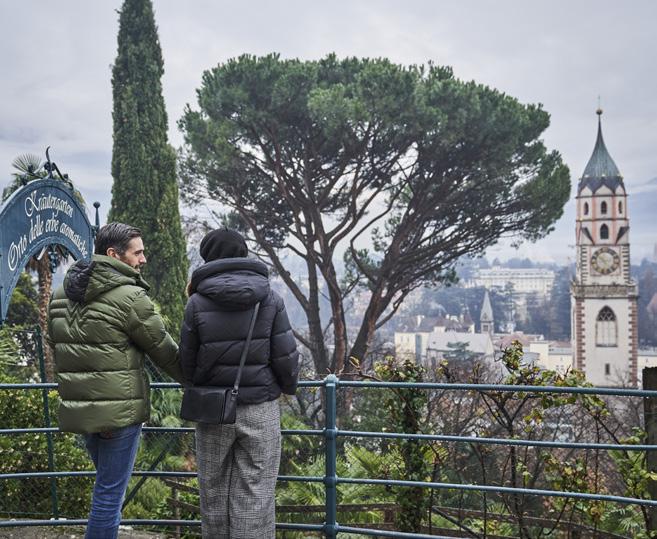
le donne di piacere. Passo davanti al murale in bianco e nero di Blu e Ericailcane, si potrebbe sostare a lungo qui davanti e scoprire infinite cose. Anzi, ciò vale per tutto il quartiere: mi imbatto in portoni riccamente decorati, in portali scolpiti con maestria e scopro un mezzo rilievo in marmo raffigurante un piccolo leone che incornicia un campanello.
Pochi passi più avanti, proprio accanto alle pareti di Haus Seisenegg, mi sembra di trovarmi in un salotto privato. Ci sono fotografie che ritraggono Steinach di giorno e di notte, i suoi abitanti e i suoi innamorati. Il nome dell’opera d’arte murale dice tutto: “Wohnzimmer Steinach – omaggio al quartiere”. Questa affascinate creazione di Laura Zindaco e Damian Pertoll è il più recente dei progetti del comitato Steinach, che mira a realizzare opere d’arte permanenti nel quartiere. L’edificio Haus Seisenegg, invece, esiste da molto più tempo: nel 1483, il duca Sigismondo fece costruire un ospedale e una casa di ricovero, che dal 1905 venne utilizzata esclusivamente per i poveri della città. Tuttavia, la prima pietra dell’allora ospedale fu posata ancora nel 1271, dal conte Mainardo di Tirolo.
Ora, davanti a me si erge la Torre delle Polveri, alta 15 m, il mastio dell’antico castello di Ortenstein. Costruita nel XIII secolo dai conti del Tirolo, il suo nome deriva dalla funzione di deposito di polvere da sparo durante la Guerra dei trent’anni. Ignoro i miei dieci chili di troppo e mi spingo fino in cima ai gradini della chiesa parrocchiale, fino all’imbocco della Passeggiata Tappeiner. La pioggerellina ha i suoi vantaggi: se in città mi ritrovavo a schivare qualche ombrello, lungo la passeggiata – solitamente troppo affollata – oggi si gode invece di una calma liberatoria.
Devo proprio salire le scale della Torre delle Polveri? Chiede il mio inconscio già ansimante. La risposta è ovviamente un sonoro “No!”.
Ein Regentag auf dem Tappeinerweg hat seinen ganz eigenen Charme.
Tutto lo charme della Passeggiata Tappeiner in un giorno di pioggia.
The charm of a rainy day on the Passeggiata Tappeiner.
Preferisco dirigermi verso un piccolo e intrigante luogo detto Chiosco Pulversturm. Sento parlare in dialetto altoatesino. Ma anche in italiano. Una coppia di svedesi sorseggia un drink mattutino. Mi rendo davvero conto di quanto sia magnifico il chiosco quando assaggio le cozze alla marinara. Considerando che il vestito che ho comprato l’anno scorso dovrebbe starmi anche domani, faccio la scarpetta in questa prelibatezza con un po’ di pane in più, gustandola appieno. E dopo? Chissà cosa offrono gli altri quartieri della città.
My gaze wanders beyond my window. Scattered fog drifts past the foot of the Monte San Vigilio. There’s a drizzle. I’m glad I cancelled my hiking plans for today. Would I like to melt ten extra kilos off my over 50-year-old body in a few days like a gelato on the spa promenade at 30 °C in the shade? I have no intention of doing that.
I make my spoon do several laps in my morning cappuccino, quite far from having any plan for the day. On a drizzly day, one should not be doing what everyone else is doing. So I’m not going shopping in the arcades, I’m not visiting the Palais Mamming museum and I’m also not snuggling up in the sauna at the Terme Merano. Instead, I’m going to stroll through the alleyways of Merano at my own pace.
Towards the Steinach quarter, why not? Dating back to the 12th century, it is the oldest neighbourhood in Merano. The Burgrave had his residence there, as did the executioner and the ladies of pleasure. I pass the black and white mural by Blu e Ericailcane – one could stand here for a long time and discover countless hidden details. The same can be said of the neighbourhood in general: I come across richly decorated front doors, elaborately carved portals and discover a half-relief made of marble in the shape of a small lion that frames a doorbell.
A few steps further on, right next to the wall of Seisenegg House, I feel as though I have wandered into a private living room. There are photographs of days and nights in Steinach, of its inhabitants and those who love it. The name of the wall art says it all: Steinach Living Room. The delightful homage created by Laura Zindaco and Damian Pertoll is the latest project by the Steinach Quarter Committee, which aims to create long-lasting art in the neighbourhood. Seisenegg House, on the other hand, has been around for quite some time already: in 1483, Duke Sigismund commissioned the construction of a hospital and supply house, which was then exclusively used as a supply house for the city’s destitute from 1905 onwards. However, the foundation stone for the first hospital was laid by Count Meinhard of Tyrol as early as 1271.
I can now see it right in front of me, the 15 m tall Powder Tower, the keep of the former Ortenstein castle ruins. It was built by the Counts of Tyrol in the 13th century and owes its name to the fact that it was used to store explosive powder during the Thirty Years’ War. I give my ten extra kilos a push and walk up the steps by the parish church to the Passeggiata Tappeiner. There’s an upside to the light rain: while I had to dodge the odd umbrella walking on the cobblestones of the city, the otherwise busy route today seems to have a liberating sense of airiness.
“Do I have to climb the stairs of the Powder Tower?" I ask myself, panting. The answer is a clear resounding “No!” Instead, I set course for a tantalising little café called Chiosco Pulversturm. As I sit down, I hear the South Tyrolean dialect. Italian. A couple from Sweden is sipping their morning drinks. I soon realise how wonderful this little place really is when I try the Cozze alla Marinara. And since the dress I bought last year will still fit me tomorrow, I dip some extra bread into the delicacy and savour it. And afterwards? Let’s see what the other neighbourhoods of the city have to offer.
www.meran.eu www.termemerano.it www.meran2000.com
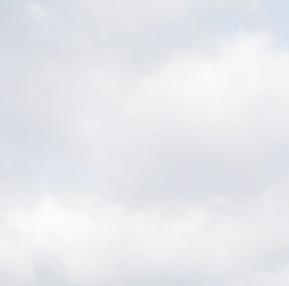


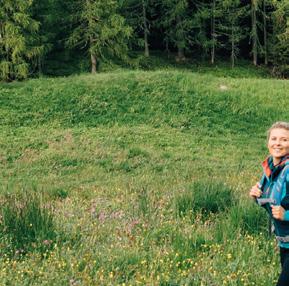


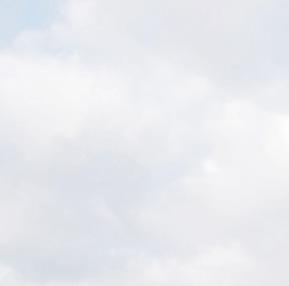
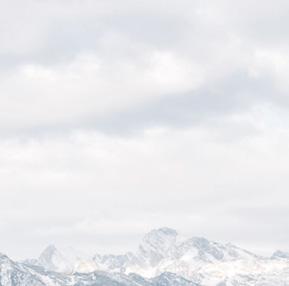







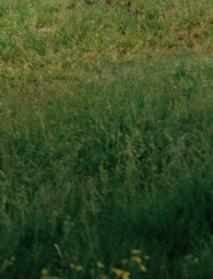

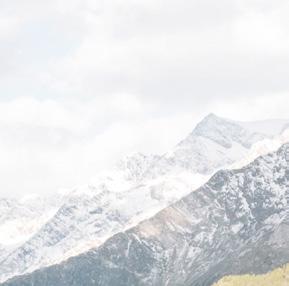

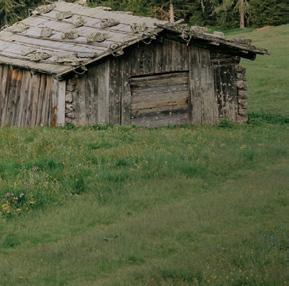
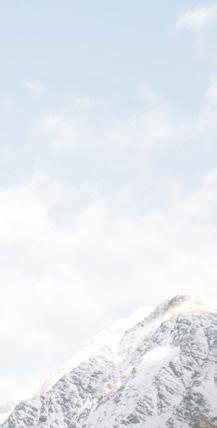

Zwischen schneebedeckten Bergen und Blüten: Dein Frühlingsabenteuer wartet!
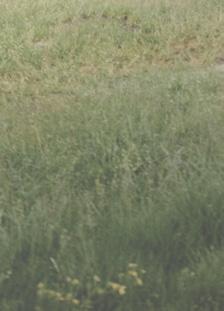



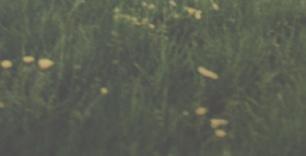
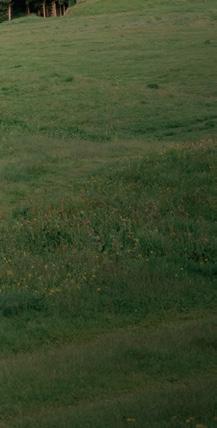

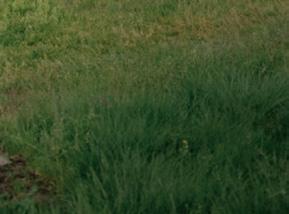
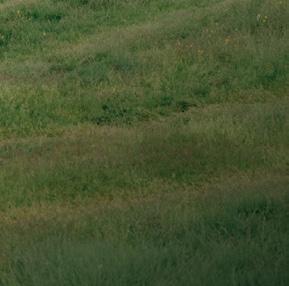






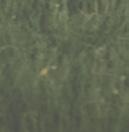

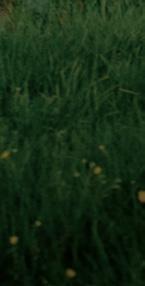
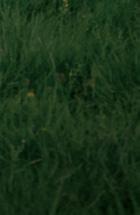








Tra montagne innevate e fiori: la tua avventura primaverile ti aspetta!
Between snow-covered mountains and blossoms: your spring adventure awaits!
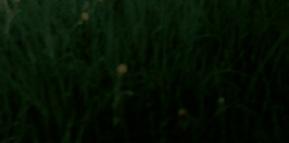


passeiertal.it


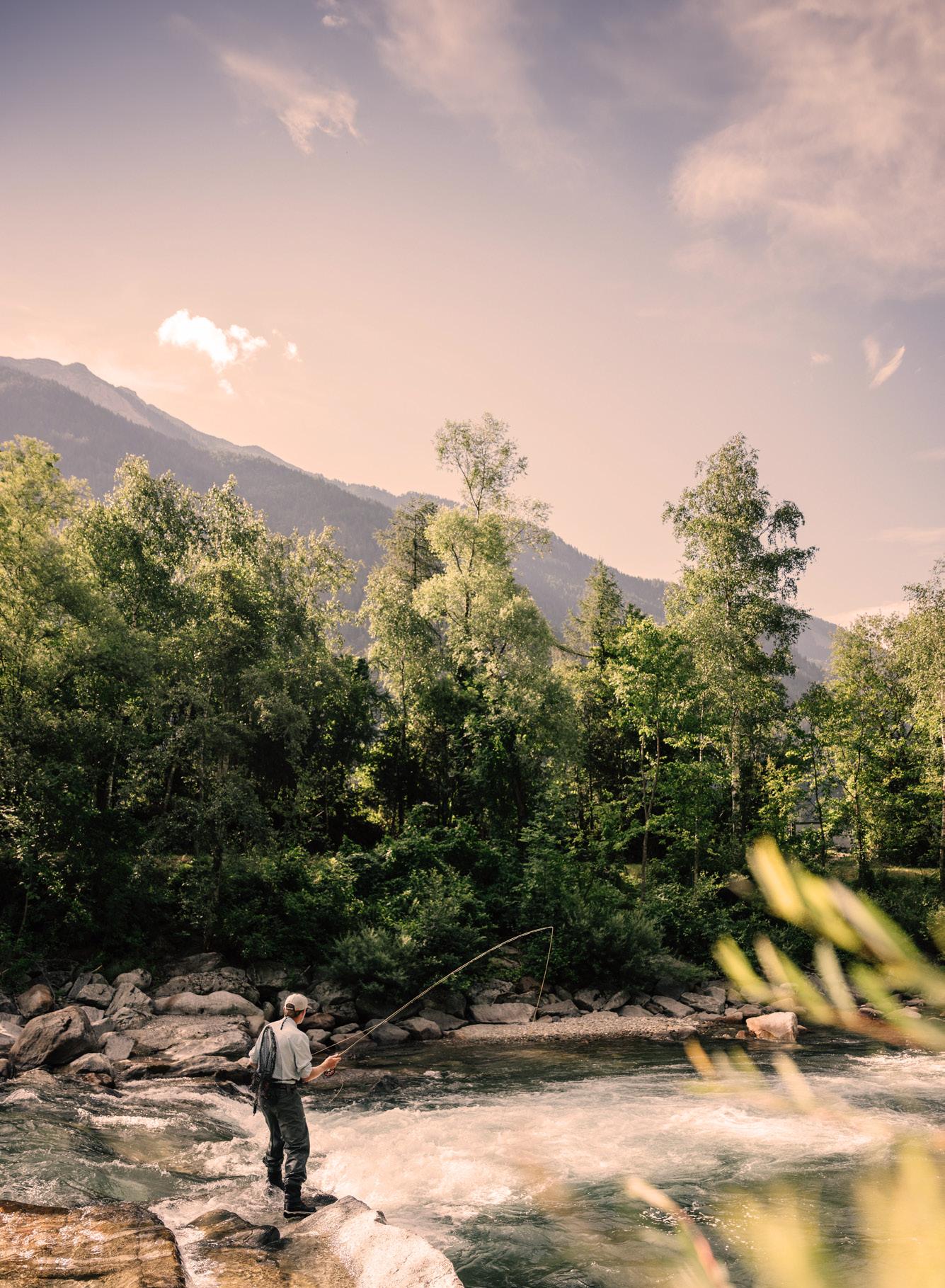
Quando pescatori e golfisti sognano la primavera in Val Passiria When fishermen and golfers dream of spring in the Passeiertal Valley
Während draußen die Blätter durch die Luft wirbeln oder die Schneeflocken vom Himmel rieseln, freuen sich die einen oder anderen bereits wieder auf blütenreiche Frühlingstage. Im Passeiertal geht dann für Angler, Fliegenfischer und Golfer die Saison wieder los.
Die Gipfel liegen noch unter einer meterhohen Schneedecke und so ganz hat sich der Winter auch im Tal noch nicht verabschiedet, doch das stört die Angler und Fliegenfischer an der Passer nicht. Jetzt, im Februar, schickt die Sonne bereits erste warme Strahlen Richtung Passeiertal. Es wird nicht mehr lange dauern, bis die Obstbäume Knospen tragen und die ersten Frühblüher wie wilde Krokusse die Almen in den Bergen in weiß-lila Blütenteppiche verwandeln. Das Rauschen der kristallklaren Passer mischt sich mit dem Zwitschern der Vögel. Angeln und Fliegenfischen in Südtirol ist ein Naturerlebnis – und lässt sich erlernen! Im Passeiertal führt Arnold Gufler eine ganz besondere Schule: Er ist der einzige zertifizierte Fliegenfischerguide in Südtirol. Ob Wurf-, Fliegenbinde- oder Hechtkurse, er verrät Anfängern und Fortgeschrittenen die Geheimnisse dieser anspruchsvollen Aktivität. Wurftechniken werden gelehrt und verfeinert, Wurffehler korrigiert und es gibt Einführungen zu den Themen Geräte-, Insekten- und Knotenkunde. Arnold zeigt den Kursteilnehmenden, wie man die richtige Fliegenwahl am Wasser trifft und Gewässer liest. Und von Gewässern gibt es im Passeiertal reichlich. Neben der Passer und dem Pfeldererbach, in denen sich Bachund Regenbogenforellen, Marmorierte Forellen und Bachsaiblinge tummeln, sind auch die
Die ersten grünen Wiesen des Jahres locken raus an die frische Luft.
I primi prati in fiore dell’anno invogliano a uscire all’aria aperta.
The year’s first green meadows lure you out for some fresh air.

Bergseen im Hinterpasseier wie der Schwarzsee auf 2400 m und der Seeber See auf 2000 m bei Einheimischen und internationalen Gästen äußerst beliebt. Wer selbst die Rute auswerfen möchte, der benötigt eine italienische Fischereilizenz, die in den Tourismusbüros erhältlich ist, sowie eine Fischwasserkarte (Tageskarte).
Technisch anspruchsvoll und naturnah ist auch das Golfen in Südtirol. Im Passeiertal muss man nicht allzu lange auf den Saisonstart warten, denn dank der milden Temperaturen und seiner guten Lage ist der Golf-
club Passeier.Meran von März bis November und somit fast das ganze Jahr über bespielbar. Besonders einzigartig ist ein Spiel natürlich zu Beginn oder gegen Ende der Saison, wenn die Berge weiß sind, aber im Tal das mediterrane Feeling überwiegt. 1996 wurde die Anlage im Passeier als 9-Loch-Golfplatz errichtet und nur acht Jahre später auf 18 Löcher erweitert. Dank der strategisch platzierten Teiche, Wasserhindernisse und Bunker finden Golfer jeglicher Könnensstufe hier ein kleines Paradies. Ein präzises Spiel ist jedoch gefragt, denn ansonsten bewegt sich ein schlecht platzierter Ball gerne eigenständig Richtung Tal. Neben einer zweistöckigen Driving Range mit 20 Abschlagplätzen, einem 3-Loch-Übungsplatz, einem Putting Green und einer Chip-

Golfen erfordert Konzentration und Präzision.
Il golf richiede concentrazione e un gioco preciso.
Golfing requires both concentration and precision.
ping Area dürfen natürlich auch ein Bistro mit Panoramaterrasse sowie ein Pro Shop nicht fehlen. Zu Saisonbeginn bietet der Golfclub Passeier.Meran besondere Vorteilspreise. So kann man im März dank des „Greenfee-Rabatts“ ganztags 18 Löcher zum Preis einer 9-Loch-Runde spielen. Im April hingegen gelten diese Konditionen mit dem „Sunset Special“ ab 15:00 Uhr. Wer sich mal ganz unverbindlich im Golfsport ausprobieren möchte, der sollte das Angebot „Putt & Drive“ in Anspruch nehmen. Ausgerüstet mit einem Leihschläger und Golfbällen kann man sich unter der persönlichen Einweisung eines Mitarbeiters des Golfclubs auf der Driving Range und dem Putting Green in Abschlägen üben. Egal in welchem Bereich man seiner Golfleidenschaft nachgeht, begleitet wird man dabei ständig von einem traumhaften Alpenblick und dem Duft von Lärchen und Zirben, die den Golfplatz säumen. Mit anderen Worten: Im Passeiertal wartet ein 360°-Naturerlebnis!
Mentre le foglie volteggiano al vento o i fiocchi di neve cadono leggeri dal cielo, qualcuno aspetta già con trepidazione il ritorno della primavera, con i suoi fiori e il tepore delle giornate di sole – perché è allora che ricomincia la stagione per i pescatori e i golfisti.
Im Passeiertal fliegt der Golfball Richtung Gipfel.
In Val Passiria la pallina da golf pare volare verso le vette.
The golf ball flies towards the peaks in the Passeiertal Valley.
Sulle vette ci sono ancora metri di neve e anche nel fondovalle l’inverno del tutto non se n’è andato, ma questo non disturba i pescatori lungo il torrente Passirio. Ora, a febbraio, il sole comincia a illuminare la Val Passiria con raggi sempre più caldi. Ancora poco e gli alberi si caricheranno di gemme, mentre i crochi, tra i primi fiori a sbocciare, tramuteranno i prati alpini in tappeti di corolle bianche e lilla. Lo scrosciare del cristallino Passirio si confonde con il cinguettio degli uccelli… Praticare la pesca in Alto Adige, nello stile tradizionale o a mosca, fa proprio godere del contatto con la natura – e lo si può imparare! In Val Passiria esiste un’apposita scuola gestita da Arnold Gufler, l’unica guida certificata di pesca a mosca della regione. Che si tratti di corsi di lancio, di costruzione di mosche artificiali o di pesca al luccio, lui svela tutti i segreti di questo affascinante mondo sia ai principianti che ai più esperti: un’opportunità per apprendere e affinare le corrette tecniche di lancio e acquisire nozioni utili riguardo all’attrezzatura, agli insetti e ai nodi. Arnold mostra inoltre come leggere le acque e scegliere la mosca più adatta. In quanto ai luoghi dove pescare, in Val
Passiria ce n’è in abbondanza. Oltre al torrente Passirio e al Rio Plan – habitat del salmerino così come della trota comune, iridea e marmorata –, sono molto frequentati dalla gente del posto e dagli ospiti internazionali anche alcuni laghi dell’alta valle, tra cui il Lago Nero di Tumulo a 2400 m e il Lago dell’Alpe a 2000 m. Chi desidera lanciare la lenza in autonomia necessita della licenza di pesca italiana, disponibile presso gli uffici turistici, oltre che di un permesso giornaliero.
Un’altra disciplina, altrettanto impegnativa tecnicamente, per stare a contatto con la natura altoatesina è il golf. In Val Passiria la stagione è molto lunga: grazie alla sua posizione favorevole e alle temperature miti, infatti, il Golfclub Passiria.Merano è aperto da marzo a novembre, praticamente tutto l’anno. Il contesto paesaggistico più suggestivo si ha proprio all’inizio e alla fine della stagione, quando le cime sono innevate mentre a valle predomina un’atmosfera mediterranea. Il campo venne inaugurato del 1996 con 9 buche e, appena
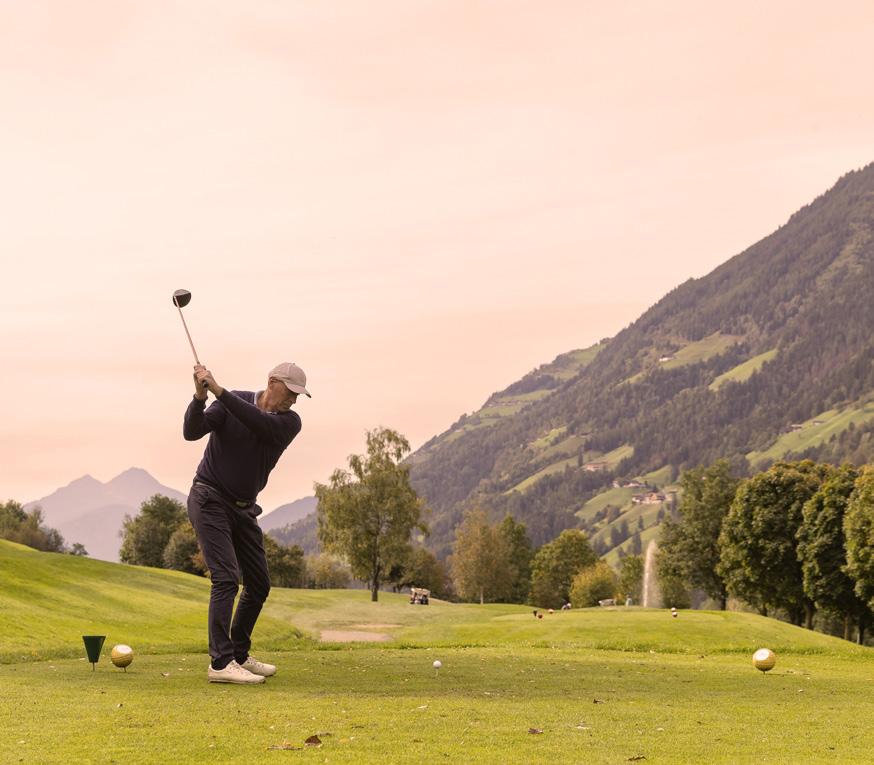

otto anni dopo, ampliato a 18 buche. Grazie ai laghetti, agli ostacoli d’acqua e ai bunker disposti strategicamente, rappresenta un gioiellino per i golfisti di ogni livello. Tuttavia, richiede un gioco preciso, altrimenti la pallina, se mal direzionata, tende naturalmente a muoversi verso valle. Oltre a una driving range a due piani con venti postazioni di lancio, un campo pratica a tre buche, un putting green e un’area di chipping, ci sono pure un bistrò con terrazza panoramica e un Pro Shop. All’inizio della stagione, il Golfclub Passiria.Merano riserva offerte speciali. A marzo, ad esempio, è possibile giocare a 18 buche al prezzo di una partita a 9 buche. Ad aprile, le stesse condizioni si applicano a partire dalle 15:00, grazie alla promozione “Sunset Special”. Coloro che desiderano cimentarsi in questa disciplina possono provare il pacchetto “Putt & Drive”: attrezzati con mazza a noleggio e palline ci si può esercitare nella driving range e sul putting green affiancati individualmente da uno dei professionisti del golf club. In qualunque area del campo da golf si pratichi questo affascinante sport, si è sempre accompagnati da un panorama montano mozzafiato e dal profumo balsamico dei larici e dei cirmoli tutt’attorno. In altre parole: in Val Passiria si vivono esperienze nella natura davvero immersive!
While outside the leaves are swirling through the air or the snowflakes are falling from the sky, some are already looking forward to and dreaming of the flower-filled
In der von Natur umgebenen Passer macht das Fischen noch mehr Spaß.
Nel Passirio, immerso nella natura, pescare è ancora più entusiasmante.
Fishing is even more fun surrounded by nature in the Passer River.
plenty of bodies of water in the Passeiertal Valley. In addition to the Passer River and the Pfeldererbach – which are home to brown and rainbow trout, marbled trout and brook trout – the mountain lakes in the lower Passeiertal Valley, such as Großer Schwarzsee Lake at 2,400 m and Seebersee Lake at 2,000 m, are also extremely popular with locals and international guests. If you want to cast your own line, you will need an Italian fishing licence, which is available from the tourist offices, as well as a fishing permit (day ticket).
spring days. That’s when the new season starts for fishermen, fly fishermen and golfers in the Passeiertal Valley.
The peaks are still covered in several metres of snow and winter hasn’t quite left the valley yet, but that doesn’t bother the fishermen and fly fishermen along the Passer River. Now, in February, the sun is already sending its first warm rays towards the Passeiertal Valley. Soon the fruit trees will be bursting into bud and the first early bloomers, such as wild crocuses, will transform the mountain pastures into carpets of white and pink flowers. The murmur of the crystal-clear Passer River mingles with the chirping of the birds. Fishing and fly fishing are an outdoor experience in South Tyrol – and can be learnt! Arnold Gufler runs a very special school in the Passeiertal Valley: he is the only certified fly fishing guide in South Tyrol. Whether casting, fly tying or pike lessons, he reveals the secrets of this challenging activity to both beginners and advanced fishermen. Casting techniques are taught and refined, casting errors are corrected and there are introductions to the subjects of tackle, insects and knots. Furthermore, Arnold shows course participants how to choose the right flies and how to read the water. And there are
South Tyrol’s golf courses are also technically challenging and close to nature. In the Passeiertal Valley you don’t have to wait too long for the start of the season. Thanks to the mild temperatures and its favourable location, the Passeier.Merano Golf Club can be played from March to November and is therefore open almost throughout the year. Naturally, a game is particularly memorable at the beginning or end of the season, when the mountains are white but the Mediterranean feeling prevails in the valley. The course in the Passeiertal Valley was built as a 9-hole golf course in 1996 and expanded to 18 holes just eight years later. Thanks to the strategically placed ponds, water hazards and bunkers, golfers of all abilities will find a small paradise here. Precision is required, however, as otherwise a poorly placed ball is likely to head downhill on its own. In addition to a two-storey driving range with 20 teeing grounds, a 3-hole practice area, a putting green and a chipping area, there is of course also a bistro with a panoramic terrace and a pro shop. At the beginning of the season, the Passeier.Meran Golf Club offers special discounted prices. In March, for example, you can play 18 holes all day for the price of a 9-hole round thanks to the “green fee discount”. In April, on the other hand, these conditions are valid with the “sunset special” from 3 pm. If you would like to try your hand at golf without any commitment, you should take advantage of the “putt & drive” offer. Equipped with rental clubs and golf balls, you can practise your tee shots on the driving range and putting green under the personal instruction of a golf club employee. No matter where you pursue your passion for playing golf here, you will always be accompanied by a magnificent view of the Alps and the scent of larch and stone pine trees that line the golf course. In other words: A 360° nature experience is waiting for you in the Passeiertal Valley!
www.passeiertal.it

Wenn die Abenddämmerung über Bozen hereinbricht, erhellen die Lichter des Weihnachtsmarktes die Stadt und die Herzen der Besucher.
Quando il crepuscolo cala su Bolzano, ci pensano le luci dei mercatini di Natale a riscaldare l’atmosfera e i cuori dei visitatori.
The lights of the Christmas market illuminate both the city and the hearts of visitors as dusk settles over Bolzano.

Über glitzerndes Eis schweben und elegante Kurven ziehen – Schlittschuhlaufen gehört zum Winter einfach dazu. Auf dem Wolfsgrubener See wird diese winterliche Aktivität zu einem ganz besonderen Erlebnis.
Steigen Sie ein und genießen Sie eine Fahrt mit einer der steilsten und längsten Standseilbahnen Europas, die erstmals 1903 in Betrieb ging. Die knallrote Mendelbahn, die in den 80er Jahren modernisiert wurde, bringt Sie in nur zwölf Minuten von St. Anton bei Kaltern durch winterliche Wälder auf die Bergstation am Mendelpass auf 1363 m. Von hier eröffnet sich ein wahrlich einzigartiger Ausblick auf die kurvenreiche Passstraße, das Überetsch und den Kalterer See bis hin zu den Städten Leifers und Bozen.
Salite a bordo e godetevi il giro su una delle funicolari più ripide e lunghe d’Europa. Entrata in funzione nel 1903 e modernizzata negli anni ’80, la funivia della Mendola, di colore rosso acceso, conduce in soli dodici minuti da Sant’Antonio, una frazione di Caldaro, alla stazione a monte del Passo della Mendola a 1363 m, passando per i boschi innevati. Da lassù si gode di una
Idyllisch gelegen auf 1100 m kann man sich hier, umgeben von einer malerischen Landschaft, dem Vergnügen hingeben. Von der Haltestelle Wolfsgruben der Rittner Bahn sind es nur zehn Gehminuten bis zum See. Für ein
vista davvero unica sulla tortuosa strada del valico alpino, sull’Oltradige, sul Lago di Caldaro e sulle città di Laives e Bolzano.
Hop on and enjoy a ride on one of the steepest and longest
sicheres Eislaufen beachten Sie die Hinweise der Betreiber am Wolfsgrubener See.
Librarsi sulla scintillante superficie ghiacciata e incidere eleganti curve: il pattinaggio su
funicular railways in all of Europe. It was first opened in 1903 and then modernised in the 1980s.
The bright red Mendel Cable Car takes you from Sant'Antonio near Caldaro through wintry forests and up to the mountain station
ghiaccio è un’attività immancabile in inverno, nonché molto speciale sul Lago di Costalovara. Situato in una posizione idilliaca a 1100 m di quota, esso dista solo dieci minuti a piedi dalla fermata Costalovara della ferrovia del Renon. Qui, circondati da un paesaggio pittoresco, è possibile divertirsi in tutta sicurezza, seguendo le istruzioni degli operatori in loco.
Gliding across the glistening ice and carving elegant curves –ice skating is an essential part of winter. On Lake Costalovara, this winter activity becomes a truly special experience: Idyllically situated at 1,100 metres above sea level, you can surrender to the thrill here, surrounded by a picturesque landscape. It is only a ten-minute walk from the Costalovara stop on the Renon railway to the lake. Please follow the instructions of the operators at Lake Costalovara to ensure safe ice skating.
on the Mendola Pass at 1,363 m in just twelve minutes. The view from the top is truly unique. You can admire the winding pass road, the Oltradige Valley and Lake Caldaro – all the way to the towns of Laives and Bolzano.

Eleganza e arte profumiera in centro a Bolzano Elegance and perfume artistry in the middle of Bolzano
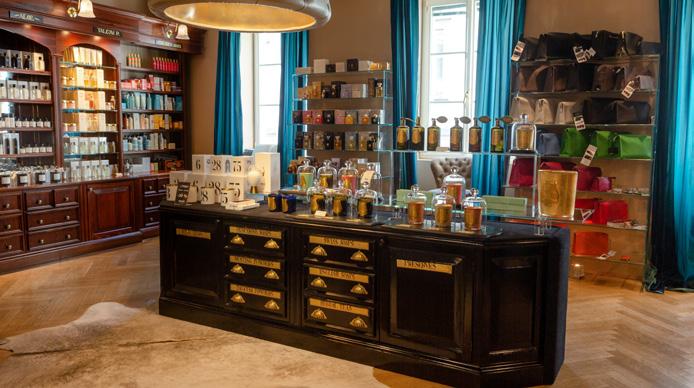

Stellen Sie sich vor, Sie betreten ein faszinierendes Universum aus Schönheit, Düften und Essenzen, das Ihnen einen Raum voller neuer Eindrücke für die Sinne bietet. Was 1763 mit einem spezialisierten Kolonialwarenladen in Bozen begann, entwickelte sich zu einem Zuhause für exklusive olfaktorische Erlebnisse. Als erste historische Nischenparfümerie Italiens präsentiert die Parfümerie Thaler stolz die feinsten Düfte und innovativsten Trends aus aller Welt. Das Familienunternehmen besteht bereits in vierter Generation und verfügt über ein exquisites Angebot, das von erlesenen De-
signerdüften über erstklassige Gesichts- und Körperkosmetik bis zu ausgewählten Natur-, Bio- und Heimpflegeprodukten reicht. In der Parfümerie Thaler wird jedes Produkt sorgfältig ausgewählt, um den Besuchern eine einzigartige multisensorische Erfahrung zu bieten, die Körper und Seele bereichert. Begeben Sie sich auf eine Reise durch die Welt der schönen Dinge – vor Ort oder im Thaler Online-Shop.
Immaginatevi di entrare in un universo fatto di bellezza, profumi ed essenze, che vi spalanca le porte di una dimensione ricca di
nuovi stimoli per tutti i sensi. Questa storia inizia nel 1763, con l’apertura di un negozio di coloniali a Bolzano, che oggi è diventato il tempio di esperienze olfattive uniche. Come prima profumeria storica e di nicchia in Italia, Thaler presenta con orgoglio le fragranze più pregiate e le tendenze più innovative da tutto il mondo. Questa azienda a conduzione familiare, ormai giunta alla quarta generazione, vanta un’esclusiva gamma di prodotti che spaziano da raffinati profumi di design a cosmetici per la cura del viso e del corpo di prima qualità fino a prodotti naturali, biologici e per la casa. Nella profumeria Thaler, ogni articolo

è selezionato con la massima attenzione per offrire un’esperienza multisensoriale unica, che arricchisce anima e corpo. Intraprendete un viaggio attraverso un mondo affascinante – online o presso i nostri negozi.
Imagine entering a fascinating universe of beauty, fragrances and essences that introduces your senses to a host of new impressions. What began as a specialized colonial goods store in Bolzano back in 1763, has developed into a home for exclusive olfactory experiences. As Italy’s first historic niche perfumery, Thaler’s Perfumery is proud to present the finest fragrances and most innovative trends from all over the world. The family business is currently being run by the fourth generation and sells exquisite products, ranging from designer fragrances to first-class face and body cosmetics to selected natural, organic and home cleaning products. At Thaler’s Perfumery, every product is carefully hand-picked to offer visitors a unique multisensory experience that enriches body and soul. Come and travel through the world of beautiful things – on site at Thaler’s Perfumery or in their online store.
www.thalershop.com
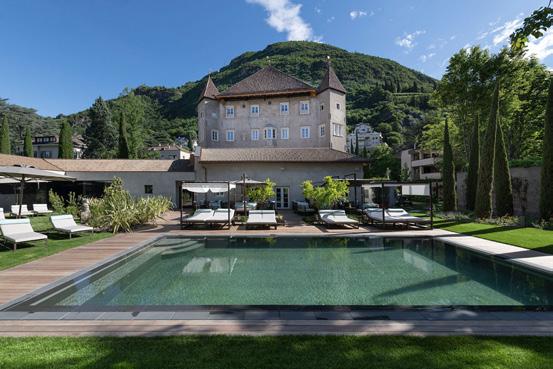




Von der Schwarzensteinhütte in den Zillertaler Alpen bietet sich ein atemberaubender Blick über die umliegenden Berggipfel.
Il Rifugio Sasso Nero, nelle Alpi della valle Zillertal, offre una vista mozzafiato sulle cime circostanti.
The Sasso Nero Hut in the Zillertal Alps offers a breathtaking view of the surrounding mountain peaks.
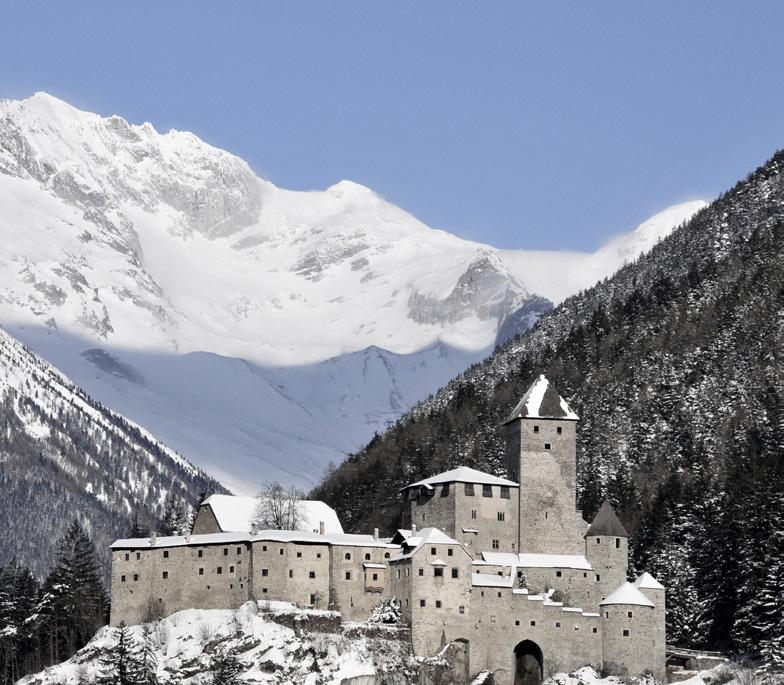
Im Jahr 2024 feiert die originalgetreu erhaltene Burg Taufers im Ahrntal bereits ihr 800-Jahr-Jubiläum. Im Inneren des geschichtsträchtigen Gemäuers kann man ganzjährig viele interessante Dinge über die Geschichte
Bereits zum 41. Mal jährt sich 2025 der berühmte Gsiesertal Lauf, seines Zeichens der zweitgrößte Skimarathon Italiens. Hier reihen sich Olympioniken und Hobbylangläufer aus nah und fern aneinander, um am 15. und 16. Februar in unterschiedlichen Distanzen und Stilen gegeneinander anzutreten. Besonders beliebt sind dabei der „Just for Fun“-Lauf oder die „Mini-Gsieser“. Insgesamt wird den Besuchern und Teilnehmern ein toller Mix aus Sport, Musik und Kulinarik geboten. Da heißt es nur noch: Auf zum Lauf ins verschneite Gsiesertal!
Nel 2025 si terrà la 41^ edizione della Gran Fondo Val Casies, la seconda maggior maratona sciistica d’Italia. Il 15 e 16 febbraio, atleti olimpici e fondisti amatoriali provenienti da vicino e da lontano si ritrovano per sfidarsi su varie distanze e in diversi stili. Particolarmente apprezzate sono le prove “Just for Fun” e la “Mini Val
des Ahrntals und über die Burg selbst erfahren. Außerdem erwarten kleine und große Besucher besondere Highlights wie die Geisterstunde oder Laternenwanderungen. Wandeln Sie auf den Spuren der Ritter und Burgfräulein
Casies”. I visitatori e i partecipanti si godono un bel mix di sport, musica e delizie culinarie. Non resta che dire: andiamo alla maratona sulla neve della Val Casies!
The famous Gsiesertal Lauf, Italy’s second largest ski
und erleben Sie eine authentische Kulisse, die so auch schon für viele Filme genutzt wurde.
Nel 2024, si celebra l’800° anniversario del Castello di Tures in Valle Aurina, ancora fedelmen-
marathon, will be held for the 41st time in 2025. This is where Olympic athletes and amateur cross-country skiers from both near and far line up to compete against each other in different distances and styles of running on the 15th and 16th of February.
te conservato. Durante tutto l’anno, all’interno delle mura storiche, si possono apprendere molte cose interessanti sulla storia locale e sulla fortezza stessa. Inoltre, i visitatori di tutte le età possono assistere a eventi speciali come l’ora degli spiriti e le passeggiate a lume di lanterna. Camminate sulle orme di dame e cavalieri e immergetevi in uno scenario autentico, ambientazione di numerosi film.
In 2024, the faithfully preserved Taufers Castle in the Aurina Valley celebrates its 800th anniversary. Inside its historic walls, visitors can learn plenty of interesting things about the history of the Aurina Valley and the castle itself throughout the year. Young and old visitors can also look forward to special highlights such as the “witching hour” or lantern walks. Retrace the footsteps of knights and maidens and experience an authentic setting that has been featured in many movies.
The “Just for Fun” run and the “Mini-Gsieser” are particularly popular. On the whole, visitors and participants are offered a great mix of sport, music and culinary delights. So, the only thing left to say is: let’s go to the race in the snow-covered Casies Valley!
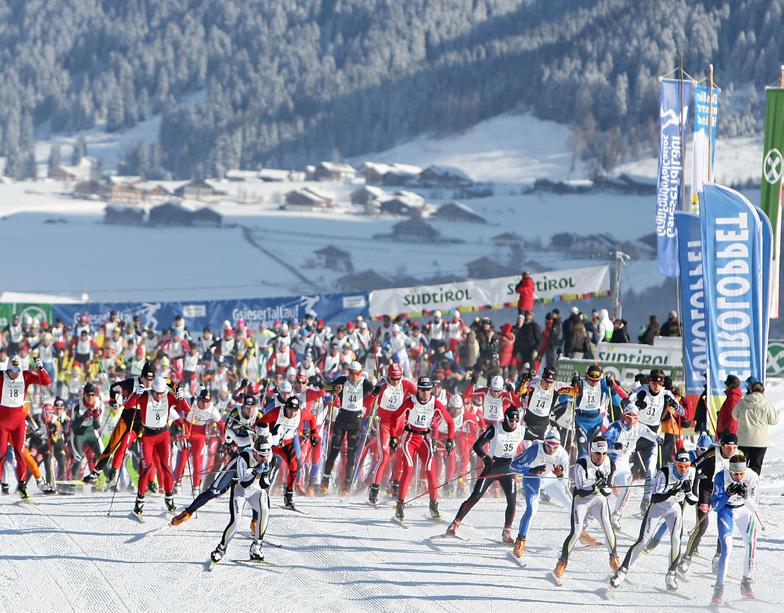
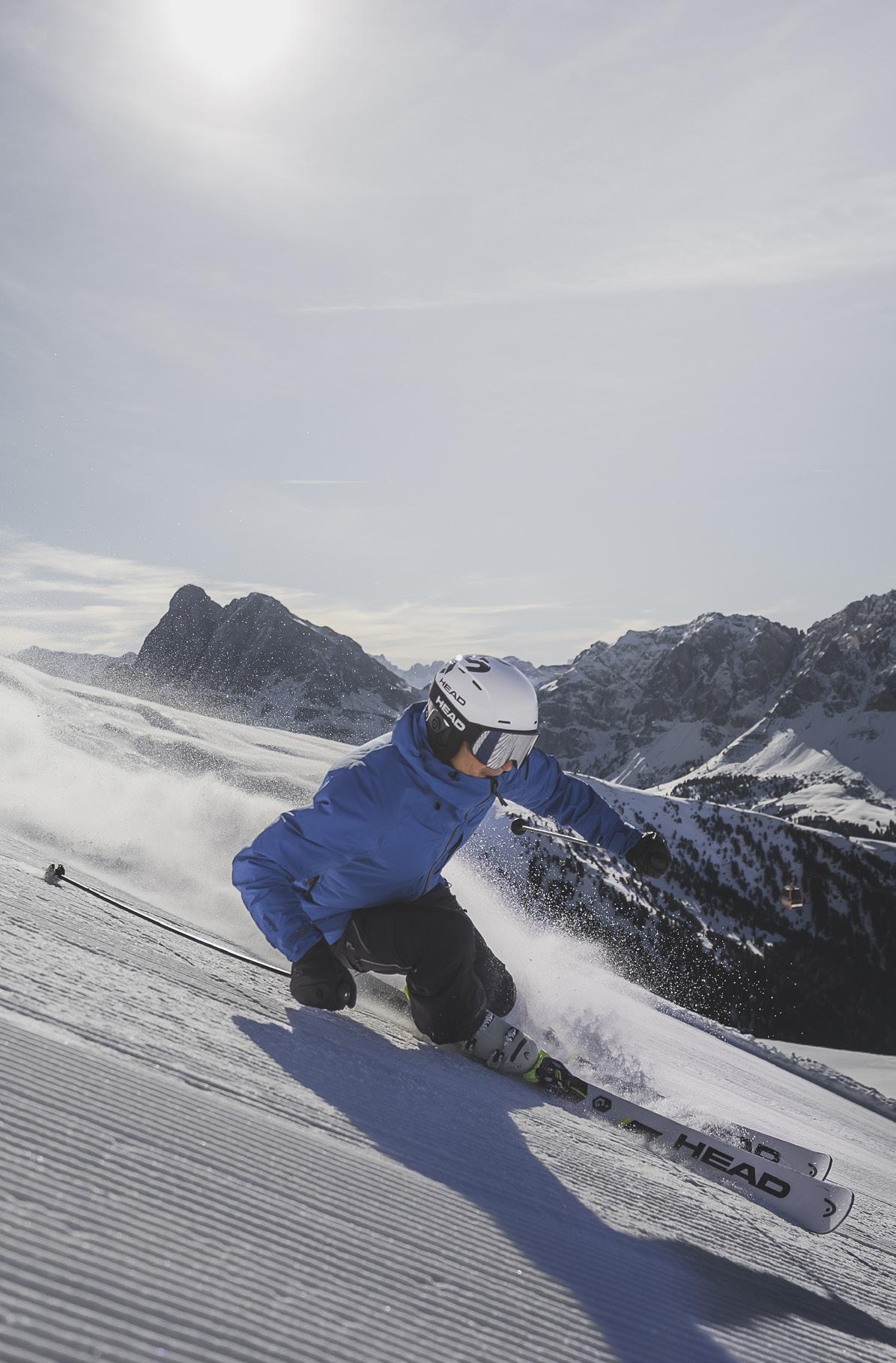
Schwungvoll und abwechslungsreich den Hang hinab geht es beim Skispaß auf der Plose, dem Hausberg von Brixen.
La Plose, la montagna di Bressanone, è una garanzia di divertimento sugli sci, discese variegate e panorami fantastici.
Enjoy a lively and varied descent on the Plose, Bressanone's local mountain.

An den Wochenenden vom 29. November bis zum 22. Dezember erwacht die Weihnachtsgeschichte in der historischen Altstadt von Klausen zum Leben. Hier gibt es neben Marktständen mit Kunsthandwerk und weihnachtlichen Leckereien noch
Eine spannende Reise durch die Geschichte des Apothekerwesens bietet das Pharmaziemuseum in Brixen. Die Ausstellungsstücke und Themen sind attraktiv gestaltet und allemal sehenswert. Auch die Räumlichkeiten lassen die Geschichte rund um die Herstellung von Arznei- und Heilmitteln Form annehmen. Die Ausstellung erzählt am Beispiel einer Brixner Apothekerfamilie von Vielfalt und Fantasie in 400 Jahren Arzneigeschichte. Die gezeigten Geräte, Heilmittel, Gefäße und Verpackungen stammen aus dem täglichen Apothekengebrauch.
Intraprendete un emozionante viaggio nella storia della farmacia presso il Museo della Farmacia di Bressanone; assolutamente da non perdere considerando i temi trattati e gli interessanti oggetti esposti. Le diverse sale sono dedicate alla produzione di farmaci e diversi rimedi. Attraverso l’esempio di una famiglia di farmacisti di Bressanone, la mostra narra della poliedricità e fantasia di quattro-
besondere Events zu erleben. Es erwarten Sie besinnliche Chorklänge, eine liebevoll inszenierte Herbergssuche mit lebender Krippe, eine Nachtwächterin, die hunderte von Kerzen in der Altstadt entzündet, und diverse andere Mitmachveranstaltun-
cento anni di storia farmaceutica. Gli strumenti, i rimedi, i contenitori e le confezioni esposte sono di uso quotidiano nella farmacia.
The Pharmacy Museum in Bressanone offers an exciting journey through the fascinating
gen. Lassen Sie sich vom Klausner Gassladvent verzaubern!
Il Borgo natalizio di Chiusa si terrà nel centro storico dell’omonima cittadina nei fine settimana dal 29 novembre al 22 dicembre. Le bancarelle di oggetti d’arte ar-
history of pharmacy. Its exhibits and themes are designed beautifully and are definitely worth seeing. The museum's premises also bring the history of the production of medicines and remedies to life. Taking a family of pharmacists from Bressanone
tigianali e le prelibatezze natalizie accompagnano gli eventi speciali. Vi attendono le dolci melodie dei cori natalizi, una suggestiva rappresentazione della ricerca di un ostello in compagnia del presepe vivente, una guardiana notturna che accende centinaia di candele per le vie del centro e tante altre attività a cui partecipare. Immergetevi nella magia del Borgo natalizio di Chiusa.
On the weekends between November 29th and December 22nd, the Christmas story is brought to life in the historic old town of Chiusa. Alongside market stalls with arts and crafts, as well as Christmas treats, you can also experience special events. Expect contemplative choral music, a lovingly staged hostel search with a living nativity scene, a night watchman who lights hundreds of candles in the centre of the old town and various other hands-on events. Allow yourself to be enchanted by the Christmas Village of Chiusa!
as its example, the exhibition tells the story of diversity and imagination in 400 years of pharmaceutical history. The equipment, remedies, storage containers and packaging on display originate from everyday use in a pharmacy.


Vom Zelt aus den Sonnenaufgang in den Dolomiten bestaunen – inklusive 360°-Grad Panoramablick, unberührter Winterlandschaft und kristallklarer Luft. Ein Gefühl wie auf einer Bergsteigermission. Wer Ruhe und Naturverbundenheit schätzt, wird eine Übernachtung im Biwak Camp auf der Villanderer und Latzfonser Alm lieben. Mit professioneller Betreuung von Ski- und Bergführern erleben Sie den Winter hier von einer neuen Seite. Neben diesem einmaligen Erlebnis bietet das Eisacktal viele weitere Highlights. Schneebedeckte Hänge und Wiesen verführen zu Ruhemomenten im knirschenden Weiß abseits der Pisten – ob knöchelhoch zu Fuß oder knietief mit Schneeschuhen, eine Wanderung vorbei an gefrorenen Wasserfällen oder über die glitzernde Landschaft der Feldthurner Almen macht die Freiheit der Südtiroler Berge greifbar. Apropos Freiheit: Auf der „Wintersafari“ entdecken Sie mit dem kostenlosen Shuttlebus täglich neue Ski- und Winterwandergebiete. Die sonnigen Loipen der Villanderer Alm hingegen lassen jedes Langlaufherz höherschlagen – vom Einsteiger bis hin zum passionierten Experten. An ausgezeichneten Eisacktaler Weinen kommen Sie auch in diesem Winter nicht vorbei, denn die geführte Wein-Genuss-Wanderung „Snow & Wine“ vereint gleich zwei große Leidenschaften miteinander. Zurück in der romantisch dekorierten Altstadt von Klausen verzaubert der Gassladvent an jedem Adventwochenende mit einem anderen Thema, stimmungsvollen Lichtern, traditionellem Handwerk und weihnachtlichen Köstlichkeiten. Das ist ein Wintermärchen made in Klausen.

L’alba sulle Dolomiti tutta da ammirare direttamente dalla propria tenda, a cui si aggiungono i paesaggi immacolati, l’aria cristallina e un panorama a 360°: parrebbe una spedizione alpinistica, invece è il Biwak Camp sull’Alpe di Villandro e di Lazfons. Assistiti da esperte guide alpine, potrete sperimentare un nuovo modo di vivere l’inverno, perfetto per chi apprezza la quiete e la vicinanza alla natura. Ma questa non è l’unica esperienza particolare che la Valle Isarco ha da offrire. Lontano dalle piste da sci, i pendii e le distese di neve invitano a percepire la pace e la libertà tipica delle montagne altoatesine – tra escursioni a piedi, con le ciaspole, al cospetto di cascate ghiacciate o sull’Alpe di Velturno. A proposito di libertà: con il servizio navetta gratuito del programma Winter Safari, ogni giorno potete scoprire una nuova area sciistica ed escursionistica. Inoltre, sull’Alpe di Villandro le piste soleggiate fanno battere forte il cuore a ogni fondista, principiante o esperto che sia. Cos’altro non potete farvi mancare quest’inverno? L’escursione enogastronomica guida-

Ob Winterabenteuer oder Wein: Genussmomente sind hier allgegenwärtig.
Esperienze sulla neve o enogastronomiche? Qui trovate entrambe!
Gelebte Kultur beim Gassladvent an Wochenenden im Dezember.
Nei weekend di dicembre a Chiusa l’atmosfera si fa natalizia.
Experience culture at the Gassladvent on weekends in December
ta Snow & Wine, che propone degustazioni di vini locali in uno splendido scenario imbiancato. Infine, per le romantiche vie del borgo di Chiusa ogni fine settimana dell’Avvento si tiene il caratteristico mercatino di Natale, che incanta ogni volta con un tema diverso così come decorazioni luminose, tradizionali prodotti d’artigianato e specialità natalizie. Per un inverno proprio come nelle favole.
Admire the sunrise atop the Dolomites from your tent – complete with 360° panoramic views of the pristine winter landscapes and crisp, clear air. It feels like you’re on a mountaineering mission. Those who appreciate peace, quiet and closeness to nature are sure to relish an overnight stay at the Biwak Camp on the Alpe di Villandro and Alpe di Lazfons. Professional ski and mountain guides will help you experience winter from a new perspective. In addition to this unforgettable experience, the Isarco Valley offers countless other highlights. Snow-covered slopes and meadows invite you to enjoy moments of tranquillity in the glistening snow, away from the slopes – either on foot in ankle-high snow, or on snowshoes in knee-deep snow. A hike past frozen waterfalls or across the glistening landscape of the Velturno Alpine pastures makes the freedom of the South Tyrolean mountains tangible. And speaking of freedom: the free shuttle bus takes you on a “winter safari" to discover new skiing and winter hiking areas every single day. The sunny trails of the Alpe di Villandro, on the other hand, will make every cross-country skier’s heart skip a beat – whether they are beginners or passionate experts. This winter, you will not be able to avoid the excellent wines of the Isarco Valley: the guided wine tasting hike “Snow & Wine" is the perfect combination of two great passions. Back in the romantically decorated historic centre of Chiusa, the Gassladvent Christmas market will enchant you with a different theme every Advent weekend. It features atmospheric lights, traditional crafts and Christmas delicacies. A true winter fairytale –made in Chiusa.
Pleasurable moments guaranteed: from winter adventures to wine sipping www.klausen.it

Die majestätischen Dolomiten und die verschneiten Wiesen der Seiser Alm sind eine wahre Märchenlandschaft für Wintererlebnisse.
Le maestose Dolomiti e i prati innevati dell’Alpe di Siusi creano uno scenario da fiaba, dove poter vivere l’incanto dell’inverno.
The majestic Dolomites and the snow-covered meadows of Alpe di Siusi create a fairytale setting in which to experience the enchantment of winter.

Wussten Sie, dass Sie in St. Christina zu Fuß durch einen alten Tunnel laufen und dabei eine kleine Zeitreise unternehmen können? Hier verkehrte zwischen 1917 und 1960 das Grödner Bahnl. Heute befinden
Auf der Seiser Alm versprechen gleich zehn Rodelbahnen von unterschiedlichen Längen, Höhenunterschieden und Schwierigkeitsstufen pures Schneevergnügen. Die Einstiege können zu Fuß oder in einigen Fällen mit den Aufstiegsanlagen erreicht werden. Egal ob Sie sich für die Rodelbahn Puflatsch, Molignon oder Haniger Schwaige entscheiden, bei jeder adrenalingeladenen Fahrt wird Sie die malerische Landschaft mit Blick auf Lang- und Plattkofel begleiten.
Nell’area dell’Alpe di Siusi sono dieci le piste da slittino fruibili per una giornata all’insegna del divertimento. Hanno lunghezze, dislivelli e gradi di difficoltà diversi e il punto di partenza di ciascuna può essere raggiunto a piedi o, in alcuni casi, usufruendo degli impianti di
sich entlang des ehemaligen Bahnweges hinter dem Tunneleingang interaktive Schautafeln, die Ihnen die Geschichte dieses Ortes näherbringen. Bei diesem Spaziergang im Halbdunkel können Sie außerdem
risalita. Che preferiate la discesa Bullaccia, la Molignon o la Malga Haniger, durante ogni adrenalinica slittata sarete circondati da un paesaggio da favola con il Sassolungo e il Sassopiatto a fare da cornice.
dem ladinischen Lied „La Ferata“ lauschen, das der Bahn gewidmet wurde.
Sapevate che a Santa Cristina si può attraversare a piedi un antico tunnel che sembra quasi
The Alpe di Siusi area boasts ten toboggan runs, each offering a fun and unique experience with varying lengths, gradients, and difficulty levels. Some starting points are accessible on foot, while others require
trasportare indietro nel tempo? Ci si imbatte in esso percorrendo il Sentiero del trenino della Val Gardena, mezzo che rimase in funzione dal 1917 al 1960. Oltrepassato il portone d’ingresso della galleria, lungo le sue pareti si trovano dei pannelli interattivi che ne raccontano la storia; man mano che si prosegue nella penombra, poi, diventa udibile la canzone ladina La Ferata, dedicata alla ferrovia.
Did you know that in Santa Cristina you can walk through an ancient tunnel that almost seems to transport you back in time? You come across it on the Gardena Valley train path. The train was in operation from 1917 to 1960. Beyond the entrance door to the tunnel, interactive panels along its walls tell its story; as you continue into the dim light, you can hear the Ladin song La Ferata, dedicated to the railway.
using lifts. Whether you choose the Bullaccia descent, the Molignon, or the Malga Haniger, each thrilling toboggan ride is set against the enchanting backdrop of the Sassolungo and Sassopiatto mountains.

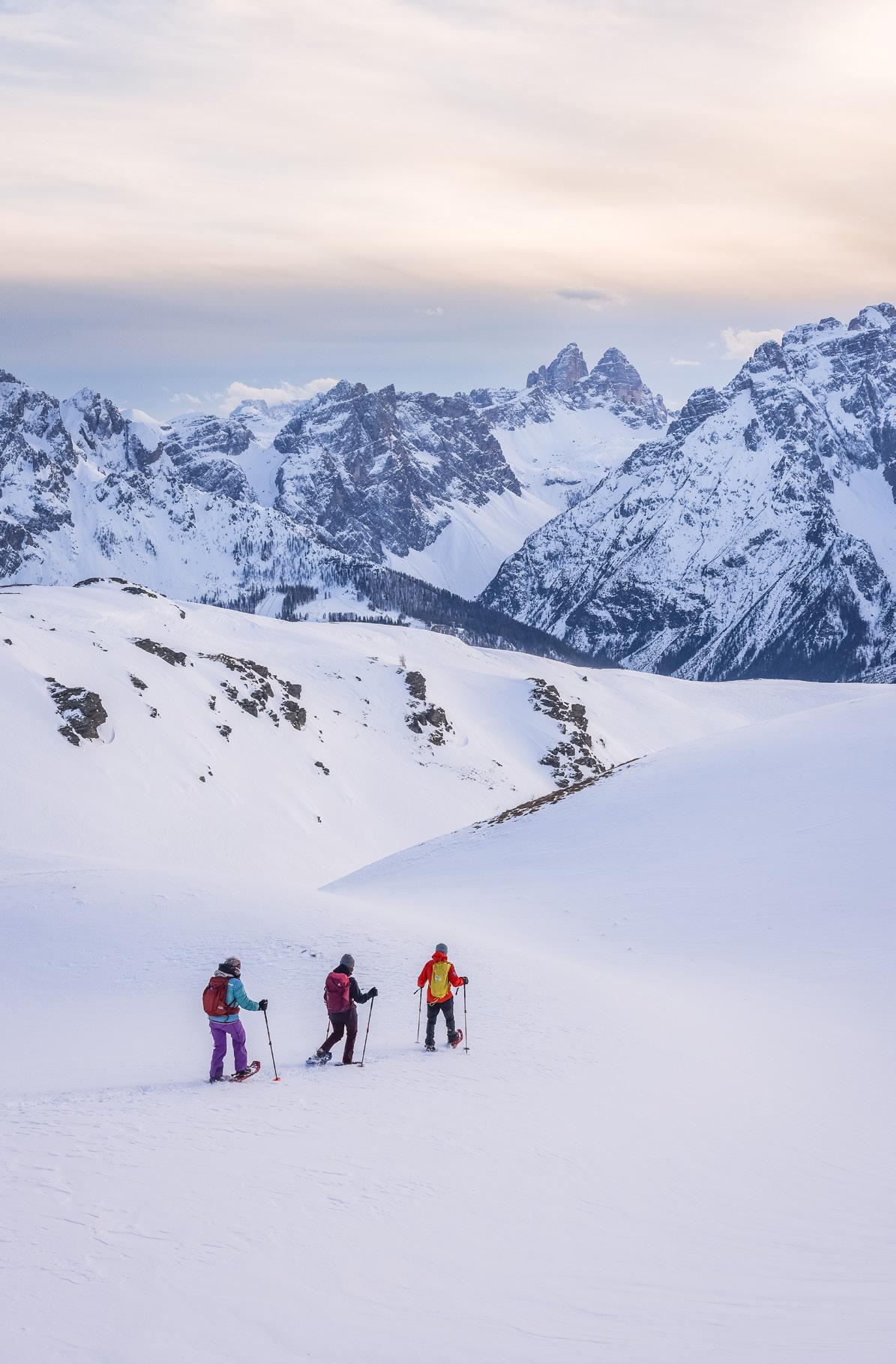
Die Ruhe der Winterlandschaft lässt sich bei einer Schneeschuhwanderung in den Bergen des Hochpustertals bestens erleben.
Per godervi la pace e la bellezza del paesaggio innevato, potete esplorare le montagne dell’Alta Val Pusteria anche ciaspolando.
To enjoy the peace and beauty of the snowy landscape. You can also explore the mountains of Alta Pusteria on snowshoes.
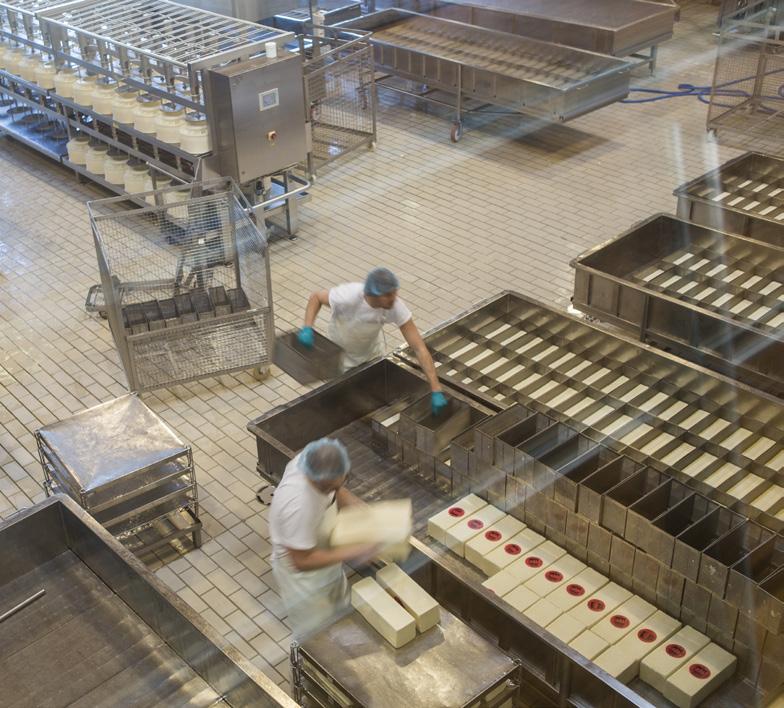
Wie entstehen eigentlich Milchprodukte? Die Schaukäserei der Sennerei Drei Zinnen in Toblach gibt Antwort darauf: Hier erhalten Sie einen Einblick in die Käseherstellung. Werfen Sie von der Besuchergalerie einen Blick auf den Produktionsablauf und lernen Sie dank Schautafeln und eines kurzen Films Wissenswertes über die Herstellung und Reifung. Nach dem Rund-
Es gibt eine besondere Art der Stickerei, die mit Pfauenschwanzfedern durchgeführt und damals wie heute zur Dekoration von traditionellem Gewand verwendet wird. Die sogenannte Federkielstickerei ist eine jahrhundertealte Handwerkskunst in den Alpen und wird heute vor allem im Sarntal praktiziert. Auch im Hochpustertal sind jedoch edle Produkte wie Gürtel und Lederportemonnaies zu finden, die von Georg Patzleiner in seiner Werkstatt in Prags Punkt für Punkt verziert und personalisiert werden.
Esiste una particolare tipologia di ricamo su cuoio, utilizzata un tempo come oggi per decorare i costumi tradizionali, che prevede l’uso delle penne di pavone. Questa è una forma di artigianato secolare nell’arco alpino ed è praticata soprattutto in Val Sarentino. Anche in Alta Val Pusteria si possono però trovare prodotti pregiati, quali cinture, portafogli e portachiavi
in pelle, adornati punto per punto e personalizzati secondo tale tecnica da Georg Patzleiner nel suo laboratorio a Braies.
In the Alpine region there is a unique type of leather embroidery. Originally and still used to
gang können die hauseigenen Köstlichkeiten gerne verkostet werden. Neugierig geworden?
Come si ricavano derivati diversi dal latte? Al museo
adorn traditional costumes, it features the use of shed peacock feather stems. This craft, which dates back centuries, is primarily practiced in the Sarentino Valley today. However, exquisite items like leather belts and wallets can also be found in the Upper
Mondolatte della latteria Tre Cime a Dobbiaco è possibile sbirciare nel processo di produzione del formaggio, attraverso le vetrate che dalla galleria visitatori danno sul laboratorio e si può imparare di più sulla sua preparazione e stagionatura dai pannelli informativi e dal video lungo il percorso. Finito il giro, siete invitati ad assaggiare proprio le bontà che avete visto in lavorazione poco prima, non siete curiosi?
How do you make dairy products other than milk? At the Mondolatte Museum of the Three Peaks Dairy in Dobbiaco, you can get a glimpse of the cheese-making process through glass windows from the visitors' gallery that overlooks the workshop. Information panels and videos explain the preparation and maturing process. At the end of the tour, you are invited to taste the cheese you just saw being made. Aren't you curious?
Pusteria Valley, each meticulously decorated and personalised stitch by stitch. In Braies, Georg Patzleiner continues this tradition, creating finely crafted pieces in his workshop.
www.federkielstickerei.it
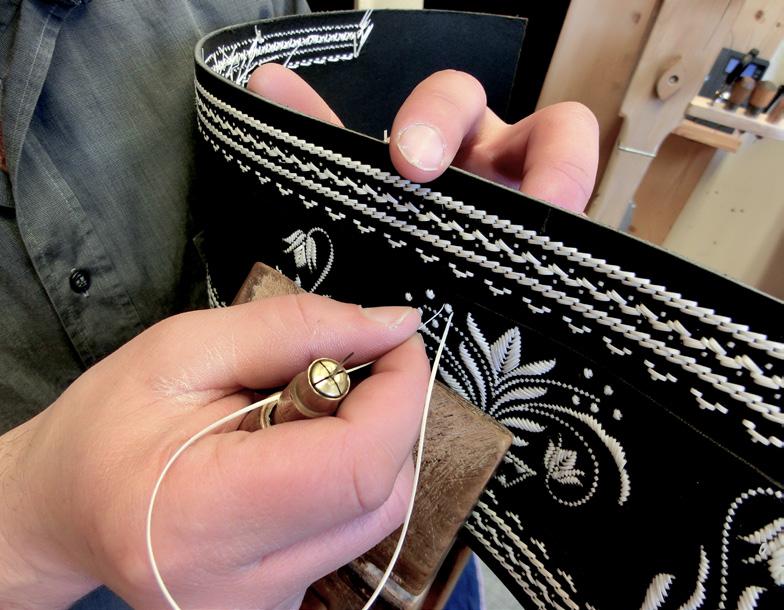

Bei einem Spaziergang entlang
Sterzings Fußgängerzone kommt man am berühmten Zwölferturm vorbei, der die Altstadt vom neuen Stadtviertel trennt.
Passeggiando lungo la via principale di Vipiteno, ecco l’emblematica Torre delle dodici sullo sfondo, che separa il centro storico dal quartiere nuovo della città.
Strolling along the main street of Vipiteno, the emblematic Tower of Twelve in the background separates the old town from the newer city quarter.

Sanftmütige Pferde und ein erfahrener Fuhrmann führen Sie an Bord einer mit Skiern ausgestatteten Kutsche vom Dorf Ridnaun durch die malerische Landschaft des gleichnamigen Tals. In eine Decke gekuschelt,
Schon einmal ein Museum auf einer Autobahn gesehen? Am ehemaligen Zollübergang zwischen Italien und Österreich am Brennerpass steht heute das Plessi-Museum. Das monumentale architektonische Werk auf einer Fläche von 13.000 m2 wurde im Jahr 2013 eröffnet. Die Idee dahinter: einen einfachen Rastplatz in einen kulturträchtigen Ort zu verwandeln. Hier befinden sich Videos, Zeichnungen, Installationen und Objekte von Fabrizio Plessi, einem Vertreter der internationalen modernen Kunst.
Avete mai visto un museo in autostrada? Ebbene, al Passo del Brennero, dove prima vi era la dogana tra Italia e Austria, oggi si erge il Plessi Museum. Inaugurata nel 2013, questa monumentale opera architettonica occupa una superficie di circa 13.000 m2 e rappresenta il tentativo di trasformare una semplice area di sosta in un luogo culturale.
können Sie die weiße Pracht dieser entlegenen Südtiroler Gegend mit ihrer achthundertjährigen Bergbaugeschichte bewundern. Um Sie herum ragen hinter weiten Schneelandschaften die Stubaier Alpen wie Sahnehäub-
Infatti, al suo interno ospita video, disegni, installazioni e allestimenti di Fabrizio Plessi, tra i protagonisti dell’arte moderna internazionale.
Have you ever come across a
chen neben einem leckeren Stück Strudel in den Himmel.
Partendo dal paese di Ridanna, dei docili cavalli e un abile cocchiere vi conducono tra i magici paesaggi dell’omonima
museum on a motorway? At the Brennero Pass, where the Italian and Austrian customs once stood, lies the Plessi Museum. Opened in 2013, this grand architectural marvel spans about 13,000 m². The project man-
valle, a bordo di una carrozza dotata di sci. Accoccolati sotto una coperta, potete ammirare il candore di questa remota zona dell’Alto Adige, che custodisce una storia mineraria lunga ottocento anni. Attorno a voi, infatti, trovate solo le massicce Alpi dello Stubai e ampie distese innevate, che ricordano le montagnette di panna montata accanto a una golosa fetta di strudel.
Departing from the village of Ridanna, gentle horses and an expert coach driver guide you through the enchanting valley aboard a carriage equipped with skis. Nestled under a warm blanket, you’ll marvel at the pristine beauty of this secluded South Tyrolean area, with a rich mining heritage dating back eight centuries. Surrounding you are the towering Stubai Alps and vast, snowy expanses, resembling mounds of whipped cream beside a delicious slice of strudel.
www.ratschings.info
aged to successfully transform a simple highway rest area into a cultural landmark. The site features videos, drawings, installations, and exhibits by Fabrizio Plessi, a key figure in the world of international modern art.
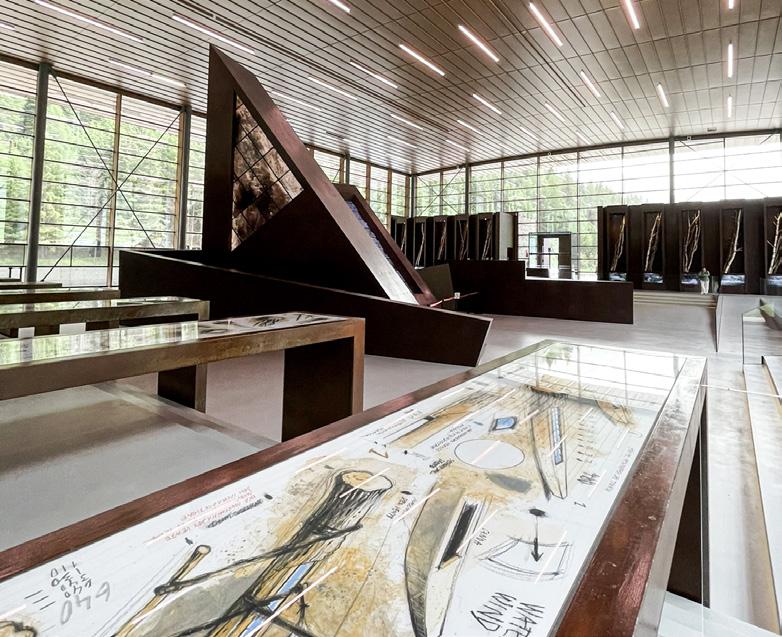

Neun Vinschgauer Gemeinden zählen zum Nationalpark Stilfserjoch, der zur Erhaltung des Naturgebietes um „König Ortler“ gegründet wurde.
Ben nove comuni della Val Venosta formano parte del Parco nazionale dello Stelvio, nato per preservare l’area naturale intorno al “Re Ortles”.
Nine municipalities in the Venosta Valley are part of the Stelvio National Park, created to preserve the natural area around the mountain known as “King Ortles”.

Am Unsinnigen Donnerstag findet in Prad am Stilfserjoch ein besonders kurioser Umzug mit dem Namen „Zusslrennen“ statt. Die Zussl, junge in weiß gekleidete Einheimische, schmücken sich mit bunten Blumen aus Papp-
maché und ziehen mit schweren Kuhglocken auf dem Rücken durch das Dorf. Das Glockenläuten soll den kalten Winter vertreiben und den Frühling wecken. Zu ihnen gesellen sich Bauern sowie Bäuerinnen und
Vom 6. bis 8. Dezember wird das historische Zentrum von Glurns, einer der kleinsten Städte Italiens, für den Verkehr gesperrt. Dann findet zum 22. Mal der Glurnser Advent statt, diesmal unter dem Motto „Lichter, Düfte, Klänge“. Rund 50 Stände präsentieren unter den mittelalterlichen Lauben und eleganten Bauten ihre handwerklich hergestellten Produkte. Darbietungen von Blaskapellen und Alphornbläsern sowie Workshops und Aufführungen runden das Programm ab.
Dal 6 all’8 dicembre, il suggestivo centro storico di Glorenza –annoverata tra i “borghi più belli d’Italia” – viene chiuso al traffico per ospitare la 22^ edizione del mercatino dell’Avvento. All’insegna del motto “Luci, profumi, suoni”, nella piazza con gli eleganti palazzi signorili e sotto i portici medievali vengono allestite una cinquantina di bancarelle di prodotti artigianali. Comple-
tano il programma le esibizioni di bande di ottoni e dei suonatori di corni alpini, così come laboratori e spettacoli.
From the 6th to the 8th of December, the charming historic
der Fuhrmann, der mit der Goaßl, einer traditionellen Peitsche, den Umzug anführt.
Il giovedì grasso, a Prato allo Stelvio, potete assistere a una sfilata davvero curiosa: la
cosiddetta Zusslrennen, ovvero “corsa degli Zussl”. Questi ultimi sono giovani del paese travestiti con costumi bianchi ornati da variopinti fiori di cartapesta; dietro la schiena portano un pesante campanaccio per fare baccano con lo scopo di scacciare il freddo inverno e risvegliare la primavera. A loro si aggiungono contadini, contadine e il carrettiere, che incita il corteo schioccando la Goaßl, la frusta tipica.
On Fat Thursday, in Prato allo Stelvio, you can witness a truly curious parade: the socalled Zusslrennen, or “Zussl race”. Young people from the village (Zussl) dress in white costumes decorated with colourful papier-mâché flowers; they carry a heavy cowbell behind their backs to make a racket with the aim of chasing away the cold winter and to awaken the spring. They are joined by farmers and a cart driver, who incites the procession by cracking the Goaßl, the typical whip.
centre of Glorenza – listed among the “most beautiful villages in Italy” – will be closed to traffic to host the 22nd edition of the Advent market. Under the motto “Lights, scents, sounds”, around fifty stalls selling artisanal prod-
ucts will be set up in the square with its elegant stately homes and under the medieval arcades. The programme will be enlivened with performances by brass bands and alpine horn players, as well as workshops and shows.
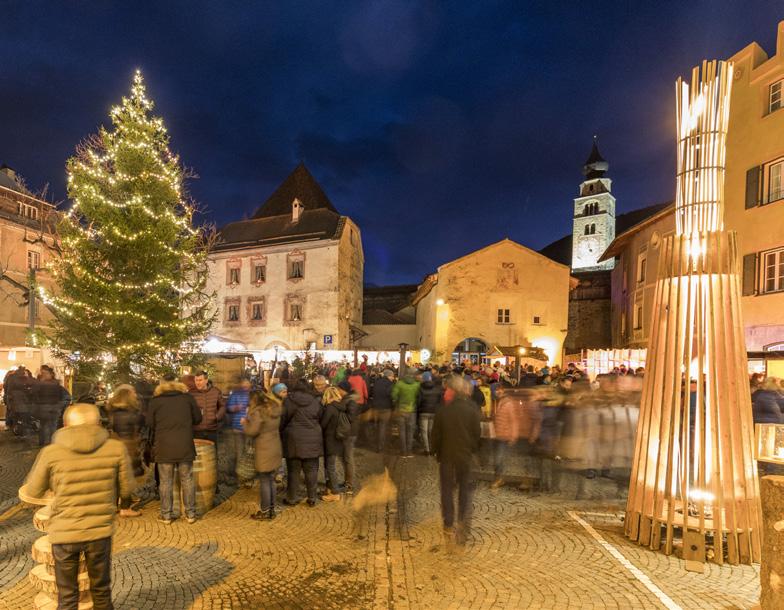
Gli appartamenti più esclusivi del centro
Exclusive living in the heart of town
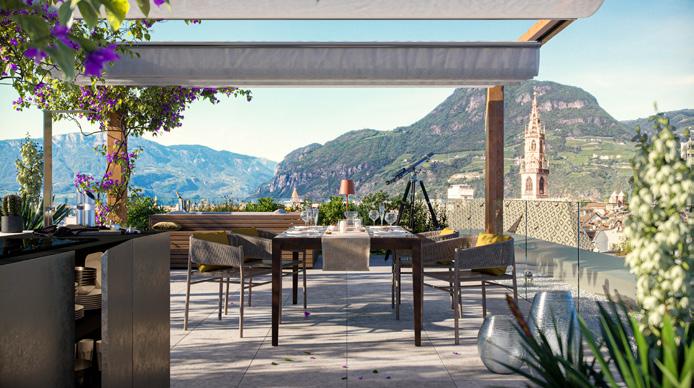
altoatesino, tra la stazione ferroviaria e il centro storico, eppure facilmente accessibili in auto e isolate di rumori cittadini. I lavori sono ancora in corso, ma l’eleganza della facciata e dell’intero complesso si lascia già intuire chiaramente. Questo progetto, innovativo e sostenibile, è stato ideato dall’architetto Sir David Chipperfield, vincitore del Premio Pritzker nel 2023, e si caratterizza per particolarità davvero esclusive. Gli appartamenti si sviluppano sul tetto dell’edificio mentre, a 15 m di altezza, si trova un’area verde con giardini privati; le soluzioni con loggia e terrazza ai piani superiori regalano una vista panoramica senza paragoni e dagli attici è possibile am-
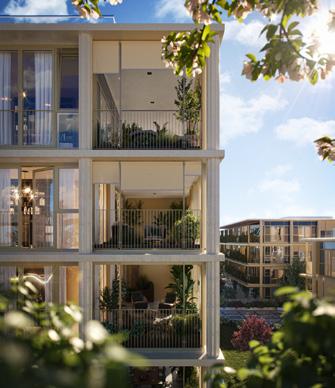
Incomparable!
Experience exclusive living at

Bald wird das exklusivste Wohnen Südtirols Realität und die ersten Wohnungen am WaltherPark übergeben – direkt im Zentrum der Südtiroler Landeshauptstadt Bozen, zwischen Hauptbahnhof und Altstadt, mit dem Auto erreichbar und doch fernab vom Straßenlärm. Gerade wird am WaltherPark noch fleißig gearbeitet – doch die Eleganz von Bauwerk und Fassade sind bereits deutlich erkennbar. Federführend bei diesem innovativen und nachhaltigen Projekt im Herzen Bozens ist Pritzker-Preisträger Arch. Sir David Chipperfield, der diesem Bau eine Besonderheit beschert:
Das Wohnen beginnt direkt auf dem Dach des Baukörpers; das Parterre liegt in 15 m Höhe und verfügt über private Gärten. Loggias und Terrassen der oberen Etagen eröffnen den Blick in die Weite, während Penthouse-Wohnungen freie Sicht auf den gesamten Talkessel und den Horizont bieten. Diesen Anblick können die ersten Wohnungsbesitzer am WaltherPark ab Frühling 2025 mit eigenen Augen erleben.
Presto verranno consegnati i primi appartamenti del WaltherPark, le abitazioni più esclusive di Bolzano: nel cuore del capoluogo
mirare l’intera vallata e far vagare lo sguardo fino all’orizzonte. I primi proprietari potranno ammirare con i loro occhi questo spettacolo a partire dalla primavera 2025.
The keys to South Tyrol’s most exclusive apartments will be handed over to their new owners soon. The WaltherPark in the centre of South Tyrol’s capital, Bolzano, is located between the main train station and the old town, accessible by car and yet far away from noisy streets. Work is currently still in process at WaltherPark – but both the building’s and its façade’s elegance are already evident to passers-by. The mastermind behind this innovative and sustainable project is Pritzker award-winning architect Sir David Chipperfield. He added a very special feature to this building: The “ground-floor” apartments with private gardens lie 15 metres above the street, on top of the shopping centre. The upper-floor flats all have loggias and terraces with beautiful views, while the penthouse apartments have an unobstructed view of the entire valley basin and the horizon. Homeowners at WaltherPark will be able to enjoy their views starting in spring 2025.
www.waltherpark.com
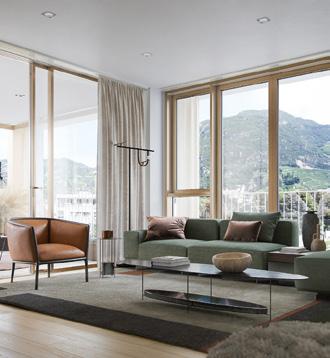
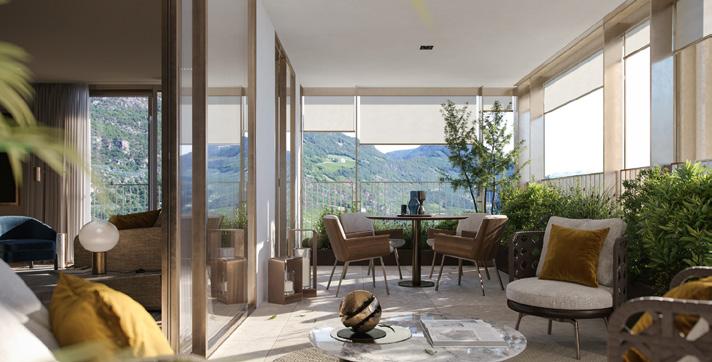
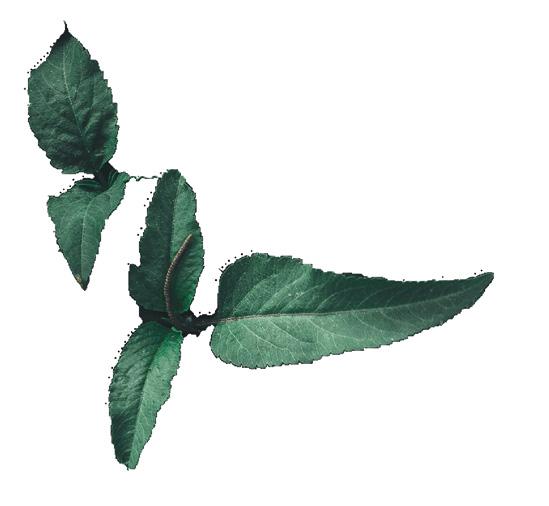
EXKLUSIVE WOHNANLAGE IN BOZEN: Genießen Sie lichtdurchflutete Räume mit moderner Raumaufteilung, großzügigen Loggien und privaten Außenbereichen. Nachhaltige Bauweise und hochwertige Ausstattung in italienischem Design. Eine einmalige werthaltige Investition.

SCOPRI LA TUA OASI A BOLZANO: In questa residenza esclusiva, potrai godere di ambienti inondati di luce naturale, caratterizzati da un design moderno e funzionale. Ampie logge e spazi esterni privati ti offriranno un’oasi di relax. Costruita con materiali sostenibili e finiture di pregio, questa residenza è un esempio di stile italiano. Un investimento unico e di valore nel tempo.
2-3-4-Zimmer- & Penthousewohnungen zum Verkauf Bi-, tri-, quadrilocali e attici in vendita 2-3-4 bedroom & penthouse apartments for sale
YOUR ITALIAN RETREAT AWAITS YOU IN BOLZANO:
Escape to a world of class and sustainability in this stunning residence. With its contemporary design, private outdoor spaces in a location, you’ll enjoy the best of both worlds: urban convenience and serene natural beauty. Experience the finest of Italian living. A smart investment.
